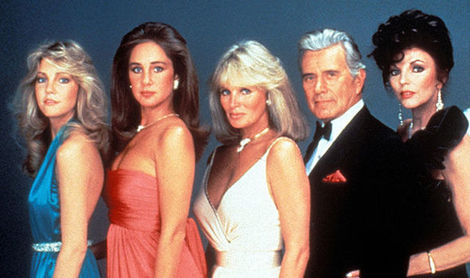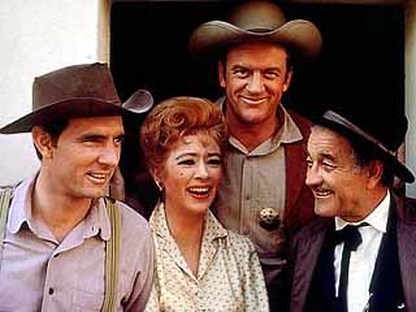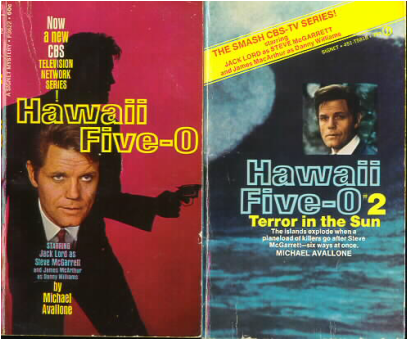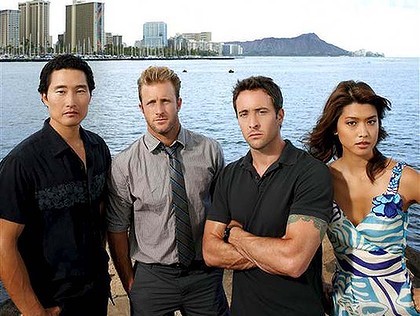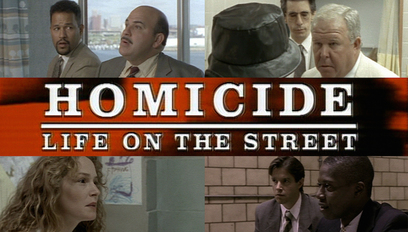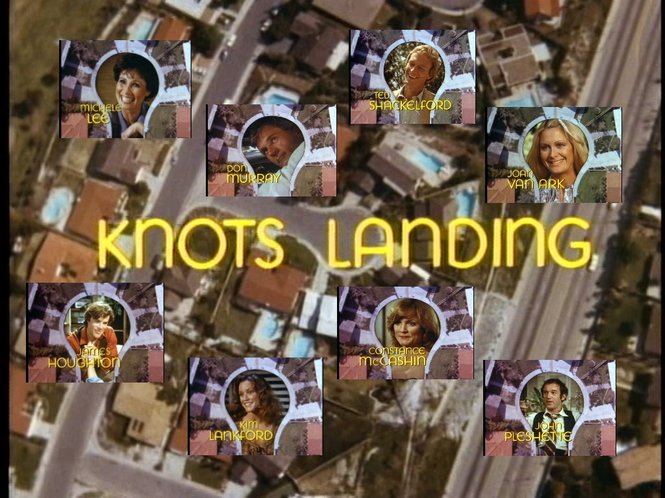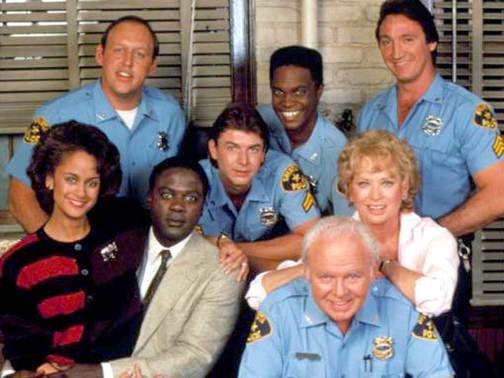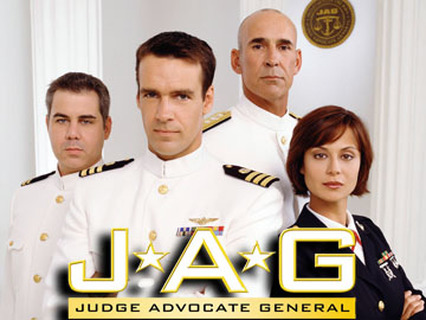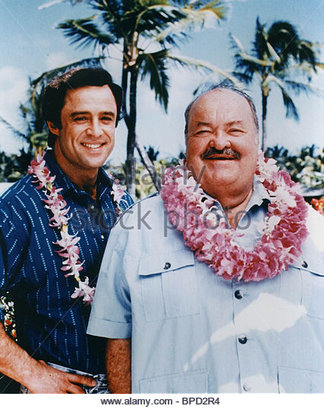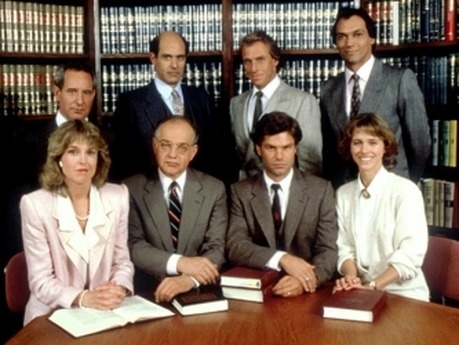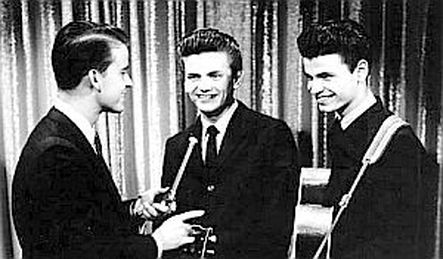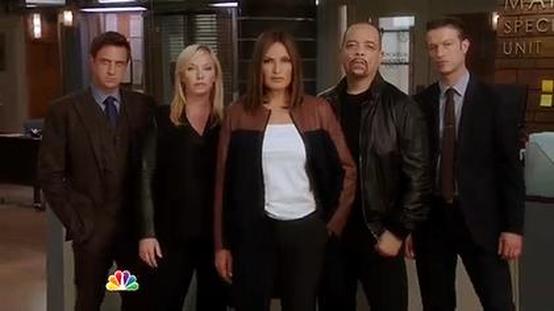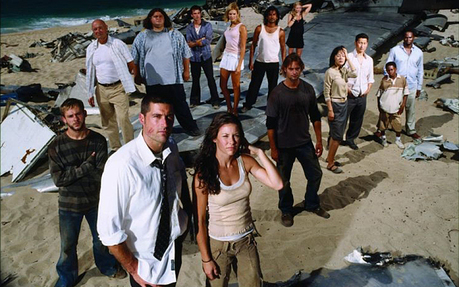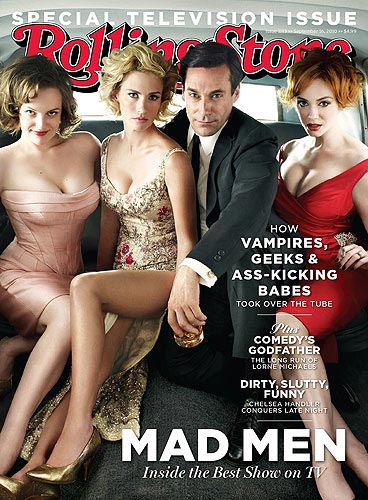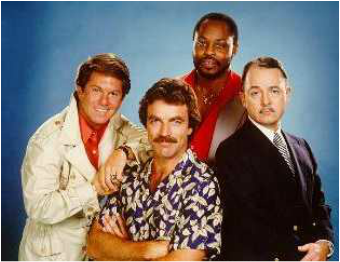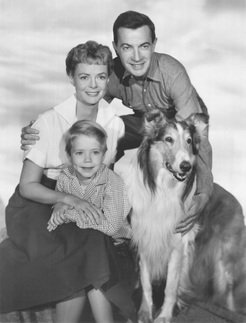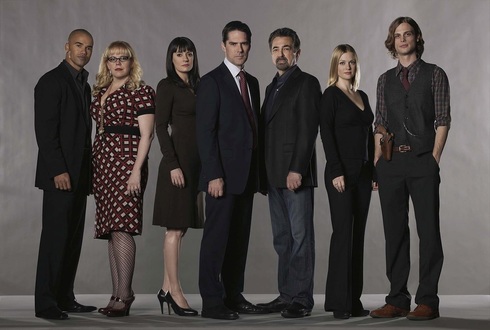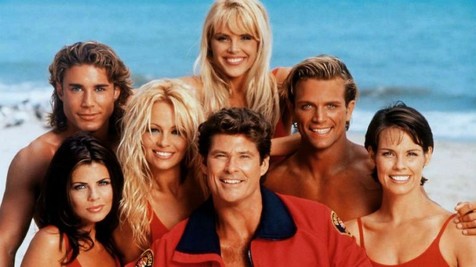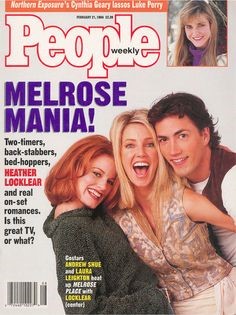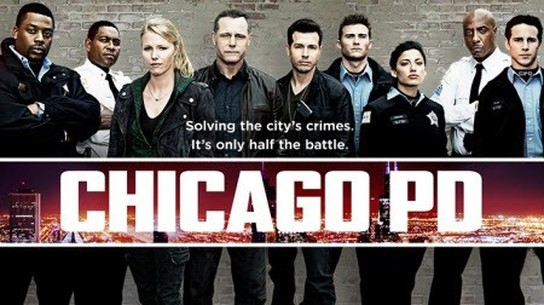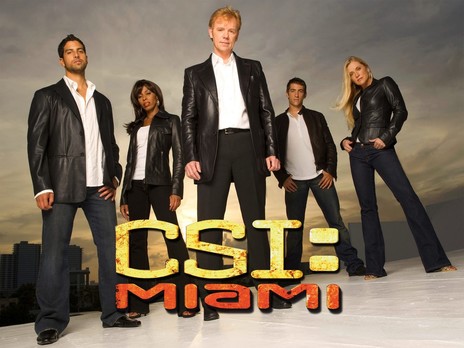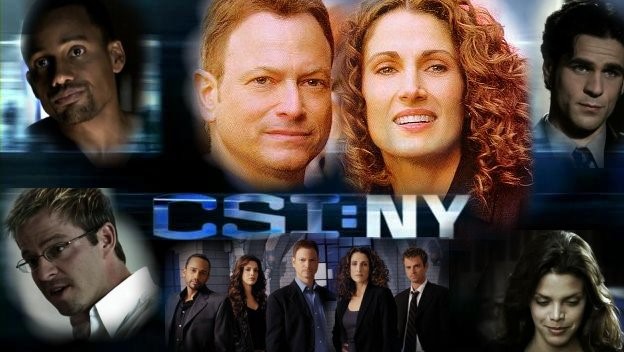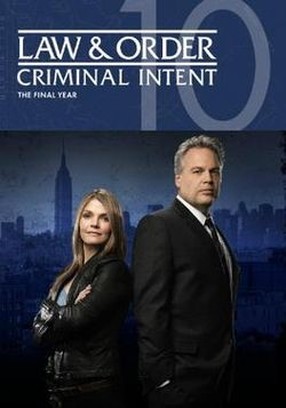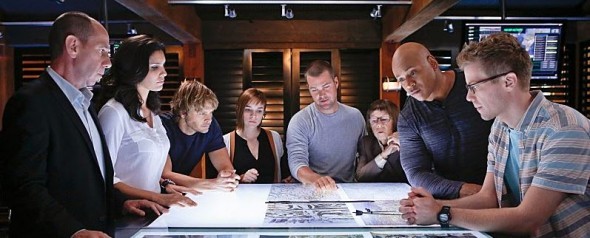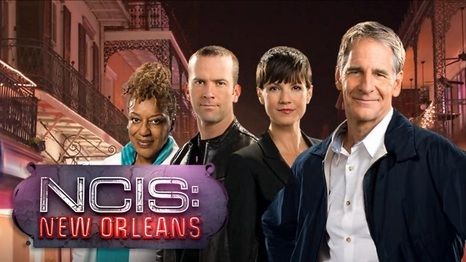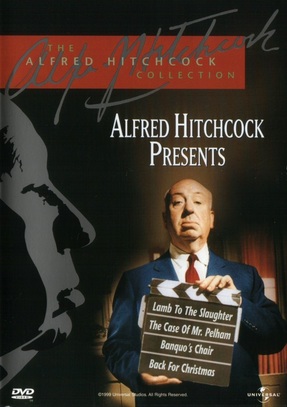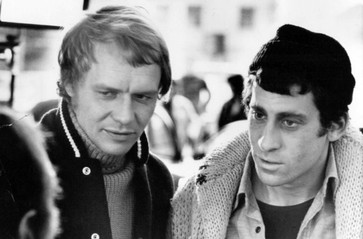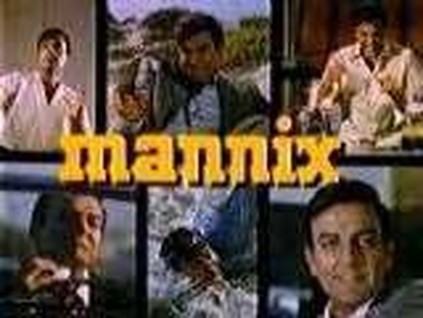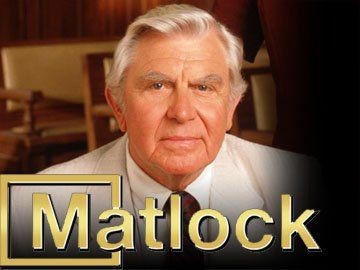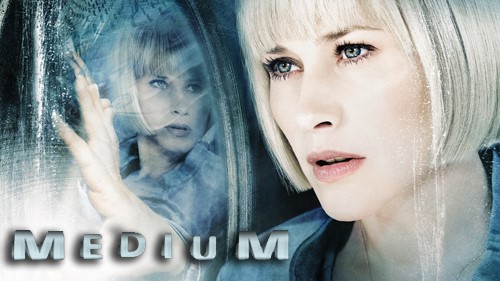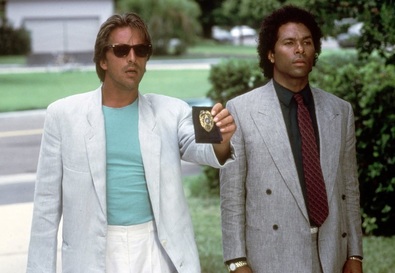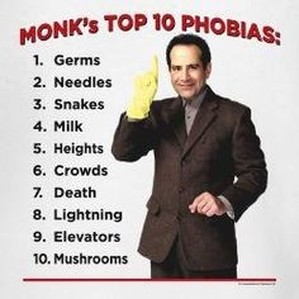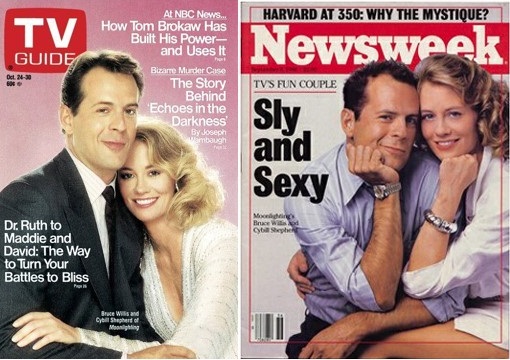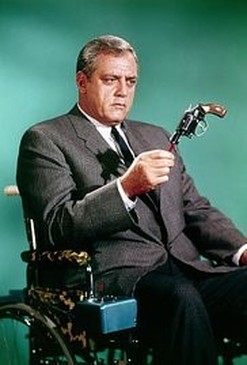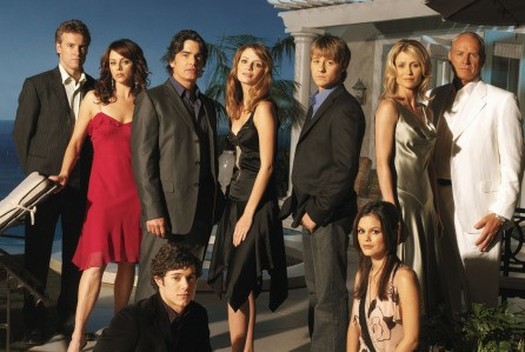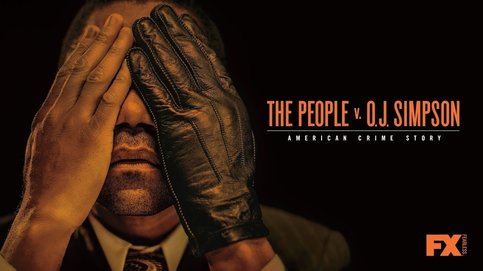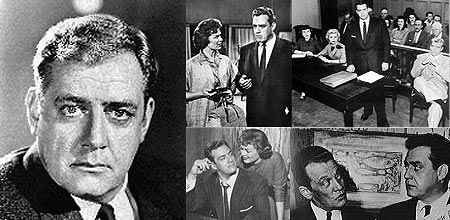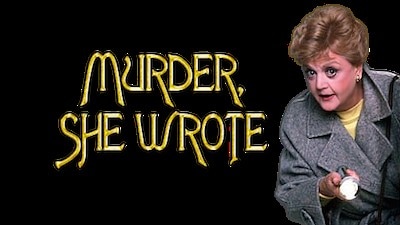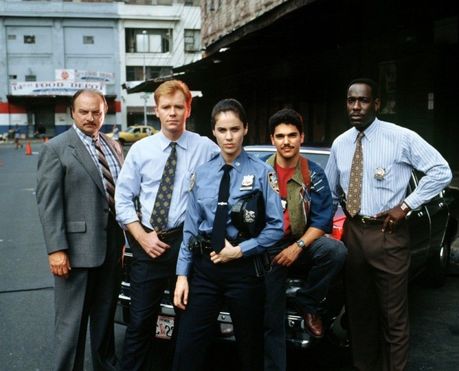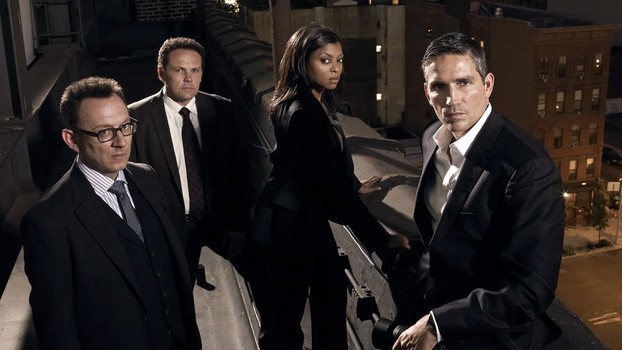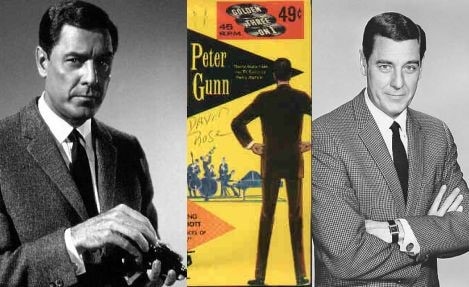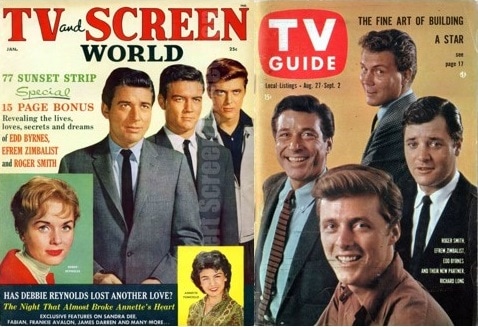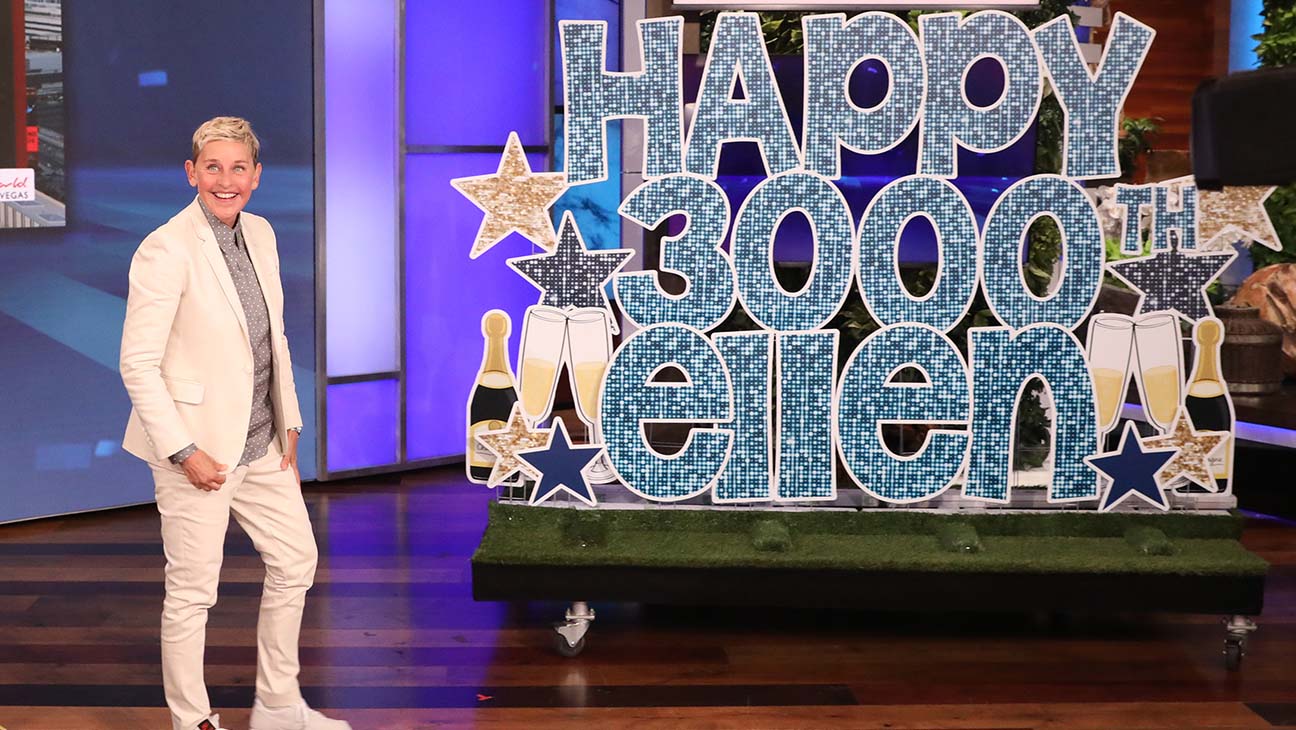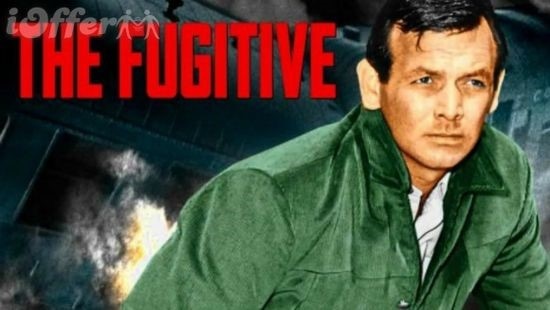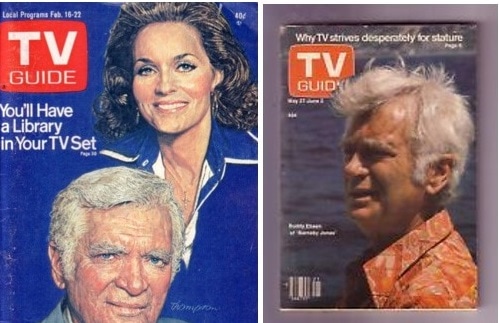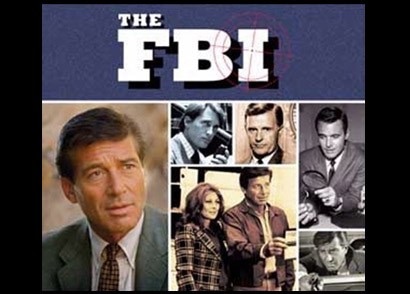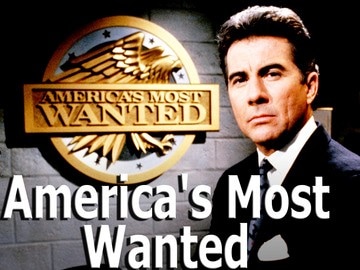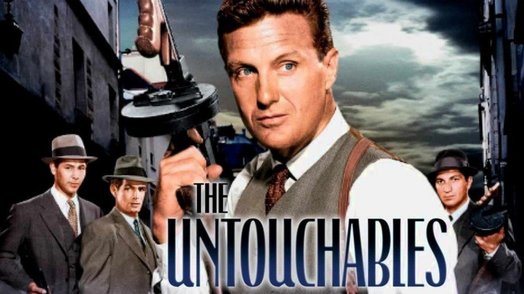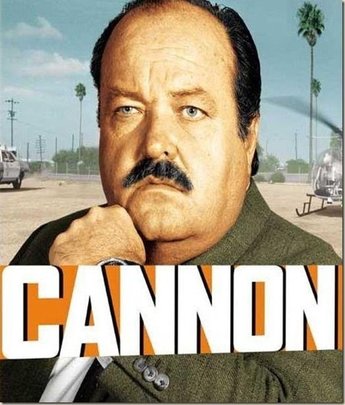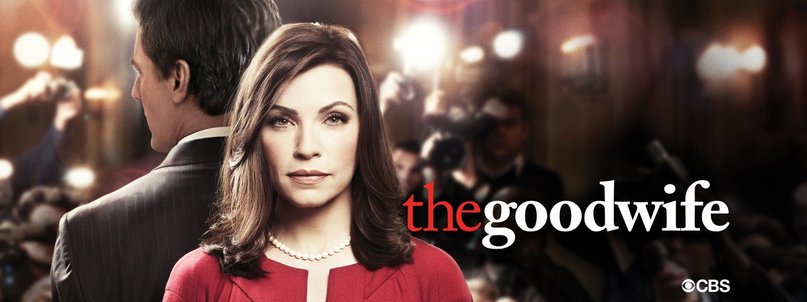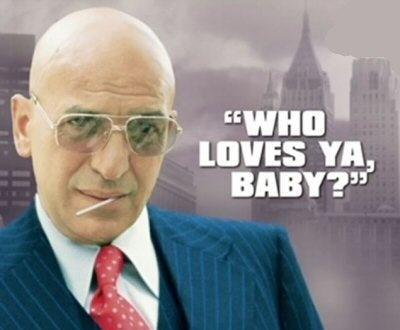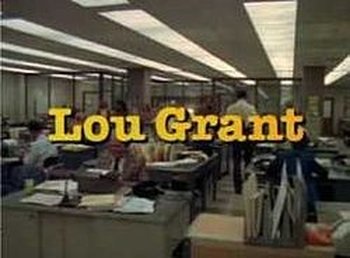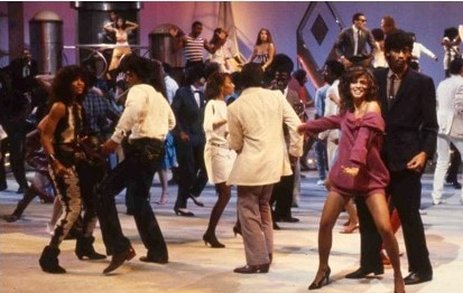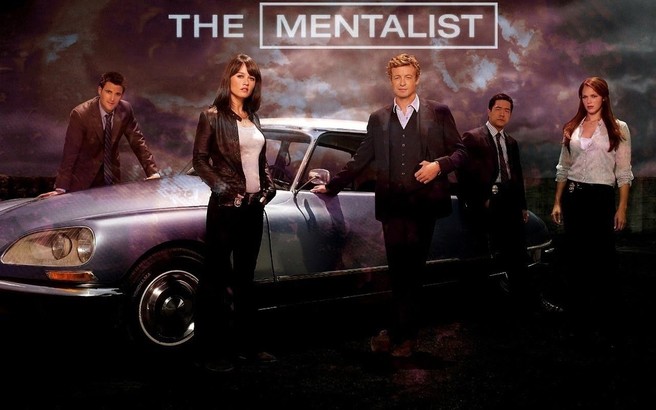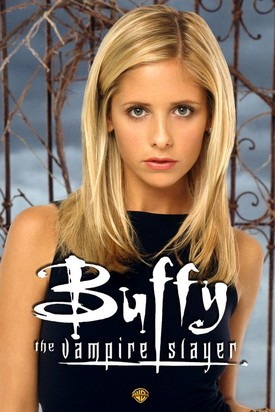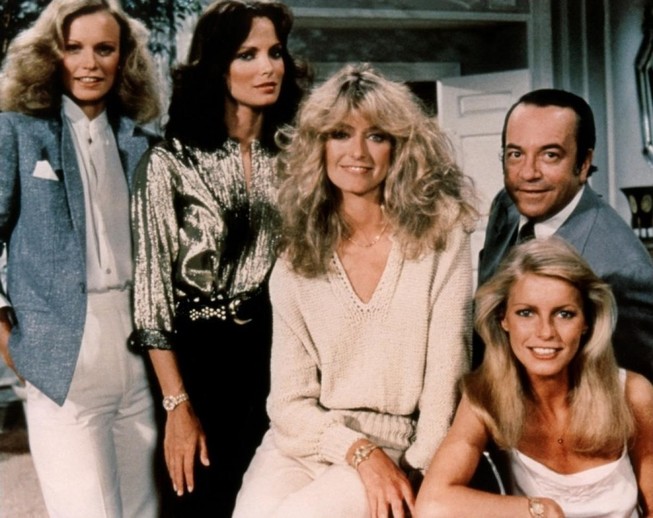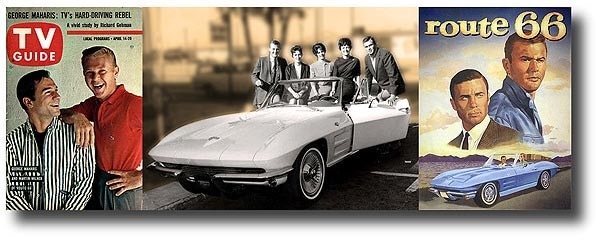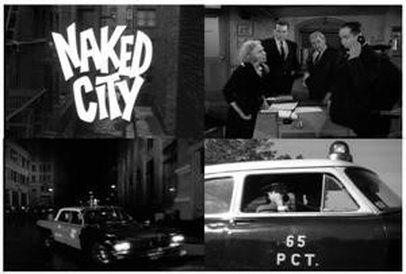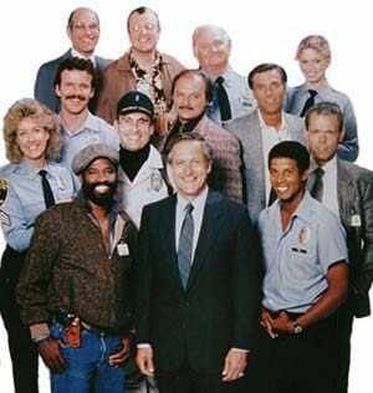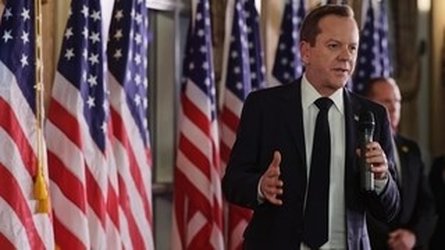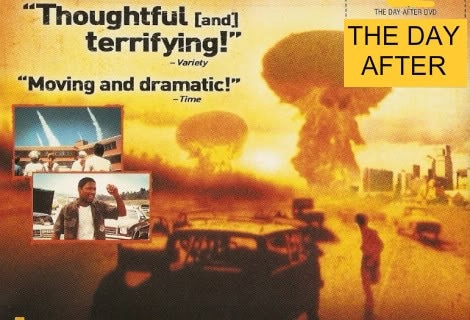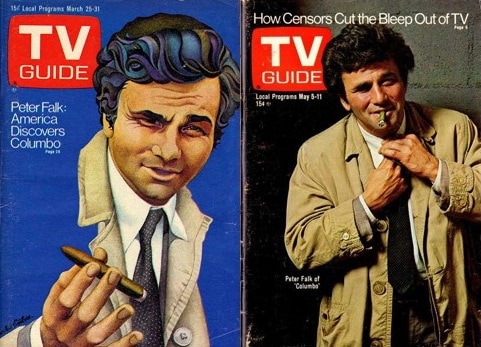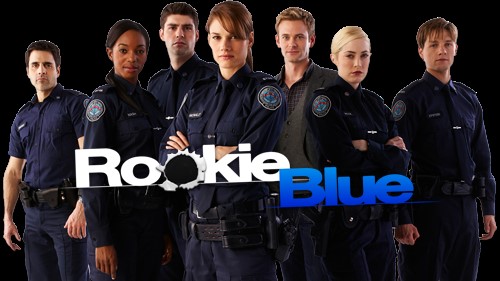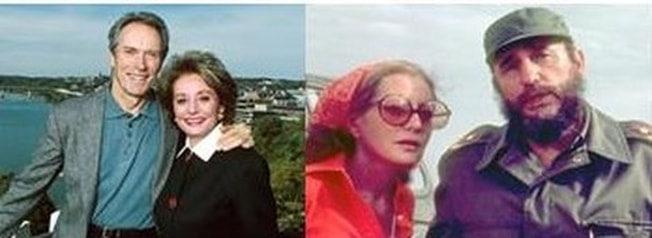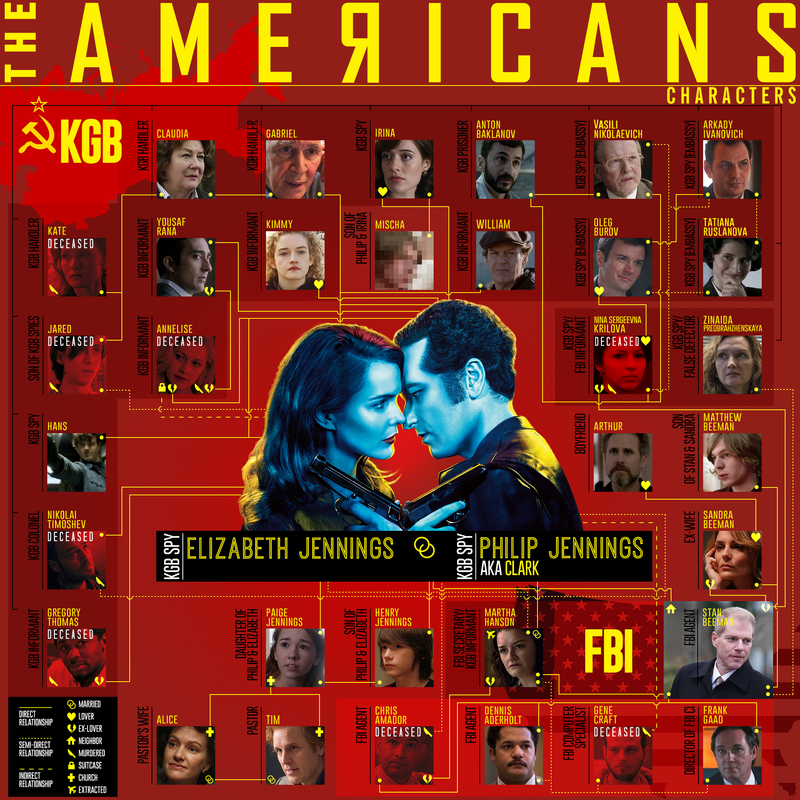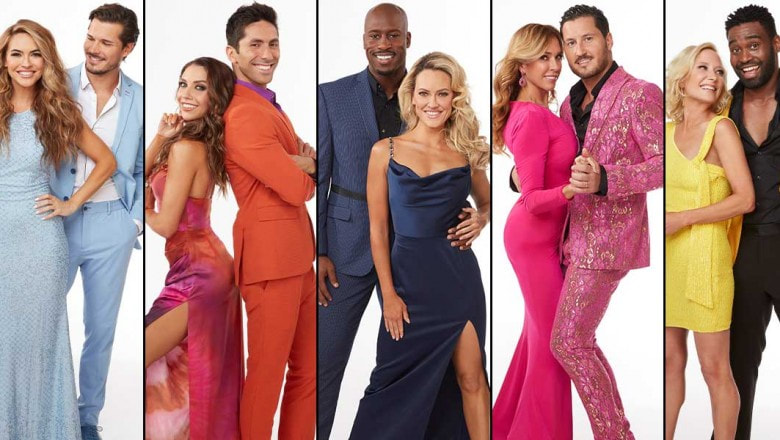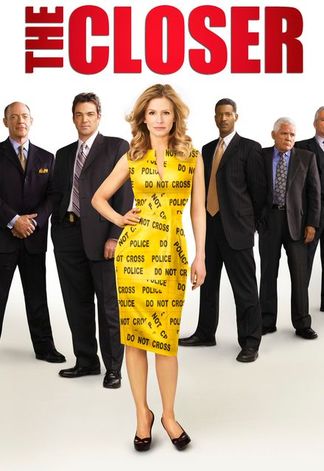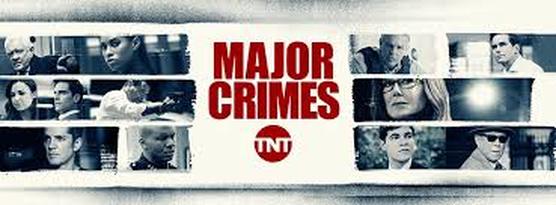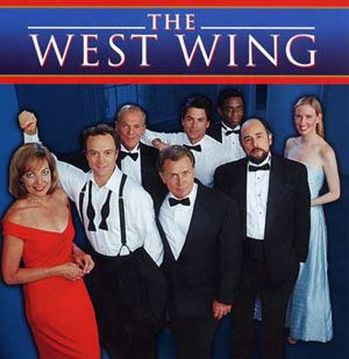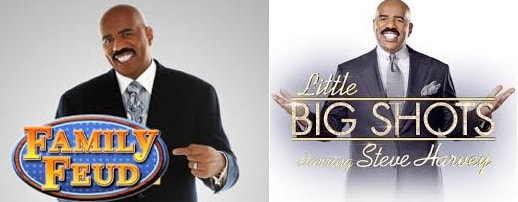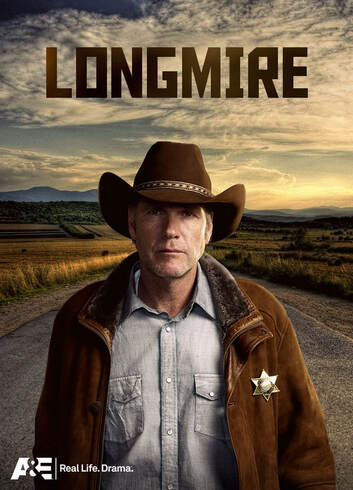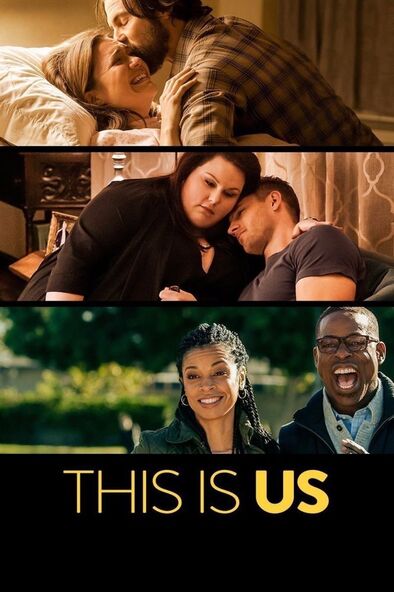Copyright © 2015 Bert N. Langford (Images may be subject to copyright. Please send feedback)
Welcome to Our Generation USA!
TV Classics and ShowRunners
Within the following, you will find those TV series and contributors popular in the United States, whether appearing on Broadcast or Cable Television and from the origins of TV until today: Click on any of the Series below to be taken to that topic.
(Click here for TV Sitcoms)
(Click here for Science Fiction TV Series)
(Click here for Streaming Media)
24 (Fox: 2001-2010)
YouTube Video from the Fox TV Series "24": Jack Bauer Returns To Live Another Day
Pictured: Keith Sutherland as agent "Jack Bauer"
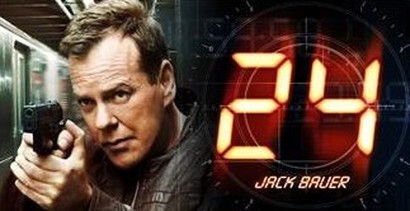
24 is an American television series produced for the Fox network, created by Joel Surnow and Robert Cochran, and starring Kiefer Sutherland as Counter Terrorist Unit (CTU) agent Jack Bauer. Each season, comprising 24 episodes, covers 24 hours in Bauer's life, using the real time method of narration.
Premiering on November 6, 2001, the show spanned 192 episodes over eight seasons; the series finale broadcast on May 24, 2010. In addition, a television film, 24: Redemption, was broadcast between seasons six and seven, on November 23, 2008. 24 returned as a 12-episode series titled 24: Live Another Day, which aired from May 5 to July 14, 2014.
The series begins with Bauer working for the Los Angeles–based Counter Terrorist Unit, in which he is a highly proficient agent with an "ends justify the means" approach, regardless of the perceived morality of some of his actions. Throughout the series most of the main plot elements unfold like a political thriller.
A typical plot has Bauer racing against the clock as he attempts to thwart multiple terrorist plots, including presidential assassination attempts, weapons of mass destruction detonations, bioterrorism, cyber attacks, as well as conspiracies which deal with government and corporate corruption.
24 garnered critical acclaim, winning numerous awards over its eight seasons, including Best Drama Series at the 2003 Golden Globe Awards and Outstanding Drama Series at the 2006 Prime time Emmy Awards. At the conclusion of its eighth season, 24 became the longest-running U.S. espionage/counterterrorism-themed television drama ever, surpassing both Mission: Impossible (CBS:1966-1973 and ABC: 1988-1989) and The Avengers (ABC: 1961-1969.
Premiering on November 6, 2001, the show spanned 192 episodes over eight seasons; the series finale broadcast on May 24, 2010. In addition, a television film, 24: Redemption, was broadcast between seasons six and seven, on November 23, 2008. 24 returned as a 12-episode series titled 24: Live Another Day, which aired from May 5 to July 14, 2014.
The series begins with Bauer working for the Los Angeles–based Counter Terrorist Unit, in which he is a highly proficient agent with an "ends justify the means" approach, regardless of the perceived morality of some of his actions. Throughout the series most of the main plot elements unfold like a political thriller.
A typical plot has Bauer racing against the clock as he attempts to thwart multiple terrorist plots, including presidential assassination attempts, weapons of mass destruction detonations, bioterrorism, cyber attacks, as well as conspiracies which deal with government and corporate corruption.
24 garnered critical acclaim, winning numerous awards over its eight seasons, including Best Drama Series at the 2003 Golden Globe Awards and Outstanding Drama Series at the 2006 Prime time Emmy Awards. At the conclusion of its eighth season, 24 became the longest-running U.S. espionage/counterterrorism-themed television drama ever, surpassing both Mission: Impossible (CBS:1966-1973 and ABC: 1988-1989) and The Avengers (ABC: 1961-1969.
Alf (NBC: 1986-1990)
YouTube Video from the Best Of ALF
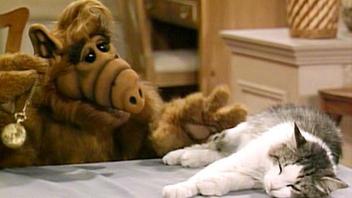
ALF is an American science fiction sitcom that aired on NBC from September 22, 1986 to March 24, 1990. It was the first television series to be presented in Dolby Surround.
The title character is Gordon Shumway, a friendly extraterrestrial nicknamed ALF (an acronym for Alien Life Form), who crash lands in the garage of the suburban middle-class Tanner family.
The series stars Max Wright as father Willie Tanner, Anne Schedeen as mother Kate Tanner, and Andrea Elson and Benji Gregory as their children, Lynn and Brian Tanner. ALF was performed by puppeteer/creator Paul Fusco.
Produced by Alien Productions, ALF originally ran for four seasons and produced 99 episodes, including three one-hour episodes which were divided into two parts for syndication totaling 102 episodes.
The title character is Gordon Shumway, a friendly extraterrestrial nicknamed ALF (an acronym for Alien Life Form), who crash lands in the garage of the suburban middle-class Tanner family.
The series stars Max Wright as father Willie Tanner, Anne Schedeen as mother Kate Tanner, and Andrea Elson and Benji Gregory as their children, Lynn and Brian Tanner. ALF was performed by puppeteer/creator Paul Fusco.
Produced by Alien Productions, ALF originally ran for four seasons and produced 99 episodes, including three one-hour episodes which were divided into two parts for syndication totaling 102 episodes.
60 Minutes (CBS: 1968-Present)
YouTube Video from 60 Minutes: FIFA (2-12-16 Episode)
Pictured, From Left to Right, the Current (February, 2016) Cast of Correspondents: Morley Safer, Anderson Cooper, Bob Simon, Steve Kroft, Leslie Stahl, Scott Pelley, and Katie Couric
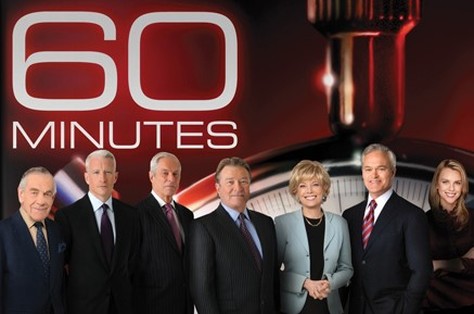
60 Minutes is an American news magazine television program broadcast on the CBS television network. Debuting in 1968, the program was created by Don Hewitt, who chose to set it apart from other news programs by using a unique style of reporter-centered investigation.
In 2002, 60 Minutes was ranked #6 on TV Guide's 50 Greatest TV Shows of All Time and in 2013, it was ranked #24 on TV Guide's 60 Best Series of All Time. The New York Times has called it "one of the most esteemed news magazines on American television".
In 2002, 60 Minutes was ranked #6 on TV Guide's 50 Greatest TV Shows of All Time and in 2013, it was ranked #24 on TV Guide's 60 Best Series of All Time. The New York Times has called it "one of the most esteemed news magazines on American television".
Alias (ABC: 2001-2006)
YouTube Video Alias TV Series - Background Music is "Back in Black" (AC/DC)
Pictured: Montage of Alias's Star Jennifer Garner in her many disguises
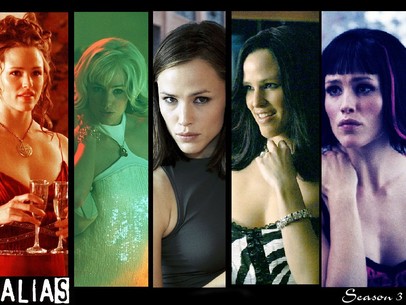
Alias is an American spy-action television series created by J. J. Abrams, that was broadcast on ABC for five seasons, from September 30, 2001, to May 22, 2006. It stars Jennifer Garner as Sydney Bristow, a double-agent for the Central Intelligence Agency posing as an operative for SD-6, a worldwide criminal and espionage organization.
The main theme of the series explores Sydney's obligation to conceal her true career from her friends and family, even as she assumes multiple aliases to carry out her missions. These themes are most prevalent in the first two seasons of the show. A major plotline of the series is the search for and recovery of artifacts created by Milo Rambaldi, a fictitious Renaissance-era figure with similarities to both Leonardo da Vinci and Nostradamus. This plot and some technologies used in the series place Alias into the genre of science fiction.
The series was well received among critics and has been included in several "best of" lists. Alias was in the American Film Institute's top ten list for television programs in 2003. The show also received numerous awards and nominations.
The main theme of the series explores Sydney's obligation to conceal her true career from her friends and family, even as she assumes multiple aliases to carry out her missions. These themes are most prevalent in the first two seasons of the show. A major plotline of the series is the search for and recovery of artifacts created by Milo Rambaldi, a fictitious Renaissance-era figure with similarities to both Leonardo da Vinci and Nostradamus. This plot and some technologies used in the series place Alias into the genre of science fiction.
The series was well received among critics and has been included in several "best of" lists. Alias was in the American Film Institute's top ten list for television programs in 2003. The show also received numerous awards and nominations.
Beverly Hills, 90210 (Fox: 1990-2000)
YouTube Video From Beverly Hills 90210: 10 Memorable Moments
Beverly Hills, 90210 is an American drama series that originally aired from October 4, 1990, to May 17, 2000, on Fox and was produced by Spelling Television in the United States, and subsequently on numerous networks around the world. It is the first series in the Beverly Hills, 90210 franchise.
The show chronicled the lives of a group of friends living in the upscale and star-studded community of Beverly Hills, California. The show was created by Darren Star and executive producers Charles Rosin (originally) followed in later seasons by Aaron Spelling, E. Duke Vincent, Paul Waigner, Steve Wasserman, and Jessica Klein. The "90210" in the title refers to one of the city's five ZIP codes.
The initial premise of the show was based on the adjustment and culture shock that twins Brandon (Jason Priestley) and Brenda Walsh (Shannen Doherty) experienced when they and their parents, Jim (James Eckhouse) and Cindy (Carol Potter) moved from Minneapolis, Minnesota to Beverly Hills.
In addition to chronicling the friendships and romantic relationships of the characters, the show also addressed numerous topical issues such as date rape, gay rights, animal rights, alcoholism, drug abuse, domestic violence, sex, antisemitism, teenage suicide, teenage pregnancy, and AIDS.
Beverly Hills, 90210 was named one of the Best School Shows of All Time by AOL TV.
After a poor start in the ratings during its first season, the series gained popularity during the summer of 1991, when Fox aired a special "summer season" of the show while most other series were in reruns.
The series became one of Fox's top shows when it began its next season that fall. Viewership increased dramatically and the cast members, particularly Jason Priestley and Luke Perry, became teen idols, while the series would make actresses Shannen Doherty, Jennie Garth and Tori Spelling household names in the US. The show also had many cast changes, with Garth, Spelling, Ian Ziering and Brian Austin Green being the only actors to appear during its entire run.
The show chronicled the lives of a group of friends living in the upscale and star-studded community of Beverly Hills, California. The show was created by Darren Star and executive producers Charles Rosin (originally) followed in later seasons by Aaron Spelling, E. Duke Vincent, Paul Waigner, Steve Wasserman, and Jessica Klein. The "90210" in the title refers to one of the city's five ZIP codes.
The initial premise of the show was based on the adjustment and culture shock that twins Brandon (Jason Priestley) and Brenda Walsh (Shannen Doherty) experienced when they and their parents, Jim (James Eckhouse) and Cindy (Carol Potter) moved from Minneapolis, Minnesota to Beverly Hills.
In addition to chronicling the friendships and romantic relationships of the characters, the show also addressed numerous topical issues such as date rape, gay rights, animal rights, alcoholism, drug abuse, domestic violence, sex, antisemitism, teenage suicide, teenage pregnancy, and AIDS.
Beverly Hills, 90210 was named one of the Best School Shows of All Time by AOL TV.
After a poor start in the ratings during its first season, the series gained popularity during the summer of 1991, when Fox aired a special "summer season" of the show while most other series were in reruns.
The series became one of Fox's top shows when it began its next season that fall. Viewership increased dramatically and the cast members, particularly Jason Priestley and Luke Perry, became teen idols, while the series would make actresses Shannen Doherty, Jennie Garth and Tori Spelling household names in the US. The show also had many cast changes, with Garth, Spelling, Ian Ziering and Brian Austin Green being the only actors to appear during its entire run.
Blue Bloods (CBS: 2010 to Present), including:
The Reagans at the Family Dinner Table, From L-R:
Bottom Photos:
LEFT: Danny Reagan with his current partner, Detective Maria Baez (Marisa Ramirez); CENTER: Jamie Reagan and his partner, Officer Eddie Janko (Venessa Ray); RIGHT: Frank Reagan with (L-R) Lieutenant Sidney "Sid" Gormley (Robert Clohessy), Special Assistant to the Commissioner; Garrett Moore (Gregory Jbara), NYPD Deputy Commissioner of Public Information, Detective Abigail Baker (Abigail Hawk), Commissioner's Detective Squad & Commissioner's primary aide.
- a list of Episodes by Season
- as well as a List of Blue Bloods Characters
- YouTube Videos:
The Reagans at the Family Dinner Table, From L-R:
- Jamie Reagan (Will Estes),
- Nicky Reagan (Sami Gayle),
- Erin Reagan (Bridget Moynahan),
- Police Commissioner Frank Reagan (Tom Selleck),
- Linda Reagan (Amy Carlson),
- Danny Reagan (Donnie Walhburg),
- Jack Reagan,Tony Terraciano and his real life brother Andrew Terraciano, who plays Sean Reagan
- and (in front) Retired Police Commission Henry Reagan (Len Cariou).
Bottom Photos:
LEFT: Danny Reagan with his current partner, Detective Maria Baez (Marisa Ramirez); CENTER: Jamie Reagan and his partner, Officer Eddie Janko (Venessa Ray); RIGHT: Frank Reagan with (L-R) Lieutenant Sidney "Sid" Gormley (Robert Clohessy), Special Assistant to the Commissioner; Garrett Moore (Gregory Jbara), NYPD Deputy Commissioner of Public Information, Detective Abigail Baker (Abigail Hawk), Commissioner's Detective Squad & Commissioner's primary aide.
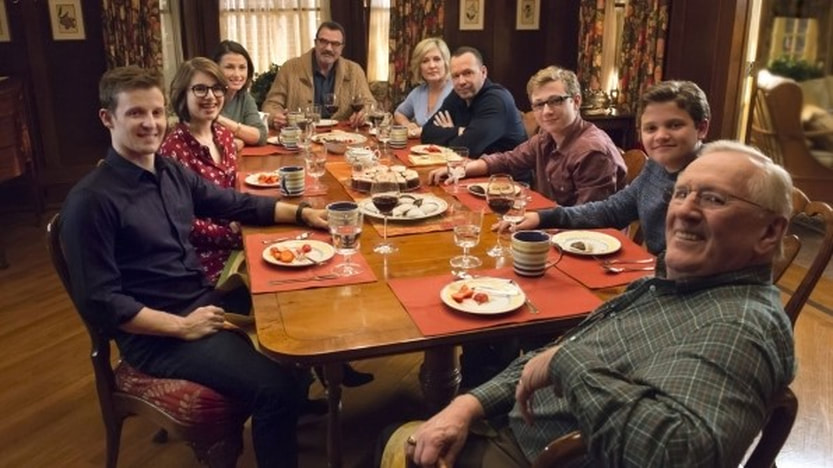

Blue Bloods is an American police procedural drama television series that has been airing on CBS since September 2010. Its main characters are members of the fictional Reagan family, an American, Irish Catholic family in New York City with a history of work in law enforcement.
Blue Bloods stars Tom Selleck as New York City Police Commissioner Frank Reagan; other main cast members include Donnie Wahlberg, Bridget Moynahan, Will Estes and Len Cariou for all 13 seasons, plus Amy Carlson (seasons 1–7), and Sami Gayle (seasons 1–11; played by Marlene Lawston in the pilot episode).
The show is filmed on location in New York City with references to suburban areas as well.
The series debuted on September 24, 2010, with episodes airing on Fridays following CSI: NY before being moved to Wednesdays at 10:00 p.m. Eastern and Pacific time and 9:00 p.m. Central and Mountain time for a four-week tryout. After four weeks, it returned to its original Friday 10:00 p.m. Eastern time slot, where it has remained since.
On March 29, 2023, CBS announced the show had been renewed for season fourteen. But, on July 21, 2023, CBS announced the renewed 14th season would be delayed and on hold due to the 2023 SAG-AFTRA strike. However, on July 25, 2023, an editor from TV Fanatics stated that the main casts and crew has taken a pay cut for the 14th season to move forward. CBS has yet to confirm this. The fourteenth season will premiere on February 16, 2024.
On November 20, 2023, it was announced that the fourteenth season would be its last. The first 10 episodes will air during the midseason. The second half of the season, consisting of eight episodes, is scheduled to debut in fall 2024.
Premise:
The series follows the Reagans, a family who has a history of work in law enforcement. Frank Reagan is the New York Police Department Police Commissioner. Frank's eldest son, Danny, is an NYPD detective, his youngest son, Jamie, is an NYPD sergeant, and his daughter, Erin, works as an assistant district attorney.
Frank's second son, Joe (though the series mistakenly refers to him as the eldest in more recent episodes), was murdered by a corrupt cop in the line of duty in events that predate the series, when he was involved with an FBI investigation of a group of corrupt NYPD cops known as the Blue Templar.
Frank's father, Henry, is a former NYPD beat cop who rose through the ranks to become police commissioner. The show's title references both the "blue blooded" concept of nobility as it relates to the Reagan family's powerful roles within New York City's criminal justice system as well as the American concept of an entire family who dedicate their lives to the law enforcement profession as one that "bleeds blue" and the blue color of the NYPD uniforms.
Each member of the family represents a different aspect of police work or the legal process:
- Frank as the commissioner,
- Danny as the detective,
- Jamie as the beat cop,
- and Erin as the prosecutor.
Additionally, while each person's story might occasionally interweave with another's, the show also follows the professional and, at times, personal relationships with their respective partners and colleagues:
- Frank with Garrett Moore, the NYPD Deputy Commissioner of Public Information and de facto Chief of Staff,
- Detective 1st Grade Abigail Baker, the primary aide to the commissioner, and later,
- Lieutenant Sidney Gormley, the Special Assistant to the Commissioner and de facto Chief of Department;
- Danny with Detective Jackie Curatola and later, Detective Maria Baez;
- Jamie with Officer Edit "Eddie" Janko;
- and Erin with Detective Anthony Abetemarco, who is an investigator for the DA's office.
The Reagans are an Irish American Catholic family that gathers for Sunday dinner each week. According to People, "the Sunday supper is the heart of each show.
Both Henry's and Frank's respective wives, Betty and Mary, are deceased, as is Joe. Erin is divorced and has one daughter, college graduate Nicky, who lived with her mother until accepting a job in San Francisco in season 10.
Danny is a widower with two sons, Jack and Sean. He was married to Linda, a nurse who was killed off screen in a helicopter crash between seasons 7 and 8.
Jamie married his partner, Edit "Eddie" Janko, in the season 9 finale. They acknowledged their mutual attraction during season 7 and became engaged at the end of season 8.
The season 10 finale revealed a twenty-four-year-old son of Joe's that the family never knew about, a young detective in the firearms unit named Joe Hill (played by Will Hochman).
Cast and characters
Main article: List of Blue Bloods characters
Click on the chart below to enlarge image:
Click on any of the following blue hyperlinks for more about Blue Bloods:
Bonanza (NBC: 1959-1973)
YouTube Video The Quality of Mercy (1963) || Bonanza (TV Series)
Pictured: The Cartwright Family from Left to Right: Pernell Roberts as “Adam”, Dan Blocker as “Hoss”, Lorne Greene as “Ben”, and Michael Landon as “Little Joe”
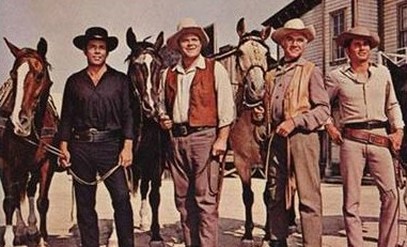
Bonanza is an NBC television western series that ran from 1959 to 1973 Lasting 14 seasons and 431 episodes, it ranks as the second-longest-running western series (behind Gunsmoke), and within the top 10 longest-running, live-action American series. The show continues to air in syndication.
The show is set around the 1860s and it centers on the wealthy Cartwright family, who live in the area of Virginia City, Nevada, bordering Lake Tahoe.
The title "Bonanza" is a term used by miners in regard to a large vein or deposit of ore, and commonly refers to the Comstock Lode.
In 2002, Bonanza was ranked No. 43 on TV Guide's 50 Greatest TV Shows of All Time,[2] and in 2013 TV Guide included it in its list of The 60 Greatest Dramas of All Time.[3] The time period for the television series is roughly between 1861 (Season 1) to 1867 (Season 13) during and shortly after the American Civil War.
During the summer of 1972, NBC aired reruns of episodes from the 1967–1970 period in prime time on Tuesday evening under the title Ponderosa.
The show is set around the 1860s and it centers on the wealthy Cartwright family, who live in the area of Virginia City, Nevada, bordering Lake Tahoe.
The title "Bonanza" is a term used by miners in regard to a large vein or deposit of ore, and commonly refers to the Comstock Lode.
In 2002, Bonanza was ranked No. 43 on TV Guide's 50 Greatest TV Shows of All Time,[2] and in 2013 TV Guide included it in its list of The 60 Greatest Dramas of All Time.[3] The time period for the television series is roughly between 1861 (Season 1) to 1867 (Season 13) during and shortly after the American Civil War.
During the summer of 1972, NBC aired reruns of episodes from the 1967–1970 period in prime time on Tuesday evening under the title Ponderosa.
Boston Legal (ABC: 2004-2008)
YouTube Video Boston Legal - The Nuances of James Spader (Paley Center, 2006)
Pictured: James Spader as Alan Shore and William Shatner as Denny Crane
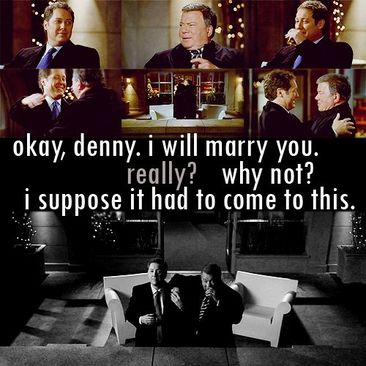
Boston Legal was an American legal "dramedy" created by David E. Kelley and produced in association with 20th Century Fox Television for ABC. The series aired from October 3, 2004, to December 8, 2008.
Boston Legal is a spin-off of the long-running Kelley series The Practice (ABC: 1997-2004) ,following the exploits of former Practice character Alan Shore (James Spader) at the legal firm of Crane, Poole & Schmidt.
The series also boasted an all-star cast including (besides Shatner and Spader) including Candice Bergen as "Shirley Schmidt" (Name Partner), René Auberjonois as "Paul Lewiston" (Managing Partner) , and John Larroquette as "Carl Sack" (Senior Partner).
According to Nielsen Media Research, Boston Legal drew the richest viewing audience on television, based on the concentration of high-income viewers in its young adult audience (Adult 18–49 index w/$100k+ annual income).
Boston Legal is a spin-off of the long-running Kelley series The Practice (ABC: 1997-2004) ,following the exploits of former Practice character Alan Shore (James Spader) at the legal firm of Crane, Poole & Schmidt.
The series also boasted an all-star cast including (besides Shatner and Spader) including Candice Bergen as "Shirley Schmidt" (Name Partner), René Auberjonois as "Paul Lewiston" (Managing Partner) , and John Larroquette as "Carl Sack" (Senior Partner).
According to Nielsen Media Research, Boston Legal drew the richest viewing audience on television, based on the concentration of high-income viewers in its young adult audience (Adult 18–49 index w/$100k+ annual income).
Breaking Bad (AMC: 2008-2013)
YouTube Video of Top 10 Breaking Bad Scenes
Pictured: Brian Cranston as “Walter White”
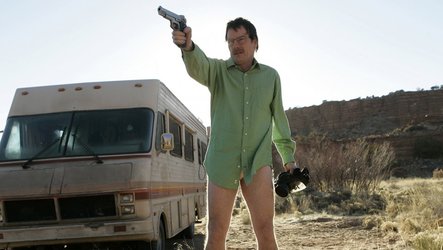
Breaking Bad is an American crime drama television series created and produced by Vince Gilligan. The show originally aired on the AMC network for five seasons, from January 20, 2008, to September 29, 2013.
It tells the story of Walter White (Bryan Cranston), a struggling high school chemistry teacher diagnosed with inoperable lung cancer. Together with his former student Jesse Pinkman (Aaron Paul), White turns to a life of crime, producing and selling crystallized methamphetamine to secure his family's financial future before he dies, while navigating the dangers of the criminal world.
The title is from a Southern colloquialism meaning to "raise hell". Breaking Bad is set and was filmed in Albuquerque, New Mexico.
Walter's family consists of his wife Skyler (Anna Gunn) and children, Walter, Jr. (RJ Mitte) and Holly (Elanor Anne Wenrich). The show also features Skyler's sister Marie Schrader (Betsy Brandt), and her husband Hank (Dean Norris), a Drug Enforcement Administration (DEA) agent.
Walter hires lawyer Saul Goodman (Bob Odenkirk), who connects him with private investigator and fixer Mike Ehrmantraut (Jonathan Banks) and in turn Mike's employer, drug kingpin Gus Fring (Giancarlo Esposito).
The final season introduces the characters of Todd Alquist (Jesse Plemons) and Lydia Rodarte-Quayle (Laura Fraser).
Breaking Bad is widely regarded as one of the greatest television series of all time. By the time the series finale aired, the series was among the most-watched cable shows on American television. The show received numerous awards, including sixteen Primetime Emmy Awards, eight Satellite Awards, two Golden Globe Awards, two Peabody Awards, two Critics' Choice Awards, and four Television Critics Association Awards.
For his leading performance, Cranston won the Primetime Emmy Award for Outstanding Lead Actor in a Drama Series four times, while Aaron Paul won the Primetime Emmy Award for Outstanding Supporting Actor in a Drama Series three times. In 2013, Breaking Bad entered the Guinness World Records as the most critically acclaimed show of all time.
It tells the story of Walter White (Bryan Cranston), a struggling high school chemistry teacher diagnosed with inoperable lung cancer. Together with his former student Jesse Pinkman (Aaron Paul), White turns to a life of crime, producing and selling crystallized methamphetamine to secure his family's financial future before he dies, while navigating the dangers of the criminal world.
The title is from a Southern colloquialism meaning to "raise hell". Breaking Bad is set and was filmed in Albuquerque, New Mexico.
Walter's family consists of his wife Skyler (Anna Gunn) and children, Walter, Jr. (RJ Mitte) and Holly (Elanor Anne Wenrich). The show also features Skyler's sister Marie Schrader (Betsy Brandt), and her husband Hank (Dean Norris), a Drug Enforcement Administration (DEA) agent.
Walter hires lawyer Saul Goodman (Bob Odenkirk), who connects him with private investigator and fixer Mike Ehrmantraut (Jonathan Banks) and in turn Mike's employer, drug kingpin Gus Fring (Giancarlo Esposito).
The final season introduces the characters of Todd Alquist (Jesse Plemons) and Lydia Rodarte-Quayle (Laura Fraser).
Breaking Bad is widely regarded as one of the greatest television series of all time. By the time the series finale aired, the series was among the most-watched cable shows on American television. The show received numerous awards, including sixteen Primetime Emmy Awards, eight Satellite Awards, two Golden Globe Awards, two Peabody Awards, two Critics' Choice Awards, and four Television Critics Association Awards.
For his leading performance, Cranston won the Primetime Emmy Award for Outstanding Lead Actor in a Drama Series four times, while Aaron Paul won the Primetime Emmy Award for Outstanding Supporting Actor in a Drama Series three times. In 2013, Breaking Bad entered the Guinness World Records as the most critically acclaimed show of all time.
Cagney & Lacey (CBS: 1982-1988)
YouTube Video From Cagney & Lacey
Pictured: “Cagney and Lacy”: Two magazine covers featuring the Series and its Stars
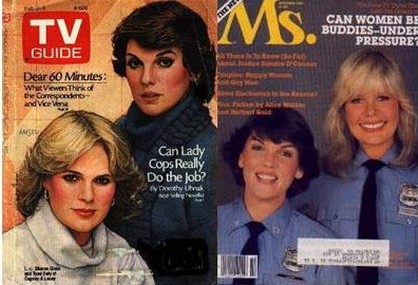
Cagney & Lacey is an American television series that originally aired on the CBS television network for seven seasons from March 25, 1982 to May 16, 1988.
A police procedural, the show stars Tyne Daly and Sharon Gless as New York City police detectives who lead very different lives: Christine Cagney (Gless) was a single, career-minded woman, while Mary Beth Lacey (Daly) was a married working mother.
The series was set in a fictionalized version of Manhattan's 14th Precinct (known as "Midtown South").
For six consecutive years, one of the two lead actresses won the Emmy for Best Lead Actress in a Drama (four wins for Daly, two for Gless), a winning streak unmatched in any major category by a show.
A police procedural, the show stars Tyne Daly and Sharon Gless as New York City police detectives who lead very different lives: Christine Cagney (Gless) was a single, career-minded woman, while Mary Beth Lacey (Daly) was a married working mother.
The series was set in a fictionalized version of Manhattan's 14th Precinct (known as "Midtown South").
For six consecutive years, one of the two lead actresses won the Emmy for Best Lead Actress in a Drama (four wins for Daly, two for Gless), a winning streak unmatched in any major category by a show.
Castle (ABC: 2009-2016)
YouTube Video Castle and Beckett Rescued & Castle Alexis Hug “The Blame Game” Season 8 Episode 12
Pictured: Stana Katic as “Kate Beckett” and Nathan Fillon as “Richard Castle”
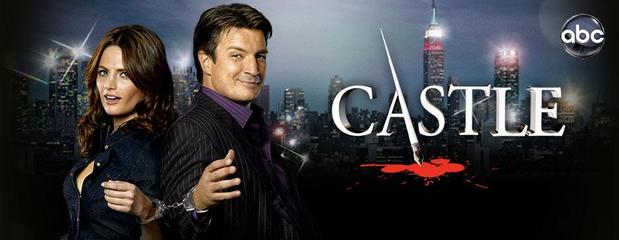
Castle is an American crime drama television series, which premiered on ABC on March 9, 2009. The series is produced jointly by Beacon Pictures and ABC Studios.
Created by Andrew W. Marlowe, it primarily traces the lives of Richard Castle (Nathan Fillion), a best-selling mystery novelist, and Kate Beckett (Stana Katic), an NYPD homicide detective, as they solve various unusual crimes in New York City.
Detective Beckett is initially infuriated at the thought of working with a writer and goes to great lengths to keep him out of her way. However, the two soon start developing feelings for each other. The overarching plot of the series focuses on the romance between the two lead characters, and the murder of Beckett's mother.
Castle follows Nathan Fillion as Richard Castle, a famous mystery novelist who has killed off the main character in his popular book series and has writer's block. He is brought in by the NYPD for questioning regarding a copy-cat murder based on one of his novels.
He is intrigued by this new window into crime and murder, and uses his connection with the mayor to charm his way into shadowing Detective Kate Beckett, played by Stana Katic. Castle decides to use Beckett as his muse for Nikki Heat, the main character of his next book series.
Beckett, an avid reader of Castle's books, initially disapproves of having Castle shadow her work, but later warms up and recognizes Castle as a useful resource in her team's investigations.
Created by Andrew W. Marlowe, it primarily traces the lives of Richard Castle (Nathan Fillion), a best-selling mystery novelist, and Kate Beckett (Stana Katic), an NYPD homicide detective, as they solve various unusual crimes in New York City.
Detective Beckett is initially infuriated at the thought of working with a writer and goes to great lengths to keep him out of her way. However, the two soon start developing feelings for each other. The overarching plot of the series focuses on the romance between the two lead characters, and the murder of Beckett's mother.
Castle follows Nathan Fillion as Richard Castle, a famous mystery novelist who has killed off the main character in his popular book series and has writer's block. He is brought in by the NYPD for questioning regarding a copy-cat murder based on one of his novels.
He is intrigued by this new window into crime and murder, and uses his connection with the mayor to charm his way into shadowing Detective Kate Beckett, played by Stana Katic. Castle decides to use Beckett as his muse for Nikki Heat, the main character of his next book series.
Beckett, an avid reader of Castle's books, initially disapproves of having Castle shadow her work, but later warms up and recognizes Castle as a useful resource in her team's investigations.
CSI: Crime Scene Investigation (CBS: 2000-2015)
YouTube Video from CSI: Crime Scene Investigation - Season 10 Episode 1 slow motion beginning
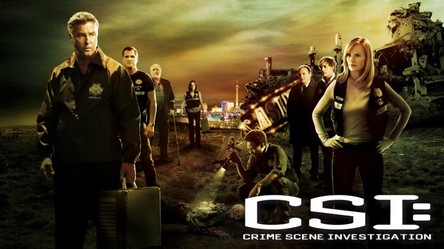
CSI: Crime Scene Investigation (also referred to as CSI) is an American police procedural drama television series that premiered on CBS October 6, 2000.
The series, starring William Petersen, Marg Helgenberger, Laurence Fishburne, Ted Danson, and Elisabeth Shue, is the first in the CSI franchise. The series concluded on September 27, 2015, after 15 seasons, with a feature-length finale titled Immortality.
Mixing deduction, gritty subject matter, and character-driven drama, CSI follows Las Vegas criminalists (identified as "Crime Scene Investigators") working for the Las Vegas Police Department (LVPD) (instead of real-life "Crime Scene Analysts" and "Las Vegas Metropolitan Police Department" (LVMPD)) as they use physical evidence to solve murders.
The team is originally led by Gil Grissom, CSI supervisor for the grave shift and a forensic entomologist, and his second-in-command, Catherine Willows, a single mother with a cop's instinct. Born and raised in Vegas, Catherine was a stripper before being recruited into law enforcement. Replacing Grissom is D.B. Russell, who has come to the team after heading the Seattle Crime Lab. His number two is Julie Finlay, a CSI III and a blood pattern expert who previously worked with Russell in Seattle. She replaces Willows. Like Catherine, she is a blood-spatter expert with extensive knowledge of criminal psychology. With their team, they are on the case 24/7, scouring the scene, collecting the evidence, and finding the missing pieces that will solve the mystery.
During its fifteen years in production, CSI secured an estimated world audience of over 73.8 million viewers (in 2009), commanded, as of the fall of 2008, an average cost of $262,600 for a 30-second commercial, and reached milestone episodes including the 100th ("Ch-Ch-Changes"), the 200th ("Mascara") and the 300th ("Frame by Frame").
CSI spawned three spin-off series: CSI: Miami, CSI: NY, and CSI: Cyber; a book series; several video games; and an exhibit at Chicago's Museum of Science and Industry.
At the time of its cancellation, CSI was the seventh longest-running scripted U.S. primetime TV series overall and had been recognized as the most popular dramatic series internationally by the Festival de Télévision de Monte-Carlo, which awarded the series the "International Television Audience Award (Best Television Drama Series)" three times.
CSI became the second most-watched show on American television by 2002, finally taking the top position for the 2002-2003 season. CSI was later named the most-watched show in the world for the fifth time in 2012.
Critical reception to the show has been positive, with an IMDB average score of 7.8/10, while early reviews showed a mixed to favorable review of the opening season. The Hollywood Reporter noted of the pilot "...the charismatic William Petersen and the exquisite Marg Helgenberger, lend credibility to the portrayals that might be indistinct in lesser hands.
There's also a compelling, pulsating edge at the outset of CSI that commands instant attention, thanks in part to dynamic work from director Danny Cannon.". Entertainment Weekly gave the opening two seasons "B+" and "A-" ratings, respectively, noting "The reason for CSI’s success is that it combines a few time-tested TV elements in a fresh way.
Each episode presents a murder case and a group of lovable heroes armed with cool, high-tech gadgets who do the sleuthing and wrap things up in an hour."
The show has won six Primetime Emmy Awards (out of 39 nominations), four People's Choice Awards (out of six nominations), and was nominated for six Golden Globe Awards, among other awards.
Public reaction: CSI has often been criticized for the level and explicitness of graphic violence, images, and sexual content. The CSI series and its spin-off shows have been accused of pushing the boundary of what is considered acceptable viewing for primetime network television.The series had numerous episodes on sexual fetishism and other forms of sexual pleasure (see especially the recurring character of Lady Heather, a professional dominatrix).
CSI has been ranked as among the worst prime-time shows for family viewing by the Parents Television Council nearly every season since its second, being ranked the worst show for family prime-time viewing after the 2002–2003 and 2005–2006 seasons.
The PTC has also targeted certain CSI episodes for its weekly "Worst TV Show of the Week" feature. In addition, the episode "King Baby" aired in February 2005, which the PTC named the most offensive TV show of the week, also led the PTC to start a campaign to file complaints with the FCC with the episode; to date, nearly 13,000 PTC members complained to the Federal Communications Commission about the episode. The PTC has also asked Clorox to pull their advertisements from CSI and CSI: Miami because of the graphically violent content on those programs.
A grassroots campaign started on August 2007, upon rumors of Jorja Fox leaving the show, organized by the online forum Your Tax Dollars At Work. Many of its nineteen thousand members donated to the cause, collecting over $8,000 for gifts and stunts targeted at CBS executives and CSI's producers and writers.
The stunts included a wedding cake delivery to Carol Mendelsohn, 192 chocolate-covered insects with the message "CSI Without Sara Bugs Us." to Naren Shankar and a plane flying several times over the Universal Studios of Los Angeles with a "Follow the evidence keep Jorja Fox on CSI" banner.
Other protests included mailing the show's producers a dollar, in order to save Fox's contract "one dollar at a time". By October 16, 2007, according to the site's tally, more than 20,000 letters with money or flyers had been mailed to the Universal Studios and to CBS headquarters in New York from forty-nine different countries since the campaign started on September 29, 2007. Fox and Mendelsohn chose to donate the money to CASA, a national association that supports and promotes court-appointed advocates for abused or neglected children.
On September 27, 2007, after CSI's season eight premiered, a miniature model of character Gil Grissom's office (which he was seen building during season seven) was put up on eBay. The auction ended October 7, with the prop being sold for $15,600; CBS donated the proceeds to the National CASA Association.
The series, starring William Petersen, Marg Helgenberger, Laurence Fishburne, Ted Danson, and Elisabeth Shue, is the first in the CSI franchise. The series concluded on September 27, 2015, after 15 seasons, with a feature-length finale titled Immortality.
Mixing deduction, gritty subject matter, and character-driven drama, CSI follows Las Vegas criminalists (identified as "Crime Scene Investigators") working for the Las Vegas Police Department (LVPD) (instead of real-life "Crime Scene Analysts" and "Las Vegas Metropolitan Police Department" (LVMPD)) as they use physical evidence to solve murders.
The team is originally led by Gil Grissom, CSI supervisor for the grave shift and a forensic entomologist, and his second-in-command, Catherine Willows, a single mother with a cop's instinct. Born and raised in Vegas, Catherine was a stripper before being recruited into law enforcement. Replacing Grissom is D.B. Russell, who has come to the team after heading the Seattle Crime Lab. His number two is Julie Finlay, a CSI III and a blood pattern expert who previously worked with Russell in Seattle. She replaces Willows. Like Catherine, she is a blood-spatter expert with extensive knowledge of criminal psychology. With their team, they are on the case 24/7, scouring the scene, collecting the evidence, and finding the missing pieces that will solve the mystery.
During its fifteen years in production, CSI secured an estimated world audience of over 73.8 million viewers (in 2009), commanded, as of the fall of 2008, an average cost of $262,600 for a 30-second commercial, and reached milestone episodes including the 100th ("Ch-Ch-Changes"), the 200th ("Mascara") and the 300th ("Frame by Frame").
CSI spawned three spin-off series: CSI: Miami, CSI: NY, and CSI: Cyber; a book series; several video games; and an exhibit at Chicago's Museum of Science and Industry.
At the time of its cancellation, CSI was the seventh longest-running scripted U.S. primetime TV series overall and had been recognized as the most popular dramatic series internationally by the Festival de Télévision de Monte-Carlo, which awarded the series the "International Television Audience Award (Best Television Drama Series)" three times.
CSI became the second most-watched show on American television by 2002, finally taking the top position for the 2002-2003 season. CSI was later named the most-watched show in the world for the fifth time in 2012.
Critical reception to the show has been positive, with an IMDB average score of 7.8/10, while early reviews showed a mixed to favorable review of the opening season. The Hollywood Reporter noted of the pilot "...the charismatic William Petersen and the exquisite Marg Helgenberger, lend credibility to the portrayals that might be indistinct in lesser hands.
There's also a compelling, pulsating edge at the outset of CSI that commands instant attention, thanks in part to dynamic work from director Danny Cannon.". Entertainment Weekly gave the opening two seasons "B+" and "A-" ratings, respectively, noting "The reason for CSI’s success is that it combines a few time-tested TV elements in a fresh way.
Each episode presents a murder case and a group of lovable heroes armed with cool, high-tech gadgets who do the sleuthing and wrap things up in an hour."
The show has won six Primetime Emmy Awards (out of 39 nominations), four People's Choice Awards (out of six nominations), and was nominated for six Golden Globe Awards, among other awards.
Public reaction: CSI has often been criticized for the level and explicitness of graphic violence, images, and sexual content. The CSI series and its spin-off shows have been accused of pushing the boundary of what is considered acceptable viewing for primetime network television.The series had numerous episodes on sexual fetishism and other forms of sexual pleasure (see especially the recurring character of Lady Heather, a professional dominatrix).
CSI has been ranked as among the worst prime-time shows for family viewing by the Parents Television Council nearly every season since its second, being ranked the worst show for family prime-time viewing after the 2002–2003 and 2005–2006 seasons.
The PTC has also targeted certain CSI episodes for its weekly "Worst TV Show of the Week" feature. In addition, the episode "King Baby" aired in February 2005, which the PTC named the most offensive TV show of the week, also led the PTC to start a campaign to file complaints with the FCC with the episode; to date, nearly 13,000 PTC members complained to the Federal Communications Commission about the episode. The PTC has also asked Clorox to pull their advertisements from CSI and CSI: Miami because of the graphically violent content on those programs.
A grassroots campaign started on August 2007, upon rumors of Jorja Fox leaving the show, organized by the online forum Your Tax Dollars At Work. Many of its nineteen thousand members donated to the cause, collecting over $8,000 for gifts and stunts targeted at CBS executives and CSI's producers and writers.
The stunts included a wedding cake delivery to Carol Mendelsohn, 192 chocolate-covered insects with the message "CSI Without Sara Bugs Us." to Naren Shankar and a plane flying several times over the Universal Studios of Los Angeles with a "Follow the evidence keep Jorja Fox on CSI" banner.
Other protests included mailing the show's producers a dollar, in order to save Fox's contract "one dollar at a time". By October 16, 2007, according to the site's tally, more than 20,000 letters with money or flyers had been mailed to the Universal Studios and to CBS headquarters in New York from forty-nine different countries since the campaign started on September 29, 2007. Fox and Mendelsohn chose to donate the money to CASA, a national association that supports and promotes court-appointed advocates for abused or neglected children.
On September 27, 2007, after CSI's season eight premiered, a miniature model of character Gil Grissom's office (which he was seen building during season seven) was put up on eBay. The auction ended October 7, with the prop being sold for $15,600; CBS donated the proceeds to the National CASA Association.
Dallas (CBS: 1978-1991)
YouTube Video of Dallas: the scene in which J.R. is Shot
Pictured: LEFT: The Ewing Family: RIGHT: The “Sourthfork Ranch”

Dallas is an American prime time television soap opera that aired on CBS from April 2, 1978, to May 3, 1991. The series revolves around a wealthy and feuding Texan family, the Ewings, who own the independent oil company Ewing Oil and the cattle-ranching land of Southfork. The series originally focused on the marriage of Bobby Ewing and Pamela Barnes, whose families were sworn enemies with each other. As the series progressed, oil tycoon J.R. Ewing grew to be the show's main character, whose schemes and dirty business became the show's trademark.
When the show ended in May 1991, J.R. was the only character to have appeared in every episode.
The show was famous for its cliffhangers, including the Who shot J.R.? mystery. The 1980 episode Who Done It remains the second highest rated prime-time telecast ever.
The show also featured a "Dream Season", in which the entirety of the ninth season was revealed to have been a dream of Pam Ewing. After 14 seasons, the series finale "Conundrum" aired in 1991.
The show had a relatively ensemble cast. Larry Hagman stars as greedy, scheming oil tycoon J.R. Ewing, stage/screen actress Barbara Bel Geddes as family matriarch Miss Ellie and movie Western actor Jim Davis as Ewing patriarch Jock, his last role before his death in 1981. The series won four Emmy Awards, including a 1980 Outstanding Lead Actress in a Drama Series win for Bel Geddes.
With its 357 episodes, Dallas remains one of the longest lasting full-hour primetime dramas in American TV history, behind Law & Order: Special Victims Unit (366+ episodes), Bonanza (430 episodes), Law & Order (456 episodes), and Gunsmoke (635 episodes). In 2007 Dallas was included in TIME magazine's list of "100 Best TV Shows of All-TIME".
Dallas also spawned the spin-off series Knots Landing in 1979 which also lasted 14 seasons. In 2010, TNT announced it had ordered a new, updated continuation of Dallas.
The revival series, continuing the story of the Ewing family, premiered on TNT on June 13, 2012, and ran for three seasons, ending its run on September 22, 2014.
When the show ended in May 1991, J.R. was the only character to have appeared in every episode.
The show was famous for its cliffhangers, including the Who shot J.R.? mystery. The 1980 episode Who Done It remains the second highest rated prime-time telecast ever.
The show also featured a "Dream Season", in which the entirety of the ninth season was revealed to have been a dream of Pam Ewing. After 14 seasons, the series finale "Conundrum" aired in 1991.
The show had a relatively ensemble cast. Larry Hagman stars as greedy, scheming oil tycoon J.R. Ewing, stage/screen actress Barbara Bel Geddes as family matriarch Miss Ellie and movie Western actor Jim Davis as Ewing patriarch Jock, his last role before his death in 1981. The series won four Emmy Awards, including a 1980 Outstanding Lead Actress in a Drama Series win for Bel Geddes.
With its 357 episodes, Dallas remains one of the longest lasting full-hour primetime dramas in American TV history, behind Law & Order: Special Victims Unit (366+ episodes), Bonanza (430 episodes), Law & Order (456 episodes), and Gunsmoke (635 episodes). In 2007 Dallas was included in TIME magazine's list of "100 Best TV Shows of All-TIME".
Dallas also spawned the spin-off series Knots Landing in 1979 which also lasted 14 seasons. In 2010, TNT announced it had ordered a new, updated continuation of Dallas.
The revival series, continuing the story of the Ewing family, premiered on TNT on June 13, 2012, and ran for three seasons, ending its run on September 22, 2014.
Dynasty (NBC: 1981-1989)
YouTube Video from Dynasty: In an extremely shrewd move on Alexis's part, she secretly provides the bank with the money to loan to Blake for the remortgaging of the Carrington mansion. The only catch being that if Blake defaults, Alexis will own everything.
Pictured: From Left to Right: Heather Locklear as Sammy Jo Carrington, Pamela Bellwood as Claudia Blaisdel Carrington; Linda Evans as Krystle Carrington; John Forsythe as oil magnate Blake Carrington; and Joan Collins as Blake's former wife Alexis.
Dynasty is an American prime time television soap opera that aired on ABC from January 12, 1981 to May 11, 1989. The series, created by Richard and Esther Shapiro and produced by Aaron Spelling, revolved around the Carringtons, a wealthy family residing in Denver, Colorado.
The series was ABC's competitor to CBS's prime time series Dallas, and starred John Forsythe, Linda Evans and Joan Collins as oil magnate Blake Carrington and his new wife Krystle and Blake's former wife Alexis respectively.
Ratings for the show's first season were unimpressive, but a revamp for the second season that included the arrival of Joan Collins as Blake's scheming ex-wife Alexis saw ratings enter the top 20.
By the fall of 1982, it was a top 10 show, and by the spring of 1985, it was the #1 show in the United States.
Other notable cast members included Pamela Sue Martin, Lloyd Bochner, Heather Locklear, Michael Nader, Diahann Carroll, Emma Samms, Ted McGinley, Rock Hudson, Kate O'Mara and Stephanie Beacham.
Dynasty was nominated for a Golden Globe Award for Best TV Drama Series every year from 1981 to 1986, winning in 1984.
Dynasty spawned a successful line of fashion and luxury products, and also a spin-off series called The Colbys. The series declined considerably in popularity during its final two seasons, and it was ultimately cancelled in the spring of 1989 after nine seasons and 220 episodes. A two-part mini-series, Dynasty: The Reunion, aired in October 1991.
The series was ABC's competitor to CBS's prime time series Dallas, and starred John Forsythe, Linda Evans and Joan Collins as oil magnate Blake Carrington and his new wife Krystle and Blake's former wife Alexis respectively.
Ratings for the show's first season were unimpressive, but a revamp for the second season that included the arrival of Joan Collins as Blake's scheming ex-wife Alexis saw ratings enter the top 20.
By the fall of 1982, it was a top 10 show, and by the spring of 1985, it was the #1 show in the United States.
Other notable cast members included Pamela Sue Martin, Lloyd Bochner, Heather Locklear, Michael Nader, Diahann Carroll, Emma Samms, Ted McGinley, Rock Hudson, Kate O'Mara and Stephanie Beacham.
Dynasty was nominated for a Golden Globe Award for Best TV Drama Series every year from 1981 to 1986, winning in 1984.
Dynasty spawned a successful line of fashion and luxury products, and also a spin-off series called The Colbys. The series declined considerably in popularity during its final two seasons, and it was ultimately cancelled in the spring of 1989 after nine seasons and 220 episodes. A two-part mini-series, Dynasty: The Reunion, aired in October 1991.
ER (NBC: 1994-2009)
YouTube Video ER Season 1 Episode 1 - Carter and Greene
Pictured: Top Row, from Left to Right: Alex Kingston, Eriq La Salle, Anthony Edwards, Gloria Reuben, Noah Wylie, and Maria Bello. Bottom Row: from Left to Right: Laura Innes, George Clooney, Julianna Margulies
ER is an American medical drama television series created by novelist and medical doctor Michael Crichton that aired on NBC from September 19, 1994, to April 2, 2009. It was produced by Constant c Productions and Amblin Television, in association with Warner Bros. Television.
ER follows the inner life of the emergency room (ER) of fictional County General Hospital in Chicago, Illinois, and various critical issues faced by the room's physicians and staff. The show ran for 15 seasons with a total of 331 episodes, becoming the longest-running prime time medical drama in American television history.
A typical episode centered on the ER, with most scenes set in the hospital or surrounding streets. In addition, most seasons included at least one story line located completely outside of the ER, often outside of Chicago.
Over the span of the series, stories took place in the Democratic Republic of The Congo, France, Iraq and Sudan. One early storyline involved a road trip taken by Dr. Ross and Dr. Greene to California and a season eight episode included a storyline in Hawaii featuring Dr. Greene and Dr. Corday.
Beginning in season nine, story lines started to include the Democratic Republic of the Congo, featuring Dr. Kovac, Dr. Carter, and Dr. Pratt. “We turned some attention on the Congo and on Darfur when nobody else was. We had a bigger audience than a nightly newscast will ever see, making 25 to 30 million people aware of what was going on in Africa,” ER producer, John Wells said.
The series also focused on sociopolitical issues such as HIV and AIDS, organ transplants, mental illness, racism, human trafficking, euthanasia, poverty and gay rights.[10] Other episodes used more creative formats, such as the 1997 live episode, "Ambush" performed twice; once for the east coast broadcast and again three hours later for the west coast, and 2002's "Hindsight" which ran in reverse time as it followed one character, Dr. Luka Kovac, through the tragic events of one Christmas Eve shift and the Christmas party that preceded it.
It won 23 Primetime Emmy Awards, including the 1996 Outstanding Drama Series award, and received 124 Emmy nominations, which makes it the most nominated drama program in history. ER won 116 awards in total, including the Peabody Award, while the cast earned four Screen Actors Guild Awards for Outstanding Ensemble Performance in a Drama Series.
ER follows the inner life of the emergency room (ER) of fictional County General Hospital in Chicago, Illinois, and various critical issues faced by the room's physicians and staff. The show ran for 15 seasons with a total of 331 episodes, becoming the longest-running prime time medical drama in American television history.
A typical episode centered on the ER, with most scenes set in the hospital or surrounding streets. In addition, most seasons included at least one story line located completely outside of the ER, often outside of Chicago.
Over the span of the series, stories took place in the Democratic Republic of The Congo, France, Iraq and Sudan. One early storyline involved a road trip taken by Dr. Ross and Dr. Greene to California and a season eight episode included a storyline in Hawaii featuring Dr. Greene and Dr. Corday.
Beginning in season nine, story lines started to include the Democratic Republic of the Congo, featuring Dr. Kovac, Dr. Carter, and Dr. Pratt. “We turned some attention on the Congo and on Darfur when nobody else was. We had a bigger audience than a nightly newscast will ever see, making 25 to 30 million people aware of what was going on in Africa,” ER producer, John Wells said.
The series also focused on sociopolitical issues such as HIV and AIDS, organ transplants, mental illness, racism, human trafficking, euthanasia, poverty and gay rights.[10] Other episodes used more creative formats, such as the 1997 live episode, "Ambush" performed twice; once for the east coast broadcast and again three hours later for the west coast, and 2002's "Hindsight" which ran in reverse time as it followed one character, Dr. Luka Kovac, through the tragic events of one Christmas Eve shift and the Christmas party that preceded it.
It won 23 Primetime Emmy Awards, including the 1996 Outstanding Drama Series award, and received 124 Emmy nominations, which makes it the most nominated drama program in history. ER won 116 awards in total, including the Peabody Award, while the cast earned four Screen Actors Guild Awards for Outstanding Ensemble Performance in a Drama Series.
Gunsmoke (CBS: 1955-1975)
YouTube Video Gunsmoke "The Killer" Act 3
Pictured: Cast Members included, from Left to Right: Dennis Weaver (“Chester”), Amanda Blake (“Kitty”), James Arness (“Marshal” or “Matt”) and Milburn Stone (as “Doc”)
Gunsmoke is an American radio and television Western drama series created by director Norman Macdonnell and writer John Meston.
The stories take place in and around Dodge City, Kansas, during the settlement of the American West. The central character is lawman Marshal Matt Dillon, played by James Arness.
The television series ran for 20 seasons from 1955 to 1975, and stands as the United States' longest-running prime time, live-action drama with 635 episodes.
In 2010, Law & Order tied Gunsmoke for most seasons for a live action drama series when it finished its 20th and final season, but the show finished 179 episodes short of Gunsmoke's final total; in terms of prime-time scripted series with continuing characters, The Simpsons is the only program to exceed 20 seasons.
At the end of its run in 1975, Los Angeles Times columnist Cecil Smith wrote: "Gunsmoke was the dramatization of the American epic legend of the west. Our own Iliad and Odyssey, created from standard elements of the dime novel and the pulp western as romanticized by [Ned] Buntline, [Bret] Harte, and [Mark] Twain. It was ever the stuff of legend."
The TV series ran from September 10, 1955, to March 31, 1975, on CBS, with 635 total episodes. It was the second Western television series written for adults, premiering on September 10, 1955, four days after The Life and Legend of Wyatt Earp.
The first 12 seasons aired Saturdays at 10 pm, seasons 13 through 16 aired Mondays at 7:30 pm, and the last four seasons aired Mondays at 8 pm. During its second season in 1956, the program joined the list of the top ten television programs broadcast in the United States. It quickly moved to number one and stayed there until 1961. It remained among the top 20 programs until 1964.
List of Gunsmoke television episodes
The stories take place in and around Dodge City, Kansas, during the settlement of the American West. The central character is lawman Marshal Matt Dillon, played by James Arness.
The television series ran for 20 seasons from 1955 to 1975, and stands as the United States' longest-running prime time, live-action drama with 635 episodes.
In 2010, Law & Order tied Gunsmoke for most seasons for a live action drama series when it finished its 20th and final season, but the show finished 179 episodes short of Gunsmoke's final total; in terms of prime-time scripted series with continuing characters, The Simpsons is the only program to exceed 20 seasons.
At the end of its run in 1975, Los Angeles Times columnist Cecil Smith wrote: "Gunsmoke was the dramatization of the American epic legend of the west. Our own Iliad and Odyssey, created from standard elements of the dime novel and the pulp western as romanticized by [Ned] Buntline, [Bret] Harte, and [Mark] Twain. It was ever the stuff of legend."
The TV series ran from September 10, 1955, to March 31, 1975, on CBS, with 635 total episodes. It was the second Western television series written for adults, premiering on September 10, 1955, four days after The Life and Legend of Wyatt Earp.
The first 12 seasons aired Saturdays at 10 pm, seasons 13 through 16 aired Mondays at 7:30 pm, and the last four seasons aired Mondays at 8 pm. During its second season in 1956, the program joined the list of the top ten television programs broadcast in the United States. It quickly moved to number one and stayed there until 1961. It remained among the top 20 programs until 1964.
List of Gunsmoke television episodes
Hawaii Five O (CBS: 1968-1980)
YouTube Video: Hawaii Five 5.0 - Original Intro ( 1968 - 1980 )
Hawaii Five-O is an American police procedural drama series produced by CBS Productions and Leonard Freeman.
Set in Hawaii, the show originally aired for 12 seasons from 1968 to 1980, and continues in reruns. At the airing of its very last episode, it was the longest running cop show in television history at that time.
Jack Lord portrayed Detective Captain Steve McGarrett, the head of a special state police task force which was based on an actual unit that existed under martial law in the 1940s. The theme music composed by Morton Stevens became especially popular. Many episodes would end with McGarrett instructing his subordinate to "Book 'em, Danno!", sometimes specifying a charge such as "murder one".
Overview:
The CBS television network produced Hawaii Five-O, which aired from September 20, 1968, to April 4, 1980. The program continues to be broadcast in syndication worldwide. In the US, it airs on Me-TV, and via on-demand streaming media from CBS Interactive.
Created by Leonard Freeman, Hawaii Five-O was shot on location in Honolulu, Hawaii, and throughout the island of Oahu and other Hawaiian islands with occasional filming in locales such as Los Angeles, Singapore, and Hong Kong.
Hawaii Five-O was named in honor of Hawaii's being the 50th state. Although the show's name has always ended with the numeral "0", the soundtrack album, released in the late 1960s, used the letter "O" instead of the numeral zero. The letter "O" is sometimes used to differentiate the original series and the revival which premiered in 2010, and always uses the numeral zero.
The show centers on a fictional state police force led by former US naval officer Steve McGarrett (played by Jack Lord), a detective captain, who is appointed by the Governor, Paul Jameson.
In the show, McGarrett oversees state police officers – a young officer, Danny Williams, Chin Ho Kelly, and Kono Kalakaua for seasons one through four. Also, Honolulu Police Department Officer Duke Lukela joined the team as a regular, as did Ben Kokua, who replaced Kono beginning with season five.
Occasionally, McGarrett's Five-O team is assisted by other officers as needed: medical examiner Doc Bergman, forensic specialist Che Fong, and a secretary. The first secretary was May, then Jenny, and later Malia, Lani and Luana.
For 12 seasons, McGarrett and his team hounded international secret agents, criminals, and organized crime syndicates plaguing the Hawaiian Islands. With the aid of District Attorney and later Hawaii's Attorney General John Manicote, McGarrett is successful in sending most of his enemies to prison. One such crime syndicate was led by crime family patriarch Honore Vashon, a character introduced in the fifth season.
Most episodes of Hawaii Five-O ended with the arrest of criminals and McGarrett snapping, "Book 'em." The offense occasionally was added after this phrase, for example, "Book 'em, murder one." In many episodes, this was directed to Danny Williams and became McGarrett's catchphrase: "Book 'em, Danno."
Other criminals and organized crime bosses on the islands were played by actors such as Ricardo Montalbán, Gavin MacLeod, and Ross Martin as Tony Alika.
By the 12th and final season, series regular James MacArthur had left the show (in 1996, he admitted that he had become tired of the role and wanted to do other things), as had Kam Fong.
Unlike other characters before him, Fong's character, Chin Ho, at Fong's request, did not just vanish from the show, but instead was murdered while working undercover to expose a protection ring in Chinatown in the last episode of season 10. New characters Jim 'Kimo' Carew (William Smith), Lori Wilson (Sharon Farrell), and Truck (Moe Keale) were introduced in season 12 alongside returning regular character Duke Lukela.
The Five-O team consists of three to five members (small for a real state police unit), and is portrayed as occupying a suite of offices in the Iolani Palace.
Five-O lacks its own radio network, necessitating frequent requests by McGarrett to the Honolulu Police Department dispatchers. McGarrett's tousled yet immaculate hairstyle, as well as his proclivity for wearing a dark suit and tie on all possible occasions (uncommon in the islands), rapidly entered popular culture. While the other members of Five-O also "dressed mainland" much of the time, they also often wore local styles, such as the ubiquitous "Aloha shirt".
In many episodes (including the pilot), McGarrett is drawn into the world of international espionage and national intelligence. McGarrett's nemesis is a rogue intelligence officer of the People's Republic of China named Wo Fat. The communist rogue agent was played by veteran actor Khigh Dheigh. In the show's final episode in 1980, titled "Woe to Wo Fat", McGarrett finally sees his foe go to jail.
Unlike the reboot the show's action and straightforward storytelling left little time for personal stories involving wives or girlfriends, though a two-part story in the first season dealt with the loss of McGarrett's sister's baby. Occasionally, a show would flash back to McGarrett's younger years or to a romantic figure.
In the episode "Number One with a Bullet, Part 2", McGarrett tells a criminal, "It was a bastard like you who killed my father." His 42-year-old father had been run down and killed by someone who had just held up a supermarket. Since Steve McGarrett is also a commander in the Naval Reserve, he sometimes uses their resources to help investigate and solve crimes. Hence the closing credits of some episodes mentioned the Naval Reserve. A 1975 episode involving Danno's aunt, played by MacArthur's adoptive mother Helen Hayes, provided a bit of Williams' back story.
Legacy:
The show was the longest running crime show on American television until Law & Order surpassed it in 2003 and was the first to enjoy an uninterrupted run that exceeded a decade (it has since been joined in that distinction by several other series including Law & Order: Special Victims Unit, CSI: Crime Scene Investigation and NCIS).
When the show premièred in 1968, Hawaii had been a state for only 9 years and was relatively obscure to Americans who had never served in the Pacific Theater; but as a geographic part of Polynesia, it had an exotic image.
Known for the location, theme song, and ensemble cast, Hawaii Five-O is also noted for its liberal use of exterior location shooting throughout the entire 12 seasons.
A typical episode, on average, would have at least two-thirds of all footage shot on location, as opposed to a "typical" show of the time which would be shot largely on sound stages and back lots.
It is also remembered for its unusual setting, notable during a time when most crime dramas of the era were set in or around the Los Angeles or New York City areas.
The Hawaii-based television show Magnum, P.I. was created after Hawaii Five-O ended its run, in order to make further use of the expensive production facilities created there for Five-O. The first few Magnum P.I. episodes made direct references to Five-O, suggesting that it takes place in the same fictional setting. Magnum's producers made a few attempts to coax Jack Lord out of retirement for a cameo appearance, but he refused.
The vast majority of characters in the show were White Americans, whereas only 40% of the population of the state identified themselves as such. Many local people were cast in the show, which was ethnically diverse by the standards of the late 1960s. The first run and syndication were seen by an estimated 400 million people around the world.
Set in Hawaii, the show originally aired for 12 seasons from 1968 to 1980, and continues in reruns. At the airing of its very last episode, it was the longest running cop show in television history at that time.
Jack Lord portrayed Detective Captain Steve McGarrett, the head of a special state police task force which was based on an actual unit that existed under martial law in the 1940s. The theme music composed by Morton Stevens became especially popular. Many episodes would end with McGarrett instructing his subordinate to "Book 'em, Danno!", sometimes specifying a charge such as "murder one".
Overview:
The CBS television network produced Hawaii Five-O, which aired from September 20, 1968, to April 4, 1980. The program continues to be broadcast in syndication worldwide. In the US, it airs on Me-TV, and via on-demand streaming media from CBS Interactive.
Created by Leonard Freeman, Hawaii Five-O was shot on location in Honolulu, Hawaii, and throughout the island of Oahu and other Hawaiian islands with occasional filming in locales such as Los Angeles, Singapore, and Hong Kong.
Hawaii Five-O was named in honor of Hawaii's being the 50th state. Although the show's name has always ended with the numeral "0", the soundtrack album, released in the late 1960s, used the letter "O" instead of the numeral zero. The letter "O" is sometimes used to differentiate the original series and the revival which premiered in 2010, and always uses the numeral zero.
The show centers on a fictional state police force led by former US naval officer Steve McGarrett (played by Jack Lord), a detective captain, who is appointed by the Governor, Paul Jameson.
In the show, McGarrett oversees state police officers – a young officer, Danny Williams, Chin Ho Kelly, and Kono Kalakaua for seasons one through four. Also, Honolulu Police Department Officer Duke Lukela joined the team as a regular, as did Ben Kokua, who replaced Kono beginning with season five.
Occasionally, McGarrett's Five-O team is assisted by other officers as needed: medical examiner Doc Bergman, forensic specialist Che Fong, and a secretary. The first secretary was May, then Jenny, and later Malia, Lani and Luana.
For 12 seasons, McGarrett and his team hounded international secret agents, criminals, and organized crime syndicates plaguing the Hawaiian Islands. With the aid of District Attorney and later Hawaii's Attorney General John Manicote, McGarrett is successful in sending most of his enemies to prison. One such crime syndicate was led by crime family patriarch Honore Vashon, a character introduced in the fifth season.
Most episodes of Hawaii Five-O ended with the arrest of criminals and McGarrett snapping, "Book 'em." The offense occasionally was added after this phrase, for example, "Book 'em, murder one." In many episodes, this was directed to Danny Williams and became McGarrett's catchphrase: "Book 'em, Danno."
Other criminals and organized crime bosses on the islands were played by actors such as Ricardo Montalbán, Gavin MacLeod, and Ross Martin as Tony Alika.
By the 12th and final season, series regular James MacArthur had left the show (in 1996, he admitted that he had become tired of the role and wanted to do other things), as had Kam Fong.
Unlike other characters before him, Fong's character, Chin Ho, at Fong's request, did not just vanish from the show, but instead was murdered while working undercover to expose a protection ring in Chinatown in the last episode of season 10. New characters Jim 'Kimo' Carew (William Smith), Lori Wilson (Sharon Farrell), and Truck (Moe Keale) were introduced in season 12 alongside returning regular character Duke Lukela.
The Five-O team consists of three to five members (small for a real state police unit), and is portrayed as occupying a suite of offices in the Iolani Palace.
Five-O lacks its own radio network, necessitating frequent requests by McGarrett to the Honolulu Police Department dispatchers. McGarrett's tousled yet immaculate hairstyle, as well as his proclivity for wearing a dark suit and tie on all possible occasions (uncommon in the islands), rapidly entered popular culture. While the other members of Five-O also "dressed mainland" much of the time, they also often wore local styles, such as the ubiquitous "Aloha shirt".
In many episodes (including the pilot), McGarrett is drawn into the world of international espionage and national intelligence. McGarrett's nemesis is a rogue intelligence officer of the People's Republic of China named Wo Fat. The communist rogue agent was played by veteran actor Khigh Dheigh. In the show's final episode in 1980, titled "Woe to Wo Fat", McGarrett finally sees his foe go to jail.
Unlike the reboot the show's action and straightforward storytelling left little time for personal stories involving wives or girlfriends, though a two-part story in the first season dealt with the loss of McGarrett's sister's baby. Occasionally, a show would flash back to McGarrett's younger years or to a romantic figure.
In the episode "Number One with a Bullet, Part 2", McGarrett tells a criminal, "It was a bastard like you who killed my father." His 42-year-old father had been run down and killed by someone who had just held up a supermarket. Since Steve McGarrett is also a commander in the Naval Reserve, he sometimes uses their resources to help investigate and solve crimes. Hence the closing credits of some episodes mentioned the Naval Reserve. A 1975 episode involving Danno's aunt, played by MacArthur's adoptive mother Helen Hayes, provided a bit of Williams' back story.
Legacy:
The show was the longest running crime show on American television until Law & Order surpassed it in 2003 and was the first to enjoy an uninterrupted run that exceeded a decade (it has since been joined in that distinction by several other series including Law & Order: Special Victims Unit, CSI: Crime Scene Investigation and NCIS).
When the show premièred in 1968, Hawaii had been a state for only 9 years and was relatively obscure to Americans who had never served in the Pacific Theater; but as a geographic part of Polynesia, it had an exotic image.
Known for the location, theme song, and ensemble cast, Hawaii Five-O is also noted for its liberal use of exterior location shooting throughout the entire 12 seasons.
A typical episode, on average, would have at least two-thirds of all footage shot on location, as opposed to a "typical" show of the time which would be shot largely on sound stages and back lots.
It is also remembered for its unusual setting, notable during a time when most crime dramas of the era were set in or around the Los Angeles or New York City areas.
The Hawaii-based television show Magnum, P.I. was created after Hawaii Five-O ended its run, in order to make further use of the expensive production facilities created there for Five-O. The first few Magnum P.I. episodes made direct references to Five-O, suggesting that it takes place in the same fictional setting. Magnum's producers made a few attempts to coax Jack Lord out of retirement for a cameo appearance, but he refused.
The vast majority of characters in the show were White Americans, whereas only 40% of the population of the state identified themselves as such. Many local people were cast in the show, which was ethnically diverse by the standards of the late 1960s. The first run and syndication were seen by an estimated 400 million people around the world.
Hawaii Five-O (CBS: 2010-2019)
YouTube Video: Hawaii Five-0 - Four Seasons of Amazing Moments
Pictured: Hawaii Five-O Cast: (L-R): Daniel Dae Kim, Scott Caan, Alex O'Loughlin, Grace Park
Hawaii Five-0 is an American action police procedural television series, which premiered on Monday, September 20, 2010 on CBS.
The series is a reboot of the original series, which aired on CBS from 1968 to 1980. Like the original, it follows an elite state police task force set up to fight crime in the state of Hawaii.
The series is produced by K/O Paper Products and 101st Street Television in association with CBS Productions, originally an in-name-only unit of but folded into CBS Television Studios, which has produced the series since the beginning of season three. On March 25, 2016, CBS renewed the series for a seventh season, which premiered on September 23, 2016.
On March 23, 2017, CBS renewed the series for an eighth season.
Premise:
The series covers the actions of a small, specialized DPS task force in Hawaii, headed by Lt. Commander Steve McGarrett, USNR. The task force answers only to the Governor of the state of Hawaii and was given immunity and means to investigate crimes ranging from terrorism to kidnapping.
McGarrett chooses as his partner Honolulu PD Detective Danny "Danno" Williams. He fills out the team by selecting Chin Ho Kelly, his father's protégé, and Chin's cousin, Kono Kalakaua, a rookie HPD cop.
They are assisted by Dr. Max Bergman, a medical examiner for the County of Honolulu, and Jerry Ortega, Chin's high school classmate and a conspiracy theorist. Steve later adds Lou Grover, a former HPD SWAT commander, to the Five-0 team and Catherine Rollins, Steve's girlfriend.
Click on any of the blue hyperlinks for more about "Hawaii Five-O (CBS: 2010-2017):
The series is a reboot of the original series, which aired on CBS from 1968 to 1980. Like the original, it follows an elite state police task force set up to fight crime in the state of Hawaii.
The series is produced by K/O Paper Products and 101st Street Television in association with CBS Productions, originally an in-name-only unit of but folded into CBS Television Studios, which has produced the series since the beginning of season three. On March 25, 2016, CBS renewed the series for a seventh season, which premiered on September 23, 2016.
On March 23, 2017, CBS renewed the series for an eighth season.
Premise:
The series covers the actions of a small, specialized DPS task force in Hawaii, headed by Lt. Commander Steve McGarrett, USNR. The task force answers only to the Governor of the state of Hawaii and was given immunity and means to investigate crimes ranging from terrorism to kidnapping.
McGarrett chooses as his partner Honolulu PD Detective Danny "Danno" Williams. He fills out the team by selecting Chin Ho Kelly, his father's protégé, and Chin's cousin, Kono Kalakaua, a rookie HPD cop.
They are assisted by Dr. Max Bergman, a medical examiner for the County of Honolulu, and Jerry Ortega, Chin's high school classmate and a conspiracy theorist. Steve later adds Lou Grover, a former HPD SWAT commander, to the Five-0 team and Catherine Rollins, Steve's girlfriend.
Click on any of the blue hyperlinks for more about "Hawaii Five-O (CBS: 2010-2017):
Homicide: Life on the Street (NBC: 1993-1999)
YouTube Video Homicide S01E05 Three Men and Adena
Homicide: Life on the Street is an American police procedural television series chronicling the work of a fictional version of the Baltimore Police Department's Homicide Unit. It ran for seven seasons (122 episodes) on NBC from 1993 to 1999, and was succeeded by Homicide: The Movie, which also acted as the de facto series finale.
The series was originally based on David Simon's book Homicide: A Year on the Killing Streets. Many of the characters and stories used throughout the show were based on events depicted in the book. Simon, who became a consultant and producer with the series, said he was particularly interested in the de-mythification of the American detective.
Although Homicide featured an ensemble cast, Andre Braugher emerged as the series' breakout star through his portrayal of Detective Frank Pembleton. The show won Television Critics Association Awards for Outstanding Achievement in Drama in 1996, 1997, and 1998. It also became the first drama ever to win three Peabody Awards for drama in 1993, 1995, and 1997. In 1997, the episode "Prison Riot" was ranked No. 32 on TV Guide's 100 Greatest Episodes of All Time.
In 2007, it was listed as one of Time magazine's "Best TV Shows of All-TIME." In 1996, TV Guide named the series 'The Best Show You're Not Watching'. The show placed #46 on Entertainment Weekly's "New TV Classics" list. In 2013, TV Guide ranked it #55 on its list of the 60 Best Series of All Time.
While detectives are typically portrayed as noble characters who care deeply about their victims, Simon believed real detectives regarded violence as a normal aspect of their jobs. Simon sent the book to film director and Baltimore native Barry Levinson with the hopes that it would be adapted into a film, but Levinson thought it would be more appropriate material for television because the stories and characters could be developed over a longer period of time.
Levinson believed a television adaptation would bring a fresh and original edge to the police drama genre because the book exploded many of the myths of the police drama genre by highlighting that cops did not always get along with each other, and that criminals occasionally got away with their crimes.
Levinson approached screenwriter Paul Attanasio with the material, and Homicide became Attanasio's first foray into television writing. Subsequently, all episodes of Homicide display the credit, "Created by Paul Attanasio" at the end of their opening sequence, a credit which both Eric Overmyer and James Yoshimura dispute on the DVD audio commentary to the season 5 episode, "The Documentary", claiming instead the show was created by Tom Fontana and Yoshimura.
The series title was originally Homicide: A Year on the Killing Streets, but NBC changed it so that viewers would not believe it was limited to a single year; the network also believed the use of the term "life" would be more reaffirming than the term "killing streets". Levinson was indifferent to the change, asserting that viewers would probably casually refer to the series as "Homicide" in either case.
The opening theme music was composed by Baltimore native Lynn F. Kowal, a graduate of the Peabody Institute of the Johns Hopkins University in Baltimore.
Homicide's purpose was to provide its viewers with a no-nonsense, police procedural-type glimpse into the lives of a squad of inner-city detectives.
As opposed to many television shows and movies involving cops, Homicide initially opted for a bleak sort of realism in its depiction of "The Job", portraying it as repetitive, spiritually draining, an existential threat to one's psyche, often glamour- and glory-free—but, nonetheless, a social necessity.
In its attempt to do so, Homicide developed a trademark feel and look that distinguished itself from its contemporaries. For example, the series was filmed with hand-held 16 mm cameras almost entirely on-location in Baltimore (making the idiosyncratic city something of a character itself). It also regularly used music montages, jump cut editing, and the three-times-in-a-row repetition of the same camera shot during particularly crucial moments in the story. The episodes were also noted for interweaving as many as three or four storylines in a single episode.
NBC executives often asked the writers to focus on a single homicide case rather than multiple ones, but the show producers tended to resist this advice.
Despite premiering in the coveted post-Super Bowl time slot, the show opened to lackluster ratings, and cancellation was an immediate threat. However, the show's winning of two Emmy Awards (for Levinson's direction of "Gone for Goode" and Fontana's writing of "Three Men and Adena") and the success of another police drama—the more sensational NYPD Blue—helped convince NBC to give it another chance beyond the truncated, nine-episode-long first season.
Homicide consistently ranked behind ABC's 20/20 and CBS's Nash Bridges in the Nielsen ratings. Despite the poor ratings, reviews were consistently strong from the beginning of the series. Commentators were especially impressed with the high number of strong, complex, well-developed and non-stereotypical African American characters like Pembleton, Lewis and Giardell.
The police department scenes were shot at the historic City Recreation Pier in the Fells Point neighborhood in Baltimore. Although NBC occasionally pressured the show's producers to write happy endings to the homicide cases, the network gave an unusual amount of freedom for the writers to create darker stories and non-traditional detective story elements, like unsolved cases where criminals escape. Nevertheless, in its attempt to improve Homicide's ratings, NBC often insisted on changes, both cosmetic and thematic. For example, by the beginning of the third season, talented but un-photogenic veteran actor Jon Polito had been ordered dropped from the cast.
Considered by critics to be one of television's most authentic police dramas, as well as an excellent dramatic series propelled by a talented ensemble cast, Homicide garnered three straight TCA (Television Critics Association) Awards for Outstanding Achievement in Drama from 1996 to 1998 and was the first drama ever to win three of the prestigious Peabody Awards for best drama (1993, 1995, 1997).
The reality of Homicide's low Nielsen ratings hovered over all things, however, and always left the show in a precarious position; it also had a harder time gaining a large audience because fewer viewers are at home watching TV on Friday nights. Despite this, the network managed to keep what TV Guide referred to as "The Best Show You're Not Watching" on the air for five full seasons and seven seasons in all.
Recurring cast members:
Homicide featured a number of recurring characters, who starred alongside the ensemble: Wendy Hughes (Carol Blythe), Ami Brabson (Mary Pembleton) and Željko Ivanek (Ed Danvers) are the most notable, with the first appearing in Season 1, and the other two appearing in Seasons 1–6 and Seasons 1–7 respectively. Clayton LeBouef played Colonel George Barnfather throughout the run. Ralph Tabakin played Dr. Scheiner in all seven seasons.
The recurring cast also included:
The series was originally based on David Simon's book Homicide: A Year on the Killing Streets. Many of the characters and stories used throughout the show were based on events depicted in the book. Simon, who became a consultant and producer with the series, said he was particularly interested in the de-mythification of the American detective.
Although Homicide featured an ensemble cast, Andre Braugher emerged as the series' breakout star through his portrayal of Detective Frank Pembleton. The show won Television Critics Association Awards for Outstanding Achievement in Drama in 1996, 1997, and 1998. It also became the first drama ever to win three Peabody Awards for drama in 1993, 1995, and 1997. In 1997, the episode "Prison Riot" was ranked No. 32 on TV Guide's 100 Greatest Episodes of All Time.
In 2007, it was listed as one of Time magazine's "Best TV Shows of All-TIME." In 1996, TV Guide named the series 'The Best Show You're Not Watching'. The show placed #46 on Entertainment Weekly's "New TV Classics" list. In 2013, TV Guide ranked it #55 on its list of the 60 Best Series of All Time.
While detectives are typically portrayed as noble characters who care deeply about their victims, Simon believed real detectives regarded violence as a normal aspect of their jobs. Simon sent the book to film director and Baltimore native Barry Levinson with the hopes that it would be adapted into a film, but Levinson thought it would be more appropriate material for television because the stories and characters could be developed over a longer period of time.
Levinson believed a television adaptation would bring a fresh and original edge to the police drama genre because the book exploded many of the myths of the police drama genre by highlighting that cops did not always get along with each other, and that criminals occasionally got away with their crimes.
Levinson approached screenwriter Paul Attanasio with the material, and Homicide became Attanasio's first foray into television writing. Subsequently, all episodes of Homicide display the credit, "Created by Paul Attanasio" at the end of their opening sequence, a credit which both Eric Overmyer and James Yoshimura dispute on the DVD audio commentary to the season 5 episode, "The Documentary", claiming instead the show was created by Tom Fontana and Yoshimura.
The series title was originally Homicide: A Year on the Killing Streets, but NBC changed it so that viewers would not believe it was limited to a single year; the network also believed the use of the term "life" would be more reaffirming than the term "killing streets". Levinson was indifferent to the change, asserting that viewers would probably casually refer to the series as "Homicide" in either case.
The opening theme music was composed by Baltimore native Lynn F. Kowal, a graduate of the Peabody Institute of the Johns Hopkins University in Baltimore.
Homicide's purpose was to provide its viewers with a no-nonsense, police procedural-type glimpse into the lives of a squad of inner-city detectives.
As opposed to many television shows and movies involving cops, Homicide initially opted for a bleak sort of realism in its depiction of "The Job", portraying it as repetitive, spiritually draining, an existential threat to one's psyche, often glamour- and glory-free—but, nonetheless, a social necessity.
In its attempt to do so, Homicide developed a trademark feel and look that distinguished itself from its contemporaries. For example, the series was filmed with hand-held 16 mm cameras almost entirely on-location in Baltimore (making the idiosyncratic city something of a character itself). It also regularly used music montages, jump cut editing, and the three-times-in-a-row repetition of the same camera shot during particularly crucial moments in the story. The episodes were also noted for interweaving as many as three or four storylines in a single episode.
NBC executives often asked the writers to focus on a single homicide case rather than multiple ones, but the show producers tended to resist this advice.
Despite premiering in the coveted post-Super Bowl time slot, the show opened to lackluster ratings, and cancellation was an immediate threat. However, the show's winning of two Emmy Awards (for Levinson's direction of "Gone for Goode" and Fontana's writing of "Three Men and Adena") and the success of another police drama—the more sensational NYPD Blue—helped convince NBC to give it another chance beyond the truncated, nine-episode-long first season.
Homicide consistently ranked behind ABC's 20/20 and CBS's Nash Bridges in the Nielsen ratings. Despite the poor ratings, reviews were consistently strong from the beginning of the series. Commentators were especially impressed with the high number of strong, complex, well-developed and non-stereotypical African American characters like Pembleton, Lewis and Giardell.
The police department scenes were shot at the historic City Recreation Pier in the Fells Point neighborhood in Baltimore. Although NBC occasionally pressured the show's producers to write happy endings to the homicide cases, the network gave an unusual amount of freedom for the writers to create darker stories and non-traditional detective story elements, like unsolved cases where criminals escape. Nevertheless, in its attempt to improve Homicide's ratings, NBC often insisted on changes, both cosmetic and thematic. For example, by the beginning of the third season, talented but un-photogenic veteran actor Jon Polito had been ordered dropped from the cast.
Considered by critics to be one of television's most authentic police dramas, as well as an excellent dramatic series propelled by a talented ensemble cast, Homicide garnered three straight TCA (Television Critics Association) Awards for Outstanding Achievement in Drama from 1996 to 1998 and was the first drama ever to win three of the prestigious Peabody Awards for best drama (1993, 1995, 1997).
The reality of Homicide's low Nielsen ratings hovered over all things, however, and always left the show in a precarious position; it also had a harder time gaining a large audience because fewer viewers are at home watching TV on Friday nights. Despite this, the network managed to keep what TV Guide referred to as "The Best Show You're Not Watching" on the air for five full seasons and seven seasons in all.
Recurring cast members:
Homicide featured a number of recurring characters, who starred alongside the ensemble: Wendy Hughes (Carol Blythe), Ami Brabson (Mary Pembleton) and Željko Ivanek (Ed Danvers) are the most notable, with the first appearing in Season 1, and the other two appearing in Seasons 1–6 and Seasons 1–7 respectively. Clayton LeBouef played Colonel George Barnfather throughout the run. Ralph Tabakin played Dr. Scheiner in all seven seasons.
The recurring cast also included:
- Gerald F. Gough as Col. Burt Granger (seasons 1–3);
- Lee Tergesen as Officer Chris Thormann (seasons 1, 3 and 5);
- Sean Whitesell as Dr. Eli Devilbiss (seasons 1, 3, 4, 6 and 7);
- Michael Willis as Darin Russom (seasons 1–7);
- Sharon Ziman as Naomi (seasons 1–7);
- Judy Thornton as Judy (seasons 2–7);
- Herb Levinson as Dr. Lausanne (seasons 2–7);
- Gary D'Addario as Lt. Jasper (seasons 3–7);
- Walt MacPherson as Capt. Roger Gaffney (seasons 3–7);
- Harlee McBride as Alyssa Dyer (seasons 3–7);
- Rhonda Overby as Reporter Dawn Daniels (seasons 3–7);
- Mary B. Ward as Beth Felton (season 3);
- Christopher Meloni as bounty hunter Dennis Knoll (season 7);
- Erik Dellums as Luther Mahoney (seasons 4 and 5);
- Mekhi Phifer as Junior Bunk (seasons 5 and 6);
- Hazelle Goodman as Georgia Rae Mahoney (season 6);
- Ellen McElduff as Billie Lou Hatfield (seasons 5–7);
- Austin Pendleton as Dr. George Griscom (season 7),
- and Jason Stanford as Joe Ryblack (seasons 6 and 7).
House, M.D. (Fox: 2004-2012)
YouTube Video "House: M.D. 177 Episodes in 7 minutes
Pictured: "House" cast starring Hugh Laurie (in front)
House (also called House, M.D.) is an American television medical drama that originally ran on the Fox network for eight seasons, from November 16, 2004 to May 21, 2012.
The show's main character is Dr. Gregory House (Hugh Laurie), a pain medication-dependent, unconventional, misanthropic medical genius who leads a team of diagnosticians at the fictional Princeton–Plainsboro Teaching Hospital (PPTH) in New Jersey.
The show's premise originated with Paul Attanasio, while David Shore, who is credited as creator, was primarily responsible for the conception of the title character. The show's executive producers included Shore, Attanasio, Attanasio's business partner Katie Jacobs, and film director Bryan Singer. It was filmed largely in Century City.
House often clashes with his fellow physicians, including his own diagnostic team, because many of his hypotheses about patients' illnesses are based on subtle or controversial insights.
His flouting of hospital rules and procedures frequently leads him into conflict with his boss, hospital administrator and Dean of Medicine Dr. Lisa Cuddy (Lisa Edelstein). House's only true friend is Dr. James Wilson (Robert Sean Leonard), head of the Department of Oncology.
During the first three seasons, House's diagnostic team consists of Dr. Robert Chase (Jesse Spencer), Dr. Allison Cameron (Jennifer Morrison), and Dr. Eric Foreman (Omar Epps).
At the end of the third season, this team disbands. Rejoined by Foreman, House gradually selects three new team members: Dr. Remy "Thirteen" Hadley (Olivia Wilde), Dr. Chris Taub (Peter Jacobson), and Dr. Lawrence Kutner (Kal Penn).
Kutner makes an appearance late in season five and then reappears in season 8 episode 22.
Chase and Cameron continue to appear in different roles at the hospital until early in season six. Cameron then departs the hospital, and Chase returns to the diagnostic team.
Thirteen takes a leave of absence for most of season seven, and her position is filled by medical student Martha M. Masters (Amber Tamblyn). Cuddy and Masters depart before season eight; Foreman becomes the new Dean of Medicine, while Dr. Jessica Adams (Odette Annable) and Dr. Chi Park (Charlyne Yi) join House's team.
House was among the top 10 shows in the United States from its second through fourth seasons. Distributed to 66 countries, House was the most-watched television program in the world in 2008.
The show received numerous awards, including five Primetime Emmy Awards, two Golden Globe Awards, a Peabody Award, and nine People's Choice Awards.
On February 8, 2012, Fox announced that the eighth season, then in progress, would be its last. The series finale aired on May 21, 2012, following an hour-long retrospective.
The show's main character is Dr. Gregory House (Hugh Laurie), a pain medication-dependent, unconventional, misanthropic medical genius who leads a team of diagnosticians at the fictional Princeton–Plainsboro Teaching Hospital (PPTH) in New Jersey.
The show's premise originated with Paul Attanasio, while David Shore, who is credited as creator, was primarily responsible for the conception of the title character. The show's executive producers included Shore, Attanasio, Attanasio's business partner Katie Jacobs, and film director Bryan Singer. It was filmed largely in Century City.
House often clashes with his fellow physicians, including his own diagnostic team, because many of his hypotheses about patients' illnesses are based on subtle or controversial insights.
His flouting of hospital rules and procedures frequently leads him into conflict with his boss, hospital administrator and Dean of Medicine Dr. Lisa Cuddy (Lisa Edelstein). House's only true friend is Dr. James Wilson (Robert Sean Leonard), head of the Department of Oncology.
During the first three seasons, House's diagnostic team consists of Dr. Robert Chase (Jesse Spencer), Dr. Allison Cameron (Jennifer Morrison), and Dr. Eric Foreman (Omar Epps).
At the end of the third season, this team disbands. Rejoined by Foreman, House gradually selects three new team members: Dr. Remy "Thirteen" Hadley (Olivia Wilde), Dr. Chris Taub (Peter Jacobson), and Dr. Lawrence Kutner (Kal Penn).
Kutner makes an appearance late in season five and then reappears in season 8 episode 22.
Chase and Cameron continue to appear in different roles at the hospital until early in season six. Cameron then departs the hospital, and Chase returns to the diagnostic team.
Thirteen takes a leave of absence for most of season seven, and her position is filled by medical student Martha M. Masters (Amber Tamblyn). Cuddy and Masters depart before season eight; Foreman becomes the new Dean of Medicine, while Dr. Jessica Adams (Odette Annable) and Dr. Chi Park (Charlyne Yi) join House's team.
House was among the top 10 shows in the United States from its second through fourth seasons. Distributed to 66 countries, House was the most-watched television program in the world in 2008.
The show received numerous awards, including five Primetime Emmy Awards, two Golden Globe Awards, a Peabody Award, and nine People's Choice Awards.
On February 8, 2012, Fox announced that the eighth season, then in progress, would be its last. The series finale aired on May 21, 2012, following an hour-long retrospective.
Knots Landing (CBS: 1979-1993)
YouTube Video from Knots Landing: Top Ten Knots Landing Moments
Knots Landing is an American prime time television soap opera that aired from December 27, 1979, to May 13, 1993, on CBS. A spin-off of Dallas, it was set in a fictitious coastal suburb of Los Angeles, and centered on the lives of four married couples living in a cul-de-sac, Seaview Circle.
By the time of its conclusion, Knots Landing had become one of the longest-running prime time dramas on U.S. television after Gunsmoke and Bonanza.
Knots Landing was created by David Jacobs (one-time writer of Family and later producer of Lois & Clark: The New Adventures of Superman) in conjunction with producer Michael Filerman (who would also later co-produce Falcon Crest).
Although it became a spin-off of Dallas, the concept predates that series, and was initially rebuffed by CBS in 1977, as the network wanted something more "saga-like". Jacobs then created Dallas, which the network accepted and premiered in 1978.
After Dallas became a hit, Jacobs was then able to adapt Knots Landing as a spin-off series by way of incorporating characters originally introduced in the parent series.
The series was largely inspired by a 1957 movie No Down Payment but also by the 1973 Ingmar Bergman television miniseries Scenes from a Marriage.
Storylines included rape, murder, kidnapping, assassinations, drug smuggling, corporate intrigue and criminal investigations.
Though initially not as popular as Dallas, Knots Landing eventually outlasted it and garnered much critical acclaim. The series peaked during the 1983–84 season with a 20.8 rating (finishing in 11th place) and a 20.0 rating for the 1984–85 season (when it finished 9th).
This can be attributed, in part, to more dramatic storylines as the series became more soap-opera like, and the gradual inclusion of newer characters to interact with the original cast. By the 1988–89 season, Knots Landing was ahead of Dallas in the ratings, though audiences for both shows by this time were less than their earlier years.
There were 344 episodes and 14 seasons of Knots Landing from 1979 to 1993. In 1997, much of the cast reunited for a two-part mini-series entitled Knots Landing: Back to the Cul-de-Sac.
In 2005, they reunited again for the non-fiction special Knots Landing Reunion: Together Again in which the cast reminisced about their time on the show.
Dallas itself was revived in 2012, with characters from Knots Landing appearing in its second season.
By the time of its conclusion, Knots Landing had become one of the longest-running prime time dramas on U.S. television after Gunsmoke and Bonanza.
Knots Landing was created by David Jacobs (one-time writer of Family and later producer of Lois & Clark: The New Adventures of Superman) in conjunction with producer Michael Filerman (who would also later co-produce Falcon Crest).
Although it became a spin-off of Dallas, the concept predates that series, and was initially rebuffed by CBS in 1977, as the network wanted something more "saga-like". Jacobs then created Dallas, which the network accepted and premiered in 1978.
After Dallas became a hit, Jacobs was then able to adapt Knots Landing as a spin-off series by way of incorporating characters originally introduced in the parent series.
The series was largely inspired by a 1957 movie No Down Payment but also by the 1973 Ingmar Bergman television miniseries Scenes from a Marriage.
Storylines included rape, murder, kidnapping, assassinations, drug smuggling, corporate intrigue and criminal investigations.
Though initially not as popular as Dallas, Knots Landing eventually outlasted it and garnered much critical acclaim. The series peaked during the 1983–84 season with a 20.8 rating (finishing in 11th place) and a 20.0 rating for the 1984–85 season (when it finished 9th).
This can be attributed, in part, to more dramatic storylines as the series became more soap-opera like, and the gradual inclusion of newer characters to interact with the original cast. By the 1988–89 season, Knots Landing was ahead of Dallas in the ratings, though audiences for both shows by this time were less than their earlier years.
There were 344 episodes and 14 seasons of Knots Landing from 1979 to 1993. In 1997, much of the cast reunited for a two-part mini-series entitled Knots Landing: Back to the Cul-de-Sac.
In 2005, they reunited again for the non-fiction special Knots Landing Reunion: Together Again in which the cast reminisced about their time on the show.
Dallas itself was revived in 2012, with characters from Knots Landing appearing in its second season.
In the Heat of the Night NBC (1988–1992) and CBS (1992–1995)
YouTube Video In the Heat of the Night - "A Small War"
Pictured: From Left to Right: Anne-Marie Johnson, David Hart, Howard Rollins, Christian LeBlanc, Geoffrey Thorne, Carrol O’Connor, Lois Nettleton, and Alan Autry
In the Heat of the Night is an American drama television series based on the 1967 film and the 1965 novel of the same title. It starred Carroll O'Connor as white police chief William Gillespie, and Howard Rollins as black police detective Virgil Tibbs. It was broadcast on NBC from 1988 until 1992, then on CBS until May 1995. Its executive producers were Fred Silverman, Juanita Bartlett and Carroll O'Connor.
In the premiere episode Philadelphia detective Virgil Tibbs has returned to the fictional Sparta, Mississippi for his mother's funeral.
By virtue of his relationship with Gillespie from a previous murder investigation in which he assisted, Tibbs is persuaded to remain in Sparta as Chief of Detectives as part of an effort to help overcome the local squad's reputation of being racist and underskilled.
Although the team experiences friction over Tibbs' dissatisfaction with the department's limited resources and racial attitudes while Gillespie is annoyed at Tibbs' condescending suspicion of his hometown, they prove highly effective in enforcing the law.
Eventually becoming a lawyer, Tibbs took a leave of absence moving to Jackson, Mississippi to complete his law degree on a compressed schedule.
Upon his return to Sparta, Althea and Virgil had separated, and later divorced. She moved back to Philadelphia with the twins to be near her parents. Through the hard work and pure intimidation of Harriet Delong, Virgil was able to keep his city pension even though he was two months shy of the qualifying period.
Virgil began practicing law when he accepted a position in Ben Taylor's law office. Rollins' final appearance on the series was February 2, 1994. Meanwhile, Gillespie was dismissed as Police Chief by the Sparta city council and replaced by Hampton Forbes (Carl Weathers), the town's first African-American in that position.
Gillespie finds a new post of equivalent authority as County Sheriff, and the two senior police officers find they get along in excellent fashion both in the professional and personal spheres.
The show dealt with a variety of issues, including racism, police brutality, hate crimes, drug abuse, alcoholism, rape, AIDS, misogyny, incest, child abuse, anti-Semitism, prostitution, government corruption, domestic violence, gambling, mental disorders, dysfunctional families, suicide, poverty, homophobia, and drunk driving.
For Further Amplification Click Here
In the premiere episode Philadelphia detective Virgil Tibbs has returned to the fictional Sparta, Mississippi for his mother's funeral.
By virtue of his relationship with Gillespie from a previous murder investigation in which he assisted, Tibbs is persuaded to remain in Sparta as Chief of Detectives as part of an effort to help overcome the local squad's reputation of being racist and underskilled.
Although the team experiences friction over Tibbs' dissatisfaction with the department's limited resources and racial attitudes while Gillespie is annoyed at Tibbs' condescending suspicion of his hometown, they prove highly effective in enforcing the law.
Eventually becoming a lawyer, Tibbs took a leave of absence moving to Jackson, Mississippi to complete his law degree on a compressed schedule.
Upon his return to Sparta, Althea and Virgil had separated, and later divorced. She moved back to Philadelphia with the twins to be near her parents. Through the hard work and pure intimidation of Harriet Delong, Virgil was able to keep his city pension even though he was two months shy of the qualifying period.
Virgil began practicing law when he accepted a position in Ben Taylor's law office. Rollins' final appearance on the series was February 2, 1994. Meanwhile, Gillespie was dismissed as Police Chief by the Sparta city council and replaced by Hampton Forbes (Carl Weathers), the town's first African-American in that position.
Gillespie finds a new post of equivalent authority as County Sheriff, and the two senior police officers find they get along in excellent fashion both in the professional and personal spheres.
The show dealt with a variety of issues, including racism, police brutality, hate crimes, drug abuse, alcoholism, rape, AIDS, misogyny, incest, child abuse, anti-Semitism, prostitution, government corruption, domestic violence, gambling, mental disorders, dysfunctional families, suicide, poverty, homophobia, and drunk driving.
For Further Amplification Click Here
Jag (NBC: 1995-1996; CBS: 1997-2005)
YouTube Video: "I love you, Mac"
Pictured: From Left to Right: Patrick Labyorteaux , David James Elliott, John M. Jackson, and Catherine Bell
JAG (U.S. military acronym for Judge Advocate General) is an American legal drama television show with a distinct U.S. Navy theme, created by Donald P. Bellisario, and produced by Belisarius Productions in association with Paramount Network Television (now CBS Television Studios). The first season was co-produced with NBC Productions.
Originally perceived as a Top Gun meets A Few Good Men hybrid series, the pilot episode of JAG first aired on NBC on September 23, 1995, but the series was later canceled on May 22, 1996, after finishing 79th in the ratings, leaving one episode unaired.
Rival network CBS picked up the series for a mid-season replacement, beginning on January 3, 1997.
For several seasons, JAG climbed in the ratings and was on the air for nine additional seasons. JAG furthermore spawned the hit series NCIS, which in turn spun off NCIS: Los Angeles and NCIS: New Orleans.
In total, 227 episodes were produced over 10 seasons. At the time of the original airing of its fifth season in the United States, JAG was seen in over 90 countries worldwide. JAG entered syndication early in 1999.
The series follows the exploits of the Washington metropolitan area–based "judge advocates" (i.e. uniformed lawyers) in the Department of the Navy’s Office of the Judge Advocate General, who in the line of duty can prosecute and defend criminal cases under the jurisdiction of the Uniform Code of Military Justice (arising from the global presence of the U.S. Navy and the U.S. Marine Corps), conducting informal and formal investigations, advising on military operational law and other associated duties.
Akin to Law & Order, the plots from many episodes were often "ripped from the headlines" with portions of the plot either resembling or referencing recognizable aspects of actual cases or incidents; such as,
While not part of the mission of its real-world counterpart, some of the main characters are at times also involved, directly and indirectly, in various CIA intelligence operations; often revolving around the recurring character, CIA officer Clayton Webb (played by Steven Culp).
For Additional Amplification, Click Here.
Originally perceived as a Top Gun meets A Few Good Men hybrid series, the pilot episode of JAG first aired on NBC on September 23, 1995, but the series was later canceled on May 22, 1996, after finishing 79th in the ratings, leaving one episode unaired.
Rival network CBS picked up the series for a mid-season replacement, beginning on January 3, 1997.
For several seasons, JAG climbed in the ratings and was on the air for nine additional seasons. JAG furthermore spawned the hit series NCIS, which in turn spun off NCIS: Los Angeles and NCIS: New Orleans.
In total, 227 episodes were produced over 10 seasons. At the time of the original airing of its fifth season in the United States, JAG was seen in over 90 countries worldwide. JAG entered syndication early in 1999.
The series follows the exploits of the Washington metropolitan area–based "judge advocates" (i.e. uniformed lawyers) in the Department of the Navy’s Office of the Judge Advocate General, who in the line of duty can prosecute and defend criminal cases under the jurisdiction of the Uniform Code of Military Justice (arising from the global presence of the U.S. Navy and the U.S. Marine Corps), conducting informal and formal investigations, advising on military operational law and other associated duties.
Akin to Law & Order, the plots from many episodes were often "ripped from the headlines" with portions of the plot either resembling or referencing recognizable aspects of actual cases or incidents; such as,
- the USS Cole bombing ("Act of Terror" and "Valor"),
- the rescue of downed pilot Scott O'Grady ("Defensive Action"),
- the Cavalese cable car disaster ("Clipped Wings"),
- the USS Iowa turret explosion ("Into the Breech"),
- and the Kelly Flinn incident ("The Court-Martial of Sandra Gilbert").
While not part of the mission of its real-world counterpart, some of the main characters are at times also involved, directly and indirectly, in various CIA intelligence operations; often revolving around the recurring character, CIA officer Clayton Webb (played by Steven Culp).
For Additional Amplification, Click Here.
Jake and the Fatman (CBS: 1987-1992)
YouTube Video: Jake and the Fatman intro
Pictured: Joe Penny ("Jake") and William Conrad ("Fatman")
Jake and the Fatman is a television crime drama starring William Conrad as prosecutor J. L. (Jason Lochinvar) "Fatman" McCabe and Joe Penny as investigator Jake Styles.
The series ran on CBS for five seasons from 1987 to 1992. Diagnosis: Murder was a spin-off of this series.
Episodes:
Main article: List of Jake and the Fatman episodes
Jake and the Fatman had a total of five seasons and 106 episodes that were broadcast on CBS between 1987 and 1992.
Background:Characters:J. L. "Fatman" McCabe is a Hawaii-born, tough former HPD officer turned Los Angeles district attorney.
He is teamed with a handsome, happy-go-lucky special investigator named Jake Styles. They often clash due to their different styles and personalities. "Fatman" hardly travels anywhere without his companion Max, his pet bulldog.
Setting:The show was set in Los Angeles during the first season. After the end of Magnum, P.I., the show was moved to Hawaii. The second and third seasons and half of the fourth season were filmed in Honolulu. The show then returned to Los Angeles for the remainder of its run.
The series ran on CBS for five seasons from 1987 to 1992. Diagnosis: Murder was a spin-off of this series.
Episodes:
Main article: List of Jake and the Fatman episodes
Jake and the Fatman had a total of five seasons and 106 episodes that were broadcast on CBS between 1987 and 1992.
Background:Characters:J. L. "Fatman" McCabe is a Hawaii-born, tough former HPD officer turned Los Angeles district attorney.
He is teamed with a handsome, happy-go-lucky special investigator named Jake Styles. They often clash due to their different styles and personalities. "Fatman" hardly travels anywhere without his companion Max, his pet bulldog.
Setting:The show was set in Los Angeles during the first season. After the end of Magnum, P.I., the show was moved to Hawaii. The second and third seasons and half of the fourth season were filmed in Honolulu. The show then returned to Los Angeles for the remainder of its run.
L.A. Law (NBC: 1986-1994)
YouTube Video: "L.A. Law Defends Donald Duck"
Pictured: Cast from Lower Left to Upper Right: Jill Eikenberry (“Ann Kelsey”), Richard Dysart (“Leland McKenzie”), Harry Hamlin (“Michael Kuzak”), Michael Tucker (“Stuart Markowitz”), Alan Rachins (“Douglas Brackman, Jr.), Corbin Bernsen (“Arnie Becker”), and Jimmy Smits (“Victor Sifuentes”)
L.A. Law is an American television legal drama series that ran for eight seasons on NBC from September 15, 1986, to May 19, 1994.
Created by Steven Bochco and Terry Louise Fisher, it contained many of Bochco's trademark features including an ensemble cast, large number of parallel storylines, social drama, and off-the-wall humor.
It reflected the social and cultural ideologies of the 1980s and early 1990s, and many of the cases featured on the show dealt with hot-topic issues such as capital punishment, abortion, racism, gay rights, homophobia, sexual harassment, AIDS, and domestic violence.
The series often also reflected social tensions between the wealthy senior lawyer protagonists and their less well-paid junior staff.
In addition to its main cast, L.A. Law was also well-known for featuring then relatively unknown actors and actresses in guest starring roles, who later went on to greater success in film and television including:
Several episodes of the show also included celebrities such as Vanna White, Buddy Hackett and Mamie Van Doren appearing as themselves in cameo roles.
The show was popular with audiences and critics, and won 15 Emmy Awards throughout its run, four of which were for Outstanding Drama Series.
Synopsis:
The show often combined humor and drama in the same episode. For example, in the opening of the first episode of the series, only the back and hand of partner Chaney, gripping the pages of a tax manual while seated at a desk, are seen after he has dropped dead of a heart attack. One of Chaney's final acts was to hire a new secretary, who begins work on the morning Chaney's body is discovered.
Later in that episode, in front of his partners, friends and his wife, the secretary at Chaney's eulogy reveals that she is transsexual, and details how she first met the gay Chaney at a gay bar. Chaney had been financially supporting her gender transition, and hired her as part of her real life test. She is then promptly fired from her job by Douglas Brackman, in an act of transphobia.
A running gag throughout the series was the overtly promiscuous lifestyle of divorce lawyer Arnie Becker, and his chronic and constant liaisons with women, up to and including bedding some of his own clients.
This once caused problems when a client used him to set up her (estranged) husband to be murdered. Series producer Steven Bochco used a similar incident in Hill Street Blues when a woman bedded one of the police officers in the squad and tricked him into shooting her ex-husband when he (apparently) broke into her house.
A running gag during Harry Hamlin's tenure was to have his character, Michael Kuzak, always shown picking, scrutinizing, and eating pastries or fruit at the morning staff meetings. He was the only one who ate from the mountains of food provided.
To some extent, the sexual peccadilloes of almost the entire cast would become fodder for episodes of the series.
After Grace van Owen makes a comment that Michael Kuzak would have to be a monkey before she'd be interested in him, he woos her on the courthouse steps (where she is about to get married) in a gorilla suit.
Douglas Brackman becomes involved with a sex therapist. Benny Stulwicz, an intellectually disabled clerk at the office, has sex with the intellectually disabled daughter of a client of the firm. Leland McKenzie and Rosalind Shays, antagonists, secretly become lovers.
The show tied itself into the events of the Los Angeles riots of 1992, which were prompted by the acquittal of four white police officers who were put on trial for the videotaped beating of African American motorist Rodney King.
In a scene reminiscent of the Reginald Denny incident, tax attorney Stuart Markowitz is struck on the head by a rioter, and ends up having serious head injuries, causing a number of problems for him and his wife for several episodes as a result. Douglas Brackman, their boss, is also arrested in the mayhem of the riots as he is on his way to get remarried.
In one scene later in the series, the writers enacted an inside joke: "The easiest way to get rid of a soap opera character is to just have them fall down an elevator shaft." In her final scene, the character of Rosalind Shays steps into the empty shaft (expecting an elevator car when the doors open) and falls to her death.
The show did not shy away from controversy, with a scene in the episode "He's a Crowd" where one of the female lawyers, Abby Perkins, has an on-screen romantic kiss with C.J. Lamb, another female lawyer who is openly bisexual.
Reception:
“Any lawyer who doesn't watch L.A. Law the night before he's going to trial is a fool.” — A New York attorney, on the show's influence on juries
Because of its popularity, L.A. Law had great influence on how Americans viewed the law and lawyers.
The New York Times described it as "television's most serious attempt to date to portray American law and the people who practice it ... L.A. Law, perhaps more than any other force, has come to shape public perceptions about lawyers and the legal system".
Attorneys reported that the show had affected how they dressed and spoke to juries (and, possibly, how those juries decided cases), and clients came to expect that cases could be tried and decided within a week. The number of applicants to law school rose because of how it glamorized the profession (including, as one law school dean stated, "the infinite possibilities for sex"), professors used L.A. Law as a teaching aid to discuss with their students legal issues episodes raised, and law journal articles analyzed the meaning of its plot lines.
The show reportedly taught future lawyers things law school did not, such as time management and how to negotiate, and an attorney stated that the show accurately depicted life at a small law firm.
One law professor wrote in the Yale Law Journal that L.A. Law "has conveyed more 'bytes' of information (truthful or not), more images about lawyers, than all the Legal Studies programs, all the op-ed pieces, all the PBS shows put together."
The show was "a massive distortion of reality ... the lawyers of L.A. Law are caricatures", he stated, but "caricatures are always caricatures of something, and that has to be real".
Another wrote in the issue that the show "subtracts eighty to ninety-nine percent of lawyers' real work lives" and overemphasized the glamor of the rest.
Unlike other works of legal fiction such as Perry Mason and Presumed Innocent, however, which are essentially mysteries that lawyers solve, L.A. Law's plots taught its tens of millions of viewers torts, ethics, and other basic legal ideas and dilemmas that comprise the first year of a legal education.
Created by Steven Bochco and Terry Louise Fisher, it contained many of Bochco's trademark features including an ensemble cast, large number of parallel storylines, social drama, and off-the-wall humor.
It reflected the social and cultural ideologies of the 1980s and early 1990s, and many of the cases featured on the show dealt with hot-topic issues such as capital punishment, abortion, racism, gay rights, homophobia, sexual harassment, AIDS, and domestic violence.
The series often also reflected social tensions between the wealthy senior lawyer protagonists and their less well-paid junior staff.
In addition to its main cast, L.A. Law was also well-known for featuring then relatively unknown actors and actresses in guest starring roles, who later went on to greater success in film and television including:
- Don Cheadle,
- Jeffrey Tambor,
- Kathy Bates,
- David Schwimmer,
- Jay O. Sanders,
- James Avery,
- Gates McFadden,
- Bryan Cranston,
- C.C.H. Pounder,
- Kevin Spacey,
- Richard Schiff,
- Carrie-Anne Moss,
- William H. Macy,
- Stephen Root,
- Christian Slater,
- and Lucy Liu.
Several episodes of the show also included celebrities such as Vanna White, Buddy Hackett and Mamie Van Doren appearing as themselves in cameo roles.
The show was popular with audiences and critics, and won 15 Emmy Awards throughout its run, four of which were for Outstanding Drama Series.
Synopsis:
The show often combined humor and drama in the same episode. For example, in the opening of the first episode of the series, only the back and hand of partner Chaney, gripping the pages of a tax manual while seated at a desk, are seen after he has dropped dead of a heart attack. One of Chaney's final acts was to hire a new secretary, who begins work on the morning Chaney's body is discovered.
Later in that episode, in front of his partners, friends and his wife, the secretary at Chaney's eulogy reveals that she is transsexual, and details how she first met the gay Chaney at a gay bar. Chaney had been financially supporting her gender transition, and hired her as part of her real life test. She is then promptly fired from her job by Douglas Brackman, in an act of transphobia.
A running gag throughout the series was the overtly promiscuous lifestyle of divorce lawyer Arnie Becker, and his chronic and constant liaisons with women, up to and including bedding some of his own clients.
This once caused problems when a client used him to set up her (estranged) husband to be murdered. Series producer Steven Bochco used a similar incident in Hill Street Blues when a woman bedded one of the police officers in the squad and tricked him into shooting her ex-husband when he (apparently) broke into her house.
A running gag during Harry Hamlin's tenure was to have his character, Michael Kuzak, always shown picking, scrutinizing, and eating pastries or fruit at the morning staff meetings. He was the only one who ate from the mountains of food provided.
To some extent, the sexual peccadilloes of almost the entire cast would become fodder for episodes of the series.
After Grace van Owen makes a comment that Michael Kuzak would have to be a monkey before she'd be interested in him, he woos her on the courthouse steps (where she is about to get married) in a gorilla suit.
Douglas Brackman becomes involved with a sex therapist. Benny Stulwicz, an intellectually disabled clerk at the office, has sex with the intellectually disabled daughter of a client of the firm. Leland McKenzie and Rosalind Shays, antagonists, secretly become lovers.
The show tied itself into the events of the Los Angeles riots of 1992, which were prompted by the acquittal of four white police officers who were put on trial for the videotaped beating of African American motorist Rodney King.
In a scene reminiscent of the Reginald Denny incident, tax attorney Stuart Markowitz is struck on the head by a rioter, and ends up having serious head injuries, causing a number of problems for him and his wife for several episodes as a result. Douglas Brackman, their boss, is also arrested in the mayhem of the riots as he is on his way to get remarried.
In one scene later in the series, the writers enacted an inside joke: "The easiest way to get rid of a soap opera character is to just have them fall down an elevator shaft." In her final scene, the character of Rosalind Shays steps into the empty shaft (expecting an elevator car when the doors open) and falls to her death.
The show did not shy away from controversy, with a scene in the episode "He's a Crowd" where one of the female lawyers, Abby Perkins, has an on-screen romantic kiss with C.J. Lamb, another female lawyer who is openly bisexual.
Reception:
“Any lawyer who doesn't watch L.A. Law the night before he's going to trial is a fool.” — A New York attorney, on the show's influence on juries
Because of its popularity, L.A. Law had great influence on how Americans viewed the law and lawyers.
The New York Times described it as "television's most serious attempt to date to portray American law and the people who practice it ... L.A. Law, perhaps more than any other force, has come to shape public perceptions about lawyers and the legal system".
Attorneys reported that the show had affected how they dressed and spoke to juries (and, possibly, how those juries decided cases), and clients came to expect that cases could be tried and decided within a week. The number of applicants to law school rose because of how it glamorized the profession (including, as one law school dean stated, "the infinite possibilities for sex"), professors used L.A. Law as a teaching aid to discuss with their students legal issues episodes raised, and law journal articles analyzed the meaning of its plot lines.
The show reportedly taught future lawyers things law school did not, such as time management and how to negotiate, and an attorney stated that the show accurately depicted life at a small law firm.
One law professor wrote in the Yale Law Journal that L.A. Law "has conveyed more 'bytes' of information (truthful or not), more images about lawyers, than all the Legal Studies programs, all the op-ed pieces, all the PBS shows put together."
The show was "a massive distortion of reality ... the lawyers of L.A. Law are caricatures", he stated, but "caricatures are always caricatures of something, and that has to be real".
Another wrote in the issue that the show "subtracts eighty to ninety-nine percent of lawyers' real work lives" and overemphasized the glamor of the rest.
Unlike other works of legal fiction such as Perry Mason and Presumed Innocent, however, which are essentially mysteries that lawyers solve, L.A. Law's plots taught its tens of millions of viewers torts, ethics, and other basic legal ideas and dilemmas that comprise the first year of a legal education.
American Bandstand (1952-1957 & ABC: 1957-1989)
YouTube Video: The Beach Boys live on American Bandstand
Pictured: Dick Clark interviewing the Everly Brothers at a “Bandstand” performance.
American Bandstand is an American music-performance show that aired in various versions from 1952 to 1989 and was hosted from 1956 until its final season by Dick Clark, who also served as producer.
The show featured teenagers dancing to Top 40 music introduced by Clark; at least one popular musical act—over the decades, running the gamut from Jerry Lee Lewis to Run DMC—would usually appear in person to lip-sync one of their latest singles.
Freddy "Boom Boom" Cannon holds the record for most appearances at 110.
The show's popularity helped Dick Clark become an American media mogul and inspired similar long-running music programs, such as Soul Train and Top of the Pops.
Clark eventually assumed ownership of the program through his Dick Clark Productions company.
The show featured teenagers dancing to Top 40 music introduced by Clark; at least one popular musical act—over the decades, running the gamut from Jerry Lee Lewis to Run DMC—would usually appear in person to lip-sync one of their latest singles.
Freddy "Boom Boom" Cannon holds the record for most appearances at 110.
The show's popularity helped Dick Clark become an American media mogul and inspired similar long-running music programs, such as Soul Train and Top of the Pops.
Clark eventually assumed ownership of the program through his Dick Clark Productions company.
Law & Order (NBC: 1990-2010)
YouTube Video: Law and Order, 20 years on the air.
Pictured: From Season 6 (1995-96), from left: Benjamin Bratt, Sam Waterston, Jerry Orbach and Jill Hennessy (This was the first cast line-up to not feature any of the originals, aside from Steven Hill)
Law & Order is an American police procedural and legal drama television series, created by Dick Wolf and part of the Law & Order franchise.
It originally aired on NBC and, in syndication, on various cable networks. Law & Order premiered on September 13, 1990, and completed its 20th and final season on May 24, 2010.
At the time of its cancellation, Law & Order was the longest-running crime drama on American prime time television. Its record of 20 seasons is a tie with Gunsmoke (1955–1975) for the longest-running live-action scripted American prime-time series with ongoing characters. Although it has fewer episodes than Gunsmoke, Law & Order is the longest-running full-hour series in prime time television because Gunsmoke was a half-hour in its first six seasons.
Set and filmed in New York City, the series follows a two-part approach: the first half-hour is the investigation of a crime (usually murder) and apprehension of a suspect by New York City Police Department homicide detectives; the second half is the prosecution of the defendant by the Manhattan District Attorney's Office. Plots are often based on real cases that recently made headlines, although the motivation for the crime and the perpetrator may be different.
The show has been noted for its revolving cast over the years. Among the longest-running main cast members were,
The success of the series has led to the creation of additional shows, making Law & Order a franchise, with also a television film, several video games, and international adaptations of the series.
It has won and has been nominated for numerous awards over the years, including a number of Emmy Awards.
On May 14, 2010, NBC announced that it had canceled Law & Order and would air the final episode on May 24, 2010. Immediately following the show's cancellation, Wolf stated that he was attempting to find a new home for the series and would also consider a "last resort" plan to conclude the show with a two-hour TV film to air on NBC. In July 2010, however, he indicated that those attempts had failed and declared that the series had now "moved to the history books".
However, in February 2015 rumors started that NBC was planning to bring the series back for 10 episodes. In May 2015, former star Sam Waterston (EADA/DA Jack McCoy) announced to The Hollywood Reporter that he supports and would join a revival of Law & Order, saying: "You're darn right. Sure, I'd love it. Got to break the record."
Creator Dick Wolf has expressed wanting to use a L&O revival to do a 'ripped from the headlines' story-line surrounding the murder trial of Robert Durst, Wolf said "[Of all my past projects] I'd bring back Law & Order. Everybody who knows me knows it's something I want to do," he continued, "my only regret looking backward is all the great stories that we haven't been able to do for the past five years."
At the 2015 Television Critics Association summer press tour, Wolf noted everyone wants a revival, "It is a question of... most of the people involved are very successful in their careers. To try to get everything in sequence is much more difficult than it looks on the outside. I am always an optimist. I would love to do it if we can make it work."
It originally aired on NBC and, in syndication, on various cable networks. Law & Order premiered on September 13, 1990, and completed its 20th and final season on May 24, 2010.
At the time of its cancellation, Law & Order was the longest-running crime drama on American prime time television. Its record of 20 seasons is a tie with Gunsmoke (1955–1975) for the longest-running live-action scripted American prime-time series with ongoing characters. Although it has fewer episodes than Gunsmoke, Law & Order is the longest-running full-hour series in prime time television because Gunsmoke was a half-hour in its first six seasons.
Set and filmed in New York City, the series follows a two-part approach: the first half-hour is the investigation of a crime (usually murder) and apprehension of a suspect by New York City Police Department homicide detectives; the second half is the prosecution of the defendant by the Manhattan District Attorney's Office. Plots are often based on real cases that recently made headlines, although the motivation for the crime and the perpetrator may be different.
The show has been noted for its revolving cast over the years. Among the longest-running main cast members were,
- Steven Hill as District Attorney Adam Schiff (seasons 1–10),
- Jerry Orbach as Detective Lennie Briscoe (seasons 3–14),
- S. Epatha Merkerson as Lieutenant Anita Van Buren (seasons 4–20),
- Jesse L. Martin as Detective Ed Green (seasons 10–18),
- and Sam Waterston as Executive Assistant District Attorney (later District Attorney) Jack McCoy (seasons 5–20).
The success of the series has led to the creation of additional shows, making Law & Order a franchise, with also a television film, several video games, and international adaptations of the series.
It has won and has been nominated for numerous awards over the years, including a number of Emmy Awards.
On May 14, 2010, NBC announced that it had canceled Law & Order and would air the final episode on May 24, 2010. Immediately following the show's cancellation, Wolf stated that he was attempting to find a new home for the series and would also consider a "last resort" plan to conclude the show with a two-hour TV film to air on NBC. In July 2010, however, he indicated that those attempts had failed and declared that the series had now "moved to the history books".
However, in February 2015 rumors started that NBC was planning to bring the series back for 10 episodes. In May 2015, former star Sam Waterston (EADA/DA Jack McCoy) announced to The Hollywood Reporter that he supports and would join a revival of Law & Order, saying: "You're darn right. Sure, I'd love it. Got to break the record."
Creator Dick Wolf has expressed wanting to use a L&O revival to do a 'ripped from the headlines' story-line surrounding the murder trial of Robert Durst, Wolf said "[Of all my past projects] I'd bring back Law & Order. Everybody who knows me knows it's something I want to do," he continued, "my only regret looking backward is all the great stories that we haven't been able to do for the past five years."
At the 2015 Television Critics Association summer press tour, Wolf noted everyone wants a revival, "It is a question of... most of the people involved are very successful in their careers. To try to get everything in sequence is much more difficult than it looks on the outside. I am always an optimist. I would love to do it if we can make it work."
Law & Order: Special Victims Unit (NBC: 1999-Present)
YouTube Video: Season 17 Finale
Pictured: The cast of season 17 (2015–2016). from left: Esparza, Giddish, Hargitay, Ice-T, Peter Scanavino
Law & Order: Special Victims Unit (often abbreviated to Law & Order: SVU or just SVU) is an American police procedural, legal, crime drama television series set in New York City, where it is also primarily produced.
In the style of the original Law & Order, episodes are often "ripped from the headlines" or loosely based on real crimes that have received media attention.
Created and produced by Dick Wolf, the series premiered on NBC on September 20, 1999, as the first spin-off of Wolf's successful crime drama, Law & Order.
The show started its 17th season on September 23, 2015, and has aired 389 original episodes as of May 25, 2016. It is the current longest running scripted non-animated U.S. primetime TV series since the cancellation of the original Law & Order in 2010 and is the fifth-longest running scripted U.S. prime time TV series on a major broadcast network.
Law & Order: Special Victims Unit originally centered almost exclusively on the detectives of the Special Victims Unit in a fictional version of the 16th Precinct of the New York City Police Department.
As the series progressed, additional supporting characters were added as allies of the detectives in the New York County Manhattan District Attorney's office (known as advisers from the Sex Crimes Bureau) and the Medical Examiner's office.
Typical episodes follow the detectives and their colleagues as they investigate and prosecute sexually based offenses. The show starred Christopher Meloni as Detective Elliot Stabler and Mariska Hargitay as Detective Olivia Benson for its first twelve seasons until the former left the cast, unable to come to an agreement on his contract.
Law & Order: Special Victims Unit has been nominated for and won numerous awards, including the 2006 Emmy for Outstanding Lead Actress in a Drama Series for Mariska Hargitay, the first Emmy to be received by a regular on any Law & Order series.
On February 1, 2016, the series was renewed for an eighteenth season. As of this date, it is the sole remaining series of the Law & Order franchise still in production (and has been since 2011), and the second-longest running after the original series, which was canceled by NBC at the end of its 20th season.
In the style of the original Law & Order, episodes are often "ripped from the headlines" or loosely based on real crimes that have received media attention.
Created and produced by Dick Wolf, the series premiered on NBC on September 20, 1999, as the first spin-off of Wolf's successful crime drama, Law & Order.
The show started its 17th season on September 23, 2015, and has aired 389 original episodes as of May 25, 2016. It is the current longest running scripted non-animated U.S. primetime TV series since the cancellation of the original Law & Order in 2010 and is the fifth-longest running scripted U.S. prime time TV series on a major broadcast network.
Law & Order: Special Victims Unit originally centered almost exclusively on the detectives of the Special Victims Unit in a fictional version of the 16th Precinct of the New York City Police Department.
As the series progressed, additional supporting characters were added as allies of the detectives in the New York County Manhattan District Attorney's office (known as advisers from the Sex Crimes Bureau) and the Medical Examiner's office.
Typical episodes follow the detectives and their colleagues as they investigate and prosecute sexually based offenses. The show starred Christopher Meloni as Detective Elliot Stabler and Mariska Hargitay as Detective Olivia Benson for its first twelve seasons until the former left the cast, unable to come to an agreement on his contract.
Law & Order: Special Victims Unit has been nominated for and won numerous awards, including the 2006 Emmy for Outstanding Lead Actress in a Drama Series for Mariska Hargitay, the first Emmy to be received by a regular on any Law & Order series.
On February 1, 2016, the series was renewed for an eighteenth season. As of this date, it is the sole remaining series of the Law & Order franchise still in production (and has been since 2011), and the second-longest running after the original series, which was canceled by NBC at the end of its 20th season.
Lost (ABC: 2004-2010)
YouTube Video TV show "Lost" Montage
Pictured: Cast as Plane Crash Survivors on an island from "Lost"
Lost is an American television drama series that originally aired on the American Broadcasting Company (ABC) from September 22, 2004, to May 23, 2010, over six seasons, comprising a total of 121 episodes.
Lost is a drama series containing elements of science fiction and the supernatural. It follows the survivors of the crash of a commercial passenger jet, flying between Sydney and Los Angeles, on a mysterious tropical island somewhere in the South Pacific Ocean. The story is told in a heavily serialized manner. Episodes typically feature a primary storyline set on the island, augmented by flashback or flash forward sequences which provide additional insight into the involved character(s).
Lost was created by Jeffrey Lieber, J.J. Abrams and Damon Lindelof, who share story-writing credits for the pilot episode, which Abrams directed.
Throughout the show's run, Lindelof and Carlton Cuse served as showrunners and head writers, working together with a large number of other executive producers and writers.
Due to its large ensemble cast and the cost of filming primarily on location in Oahu, Hawaii, the series was one of the most expensive on television, with the pilot alone costing over $14 million.
The fictional universe and mythology of Lost are expanded upon by a number of related media, most importantly, a series of short mini-episodes called Missing Pieces, and a 12-minute epilogue titled "The New Man in Charge."
A critically acclaimed and popular success, Lost has been consistently ranked by critics on their lists of the top ten television series of all time.
The first season garnered an estimated average of 16 million viewers per episode on ABC. During its sixth and final season, the show averaged over 11 million U.S. viewers per episode.
Lost was the recipient of hundreds of industry award nominations throughout its run and won numerous of these awards, including the Emmy Award for Outstanding Drama Series in 2005, Best American Import at the British Academy Television Awards in 2005, the Golden Globe Award for Best Drama in 2006, and a Screen Actors Guild Award for Outstanding Ensemble in a Drama Series.
Lost was declared the highest-rated show for the first ten years of IMDb.com Pro (2002–2012).
For more, click on the following hyperlinks:
Lost is a drama series containing elements of science fiction and the supernatural. It follows the survivors of the crash of a commercial passenger jet, flying between Sydney and Los Angeles, on a mysterious tropical island somewhere in the South Pacific Ocean. The story is told in a heavily serialized manner. Episodes typically feature a primary storyline set on the island, augmented by flashback or flash forward sequences which provide additional insight into the involved character(s).
Lost was created by Jeffrey Lieber, J.J. Abrams and Damon Lindelof, who share story-writing credits for the pilot episode, which Abrams directed.
Throughout the show's run, Lindelof and Carlton Cuse served as showrunners and head writers, working together with a large number of other executive producers and writers.
Due to its large ensemble cast and the cost of filming primarily on location in Oahu, Hawaii, the series was one of the most expensive on television, with the pilot alone costing over $14 million.
The fictional universe and mythology of Lost are expanded upon by a number of related media, most importantly, a series of short mini-episodes called Missing Pieces, and a 12-minute epilogue titled "The New Man in Charge."
A critically acclaimed and popular success, Lost has been consistently ranked by critics on their lists of the top ten television series of all time.
The first season garnered an estimated average of 16 million viewers per episode on ABC. During its sixth and final season, the show averaged over 11 million U.S. viewers per episode.
Lost was the recipient of hundreds of industry award nominations throughout its run and won numerous of these awards, including the Emmy Award for Outstanding Drama Series in 2005, Best American Import at the British Academy Television Awards in 2005, the Golden Globe Award for Best Drama in 2006, and a Screen Actors Guild Award for Outstanding Ensemble in a Drama Series.
Lost was declared the highest-rated show for the first ten years of IMDb.com Pro (2002–2012).
For more, click on the following hyperlinks:
MacGyver (ABC & Other Networks: 1985-1992)
YouTube Video "MacGyver Tricks 1"
MacGyver is an American action-adventure television series created by Lee David Zlotoff. Henry Winkler and John Rich were the executive producers. The show ran for seven seasons on ABC in the United States and various other networks abroad from 1985 to 1992.
The series was filmed in Los Angeles during seasons one, two, and seven, and in Vancouver during seasons three through six. The show's final episode aired on April 25, 1992 on ABC (the network aired a previously unseen episode for the first time on May 21, 1992, but it was originally intended to air before the series finale).
The show follows secret agent Angus MacGyver, played by Richard Dean Anderson, who works as a troubleshooter for the fictional Phoenix Foundation in Los Angeles and as an agent for a fictional United States government agency, the Department of External Services (DXS).
Educated as a scientist, MacGyver served as a Bomb Team Technician/EOD during the Vietnam War ("Countdown"). Resourceful and possessed of an encyclopedic knowledge of the physical sciences, he solves complex problems by making things out of ordinary objects, along with his ever-present Swiss Army knife. He prefers non-violent resolutions and prefers not to handle a gun.
The series was a moderate ratings success and gained a loyal following. It was popular in the United States and around the world. Two television movies, MacGyver: Lost Treasure of Atlantis and MacGyver: Trail to Doomsday, aired on ABC in 1994. A spin-off series, Young MacGyver, was planned in 2003, but only the pilot was made. Merchandise for MacGyver includes games and toys, print media and an original audio series.
In May 2016, CBS confirmed that a new series would appear on Friday nights in the fall of 2016.
Series Overview:
Main article: Organizations in MacGyver
The series revolved around MacGyver, whose main asset is his practical application of scientific knowledge and inventive use of common items—along with his ever-present Swiss Army knife.
The clever solutions MacGyver implemented to seemingly unsolvable problems—often in life-or-death situations requiring him to improvise complex devices in a matter of minutes—were a major attraction of the show. In the few cases where MacGyver used household chemicals to mix up poisons, explosives, or other items deemed too dangerous to be accurately described to the public, details were altered or left vague.
The show often dealt with social issues, though more so in seasons 4–7 than 1–3, which were mostly about MacGyver's adventures working for the United States government and later for the Phoenix Foundation.
Cast:
Main article: List of MacGyver characters
MacGyver's family is rarely seen. His grandfather appears in a few episodes. In a flash back during the episode "Phoenix Under Siege" S2E11, MacGyver's grandfather talks to his wife and MacGyver talks to his father. In the second to last episode (The Stinger), it is revealed that he has a son he never knew about, and in the end the two of them ride off into the sunset on a motorcycle.
Reception:
After a slow start in its first season, MacGyver became a sleeper hit for ABC in its second season, during which it began a six-year run as the lead-in to ABC's Monday Night Football (the longest such run in history). During the show's fourth season, Richard Dean Anderson complained that ABC was not marketing the series enough. Saying that the series is "just another action show" for ABC, he further stated that ABC didn't give the series enough promotion.
MacGyver's seventh season was abbreviated. After the twelfth episode of the season aired on December 30, 1991, MacGyver disappeared from the ABC schedule and did not return until April 25, 1992 by which point the series had been cancelled. The finale aired that night, with a previously unaired episode following on May 21, 1992. When asked why the series was cancelled, Anderson replied: "The only reason it went off the air was that everybody was ready to move on. I was physically exhausted and had no life."
ABC replaced MacGyver with The Young Indiana Jones Chronicles, a series based on George Lucas's film series and co-produced by Lucas and Steven Spielberg's production companies for Paramount Television. Unlike MacGyver, the Young Indiana Jones series failed to catch on and was cancelled after its only season.
The series was filmed in Los Angeles during seasons one, two, and seven, and in Vancouver during seasons three through six. The show's final episode aired on April 25, 1992 on ABC (the network aired a previously unseen episode for the first time on May 21, 1992, but it was originally intended to air before the series finale).
The show follows secret agent Angus MacGyver, played by Richard Dean Anderson, who works as a troubleshooter for the fictional Phoenix Foundation in Los Angeles and as an agent for a fictional United States government agency, the Department of External Services (DXS).
Educated as a scientist, MacGyver served as a Bomb Team Technician/EOD during the Vietnam War ("Countdown"). Resourceful and possessed of an encyclopedic knowledge of the physical sciences, he solves complex problems by making things out of ordinary objects, along with his ever-present Swiss Army knife. He prefers non-violent resolutions and prefers not to handle a gun.
The series was a moderate ratings success and gained a loyal following. It was popular in the United States and around the world. Two television movies, MacGyver: Lost Treasure of Atlantis and MacGyver: Trail to Doomsday, aired on ABC in 1994. A spin-off series, Young MacGyver, was planned in 2003, but only the pilot was made. Merchandise for MacGyver includes games and toys, print media and an original audio series.
In May 2016, CBS confirmed that a new series would appear on Friday nights in the fall of 2016.
Series Overview:
Main article: Organizations in MacGyver
The series revolved around MacGyver, whose main asset is his practical application of scientific knowledge and inventive use of common items—along with his ever-present Swiss Army knife.
The clever solutions MacGyver implemented to seemingly unsolvable problems—often in life-or-death situations requiring him to improvise complex devices in a matter of minutes—were a major attraction of the show. In the few cases where MacGyver used household chemicals to mix up poisons, explosives, or other items deemed too dangerous to be accurately described to the public, details were altered or left vague.
The show often dealt with social issues, though more so in seasons 4–7 than 1–3, which were mostly about MacGyver's adventures working for the United States government and later for the Phoenix Foundation.
Cast:
Main article: List of MacGyver characters
- Richard Dean Anderson as Angus MacGyver, a secret agent who prefers not to carry or use a gun, due to a childhood accident with a revolver that resulted in the death of a friend. However, MacGyver is willing to use an acquired gun, its parts, or its bullets in non-standard ways, such as a substitute for a wrench. There are three exceptions when he uses a gun for its original intended purpose: in the pilot episode, MacGyver is seen firing an AK-47 on a mission in the opening gambit (7:51 into the episode); he holds two kidnappers at gunpoint in the opening scene of episode 10, season one; and, is seen using a gun in the TV movie Trail to Doomsday. He is often suspicious of militaristic attitudes within the government; he sees the Los Angeles-based Phoenix Foundation, his employer, as an alternative to more conventional (and violent) means of law enforcement.
MacGyver's family is rarely seen. His grandfather appears in a few episodes. In a flash back during the episode "Phoenix Under Siege" S2E11, MacGyver's grandfather talks to his wife and MacGyver talks to his father. In the second to last episode (The Stinger), it is revealed that he has a son he never knew about, and in the end the two of them ride off into the sunset on a motorcycle.
- Dana Elcar as Pete Thornton, MacGyver's boss and best friend. He was an operative at the Department of External Services (DXS), which is where he is impressed by Mac's ingenuity while tracking down Murdoc (Michael Des Barres), an international assassin and master of disguise. When Thornton becomes director of operations at the Phoenix Foundation several years later, he brings MacGyver into the program. In addition to sending Mac out on various tasks for the foundation, Thornton is many times forced to bail MacGyver out of the trouble he gets into. Thornton has a son named Michael. Late in the show it is learned that Pete has glaucoma, an element written in because of Elcar developing glaucoma in real life. Dana Elcar is first cast in the Pilot episode as Andy Colson, the Chief of Operations at the KIVA Laboratories.
- Bruce McGill as Jack Dalton, MacGyver's comical best friend. He is a soldier of fortune/bush pilot who periodically gets everyone into a heap of trouble with various get rich quick schemes that only MacGyver can get them out of. His left eye twitches when he's lying. Dalton often attempts to romance the women he is introduced to.
Reception:
After a slow start in its first season, MacGyver became a sleeper hit for ABC in its second season, during which it began a six-year run as the lead-in to ABC's Monday Night Football (the longest such run in history). During the show's fourth season, Richard Dean Anderson complained that ABC was not marketing the series enough. Saying that the series is "just another action show" for ABC, he further stated that ABC didn't give the series enough promotion.
MacGyver's seventh season was abbreviated. After the twelfth episode of the season aired on December 30, 1991, MacGyver disappeared from the ABC schedule and did not return until April 25, 1992 by which point the series had been cancelled. The finale aired that night, with a previously unaired episode following on May 21, 1992. When asked why the series was cancelled, Anderson replied: "The only reason it went off the air was that everybody was ready to move on. I was physically exhausted and had no life."
ABC replaced MacGyver with The Young Indiana Jones Chronicles, a series based on George Lucas's film series and co-produced by Lucas and Steven Spielberg's production companies for Paramount Television. Unlike MacGyver, the Young Indiana Jones series failed to catch on and was cancelled after its only season.
Mad Men (AMC: 2007-2015)
YouTube Video: The Final Scene of Mad Men
Pictured: "Mad Men" featured on the cover of Rolling Stone magazine
Mad Men is an American period drama television series created by Matthew Weiner and produced by Lionsgate Television. The series premiered on July 19, 2007, on the cable network AMC. After seven seasons and 92 episodes, Mad Men's final episode aired on May 17, 2015.
Mad Men is set primarily in the 1960s, initially at the fictional Sterling Cooper advertising agency on Madison Avenue in New York City, and later at the newly created firm, Sterling Cooper Draper Pryce (later Sterling Cooper & Partners), located nearby in the Time-Life Building, at 1271 Sixth Avenue.
According to the show's pilot, the phrase "Mad men" was a slang term coined in the 1950s by advertisers working on Madison Avenue to refer to themselves, a claim that has since been disputed. Don Draper (Jon Hamm) is featured in the series, initially as the talented creative director at Sterling Cooper and later a founding partner at Sterling Cooper Draper Pryce, and the people in his personal and professional lives.
The plot focuses on the business of the agencies as well as the personal lives of the characters, regularly depicting the changing moods and social mores of the United States through the 1960s. Season 1 is set in March 1960 and moves through November 1970 by the conclusion of Season 7.
Throughout its run, Mad Men received widespread critical acclaim for its writing, acting, and historical authenticity; it has won many awards, including 16 Emmys and five Golden Globes. The show was also the first basic cable series to receive the Emmy Award for Outstanding Drama Series, winning in each of its first four seasons. It is widely regarded as one of the greatest television dramas of all time.
Click Here for a Listing of Cast and Characters
Mad Men is set primarily in the 1960s, initially at the fictional Sterling Cooper advertising agency on Madison Avenue in New York City, and later at the newly created firm, Sterling Cooper Draper Pryce (later Sterling Cooper & Partners), located nearby in the Time-Life Building, at 1271 Sixth Avenue.
According to the show's pilot, the phrase "Mad men" was a slang term coined in the 1950s by advertisers working on Madison Avenue to refer to themselves, a claim that has since been disputed. Don Draper (Jon Hamm) is featured in the series, initially as the talented creative director at Sterling Cooper and later a founding partner at Sterling Cooper Draper Pryce, and the people in his personal and professional lives.
The plot focuses on the business of the agencies as well as the personal lives of the characters, regularly depicting the changing moods and social mores of the United States through the 1960s. Season 1 is set in March 1960 and moves through November 1970 by the conclusion of Season 7.
Throughout its run, Mad Men received widespread critical acclaim for its writing, acting, and historical authenticity; it has won many awards, including 16 Emmys and five Golden Globes. The show was also the first basic cable series to receive the Emmy Award for Outstanding Drama Series, winning in each of its first four seasons. It is widely regarded as one of the greatest television dramas of all time.
Click Here for a Listing of Cast and Characters
Magnum P.I. (CBS: 1980-1988)
YouTube Video MAGNUM, P.I. Theme HD
Pictured: The Cast of Magnum, P.I.: (left-to-right) Larry Manetti as Orville "Rick" Wright, Tom Selleck as Thomas Magnum, Roger E. Mosley as T.C. and John Hillerman as Jonathan Quayle Higgins III.
Magnum, P.I. is an American crime drama television series starring Tom Selleck as Thomas Magnum, a private investigator living on Oahu, Hawaii. The series ran from 1980 to 1988 in first-run broadcast on the American CBS television network.
According to the Nielsen ratings, Magnum, P.I. consistently ranked in the top twenty U.S. television programs during the first five years that the series was originally broadcast in the United States.
Premise:
Thomas Sullivan Magnum IV, a private investigator, played by Tom Selleck, resides in the guest house of a posh, 200-acre (81 ha) beachfront estate, known as Robin's Nest, in Hawaii, at the invitation of its owner, Robin Masters, the celebrated-but-never-seen author of several dozen lurid novels.
Ostensibly this is quid pro quo for Magnum's services based upon Magnum's expertise in security; the pilot and several early episodes suggest Magnum also did Masters a favor of some kind, possibly when Masters hired him for a case.
The voice of Robin Masters, heard only a few times per season, was provided by Orson Welles (one last "appearance" was provided by a different actor, Reid Crandell).
With Magnum living a luxurious life on the estate and operating as a P.I. on cases that suit him, the only thorn in the side of this near-perfect lifestyle on the estate is Jonathan Quayle Higgins III, played by John Hillerman, an ex-British Army Sergeant Major, a (on the surface) stern, "by-the-book" ex-soldier, whose strict ways usually conflict with Magnum's much more easy-going methods. He patrols Robin's Nest with his two highly trained "lads", Doberman Pinschers, Zeus and Apollo.
Often as a humorous aside during various episodes of the series, Magnum must bargain with Higgins for use of estate amenities other than the guest house and the Ferrari 308 GTS (e.g., tennis courts, wine cellar, expensive cameras).
The relationship between Magnum and Higgins was initially cool but as the series progressed, an unspoken respect and fondness of sorts grew between the pair, and as such, many episodes dedicated more screen time to this "odd couple" pairing after the relationship proved popular with fans. A recurrent theme throughout the last two seasons (starting in the episode "Paper War") involves Magnum's sneaking suspicion that Higgins is actually Robin Masters since he opens Robin's mail, calls Robin's Ferrari "his car", etc. This suspicion is never proved or disproved.
Aside from Higgins, Magnum's two other main companions on the islands are Theodore "T.C." Calvin (Roger E. Mosley), who runs a local helicopter charter service called Island Hoppers, and so often finds himself persuaded by Magnum to fly him during various cases, and Orville Wilbur Richard "Rick" Wright (Larry Manetti), who refuses to use his birth name Orville and who owns a local bar.
In the pilot episode, this was "Rick's Place" in town, inspired by Casablanca, with Rick appearing in suitable 1930s attire. However, after completion of the pilot, executives on the series felt that audiences would be unable to fully connect with this element, and instead Rick moved to running the plush beach-side King Kamehameha Club, which has exclusive membership and Higgins on the board of directors, and yet Magnum often strolls around, using the facilities and running up an ever unpaid tab, further fueling the Magnum/Higgins feud.
T.C. and Rick are both former Marines from VMO-2 with whom Magnum, who was a former Navy man, served in the Vietnam War. The series was one of the first to deal with Vietnam veterans as "human beings" and not as shell-shocked killers, and was praised by many ex-servicemen groups for doing so.
Magnum often dupes, tricks or bribes T.C. and Rick into aiding him in various ways on the cases on which he works, much to their frustration, though the deep friendship between the group, including Higgins, proved to be one of the key elements of the series over its eight-season run.
Magnum lives a dream lifestyle: He comes and goes as he pleases, works only when he wants to, has the almost unlimited use of a Ferrari 308 GTS Quattrovalvole as well as many other of Robin Masters’ luxuries. He keeps a mini-fridge with a seemingly endless supply of beer ("Old Dusseldorf in a long neck"), wears his father's treasured Rolex GMT Master wristwatch, is surrounded by countless beautiful women (who are often victims of crime, his clients, or connected in various other ways to the cases he solves).
Other characteristics specific to Magnum are his thick mustache, a Detroit Tigers baseball cap, a rubber chicken, and a variety of colorful Aloha shirts. Nearly every episode is narrated, in voice-over, by Magnum at various points; and Magnum and Higgins often break the fourth wall by locking eyes with or, occasionally, directly addressing the audience; other characters also do this, although far less frequently.
At the end of the seventh season, Magnum was to be killed off, which was intended to end the series. The final episode of the season, "Limbo", after seeing Magnum wander around as a ghost for nearly the entire run-time, closes with him appearing to walk off into heaven. However, following outcry from fans, who demanded a more satisfactory conclusion, an eighth, final season was produced to bring Magnum "back to life" and to round off the series.
The show also recognized the existence of the fictional elite state police unit that appeared in the series Hawaii Five-O. In the pilot episode, Magnum references the unit's chief McGarrett by name. This was a tribute to the long-running show starring Jack Lord, that ran on CBS from the fall of 1968 through to the summer of 1980, to be replaced, in essence, in the fall of 1980 by Magnum, P.I..
The successor series to Hawaii Five-O paid tribute to Magnum, P.I. in the 2013 episode "Hoa Pili," when the cast flew over the island in a helicopter to the sound of the Magnum, P.I. theme.
Cast & the Characters they played:
According to the Nielsen ratings, Magnum, P.I. consistently ranked in the top twenty U.S. television programs during the first five years that the series was originally broadcast in the United States.
Premise:
Thomas Sullivan Magnum IV, a private investigator, played by Tom Selleck, resides in the guest house of a posh, 200-acre (81 ha) beachfront estate, known as Robin's Nest, in Hawaii, at the invitation of its owner, Robin Masters, the celebrated-but-never-seen author of several dozen lurid novels.
Ostensibly this is quid pro quo for Magnum's services based upon Magnum's expertise in security; the pilot and several early episodes suggest Magnum also did Masters a favor of some kind, possibly when Masters hired him for a case.
The voice of Robin Masters, heard only a few times per season, was provided by Orson Welles (one last "appearance" was provided by a different actor, Reid Crandell).
With Magnum living a luxurious life on the estate and operating as a P.I. on cases that suit him, the only thorn in the side of this near-perfect lifestyle on the estate is Jonathan Quayle Higgins III, played by John Hillerman, an ex-British Army Sergeant Major, a (on the surface) stern, "by-the-book" ex-soldier, whose strict ways usually conflict with Magnum's much more easy-going methods. He patrols Robin's Nest with his two highly trained "lads", Doberman Pinschers, Zeus and Apollo.
Often as a humorous aside during various episodes of the series, Magnum must bargain with Higgins for use of estate amenities other than the guest house and the Ferrari 308 GTS (e.g., tennis courts, wine cellar, expensive cameras).
The relationship between Magnum and Higgins was initially cool but as the series progressed, an unspoken respect and fondness of sorts grew between the pair, and as such, many episodes dedicated more screen time to this "odd couple" pairing after the relationship proved popular with fans. A recurrent theme throughout the last two seasons (starting in the episode "Paper War") involves Magnum's sneaking suspicion that Higgins is actually Robin Masters since he opens Robin's mail, calls Robin's Ferrari "his car", etc. This suspicion is never proved or disproved.
Aside from Higgins, Magnum's two other main companions on the islands are Theodore "T.C." Calvin (Roger E. Mosley), who runs a local helicopter charter service called Island Hoppers, and so often finds himself persuaded by Magnum to fly him during various cases, and Orville Wilbur Richard "Rick" Wright (Larry Manetti), who refuses to use his birth name Orville and who owns a local bar.
In the pilot episode, this was "Rick's Place" in town, inspired by Casablanca, with Rick appearing in suitable 1930s attire. However, after completion of the pilot, executives on the series felt that audiences would be unable to fully connect with this element, and instead Rick moved to running the plush beach-side King Kamehameha Club, which has exclusive membership and Higgins on the board of directors, and yet Magnum often strolls around, using the facilities and running up an ever unpaid tab, further fueling the Magnum/Higgins feud.
T.C. and Rick are both former Marines from VMO-2 with whom Magnum, who was a former Navy man, served in the Vietnam War. The series was one of the first to deal with Vietnam veterans as "human beings" and not as shell-shocked killers, and was praised by many ex-servicemen groups for doing so.
Magnum often dupes, tricks or bribes T.C. and Rick into aiding him in various ways on the cases on which he works, much to their frustration, though the deep friendship between the group, including Higgins, proved to be one of the key elements of the series over its eight-season run.
Magnum lives a dream lifestyle: He comes and goes as he pleases, works only when he wants to, has the almost unlimited use of a Ferrari 308 GTS Quattrovalvole as well as many other of Robin Masters’ luxuries. He keeps a mini-fridge with a seemingly endless supply of beer ("Old Dusseldorf in a long neck"), wears his father's treasured Rolex GMT Master wristwatch, is surrounded by countless beautiful women (who are often victims of crime, his clients, or connected in various other ways to the cases he solves).
Other characteristics specific to Magnum are his thick mustache, a Detroit Tigers baseball cap, a rubber chicken, and a variety of colorful Aloha shirts. Nearly every episode is narrated, in voice-over, by Magnum at various points; and Magnum and Higgins often break the fourth wall by locking eyes with or, occasionally, directly addressing the audience; other characters also do this, although far less frequently.
At the end of the seventh season, Magnum was to be killed off, which was intended to end the series. The final episode of the season, "Limbo", after seeing Magnum wander around as a ghost for nearly the entire run-time, closes with him appearing to walk off into heaven. However, following outcry from fans, who demanded a more satisfactory conclusion, an eighth, final season was produced to bring Magnum "back to life" and to round off the series.
The show also recognized the existence of the fictional elite state police unit that appeared in the series Hawaii Five-O. In the pilot episode, Magnum references the unit's chief McGarrett by name. This was a tribute to the long-running show starring Jack Lord, that ran on CBS from the fall of 1968 through to the summer of 1980, to be replaced, in essence, in the fall of 1980 by Magnum, P.I..
The successor series to Hawaii Five-O paid tribute to Magnum, P.I. in the 2013 episode "Hoa Pili," when the cast flew over the island in a helicopter to the sound of the Magnum, P.I. theme.
Cast & the Characters they played:
- Tom Selleck as Thomas Sullivan Magnum IV: Growing up in Tidewater, Virginia, Magnum is a Detroit-born third-generation naval officer, the son of a deceased naval aviator killed during the Korean War. He is a 1967 graduate of the United States Naval Academy where he played quarterback for the Naval Academy football team. He served as a Navy SEAL "operator" during the Vietnam War where he was trained in counter-insurgency, as a sniper, in lock picking, safe-cracking and assorted firearms including his favored sidearm, the Colt M1911 pistol he carried in the Navy. He resigned from the Navy in disillusionment after approximately ten years of service, including three tours of service during the U.S. military involvement in the Vietnam War. His final post was in Hawaii with the "Naval Intelligence Agency" (NIA), a fictional version of the Office of Naval Intelligence (ONI). Asked why he resigned, Magnum explains, "I woke up one day at 33 and realized I had never been 23." Thomas begins the series at age 34, having resigned from the Navy one year prior. Magnum takes his job seriously and does not appreciate abbreviations such as P.I. or private eye — whenever referred to in such a manner he corrects the person and remarks that he is a "private investigator".
- Roger E. Mosley as Theodore Calvin, a.k.a. "T.C.": a helicopter pilot who operates a tourist charter business called Island Hoppers, wherein he pilots a Hughes 500D helicopter, decked out with distinctive livery. A former Marine Corps Warrant Officer and rotary wing (helicopter) pilot in Vietnam, T.C.'s combat-trained flight skills are often solicited and put to good use by Magnum during the course of an investigation. T.C. is also powerfully built, a trait which Magnum often benefits from when he expects to — and often does — encounter trouble. With the exception of some early season 1 episodes, T.C. avoids alcohol, instead preferring milk, soda, or fruit juice, but mostly coffee. He often called Higgins "Higgy Baby" and is coach of a local peewee football team, as well as a youth baseball team. The episode Missing Melody centers around his daughter who has been kidnapped. He also has a son with ex-wife, Tina.
- Larry Manetti as Orville Wilbur Richard "Rick" Wright: a suave playboy who is manager of the King Kamehameha Club, an exclusive beachfront members-only club. In the pilot, Rick owned a disco themed Rick’s Cafe Americaine, where the decor was styled after the nightclub in the film Casablanca and Rick dressed like Humphrey Bogart's character, Richard Blaine in the movie. Rick also maintains a number of underworld contacts (one of whom is gangland figure Francis "Icepick" Hofstetler, q.v.). Rick, also a former U.S. Marine, is an expert in weaponry, particularly submachineguns and pistols. He was T.C.’s door gunner during the war in Vietnam while both served in the Marine Corps.
- John Hillerman as Jonathan Quayle Higgins III: The majordomo of "Robin's Nest", a mansion in Hawaii. Higgins has a storied military background as a sergeant major in the British Army's Yorkshire Regiment (he often wears a blazer with that regiment's cap badge of galloping horse on the pocket) and loves order above all else. As such, he and Magnum frequently argue over petty matters, often culminating in his use of the phrase "Oh my God!" in response to some outlandish act on Magnum's part. An inveterate "old war story" teller, Higgins received the Victoria Cross. He is frequently accompanied by his Doberman Pinscher guard dogs, Zeus and Apollo.
“Lassie” (CBS: 1954-1971; then Syndication: 1971-1973)
YouTube Video: Lassie - Episode 144 - "The Storm" - Season 5, Episode 1 (09/07/1958)
Pictured: Lassie with Hugh Reilly (as Paul Martin) June Lockhart (Ruth Martin) and Jon Provost (as son Timmy Martin)
Lassie is an American television series that follows the adventures of a female Rough Collie dog named Lassie and her companions, both human and animal.
The show was the creation of producer Robert Maxwell and animal trainer Rudd Weatherwax and was televised from September 12, 1954, to March 25, 1973.
The fourth longest-running U.S. primetime television series after The Simpsons, Gunsmoke, and Law & Order, the show chalked up 17 seasons on CBS before entering first-run syndication for its final two seasons. Initially filmed in black and white, the show transitioned to color in 1965.
The show's first 10 seasons follow Lassie's adventures in a small farming community. Fictional eleven-year-old Jeff Miller, his mother, and his grandfather are Lassie's first human companions until seven-year-old Timmy Martin and his adoptive parents take over in the fourth season.
When Lassie's exploits on the farm end in the eleventh season, she finds new adventures in the wilderness alongside United States Forest Service Rangers. After traveling on her own for a year, Lassie finally settles at a children's home for her final two syndicated seasons.
Lassie received critical favor at its debut and won two Emmy Awards in its first years. Stars Jan Clayton and June Lockhart were nominated for Emmys. Merchandise produced during the show's run included books, a Halloween costume, clothing, toys, and other items.
Campbell's Soup, the show's lifelong sponsor, offered two premiums (a ring and a wallet), and distributed thousands to fans. A multi-part episode was edited into the feature film Lassie's Great Adventure and released in August 1963. Selected episodes have been released to DVD.
The show was the creation of producer Robert Maxwell and animal trainer Rudd Weatherwax and was televised from September 12, 1954, to March 25, 1973.
The fourth longest-running U.S. primetime television series after The Simpsons, Gunsmoke, and Law & Order, the show chalked up 17 seasons on CBS before entering first-run syndication for its final two seasons. Initially filmed in black and white, the show transitioned to color in 1965.
The show's first 10 seasons follow Lassie's adventures in a small farming community. Fictional eleven-year-old Jeff Miller, his mother, and his grandfather are Lassie's first human companions until seven-year-old Timmy Martin and his adoptive parents take over in the fourth season.
When Lassie's exploits on the farm end in the eleventh season, she finds new adventures in the wilderness alongside United States Forest Service Rangers. After traveling on her own for a year, Lassie finally settles at a children's home for her final two syndicated seasons.
Lassie received critical favor at its debut and won two Emmy Awards in its first years. Stars Jan Clayton and June Lockhart were nominated for Emmys. Merchandise produced during the show's run included books, a Halloween costume, clothing, toys, and other items.
Campbell's Soup, the show's lifelong sponsor, offered two premiums (a ring and a wallet), and distributed thousands to fans. A multi-part episode was edited into the feature film Lassie's Great Adventure and released in August 1963. Selected episodes have been released to DVD.
Criminal Minds (CBS: 2005-Present)
YouTube Video of the Best Scenes in Criminal Minds
Pictured: The Cast of Criminal Minds L-R: Shemar Moore, Kirsten Vangsness, Paget Brewster, Thomas Gibson, Joe Mantegna, A.J. Moore, and Matthew Gray Gubler
Criminal Minds is an American police procedural crime drama television series created by Jeff Davis, and is the original show in the Criminal Minds franchise.
It premiered on September 22, 2005, on the broadcast network CBS, and is produced by The Mark Gordon Company, in association with CBS Television Studios and ABC Studios. Criminal Minds is set primarily at the FBI's Behavioral Analysis Unit (BAU) based in Quantico, Virginia.
In accordance with the show's plot, Criminal Minds differs from many procedural dramas by focusing on profiling the criminal, called the unsub or "unknown subject", rather than the crime itself.
The show has an ensemble cast that has had many cast member changes since its inception. Thomas Gibson, Matthew Gray Gubler, A. J. Cook, Kirsten Vangsness, and Shemar Moore are the only actors to have appeared in every season.
The focal point of the series follows a group of FBI profilers who set about catching various criminals through behavioral profiling. The plot focuses on the team working cases and on the personal lives of the characters, depicting the hardened life and statutory requirements of a profiler.
The show spawned two spin-offs: Criminal Minds: Suspect Behavior (2011) and Criminal Minds: Beyond Borders (2016). On May 6, 2016, CBS renewed the show for a twelfth season, which is set to premiere on September 28, 2016.
For further amplification, click on any of the following hyperlinks:
It premiered on September 22, 2005, on the broadcast network CBS, and is produced by The Mark Gordon Company, in association with CBS Television Studios and ABC Studios. Criminal Minds is set primarily at the FBI's Behavioral Analysis Unit (BAU) based in Quantico, Virginia.
In accordance with the show's plot, Criminal Minds differs from many procedural dramas by focusing on profiling the criminal, called the unsub or "unknown subject", rather than the crime itself.
The show has an ensemble cast that has had many cast member changes since its inception. Thomas Gibson, Matthew Gray Gubler, A. J. Cook, Kirsten Vangsness, and Shemar Moore are the only actors to have appeared in every season.
The focal point of the series follows a group of FBI profilers who set about catching various criminals through behavioral profiling. The plot focuses on the team working cases and on the personal lives of the characters, depicting the hardened life and statutory requirements of a profiler.
The show spawned two spin-offs: Criminal Minds: Suspect Behavior (2011) and Criminal Minds: Beyond Borders (2016). On May 6, 2016, CBS renewed the show for a twelfth season, which is set to premiere on September 28, 2016.
For further amplification, click on any of the following hyperlinks:
Baywatch ( NBC (1989–1990) then First-run syndication (1991–2001)
YouTube Video Baywatch All I Need To Know (Don't Know Much)
Baywatch is an American action drama series about the Los Angeles County Lifeguards who patrol the beaches of Los Angeles County, California, starring David Hasselhoff.
The show was canceled after its first season on NBC, but survived and later became one of the most watched television shows in the world.
The show ran in its original title and format from 1989 to 1999, except for the 1990–1991 season, during which it was not in production. From 1999 to 2001, with a setting change and large cast overhaul, it was known as Baywatch Hawaii.
Premise:
Baywatch revolved around the work of a team of lifeguards and their interpersonal relationships, with plots usually centering on dangers related to the beach and other activities pertinent to the California (later Hawaii) beach lifestyle.
Everything from earthquakes and shark attacks to serial killers served as plot conflicts on the show.
Saving people from drowning tended to be one of the most typical situations used in the shows.
The show was canceled after its first season on NBC, but survived and later became one of the most watched television shows in the world.
The show ran in its original title and format from 1989 to 1999, except for the 1990–1991 season, during which it was not in production. From 1999 to 2001, with a setting change and large cast overhaul, it was known as Baywatch Hawaii.
Premise:
Baywatch revolved around the work of a team of lifeguards and their interpersonal relationships, with plots usually centering on dangers related to the beach and other activities pertinent to the California (later Hawaii) beach lifestyle.
Everything from earthquakes and shark attacks to serial killers served as plot conflicts on the show.
Saving people from drowning tended to be one of the most typical situations used in the shows.
Melrose Place (Fox: 1992-1999)
YouTube Video: Melrose Place - Amanda Woodward vs Lexi Sterling - Catfights
Pictured: from People magazine, Feb. 21, 1994 — Laura Leighton, Heather Locklear & Andrew Shue in Melrose Place (1992-99, Fox)
Melrose Place is an American primetime soap opera that aired on Fox from July 8, 1992 to May 24, 1999, for seven seasons.
The show follows the lives of a group of young adults living in an apartment complex called Melrose Place, in Los Angeles, California.
The show was created by Darren Star for Fox and executive produced by Aaron Spelling for his company, Spelling Television. It is the second series in the Beverly Hills, 90210 franchise.
Season one and season two were broadcast on Wednesday at 9 pm, after Beverly Hills, 90210. In 1994, for its third season premiere, the show moved to Monday at 8pm.
The show had many cast changes during the run. Thomas Calabro was the only original cast member to remain on the series throughout its entire run.
The show earned several Golden Globe nominations and placed #51 on Entertainment Weekly's "New TV Classics" list.
The show is set in a small apartment courtyard complex located at 4616 Melrose Place in the city of West Hollywood, California. Several young individuals reside in the apartments, each with their own dreams and drives. The original format for the show was to have self-contained stories that conclude in every episode, but when that formula proved unpopular, the producers and writers started developing long-term storylines to evolve during the season. By the second season, the show had adopted a full-on soap opera format.
The series debuted on July 8, 1992 and was an instant smash hit, debuting at #19 on the Nielsen ratings with a 10.3/19 share and 16 million viewers. The series finale was watched by 10.38 million viewers.
The show follows the lives of a group of young adults living in an apartment complex called Melrose Place, in Los Angeles, California.
The show was created by Darren Star for Fox and executive produced by Aaron Spelling for his company, Spelling Television. It is the second series in the Beverly Hills, 90210 franchise.
Season one and season two were broadcast on Wednesday at 9 pm, after Beverly Hills, 90210. In 1994, for its third season premiere, the show moved to Monday at 8pm.
The show had many cast changes during the run. Thomas Calabro was the only original cast member to remain on the series throughout its entire run.
The show earned several Golden Globe nominations and placed #51 on Entertainment Weekly's "New TV Classics" list.
The show is set in a small apartment courtyard complex located at 4616 Melrose Place in the city of West Hollywood, California. Several young individuals reside in the apartments, each with their own dreams and drives. The original format for the show was to have self-contained stories that conclude in every episode, but when that formula proved unpopular, the producers and writers started developing long-term storylines to evolve during the season. By the second season, the show had adopted a full-on soap opera format.
The series debuted on July 8, 1992 and was an instant smash hit, debuting at #19 on the Nielsen ratings with a 10.3/19 share and 16 million viewers. The series finale was watched by 10.38 million viewers.
Chicago Fire (NBC: 2012-Present)
YouTube Video: CHICAGO FIRE Behind the Scenes
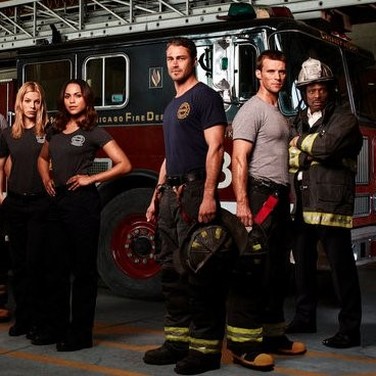
Chicago Fire is an American action-drama television series that airs on NBC and was created by Michael Brandt and Derek Haas with Dick Wolf serving as an executive producer.
The series originally premiered on October 10, 2012. The show follows the lives of the firefighters and paramedics working at the Chicago Fire Department at the firehouse of Engine 51, Truck 81, Squad 3, Ambulance 61 and Battalion 25.
The pilot episode had an early release at NBC.com, before the series' premiere on television.
On November 9, 2015, NBC renewed the series for a fifth season. The season is set to premiere on October 11, 2016.
Premise:
The show explores the lives, both professional and personal, of the firefighters and paramedics of the Chicago Fire Department at the quarters of Engine Co. 51: Truck Co. 81; Rescue Squad Co. 3; and Ambulance 61.
Following the death of veteran Firefighter Andrew Darden, loyalties fracture and divide as Lieutenant Matthew Casey (Jesse Spencer), officer-in-charge of Truck Co. 81, and Lieutenant Kelly Severide (Taylor Kinney), officer-in-charge of Squad Co. 3, both blame one another for the death of their long-time friend and colleague.
Severide is consumed with more guilt when he learns Darden's wife also blames him for the tragedy. Despite their differences, the firehouse comes together after the near death of Truck Co. 81 Firefighter Christopher Herrmann (David Eigenberg).
New to the station is Firefighter Candidate Peter Mills, the Candidate assigned to Truck Co. 81, who is following in the footsteps of his late father and trying to find his place, over the objections of his mother.
Alongside the firefighters are Paramedics Gabriela Dawson (Monica Raymund) and Leslie Shay (Lauren German), the only women in the firehouse.
Under the leadership of 25th Battalion Chief Wallace Boden (Eamonn Walker), the firehouse faces life or death decisions every day, but look to each other like family, making sure to look out for each other, no matter what happens. Chicago Fire's tagline is "This Family Burns Deep".
Chicago Med (NBC: 2015-Present)
YouTube Video: Chicago Med - Out of Options (Episode Highlight)
Chicago Med is an American medical drama television series created by Dick Wolf and Matt Olmstead as the second spin-off from Chicago Fire.
The series premiered on November 17, 2015. The show focuses on the emergency department (ED) doctors and nurses of Gaffney Chicago Medical Center and how they tackle different tasks everyday to save patients' lives.
NBC originally ordered 13 episodes for season one, however on December 11, 2015, an additional 5 episodes were ordered, bringing the season to 18 episodes.
On February 1, 2016, NBC renewed the series for a second season. On May 15, 2016, it was announced that the series would be moving to Thursdays. The season is set to premiere on September 22, 2016.
Premise:
Set in Chicago, Chicago Med is the third series in Dick Wolf's Chicago franchise. It focuses on the emergency department at Gaffney Chicago Medical Center and on its doctors and nurses as they work to save patients' lives. It sometimes intertwines with characters from Chicago Fire and Chicago P.D.
The series premiered on November 17, 2015. The show focuses on the emergency department (ED) doctors and nurses of Gaffney Chicago Medical Center and how they tackle different tasks everyday to save patients' lives.
NBC originally ordered 13 episodes for season one, however on December 11, 2015, an additional 5 episodes were ordered, bringing the season to 18 episodes.
On February 1, 2016, NBC renewed the series for a second season. On May 15, 2016, it was announced that the series would be moving to Thursdays. The season is set to premiere on September 22, 2016.
Premise:
Set in Chicago, Chicago Med is the third series in Dick Wolf's Chicago franchise. It focuses on the emergency department at Gaffney Chicago Medical Center and on its doctors and nurses as they work to save patients' lives. It sometimes intertwines with characters from Chicago Fire and Chicago P.D.
Chicago P.D. (NBC: 2014-Present)
YouTube Video: Chicago PD - Justice for Some (Episode Highlight)
Chicago P.D. is an American police procedural drama television series created by Dick Wolf and Matt Olmstead as the first spin-off from Chicago Fire. The series originally premiered on NBC as a mid-season replacement on January 8, 2014.
The show focuses on a uniformed police patrol and the Intelligence Unit of the Chicago Police Department that pursues the perpetrators of the city's major street offenses.
On November 9, 2015, NBC renewed the series for a fourth season. The season is set to premiere on September 21, 2016.
Premise:
Chicago P.D. follows the Chicago Police Department uniformed cops who patrol the beat and go head-to-head with the city’s street crimes and the detectives of the Intelligence Unit that combats the city’s major offenses, including organized crime, drug trafficking and high-profile murders.
The show focuses on a uniformed police patrol and the Intelligence Unit of the Chicago Police Department that pursues the perpetrators of the city's major street offenses.
On November 9, 2015, NBC renewed the series for a fourth season. The season is set to premiere on September 21, 2016.
Premise:
Chicago P.D. follows the Chicago Police Department uniformed cops who patrol the beat and go head-to-head with the city’s street crimes and the detectives of the Intelligence Unit that combats the city’s major offenses, including organized crime, drug trafficking and high-profile murders.
CSI: Miami (CBS: 2002-2012)
YouTube: CSI: Miami Best of Season 10 New 2017
CSI: Miami (Crime Scene Investigation: Miami) is an American police procedural drama television series that premiered on September 23, 2002, on CBS. Starring David Caruso as Lieutenant Horatio Caine, Emily Procter as Detective Calleigh Duquesne, and Kim Delaney as Lieutenant Megan Donner, the series is the first direct spin-off of CSI: Crime Scene Investigation, "transplanting the same template and trickery — gory crimes, procedural plot and dazzling graphics — into [a new city] while retaining the essence of the original idea".
CSI: Miami is executive produced by Carol Mendelsohn, Anthony E. Zuiker, and Ann Donahue, with the latter acting as show-runner. The series ended on April 8, 2012, after 10 seasons and 232 episodes.
Following the series finale, Nina Tassler credited CSI: Miami as a "key player in CBS's rise to the top", stating that the series "leaves an amazing television legacy – a signature look and style [and] global popularity".
In 2006, BBC News published an article stating that CSI: Miami was the world's most popular television series, featuring in more countries' top ten rankings for 2005 than any other series.
Premise:
CSI: Miami follows a group of detectives assigned to the Miami-Dade Police Department's Crime Scene Investigations, an elite unit operating out of the "(fictional) Miami Dade police headquarters, with its eerie blue light and flickering screens".
The team is led by Lieutenant Horatio Caine (David Caruso), who, through his history as a bomb-disposal expert, has gained specialized knowledge in explosive forensics. Horatio believes that "evil is" and lives "between the perpetrators of this evil and the people who try and come between that evil and the citizen".
In his pursuit of justice, he has proven that "he can handle himself on the street and he's not a person to be messed with" The New York Sun has described Caine as an amalgam of "the spirits of all the laconic American law men who preceded him", while The New York Post describes Caine's partner Detective Calleigh Duquesne (Emily Procter) as "a bilingual Southern beauty with a specialty in ballistics".
Together, Horatio and Calleigh head a team of forensic investigators that includes:
The team is assisted by:
During their investigations, the team cooperate with both allies and nemeses, including Internal Affairs Lieutenant Rick Stetler (David Lee Smith), States Attorney Rebecca Nevins (Christina Chang), Medical Examiner Tom Loman (Christian Clemenson), and newly-minted detective Sam Owens (Taylor Cole).
CSI: Miami is executive produced by Carol Mendelsohn, Anthony E. Zuiker, and Ann Donahue, with the latter acting as show-runner. The series ended on April 8, 2012, after 10 seasons and 232 episodes.
Following the series finale, Nina Tassler credited CSI: Miami as a "key player in CBS's rise to the top", stating that the series "leaves an amazing television legacy – a signature look and style [and] global popularity".
In 2006, BBC News published an article stating that CSI: Miami was the world's most popular television series, featuring in more countries' top ten rankings for 2005 than any other series.
Premise:
CSI: Miami follows a group of detectives assigned to the Miami-Dade Police Department's Crime Scene Investigations, an elite unit operating out of the "(fictional) Miami Dade police headquarters, with its eerie blue light and flickering screens".
The team is led by Lieutenant Horatio Caine (David Caruso), who, through his history as a bomb-disposal expert, has gained specialized knowledge in explosive forensics. Horatio believes that "evil is" and lives "between the perpetrators of this evil and the people who try and come between that evil and the citizen".
In his pursuit of justice, he has proven that "he can handle himself on the street and he's not a person to be messed with" The New York Sun has described Caine as an amalgam of "the spirits of all the laconic American law men who preceded him", while The New York Post describes Caine's partner Detective Calleigh Duquesne (Emily Procter) as "a bilingual Southern beauty with a specialty in ballistics".
Together, Horatio and Calleigh head a team of forensic investigators that includes:
- Lieutenant Megan Donner (Kim Delaney), conceived as "a strong woman [who could] duplicate the chemistry that Caruso displayed with Marg Helgenberger" during Cross Jurisdictions
- Detective Eric Delko (Adam Rodriguez), an underwater recovery expert,
- Walter Simmons (Omar Miller), a Detective who forces the "CSIs to do more science and research instead of relying on databases",
- Los Angeles Police-transfer Jesse Cardoza (Eddie Cibrian), former FBI agent Natalia Boa Vista (Eva LaRue),
- and Ryan Wolfe (Jonathan Togo), a master of genetics recruited following the death of Detective Timothy Speedle (Rory Cochrane).
The team is assisted by:
- Medical Examiner Alexx Woods (Khandi Alexander), who began her career as Medical Examiner in New York and her replacement Tara Price (Megalyn Echikunwoke),
- Miami Dade Police Sergeant Frank Tripp (Rex Linn),
- and Horatio's sister-in-law, Detective Yelina Salas (Sofia Milos).
During their investigations, the team cooperate with both allies and nemeses, including Internal Affairs Lieutenant Rick Stetler (David Lee Smith), States Attorney Rebecca Nevins (Christina Chang), Medical Examiner Tom Loman (Christian Clemenson), and newly-minted detective Sam Owens (Taylor Cole).
CSI: NY (CBS 2004-2013)
YouTube Video of CSI: NY Trailer
CSI: NY (Crime Scene Investigation: New York) is an American police procedural television series that ran on CBS from September 22, 2004 to February 22, 2013, for a total of nine seasons and 197 original episodes.
The show follows the investigations of a team of NYPD forensic scientists and police officers identified as "Crime Scene Investigators" (instead of the actual title of "Crime Scene Unit Forensic Technicians" (CSU)) as they unveil the circumstances behind mysterious and unusual deaths, as well as other crimes.
The series is an indirect spin-off from the veteran series CSI: Crime Scene Investigation and a direct spin-off from CSI: Miami, during an episode in which several of the CSI: NY characters made their first appearances. It is the third series in the CSI franchise.
Originally in 2004, CSI: NY was produced in partnership with the Canadian media company Alliance Atlantis. The company dissolved after season three in 2007, and all production after that was done under the purview of CBS Paramount Television.
The show was filmed at the CBS Studio Center, with many of the outside scenes shot in and around Los Angeles. Occasionally, scenes were filmed on location in New York City.
The series ended its ninth and final season on February 22, 2013. It was canceled by CBS on May 10, 2013.
Premise:
CSI: NY follows a group of investigators who work for the New York City crime lab. The series mixes gritty subject matter and deduction in the same manner as its predecessors, yet also places a great deal of emphasis on criminal profiling.
The team is led by Detective Mac Taylor (Gary Sinise), a former Marine from Chicago. Mac is a veteran of the NYPD who lost his wife on 9/11, and as such must work to rebuild his personal life while supervising his team.
He is organized, efficient, dedicated, and very proper in his management style. Mac's partner is originally Stella Bonasera (Melina Kanakaredes). Stella is half-Greek, half-Italian, and entirely New York City. She helped Mac through the impact of his wife's death and has been by his side ever since. She is a savvy investigator, yet she often speaks before she thinks.
Stella leaves New York to head a crime lab in New Orleans and is replaced by Detective Jo Danville (Sela Ward). Jo is a former FBI criminalist and an experienced psychological profiler. Mac and she quickly form a strong friendship and an even stronger working rapport.
Jo is still haunted by her ousting from the FBI after pulling the plug on improper lab procedure, so works to regain her professional reputation.
Together, Mac, Stella, and Jo head an elite team of detectives including,
The show follows the investigations of a team of NYPD forensic scientists and police officers identified as "Crime Scene Investigators" (instead of the actual title of "Crime Scene Unit Forensic Technicians" (CSU)) as they unveil the circumstances behind mysterious and unusual deaths, as well as other crimes.
The series is an indirect spin-off from the veteran series CSI: Crime Scene Investigation and a direct spin-off from CSI: Miami, during an episode in which several of the CSI: NY characters made their first appearances. It is the third series in the CSI franchise.
Originally in 2004, CSI: NY was produced in partnership with the Canadian media company Alliance Atlantis. The company dissolved after season three in 2007, and all production after that was done under the purview of CBS Paramount Television.
The show was filmed at the CBS Studio Center, with many of the outside scenes shot in and around Los Angeles. Occasionally, scenes were filmed on location in New York City.
The series ended its ninth and final season on February 22, 2013. It was canceled by CBS on May 10, 2013.
Premise:
CSI: NY follows a group of investigators who work for the New York City crime lab. The series mixes gritty subject matter and deduction in the same manner as its predecessors, yet also places a great deal of emphasis on criminal profiling.
The team is led by Detective Mac Taylor (Gary Sinise), a former Marine from Chicago. Mac is a veteran of the NYPD who lost his wife on 9/11, and as such must work to rebuild his personal life while supervising his team.
He is organized, efficient, dedicated, and very proper in his management style. Mac's partner is originally Stella Bonasera (Melina Kanakaredes). Stella is half-Greek, half-Italian, and entirely New York City. She helped Mac through the impact of his wife's death and has been by his side ever since. She is a savvy investigator, yet she often speaks before she thinks.
Stella leaves New York to head a crime lab in New Orleans and is replaced by Detective Jo Danville (Sela Ward). Jo is a former FBI criminalist and an experienced psychological profiler. Mac and she quickly form a strong friendship and an even stronger working rapport.
Jo is still haunted by her ousting from the FBI after pulling the plug on improper lab procedure, so works to regain her professional reputation.
Together, Mac, Stella, and Jo head an elite team of detectives including,
- Danny Messer (Carmine Giovinazzo),
- Aiden Burn (Vanessa Ferlito),
- and Lindsay Monroe (Anna Belknap)
- CSI Sheldon Hawkes (Hill Harper),
- Detective Don Flack (Eddie Cahill),
- Medical Examiner Sid Hammerback,
- and CSI trainee Adam Ross (A. J. Buckley)
Law & Order Criminal Intent (NBC: 2001-2007 and USA Network: 2007-2011)
YouTube Video: Law & Order Criminal Intent Season 2 Trailer
Law & Order: Criminal Intent is an American police procedural television drama series set in New York City, where it was also primarily produced. Created and produced by Dick Wolf and René Balcer, the series premiered on September 30, 2001, as the second spin-off of Wolf's successful crime drama Law & Order.
Criminal Intent focuses on the investigations of the Major Case Squad in a fictionalized version of the New York City Police Department set in New York City's One Police Plaza. In the style of the original Law & Order, episodes are often "ripped from the headlines" or loosely based on a real crime that received media attention.
The series aired on NBC for the first six seasons but was moved to the NBC Universal-owned USA Network starting with the seventh season to share costs and due to declining ratings.
During its NBC run, each episode aired on USA the week after its original NBC airing. The 10th and final season premiered on Sunday, May 1, 2011 with original cast members Vincent D'Onofrio and Kathryn Erbe starring as Detectives Robert Goren and Alexandra Eames, respectively, and featuring Jay O. Sanders as Captain Joseph Hannah. The series ended on June 26, 2011, after 10 seasons comprising 195 episodes.
Premise:
Criminal Intent follows a division of the New York City Police Department, the "Major Case Squad". The Major Case Squad investigates high-profile cases (in most cases, murder) such as those involving VIPs, local government officials and employees, the financial industry, and the art world.
Unlike the other shows in the Law & Order franchise, during Seasons 5–8, Criminal Intentepisodes typically alternated between two teams of detectives: Robert Goren and Alexandra Eames alternating with veteran Detective Mike Logan and his partners, Carolyn Barek, Megan Wheeler, and Nola Falacci; after Season 7, Mike Logan retired from the NYPD and was replaced with Detective Zack Nichols.
Seasons 1-4 and 10 feature Goren and Eames as the primary detectives in every episode. Season 9 features only Zack Nichols and his new partner Serena Stevens.
The series pays attention to the actions and motives of the criminals, rather than focusing exclusively on the police and prosecutions. A feature of each Criminal Intent episode is that the cold open always involves a series of cut-scenes that show events from the suspects' and victims' lives, leading up to the crime.
Clues to the crime's eventual solution can often be found in this teaser sequence. Unlike other Law & Order series, most Criminal Intent episodes end in confessions rather than continuing to the trial phase.
Criminal Intent focuses on the investigations of the Major Case Squad in a fictionalized version of the New York City Police Department set in New York City's One Police Plaza. In the style of the original Law & Order, episodes are often "ripped from the headlines" or loosely based on a real crime that received media attention.
The series aired on NBC for the first six seasons but was moved to the NBC Universal-owned USA Network starting with the seventh season to share costs and due to declining ratings.
During its NBC run, each episode aired on USA the week after its original NBC airing. The 10th and final season premiered on Sunday, May 1, 2011 with original cast members Vincent D'Onofrio and Kathryn Erbe starring as Detectives Robert Goren and Alexandra Eames, respectively, and featuring Jay O. Sanders as Captain Joseph Hannah. The series ended on June 26, 2011, after 10 seasons comprising 195 episodes.
Premise:
Criminal Intent follows a division of the New York City Police Department, the "Major Case Squad". The Major Case Squad investigates high-profile cases (in most cases, murder) such as those involving VIPs, local government officials and employees, the financial industry, and the art world.
Unlike the other shows in the Law & Order franchise, during Seasons 5–8, Criminal Intentepisodes typically alternated between two teams of detectives: Robert Goren and Alexandra Eames alternating with veteran Detective Mike Logan and his partners, Carolyn Barek, Megan Wheeler, and Nola Falacci; after Season 7, Mike Logan retired from the NYPD and was replaced with Detective Zack Nichols.
Seasons 1-4 and 10 feature Goren and Eames as the primary detectives in every episode. Season 9 features only Zack Nichols and his new partner Serena Stevens.
The series pays attention to the actions and motives of the criminals, rather than focusing exclusively on the police and prosecutions. A feature of each Criminal Intent episode is that the cold open always involves a series of cut-scenes that show events from the suspects' and victims' lives, leading up to the crime.
Clues to the crime's eventual solution can often be found in this teaser sequence. Unlike other Law & Order series, most Criminal Intent episodes end in confessions rather than continuing to the trial phase.
NCIS (CBS 2003-Present)
YouTube Video: Gibbs Shows 'Em Who's Boss On NCIS
Pictured: From Left to Right: Leon Vance (Rocky Carroll), Jimmy Palmer (Brian Dietzen), Abby Sciuto (Pauley Perrette), Anthony DiNozzo (Michael Weatherly), Leroy Jethro Gibbs (Mark Harmon), Eleanor Bishop (Emily Wickersham), Timothy McGee (Sean Murray), and Dr. Donald Mallard (David McCallum)
NCIS is an American action police procedural television series, revolving around a fictional team of special agents from the Naval Criminal Investigative Service, which investigates crimes involving the U.S. Navy and Marine Corps.
The concept and characters were initially introduced in two episodes of the CBS series JAG (season eight episodes 20 and 21: "Ice Queen" and "Meltdown"). The show, a spin-off from JAG, premiered on September 23, 2003, on CBS. To date it has aired for thirteen full seasons and has gone into broadcast syndication on the USA Network and Cloo.
Donald P. Bellisario and Don McGill are co-creators and executive producers of the premiere member of the NCIS franchise. It is the second longest-running scripted, non-animated U.S. primetime TV series currently airing, surpassed only by Law & Order: Special Victims Unit (1999–present), and is the 15th longest-running scripted U.S. primetime TV series overall.
NCIS was originally referred to as Navy NCIS during season one; "Navy" was later dropped from the title as it was redundant (the "N" in "NCIS" stands for "Naval"). In season 6, a two-part episode led to a spin-off series, NCIS: Los Angeles. A two-part episode in season 11 led to a second spin-off series, NCIS: New Orleans.
While initially slow in the ratings, barely cracking the Top 30 in the first four seasons, by season 6 it became a Top 5 hit and has been in the Top 5 since. In 2011, NCIS was voted America's favorite television show. The series finished its tenth season as the most-watched television series in the U.S. during the 2012–13 TV season.
On February 29, 2016, NCIS was renewed for its fourteenth and fifteenth seasons. Season fourteen will premiere on September 20, 2016, while Duane Henry, Jennifer Esposito, and Wilmer Valderrama will join the cast as series regulars.
Premise:
NCIS follows a fictional team of Naval Criminal Investigative Service Major Case Response Team (MCRT) special agents based at the Washington, D.C. field office in Washington Navy Yard, Washington, D.C.
In real life, the field office is based at the nearby Joint Base Anacostia-Bolling while the Navy Yard is home to the museum and several military commands within the Department of the Navy.
It is described by the actors and producers (on special features on DVD releases in the United States) as being distinguished by its comedic elements, ensemble acting, and character-driven plots. The NCIS is the primary law enforcement and counterintelligence arm of the United States Department of the Navy, which includes the United States Marine Corps.
NCIS investigates all major criminal offenses (felonies) – for example, crimes punishable under the Uniform Code of Military Justice by confinement of more than one year – within the Department of the Navy.
The MCRT is frequently assigned to high-profile cases such as the death of the U.S. president's military aide, a bomb situation on a U.S. Navy warship, the death of a celebrity on a reality show set on a U.S. Marine Corps base, terrorist threats involving U.S Naval and Marine Corps weapons, personnel and/or installations, and kidnappings of Navy and Marine Corps personnel and/or their dependents.
Plot:
Whenever a crime is committed involving Navy or Marine personnel, the Washington-based Major Case Response Team - an elite arm of the Naval Criminal Investigative Service - spearheads the investigation. Led by laconic investigator Leroy Jethro Gibbs (Mark Harmon), the team is composed of former Secret Service agent Caitlin Todd (Sasha Alexander), Anthony DiNozzo (Michael Weatherly), a former Baltimore Homicide Detective, M.I.T. graduate Timothy McGee (Sean Murray), and Eleanor Bishop (Emily Wickersham), an NSA analyst turned NCIS operative.
Over the course of the series, the team are assisted by allies both foreign and domestic, including Special Agent Ziva David (Cote de Pablo), a former Israeli Mossad Officer, Chief Medical Examiner Dr. Donald Mallard (David McCallum), nicknamed "Ducky", and his assistant Jimmy Palmer (Brian Dietzen), and forensic scientist Abby Sciuto (Pauley Perrette).
Together, they work under the NCIS Director: initially Thomas Morrow, then former career agent Jennifer Shepard (Lauren Holly), who was murdered during an off-the-book investigation, and finally her replacement Leon Vance (Rocky Carroll).
The concept and characters were initially introduced in two episodes of the CBS series JAG (season eight episodes 20 and 21: "Ice Queen" and "Meltdown"). The show, a spin-off from JAG, premiered on September 23, 2003, on CBS. To date it has aired for thirteen full seasons and has gone into broadcast syndication on the USA Network and Cloo.
Donald P. Bellisario and Don McGill are co-creators and executive producers of the premiere member of the NCIS franchise. It is the second longest-running scripted, non-animated U.S. primetime TV series currently airing, surpassed only by Law & Order: Special Victims Unit (1999–present), and is the 15th longest-running scripted U.S. primetime TV series overall.
NCIS was originally referred to as Navy NCIS during season one; "Navy" was later dropped from the title as it was redundant (the "N" in "NCIS" stands for "Naval"). In season 6, a two-part episode led to a spin-off series, NCIS: Los Angeles. A two-part episode in season 11 led to a second spin-off series, NCIS: New Orleans.
While initially slow in the ratings, barely cracking the Top 30 in the first four seasons, by season 6 it became a Top 5 hit and has been in the Top 5 since. In 2011, NCIS was voted America's favorite television show. The series finished its tenth season as the most-watched television series in the U.S. during the 2012–13 TV season.
On February 29, 2016, NCIS was renewed for its fourteenth and fifteenth seasons. Season fourteen will premiere on September 20, 2016, while Duane Henry, Jennifer Esposito, and Wilmer Valderrama will join the cast as series regulars.
Premise:
NCIS follows a fictional team of Naval Criminal Investigative Service Major Case Response Team (MCRT) special agents based at the Washington, D.C. field office in Washington Navy Yard, Washington, D.C.
In real life, the field office is based at the nearby Joint Base Anacostia-Bolling while the Navy Yard is home to the museum and several military commands within the Department of the Navy.
It is described by the actors and producers (on special features on DVD releases in the United States) as being distinguished by its comedic elements, ensemble acting, and character-driven plots. The NCIS is the primary law enforcement and counterintelligence arm of the United States Department of the Navy, which includes the United States Marine Corps.
NCIS investigates all major criminal offenses (felonies) – for example, crimes punishable under the Uniform Code of Military Justice by confinement of more than one year – within the Department of the Navy.
The MCRT is frequently assigned to high-profile cases such as the death of the U.S. president's military aide, a bomb situation on a U.S. Navy warship, the death of a celebrity on a reality show set on a U.S. Marine Corps base, terrorist threats involving U.S Naval and Marine Corps weapons, personnel and/or installations, and kidnappings of Navy and Marine Corps personnel and/or their dependents.
Plot:
Whenever a crime is committed involving Navy or Marine personnel, the Washington-based Major Case Response Team - an elite arm of the Naval Criminal Investigative Service - spearheads the investigation. Led by laconic investigator Leroy Jethro Gibbs (Mark Harmon), the team is composed of former Secret Service agent Caitlin Todd (Sasha Alexander), Anthony DiNozzo (Michael Weatherly), a former Baltimore Homicide Detective, M.I.T. graduate Timothy McGee (Sean Murray), and Eleanor Bishop (Emily Wickersham), an NSA analyst turned NCIS operative.
Over the course of the series, the team are assisted by allies both foreign and domestic, including Special Agent Ziva David (Cote de Pablo), a former Israeli Mossad Officer, Chief Medical Examiner Dr. Donald Mallard (David McCallum), nicknamed "Ducky", and his assistant Jimmy Palmer (Brian Dietzen), and forensic scientist Abby Sciuto (Pauley Perrette).
Together, they work under the NCIS Director: initially Thomas Morrow, then former career agent Jennifer Shepard (Lauren Holly), who was murdered during an off-the-book investigation, and finally her replacement Leon Vance (Rocky Carroll).
NCIS: Los Angeles (CBS: 2009 to Present)
YouTube Video of Best Densi/Kensi+Deeks Moments - NCIS Los Angeles
Pictured from Left to Right: NCIS Assistant Director Owen Granger (Miguel Ferrer), Agent Kensi Blye (Daniela Ruah), LAPD liaison officer Marty Deeks (Eric Christian Olsen), Intelligence Analyst Nell Jones (Renee Felice Smith), Special Agent G. Callen (Chris O'Donnell), Operational Manager Henrietta Lange (Linda Hunt), a hand-to-hand combat specialist and forensic whiz, Sam Hanna (LL Cool J), and technical analyst Eric Beale (Barrett Foa)
NCIS: Los Angeles is an American action television series combining elements of the military drama and police procedural genres, which premiered on the CBS network on September 22, 2009.
The series follows the exploits of the Los Angeles-based Office of Special Projects (OSP), an elite division of the Naval Criminal Investigative Service that specializes in undercover assignments.
NCIS: Los Angeles is the first spin-off of the successful series NCIS.
On March 25, 2016, CBS renewed the series for an eighth season, which is set to premiere on October 2, 2016.
Premise:
NCIS: Los Angeles follows Special Agent G. Callen (Chris O'Donnell), a "legend" assigned to the fictional Naval Criminal Investigative Service branch known as the Office of Special Projects (OSP).
Callen leads an elite team of undercover operatives as they battle enemies both foreign and domestic under the watchful eye of Operational Manager Henrietta Lange (Linda Hunt).
The team is composed of Agent Kensi Blye (Daniela Ruah), a hand-to-hand combat specialist and forensic whiz, Sam Hanna (LL Cool J), a former Navy Seal and G's partner, and technical analyst Eric Beale (Barrett Foa).
Over the course of the series, the team are assisted by allies from both NCIS and its local counterparts, including LAPD liaison officer Marty Deeks (Eric Christian Olsen), Intelligence Analyst Nell Jones (Renee Felice Smith), Operational Psychologist Nate Getz (Peter Cambor), and rookie field agent Dominic Vail (Adam Jamal Craig), all of whom work side-by-side with NCIS Assistant Director Owen Granger (Miguel Ferrer), a laconic agent and skilled bureaucrat.
The series follows the exploits of the Los Angeles-based Office of Special Projects (OSP), an elite division of the Naval Criminal Investigative Service that specializes in undercover assignments.
NCIS: Los Angeles is the first spin-off of the successful series NCIS.
On March 25, 2016, CBS renewed the series for an eighth season, which is set to premiere on October 2, 2016.
Premise:
NCIS: Los Angeles follows Special Agent G. Callen (Chris O'Donnell), a "legend" assigned to the fictional Naval Criminal Investigative Service branch known as the Office of Special Projects (OSP).
Callen leads an elite team of undercover operatives as they battle enemies both foreign and domestic under the watchful eye of Operational Manager Henrietta Lange (Linda Hunt).
The team is composed of Agent Kensi Blye (Daniela Ruah), a hand-to-hand combat specialist and forensic whiz, Sam Hanna (LL Cool J), a former Navy Seal and G's partner, and technical analyst Eric Beale (Barrett Foa).
Over the course of the series, the team are assisted by allies from both NCIS and its local counterparts, including LAPD liaison officer Marty Deeks (Eric Christian Olsen), Intelligence Analyst Nell Jones (Renee Felice Smith), Operational Psychologist Nate Getz (Peter Cambor), and rookie field agent Dominic Vail (Adam Jamal Craig), all of whom work side-by-side with NCIS Assistant Director Owen Granger (Miguel Ferrer), a laconic agent and skilled bureaucrat.
NCIS: New Orleans (CBS 2014-Present)
YouTube Video: NCIS: New Orleans - Aloha
Pictured: LEFT to RIGHT: Dr. Loretta Wade (C. C. H. Pounder), Chris LaSalle (Lucas Black), Meredith Brody (Zoe McLellan) and Special Agent Dwayne Cassius Pride (Scott Bakula)
NCIS: New Orleans is an American television series combining elements of the military drama and police procedural genres that premiered on Tuesday, September 23, 2014, following its parent series NCIS.
The pilot was written by Gary Glasberg. The series' executive producers are Glasberg, Mark Harmon, Jeffrey Lieber, and James Hayman. The series is set and filmed in New Orleans. It is the third member of the NCIS franchise.
On January 12, 2015, NCIS: New Orleans was renewed for a second season, that premiered on September 22, 2015. Daryl Mitchell and Shalita Grant, who had been recurring cast members, became series regulars.
On March 25, 2016, CBS renewed the series for a third season, which is set to premiere on September 20, 2016. Zoe McLellan, who plays Agent Brody will leave "for creative reasons", and Vanessa Ferlito will join the cast as Special Agent Tammy Gregorio, a series regular.
Premise:
NCIS: New Orleans follows a fictional team of Naval Criminal Investigative Service (NCIS) agents stationed out of New Orleans, Louisiana. The NCIS office handles cases from the Mississippi River to the Texas Panhandle.
Living and working out of his office, Special Agent Dwayne Cassius Pride (Scott Bakula) heads a small team of special agents consisting of Chris LaSalle (Lucas Black), Meredith Brody (Zoe McLellan), Sonja Percy (Shalita Grant), and Patton Plame (Daryl Mitchell).
LaSalle, a former police detective who was recruited by Pride from the New Orleans Police Department, is a ladies' man who lives and breathes law enforcement; Brody, a transfer from the NCIS Great Lakes field office, has worked as a Special Agent Afloat and is keen to leave her past behind as she moves to New Orleans; Percy is a former ATF Special Agent and the team's newest member; and Plame is a computer specialist.
They are assisted by Dr. Loretta Wade (C. C. H. Pounder), a forensic pathologist and medical examiner, and Sebastian Lund (Rob Kerkovich), a criminalist and forensic investigator assigned to the Jefferson Parish Medical Examiner's Office.
The pilot was written by Gary Glasberg. The series' executive producers are Glasberg, Mark Harmon, Jeffrey Lieber, and James Hayman. The series is set and filmed in New Orleans. It is the third member of the NCIS franchise.
On January 12, 2015, NCIS: New Orleans was renewed for a second season, that premiered on September 22, 2015. Daryl Mitchell and Shalita Grant, who had been recurring cast members, became series regulars.
On March 25, 2016, CBS renewed the series for a third season, which is set to premiere on September 20, 2016. Zoe McLellan, who plays Agent Brody will leave "for creative reasons", and Vanessa Ferlito will join the cast as Special Agent Tammy Gregorio, a series regular.
Premise:
NCIS: New Orleans follows a fictional team of Naval Criminal Investigative Service (NCIS) agents stationed out of New Orleans, Louisiana. The NCIS office handles cases from the Mississippi River to the Texas Panhandle.
Living and working out of his office, Special Agent Dwayne Cassius Pride (Scott Bakula) heads a small team of special agents consisting of Chris LaSalle (Lucas Black), Meredith Brody (Zoe McLellan), Sonja Percy (Shalita Grant), and Patton Plame (Daryl Mitchell).
LaSalle, a former police detective who was recruited by Pride from the New Orleans Police Department, is a ladies' man who lives and breathes law enforcement; Brody, a transfer from the NCIS Great Lakes field office, has worked as a Special Agent Afloat and is keen to leave her past behind as she moves to New Orleans; Percy is a former ATF Special Agent and the team's newest member; and Plame is a computer specialist.
They are assisted by Dr. Loretta Wade (C. C. H. Pounder), a forensic pathologist and medical examiner, and Sebastian Lund (Rob Kerkovich), a criminalist and forensic investigator assigned to the Jefferson Parish Medical Examiner's Office.
Alfred Hitchcock Presents (CBS & NBC: 1955-1962)
Video -- Alfred Hitchcock Presents: "Lamb to the Slaughter" (1958)
Alfred Hitchcock Presents is an American television anthology series hosted by Alfred Hitchcock, which aired on CBS and NBC between 1955 and 1965. It featured dramas, thrillers, and mysteries.
By the time it premiered on October 2, 1955, Hitchcock had been directing films for over three decades. Time magazine named it one of "The 100 Best TV Shows of all time". The Writers Guild of America ranked it #79 on their list of the 101 Best-Written TV Series tying it with Monty Python's Flying Circus, Star Trek: The Next Generation and Upstairs, Downstairs.
A series of literary anthologies with the running title Alfred Hitchcock Presents were issued to capitalize on the success of the television series. One volume, devoted to stories that censors wouldn't allow to be adapted for broadcast, was entitled Alfred Hitchcock Presents: Stories They Wouldn't Let Me Do on TV—though eventually several of the stories collected were adapted.
Click on any of the following blue hyperlinks for further amplification:
By the time it premiered on October 2, 1955, Hitchcock had been directing films for over three decades. Time magazine named it one of "The 100 Best TV Shows of all time". The Writers Guild of America ranked it #79 on their list of the 101 Best-Written TV Series tying it with Monty Python's Flying Circus, Star Trek: The Next Generation and Upstairs, Downstairs.
A series of literary anthologies with the running title Alfred Hitchcock Presents were issued to capitalize on the success of the television series. One volume, devoted to stories that censors wouldn't allow to be adapted for broadcast, was entitled Alfred Hitchcock Presents: Stories They Wouldn't Let Me Do on TV—though eventually several of the stories collected were adapted.
Click on any of the following blue hyperlinks for further amplification:
- History
- 1985 revival
- Guest stars and other actors
- Directors
- Broadcast history
- Episodes
- DVD releases
- In other media
- Further reading
- External links
Starsky and Hutch (ABC: 1975-1979)
YouTube Video: Starsky & Hutch to the song "When You Know" by Shawn Colvin
Pictured: LEFT-RIGHT: David Soul (Hutch) and Paul Michael Glaser (Starsky)
Starsky & Hutch is an American cop thriller television series, which consisted of a 70-minute pilot movie (originally aired as a Movie of the Week entry) and 92 episodes of 50 minutes each.
The show was created by William Blinn, produced by Spelling-Goldberg Productions, and broadcast from April 1975 to May 1979 on the ABC network.
It was distributed by Columbia Pictures Television in the United States and, originally, Metromedia Producers Corporation in Canada and some other parts of the world.
Sony Pictures Television is now the worldwide distributor for the series. The series also inspired a theatrical film and a video game.
Overview:
The series' protagonists were two Southern California police detectives: David Michael Starsky (Paul Michael Glaser), the dark-haired, Brooklyn transplant and U.S. Army veteran, with a street-wise manner and intense, sometimes childlike moodiness; and Kenneth "Hutch" Hutchinson (David Soul), the divorced, blond, Duluth, Minnesota native with a more reserved and intellectual approach.
Under the radio call sign "Zebra Three", they were known for usually tearing around the streets of fictional "Bay City, California". The vehicle of choice was Starsky's two-door Ford Gran Torino, which was bright red, with a large white vector stripe on both sides. They used around four different cars for filming.
Earlier shots had red wing mirrors usually for long shots or footage used in later episodes, close ups and later episodes had silver wing mirrors. The Torino was nicknamed the "Striped Tomato" by Hutch in the episode "Snowstorm", and fans subsequently referred to the car by that nickname, too. However, this moniker didn't come from the writers, it came from a real-life comment that Glaser made.
In a segment titled Starsky & Hutch: Behind The Badge that was featured on the first season DVD collection, Glaser stated that when he was first shown the Torino by series producer Aaron Spelling, he sarcastically said to Soul, "That thing looks like a striped tomato!"
In characteristic contrast, Hutch's vehicle was a battered, tan, 1973 Ford Galaxie 500. It occasionally appeared when the duo needed separate vehicles, or for undercover work.
However, the duo's cover was often blown because Hutch's vehicle had a bad habit; when its driver's side door was opened, the horn would go off, instantly drawing attention. It was also noticeable due to the severely cluttered back seat, so cluttered that there was no room to transport both prisoners and the two detectives simultaneously.
The detectives' main confidential informant was the street-wise, ethically ambiguous, "jive-talking" Huggy Bear (Antonio Fargas), who often dressed in a flashy manner and operated his own bar (first named "Huggy Bear's", and later, "The Pits").
The duo's boss was the gruff, no-nonsense-but-fair Captain Harold C. Dobey (Bernie Hamilton in the series, and gravel-voiced Richard Ward in the pilot, only). Starsky and Hutch continued the 1960s trend in some prime-time, U.S. TV dramas of portraying African-Americans (e.g., Huggy Bear, Capt. Dobey) in a positive light.
Huggy's immense popularity with viewers caused producers Spelling and Goldberg to consider giving actor Fargas his own TV series. The second-season episode "Huggy Bear and the Turkey" was the test pilot for a proposed spin off with Huggy and his friend, former Sheriff "Turkey" Turquet (Dale Robinette) becoming private investigators; however, this premise proved unpopular with viewers, and a spinoff never materialized.
In the episode it was revealed that Huggy's last name is Brown (no clue as to his first name was given, though). Two series characters were named for people from William Blinn's past: Starsky was the name of a high school friend, and Huggy Bear was a local disc jockey.
Series creator William Blinn first used the name Huggy Bear on-screen for a character, also a confidential informant, in an episode penned by Blinn for the TV series "The Rookies", during the 1973 second season, "Prayers Unanswered Prayers Unheard", there played by actor Johnny Brown.
The show was created by William Blinn, produced by Spelling-Goldberg Productions, and broadcast from April 1975 to May 1979 on the ABC network.
It was distributed by Columbia Pictures Television in the United States and, originally, Metromedia Producers Corporation in Canada and some other parts of the world.
Sony Pictures Television is now the worldwide distributor for the series. The series also inspired a theatrical film and a video game.
Overview:
The series' protagonists were two Southern California police detectives: David Michael Starsky (Paul Michael Glaser), the dark-haired, Brooklyn transplant and U.S. Army veteran, with a street-wise manner and intense, sometimes childlike moodiness; and Kenneth "Hutch" Hutchinson (David Soul), the divorced, blond, Duluth, Minnesota native with a more reserved and intellectual approach.
Under the radio call sign "Zebra Three", they were known for usually tearing around the streets of fictional "Bay City, California". The vehicle of choice was Starsky's two-door Ford Gran Torino, which was bright red, with a large white vector stripe on both sides. They used around four different cars for filming.
Earlier shots had red wing mirrors usually for long shots or footage used in later episodes, close ups and later episodes had silver wing mirrors. The Torino was nicknamed the "Striped Tomato" by Hutch in the episode "Snowstorm", and fans subsequently referred to the car by that nickname, too. However, this moniker didn't come from the writers, it came from a real-life comment that Glaser made.
In a segment titled Starsky & Hutch: Behind The Badge that was featured on the first season DVD collection, Glaser stated that when he was first shown the Torino by series producer Aaron Spelling, he sarcastically said to Soul, "That thing looks like a striped tomato!"
In characteristic contrast, Hutch's vehicle was a battered, tan, 1973 Ford Galaxie 500. It occasionally appeared when the duo needed separate vehicles, or for undercover work.
However, the duo's cover was often blown because Hutch's vehicle had a bad habit; when its driver's side door was opened, the horn would go off, instantly drawing attention. It was also noticeable due to the severely cluttered back seat, so cluttered that there was no room to transport both prisoners and the two detectives simultaneously.
The detectives' main confidential informant was the street-wise, ethically ambiguous, "jive-talking" Huggy Bear (Antonio Fargas), who often dressed in a flashy manner and operated his own bar (first named "Huggy Bear's", and later, "The Pits").
The duo's boss was the gruff, no-nonsense-but-fair Captain Harold C. Dobey (Bernie Hamilton in the series, and gravel-voiced Richard Ward in the pilot, only). Starsky and Hutch continued the 1960s trend in some prime-time, U.S. TV dramas of portraying African-Americans (e.g., Huggy Bear, Capt. Dobey) in a positive light.
Huggy's immense popularity with viewers caused producers Spelling and Goldberg to consider giving actor Fargas his own TV series. The second-season episode "Huggy Bear and the Turkey" was the test pilot for a proposed spin off with Huggy and his friend, former Sheriff "Turkey" Turquet (Dale Robinette) becoming private investigators; however, this premise proved unpopular with viewers, and a spinoff never materialized.
In the episode it was revealed that Huggy's last name is Brown (no clue as to his first name was given, though). Two series characters were named for people from William Blinn's past: Starsky was the name of a high school friend, and Huggy Bear was a local disc jockey.
Series creator William Blinn first used the name Huggy Bear on-screen for a character, also a confidential informant, in an episode penned by Blinn for the TV series "The Rookies", during the 1973 second season, "Prayers Unanswered Prayers Unheard", there played by actor Johnny Brown.
Grey's Anatomy (ABC: 2007-Present)
YouTube Video: Grey's Anatomy "Best Scene"
Grey's Anatomy is an American medical drama television series that premiered on American Broadcasting Company (ABC) as a mid-season replacement on March 27, 2005.
The series focuses on the fictional lives of surgical interns, residents, and attendings as they gradually evolve into seasoned doctors, while trying to maintain personal lives and relationships.
The title is a play on Gray's Anatomy, a human anatomy textbook by Henry Gray. The show's premise originated with Shonda Rhimes, who serves as an executive producer, along with Betsy Beers, Mark Gordon, Krista Vernoff, Rob Corn, Mark Wilding, and Allan Heinberg.
Although the show is set in Seattle at the fictional Grey-Sloan Memorial Hospital (Formerly Seattle Grace-Mercy West) it is primarily filmed in Los Angeles, California. The show was originally titled Complications following the complicated medical procedures and personal lives of the cast.
The series was created to be racially diverse, utilizing a color-blind casting technique. It revolves around the title character Dr. Meredith Grey played by Ellen Pompeo.
The series' original cast consisted of nine star billed cast members including Ellen Pompeo, Sandra Oh, Katherine Heigl, Justin Chambers, T. R. Knight, Chandra Wilson, James Pickens Jr., Isaiah Washington and Patrick Dempsey.
The cast has undergone major changes throughout the run of the show, with many major cast members leaving and being replaced by several new characters. The series in its twelfth season had a large ensemble of sixteen actors, including four from the original cast. On March 3, 2016, ABC renewed Grey's Anatomy for a thirteenth season, scheduled to premiere on September 22, 2016.
Grey's Anatomy is one of the highest-rated dramas in the 18–49 demographic. Although the ratings have fallen over the past few seasons, it was once among the overall top 10 shows in the United States.
Grey's Anatomy has been well received by critics, considered an impact on culture, the series has received numerous awards, and has also been included in various critics' top ten lists. It is the recipient of the 2007 Golden Globe Award for Best Television Series — Drama, and multiple Emmy nominations, including two for Outstanding Drama Series. The show has produced several specials, as well as distributed all seasons to DVD, and released a collection of merchandise.
In 2012, Grey's Anatomy was named the fifth-highest revenue earning show, in terms of advertising per half-hour. It's the longest running scripted prime time show currently airing on ABC and the second longest scripted primetime show ever on ABC only behind The Adventures of Ozzie and Harriet.
The series focuses on the fictional lives of surgical interns, residents, and attendings as they gradually evolve into seasoned doctors, while trying to maintain personal lives and relationships.
The title is a play on Gray's Anatomy, a human anatomy textbook by Henry Gray. The show's premise originated with Shonda Rhimes, who serves as an executive producer, along with Betsy Beers, Mark Gordon, Krista Vernoff, Rob Corn, Mark Wilding, and Allan Heinberg.
Although the show is set in Seattle at the fictional Grey-Sloan Memorial Hospital (Formerly Seattle Grace-Mercy West) it is primarily filmed in Los Angeles, California. The show was originally titled Complications following the complicated medical procedures and personal lives of the cast.
The series was created to be racially diverse, utilizing a color-blind casting technique. It revolves around the title character Dr. Meredith Grey played by Ellen Pompeo.
The series' original cast consisted of nine star billed cast members including Ellen Pompeo, Sandra Oh, Katherine Heigl, Justin Chambers, T. R. Knight, Chandra Wilson, James Pickens Jr., Isaiah Washington and Patrick Dempsey.
The cast has undergone major changes throughout the run of the show, with many major cast members leaving and being replaced by several new characters. The series in its twelfth season had a large ensemble of sixteen actors, including four from the original cast. On March 3, 2016, ABC renewed Grey's Anatomy for a thirteenth season, scheduled to premiere on September 22, 2016.
Grey's Anatomy is one of the highest-rated dramas in the 18–49 demographic. Although the ratings have fallen over the past few seasons, it was once among the overall top 10 shows in the United States.
Grey's Anatomy has been well received by critics, considered an impact on culture, the series has received numerous awards, and has also been included in various critics' top ten lists. It is the recipient of the 2007 Golden Globe Award for Best Television Series — Drama, and multiple Emmy nominations, including two for Outstanding Drama Series. The show has produced several specials, as well as distributed all seasons to DVD, and released a collection of merchandise.
In 2012, Grey's Anatomy was named the fifth-highest revenue earning show, in terms of advertising per half-hour. It's the longest running scripted prime time show currently airing on ABC and the second longest scripted primetime show ever on ABC only behind The Adventures of Ozzie and Harriet.
Mannix (CBS: 1967-1975)
YouTube Video of scenes from Mannix TV Series.
Pictured: Scenes from Mannix starring Mike Connors
Mannix was an American television detective series that ran from 1967 to 1975 on CBS. Created by Richard Levinson and William Link and developed by executive producer Bruce Geller, the title character, Joe Mannix, is a private investigator. He is played by Mike Connors. Mannix was the last series produced by Desilu Productions.
Premise:
During the first season of the series, Joe Mannix worked for a large Los Angeles detective agency called Intertect, which was the planned original title of the show.
His superior was Lew Wickersham, played by Joseph Campanella, with the agency featuring the use of computers to help solve crimes. As opposed to the other employees who must wear dark suits and sit in rows of desks with only one piece of paper allowed to be on their desks at one time, Mannix belongs to the classic American detective archetype, thus usually ignores the computers' solutions, disobeys his boss's orders, and sets out to do things his own way.
He wears plaid sport coats and has his own office that he keeps sloppy between his assignments. Lew has cameras in all the rooms of Intertect monitoring the performance of his employees and providing instant feedback through intercoms in the room. Unlike the other Intertect operatives, Mannix attempts to block the camera with a coat rack and insults Lew, comparing him to Big Brother.
From the second season on, Mannix worked on his own with the assistance of his loyal secretary Peggy Fair, a police officer's widow played by Gail Fisher – one of the first African American actresses to have a regular series role.
He also has assistance from the L.A. police department, the two most prominent officers being Lieutenant Art Malcolm (portrayed by Ward Wood) and Lieutenant Adam Tobias (portrayed by Robert Reed). Other police contacts were Lieutenant George Kramer (Larry Linville), who had been the partner of Peggy's late husband, and Lieutenant Dan Ives (Jack Ging).
While Mannix was not generally known as a show that explored socially relevant topics, several episodes had topical themes, starting in season two, which had episodes featuring compulsive gambling, deaf and blind characters who were instrumental in solving cases in spite of their physical limitations, and episodes that focused on racism against Blacks and Hispanics.
Season six had an episode focusing on the effects the Vietnam War had on returning veterans, including the effects of PTSD.
In the 1969 season, he also employed the services of a competitive private investigator, Albie Loos (performed by Joe Mantell), as a sort of investigative gofer. In the 1972 season, Albie returned, played by a different actor (Milton Selzer).
Reception:
For his work on Mannix, Mike Connors was nominated for four Golden Globe Awards, winning once, and for four Emmy Awards. Gail Fisher was nominated for four Emmy Awards, winning once, and for three Golden Globe Awards, winning twice.
The series was twice nominated for the Emmy Award for Best Dramatic Series, and four times for the Golden Globe Award, winning once. In 1972, writer Mann Rubin won an Edgar Award from the Mystery Writers of America for the episode "A Step in Time".
Premise:
During the first season of the series, Joe Mannix worked for a large Los Angeles detective agency called Intertect, which was the planned original title of the show.
His superior was Lew Wickersham, played by Joseph Campanella, with the agency featuring the use of computers to help solve crimes. As opposed to the other employees who must wear dark suits and sit in rows of desks with only one piece of paper allowed to be on their desks at one time, Mannix belongs to the classic American detective archetype, thus usually ignores the computers' solutions, disobeys his boss's orders, and sets out to do things his own way.
He wears plaid sport coats and has his own office that he keeps sloppy between his assignments. Lew has cameras in all the rooms of Intertect monitoring the performance of his employees and providing instant feedback through intercoms in the room. Unlike the other Intertect operatives, Mannix attempts to block the camera with a coat rack and insults Lew, comparing him to Big Brother.
From the second season on, Mannix worked on his own with the assistance of his loyal secretary Peggy Fair, a police officer's widow played by Gail Fisher – one of the first African American actresses to have a regular series role.
He also has assistance from the L.A. police department, the two most prominent officers being Lieutenant Art Malcolm (portrayed by Ward Wood) and Lieutenant Adam Tobias (portrayed by Robert Reed). Other police contacts were Lieutenant George Kramer (Larry Linville), who had been the partner of Peggy's late husband, and Lieutenant Dan Ives (Jack Ging).
While Mannix was not generally known as a show that explored socially relevant topics, several episodes had topical themes, starting in season two, which had episodes featuring compulsive gambling, deaf and blind characters who were instrumental in solving cases in spite of their physical limitations, and episodes that focused on racism against Blacks and Hispanics.
Season six had an episode focusing on the effects the Vietnam War had on returning veterans, including the effects of PTSD.
In the 1969 season, he also employed the services of a competitive private investigator, Albie Loos (performed by Joe Mantell), as a sort of investigative gofer. In the 1972 season, Albie returned, played by a different actor (Milton Selzer).
Reception:
For his work on Mannix, Mike Connors was nominated for four Golden Globe Awards, winning once, and for four Emmy Awards. Gail Fisher was nominated for four Emmy Awards, winning once, and for three Golden Globe Awards, winning twice.
The series was twice nominated for the Emmy Award for Best Dramatic Series, and four times for the Golden Globe Award, winning once. In 1972, writer Mann Rubin won an Edgar Award from the Mystery Writers of America for the episode "A Step in Time".
Matlock (NBC: 1986-1992; ABC: 1992-1995)
YouTube Video from Matlock: The Fatal Seduction
Matlock is an American television legal drama, starring Andy Griffith in the title role of criminal-defense attorney Ben Matlock.
The show, produced by Intermedia Entertainment Company (first season only), The Fred Silverman Company, Dean Hargrove Productions, Viacom Productions, and Paramount Television (season 9 only), originally aired from March 3, 1986, to May 8, 1992, on NBC; and from November 5, 1992, until May 7, 1995, on ABC.
The show's format is similar to that of CBS's Perry Mason (with both Matlock and the later Perry Mason TV movies in the 1980s created by Dean Hargrove), with Matlock identifying the perpetrators and then confronting them in dramatic courtroom scenes.
One difference, however, was that whereas Mason usually exculpated his clients at a pretrial hearing, Matlock usually secured an acquittal at trial, from the jury.
Premise:
The show centers on widower Benjamin Leighton "Ben" Matlock, a renowned, folksy and popular though cantankerous attorney. Usually, at the end of the case, the person who is on the stand being questioned by Matlock is the actual perpetrator, and Matlock will expose him, despite making clear that his one goal is to prove reasonable doubt in the case of his client's guilt or to prove his client's innocence.
Matlock studied law at Harvard, and after several years as a public defender, established his law practice in Atlanta, living in a modest farmhouse in a neighboring suburb. He is known to visit crime scenes to discover clues otherwise overlooked and come up with viable, alternative theories of the crime in question (usually murder).
Matlock also has conspicuously finicky fashion sense; he generally appears in court wearing a trademark light gray suit and, over the series' entire run, owned three generations of the Ford Crown Victoria—always an all-gray model (Griffith's character had always driven Ford products in his 1960s series, The Andy Griffith Show).
Matlock is noted for his thrift and a fondness for hot dogs. In episode 158 ("The diner") we learn that hot dogs have been his favorite dish since he was a young man.
In contrast, after the series ended, his penchant for hot dogs was explained in the 1997 episode "Murder Two" of Joyce Burditt's Diagnosis: Murder. Matlock blames Dr. Mark Sloan (Dick Van Dyke) for recommending a disastrous investment in 8-track cartridges, in which he lost his savings of $5,000 in 1969, forcing him into wearing cheap suits and living on hot dogs.
Despite his thrift, Matlock's standard fee is $100,000, usually paid up front, but if he or his staff believe strongly enough in the innocence of a client, or if the client is unable to pay immediately (if at all), he will have them pay over time, or will reduce the fee significantly or waive it entirely, albeit reluctantly in some cases.
He will also, reluctantly, take a pro bono case occasionally. These traits, and the demands he placed upon his investigators, are often points of comic relief in the series.
Main Cast:
Click on any of the following blue hyplinks for additional information:
The show, produced by Intermedia Entertainment Company (first season only), The Fred Silverman Company, Dean Hargrove Productions, Viacom Productions, and Paramount Television (season 9 only), originally aired from March 3, 1986, to May 8, 1992, on NBC; and from November 5, 1992, until May 7, 1995, on ABC.
The show's format is similar to that of CBS's Perry Mason (with both Matlock and the later Perry Mason TV movies in the 1980s created by Dean Hargrove), with Matlock identifying the perpetrators and then confronting them in dramatic courtroom scenes.
One difference, however, was that whereas Mason usually exculpated his clients at a pretrial hearing, Matlock usually secured an acquittal at trial, from the jury.
Premise:
The show centers on widower Benjamin Leighton "Ben" Matlock, a renowned, folksy and popular though cantankerous attorney. Usually, at the end of the case, the person who is on the stand being questioned by Matlock is the actual perpetrator, and Matlock will expose him, despite making clear that his one goal is to prove reasonable doubt in the case of his client's guilt or to prove his client's innocence.
Matlock studied law at Harvard, and after several years as a public defender, established his law practice in Atlanta, living in a modest farmhouse in a neighboring suburb. He is known to visit crime scenes to discover clues otherwise overlooked and come up with viable, alternative theories of the crime in question (usually murder).
Matlock also has conspicuously finicky fashion sense; he generally appears in court wearing a trademark light gray suit and, over the series' entire run, owned three generations of the Ford Crown Victoria—always an all-gray model (Griffith's character had always driven Ford products in his 1960s series, The Andy Griffith Show).
Matlock is noted for his thrift and a fondness for hot dogs. In episode 158 ("The diner") we learn that hot dogs have been his favorite dish since he was a young man.
In contrast, after the series ended, his penchant for hot dogs was explained in the 1997 episode "Murder Two" of Joyce Burditt's Diagnosis: Murder. Matlock blames Dr. Mark Sloan (Dick Van Dyke) for recommending a disastrous investment in 8-track cartridges, in which he lost his savings of $5,000 in 1969, forcing him into wearing cheap suits and living on hot dogs.
Despite his thrift, Matlock's standard fee is $100,000, usually paid up front, but if he or his staff believe strongly enough in the innocence of a client, or if the client is unable to pay immediately (if at all), he will have them pay over time, or will reduce the fee significantly or waive it entirely, albeit reluctantly in some cases.
He will also, reluctantly, take a pro bono case occasionally. These traits, and the demands he placed upon his investigators, are often points of comic relief in the series.
Main Cast:
- Andy Griffith as Ben Matlock
- Linda Purl as Charlene Matlock (season 1), Ben's younger daughter who became a partner to her father before she moved to Philadelphia to set up her own law practice
- Kene Holliday as Tyler Hudson (seasons 1–3), Ben's first private investigator
- Kari Lizer as Cassie Phillips (season 2), Ben's young file clerk who desired to become partner after Charlene's departure
- Nancy Stafford as Michelle Thomas (seasons 2–6), an American lawyer living in London who becomes an equal partner to Matlock
- Julie Sommars as Julie March (seasons 3–6), a district attorney who becomes a good friend to Ben Matlock
- Clarence Gilyard Jr. as Conrad McMasters (seasons 4–7), Ben's second private investigator who is a former deputy sheriff and a rodeo rider
- Brynn Thayer as Leanne MacIntyre (seasons 7–8), Ben's older daughter who works for her father after Michelle's departure
- Daniel Roebuck as Cliff Lewis (seasons 7–9), Ben's last partner and private investigator who graduated from law school, the son of Ben's childhood friend, Billy Lewis
- Carol Huston as Jerri Stone (season 9), Ben's last assistant and private investigator with a talent for singing lullabies
Click on any of the following blue hyplinks for additional information:
Medium (NBC:2005-2009 and CBS: 2009-2011)
YouTube Video: TV Series, Medium, CBS
Medium is an American television drama series that premiered on NBC on January 3, 2005, ending its run on that network on June 1, 2009. The series then moved to CBS on September 25, 2009, airing its final episode overall on January 21, 2011.
Themed on supernatural gifts, its lead character, Allison DuBois (played by Patricia Arquette), is a medium employed as a consultant for the Phoenix, Arizona district attorney's office. Allison and her husband Joe (Jake Weber) are the parents of three daughters, all of whom inherited Allison's gift. The show was initially based on the experiences of medium Allison DuBois, who claims she has worked with law enforcement agencies across the country in criminal investigations.
Medium was created by Glenn Gordon Caron and was produced by his company Picturemaker Productions and Kelsey Grammer's Grammnet Productions in association with Paramount Network Television from 2005–06, CBS Paramount Network Television from 2006–09 (after the split of Viacom and CBS Corporation), and finally CBS Television Studios from 2009 until the series ended.
The series aired on NBC during its first five seasons before switching to CBS for the sixth and seventh seasons. The production division of CBS had assumed production of Medium in 2006 after absorbing the television arm of the Paramount Pictures film studio.
Paramount's home entertainment arm still held DVD distribution rights in conjunction with CBS DVD.
On December 21, 2010, CBS announced that the show had been canceled after seven seasons. The series finale aired exactly a month later.
Premise:
Allison DuBois (Patricia Arquette), a mother of three, has the gift of being able to talk to dead people, as well as foresee events and witness past events in her dreams. When she begins working for Phoenix District Attorney Manuel Devalos (Miguel Sandoval) as an intern, she has a dream related to a murder in Texas, the successful solving of which convinces Devalos and others working in the D.A.'s office – as well as herself and her husband Joe (Jake Weber) – that her gift is real.
One challenge is convincing Devalos — and other doubters in the criminal justice system — that her psychic abilities can give them the upper hand when it comes to solving crimes. Information comes to her in dreams or in cryptic visions that sometimes do not mean what they initially suggest. The other is convincing Joe that her nightmares are visions based in reality and that she's not simply neurotic.
In police investigations, Allison often accompanies Det. Lee Scanlon (David Cubitt), who initially did not believe in her gift. Allison sometimes bends the rules when she is determined to stop a crime about which she has had a vision.
Additionally, Allison has helped and been helped by Captain Kenneth Push of the Texas Rangers (Arliss Howard), the first law-enforcement person to whom Allison revealed her gift, and Cynthia Keener (Anjelica Huston) of AmeriTips, a nationwide private detective agency. In season four, it was revealed that Cynthia had a missing daughter. Allison's dreams showed that Cynthia's daughter was dead.
Cynthia made a choice to kill the murderer of her daughter and go to prison. Cynthia later appeared in season five to help Allison on a case. Also during this season, it was revealed that Lynn DiNovi (Tina DiJoseph), Lee's live-in lover and an assistant to the Mayor of Phoenix, had become pregnant with Lee's child.
In the season five finale, Allison discovers that she has a tumor on her brainstem. To prevent the brutal murders of her family in the future, Allison risked her life as she postponed the critical surgery fearing it would prevent her from solving the case. During her operation the tumor was successfully removed, except for a small piece deeply embedded in her brainstem, Joe is told that Allison is in a coma and may not survive.
Click on any of the following hyperlinks for amplification:
Themed on supernatural gifts, its lead character, Allison DuBois (played by Patricia Arquette), is a medium employed as a consultant for the Phoenix, Arizona district attorney's office. Allison and her husband Joe (Jake Weber) are the parents of three daughters, all of whom inherited Allison's gift. The show was initially based on the experiences of medium Allison DuBois, who claims she has worked with law enforcement agencies across the country in criminal investigations.
Medium was created by Glenn Gordon Caron and was produced by his company Picturemaker Productions and Kelsey Grammer's Grammnet Productions in association with Paramount Network Television from 2005–06, CBS Paramount Network Television from 2006–09 (after the split of Viacom and CBS Corporation), and finally CBS Television Studios from 2009 until the series ended.
The series aired on NBC during its first five seasons before switching to CBS for the sixth and seventh seasons. The production division of CBS had assumed production of Medium in 2006 after absorbing the television arm of the Paramount Pictures film studio.
Paramount's home entertainment arm still held DVD distribution rights in conjunction with CBS DVD.
On December 21, 2010, CBS announced that the show had been canceled after seven seasons. The series finale aired exactly a month later.
Premise:
Allison DuBois (Patricia Arquette), a mother of three, has the gift of being able to talk to dead people, as well as foresee events and witness past events in her dreams. When she begins working for Phoenix District Attorney Manuel Devalos (Miguel Sandoval) as an intern, she has a dream related to a murder in Texas, the successful solving of which convinces Devalos and others working in the D.A.'s office – as well as herself and her husband Joe (Jake Weber) – that her gift is real.
One challenge is convincing Devalos — and other doubters in the criminal justice system — that her psychic abilities can give them the upper hand when it comes to solving crimes. Information comes to her in dreams or in cryptic visions that sometimes do not mean what they initially suggest. The other is convincing Joe that her nightmares are visions based in reality and that she's not simply neurotic.
In police investigations, Allison often accompanies Det. Lee Scanlon (David Cubitt), who initially did not believe in her gift. Allison sometimes bends the rules when she is determined to stop a crime about which she has had a vision.
Additionally, Allison has helped and been helped by Captain Kenneth Push of the Texas Rangers (Arliss Howard), the first law-enforcement person to whom Allison revealed her gift, and Cynthia Keener (Anjelica Huston) of AmeriTips, a nationwide private detective agency. In season four, it was revealed that Cynthia had a missing daughter. Allison's dreams showed that Cynthia's daughter was dead.
Cynthia made a choice to kill the murderer of her daughter and go to prison. Cynthia later appeared in season five to help Allison on a case. Also during this season, it was revealed that Lynn DiNovi (Tina DiJoseph), Lee's live-in lover and an assistant to the Mayor of Phoenix, had become pregnant with Lee's child.
In the season five finale, Allison discovers that she has a tumor on her brainstem. To prevent the brutal murders of her family in the future, Allison risked her life as she postponed the critical surgery fearing it would prevent her from solving the case. During her operation the tumor was successfully removed, except for a small piece deeply embedded in her brainstem, Joe is told that Allison is in a coma and may not survive.
Click on any of the following hyperlinks for amplification:
- Episodes
- Family
- Cast and characters
- Notable guest stars
- Reception
- Awards and nominations
- DVD releases
- See also
- External links
Ghost Whisperer (CBS: 2005-2010)
YouTube Video Ghost Whisperer (TV Series 2005--2010) - Official Trailer
Ghost Whisperer is an American television supernatural drama, which ran on CBS from September 23, 2005, to May 21, 2010.
The series follows the life of Melinda Gordon (Jennifer Love Hewitt), who has the ability to see and communicate with ghosts.
While trying to live a normal life as possible—she is married and owns an antique store—Melinda helps earthbound spirits resolve their problems and cross over into the light, or the spirit world. Her tasks are difficult and at times she struggles with people who push her away and disbelieve her gift.
In addition, the ghosts are mysterious and sometimes menacing in the beginning and Melinda must use the clues available to her to understand the spirits' needs and help them.
The show was created by John Gray and was produced by Sander/Moses Productions, executive producer, and Jennifer Love Hewitt in association with ABC Studios and CBS Television Studios.
On May 18, 2010, CBS canceled the show after five seasons.
Premise:
Melinda Gordon (Jennifer Love Hewitt) is a young woman from the town of Grandview, New York, who has the ability to see and communicate with the dead.
Melinda lives with her husband, Jim Clancy (David Conrad), and later their son Aiden (Connor Gibbs). She owns a shop called "Same As It Never Was Antiques".
Ghosts seek Melinda's help in relaying a message or completing a task that will put the spirit to rest, and allow them to cross over into the light. Those who died with unfinished business become earthbound and cannot cross over, and Melinda, as their earthly representative, helps them to find peace. The show does not present the ghosts as having sinned; rather it is the spirits' own guilt that condemns them, and their own fear of judgment that keeps them from "crossing over" into an afterlife.
The series also starred Aisha Tyler as Andrea Marino, Melinda's best friend, who runs the antique shop with her. Andrea is killed in the first season finale.
During the second season, Melinda meets Delia Banks (Camryn Manheim), a struggling real estate agent who forms a friendship with Melinda and who eventually agrees to run the antique shop with her. Delia is shocked to find out about Melinda's abilities; in fact, at first she claims Melinda needs psychological help. Delia eventually accepts Melinda's gift, though she remains skeptical at times. Delia has a son named Ned Banks (Tyler Patrick Jones seasons 2-3, Christoph Sanders thereafter) who finds out about Melinda's gift long before his mother does.
Melinda also forms a friendship with Rick Payne (Jay Mohr), a professor at Rockland University. He helps Melinda solve the conflicts of ghosts throughout the second and third seasons. He departs in the fourth season premiere for an expedition in the Himalayas.
Click on any of the following blue hyperlinks for amplification:
The series follows the life of Melinda Gordon (Jennifer Love Hewitt), who has the ability to see and communicate with ghosts.
While trying to live a normal life as possible—she is married and owns an antique store—Melinda helps earthbound spirits resolve their problems and cross over into the light, or the spirit world. Her tasks are difficult and at times she struggles with people who push her away and disbelieve her gift.
In addition, the ghosts are mysterious and sometimes menacing in the beginning and Melinda must use the clues available to her to understand the spirits' needs and help them.
The show was created by John Gray and was produced by Sander/Moses Productions, executive producer, and Jennifer Love Hewitt in association with ABC Studios and CBS Television Studios.
On May 18, 2010, CBS canceled the show after five seasons.
Premise:
Melinda Gordon (Jennifer Love Hewitt) is a young woman from the town of Grandview, New York, who has the ability to see and communicate with the dead.
Melinda lives with her husband, Jim Clancy (David Conrad), and later their son Aiden (Connor Gibbs). She owns a shop called "Same As It Never Was Antiques".
Ghosts seek Melinda's help in relaying a message or completing a task that will put the spirit to rest, and allow them to cross over into the light. Those who died with unfinished business become earthbound and cannot cross over, and Melinda, as their earthly representative, helps them to find peace. The show does not present the ghosts as having sinned; rather it is the spirits' own guilt that condemns them, and their own fear of judgment that keeps them from "crossing over" into an afterlife.
The series also starred Aisha Tyler as Andrea Marino, Melinda's best friend, who runs the antique shop with her. Andrea is killed in the first season finale.
During the second season, Melinda meets Delia Banks (Camryn Manheim), a struggling real estate agent who forms a friendship with Melinda and who eventually agrees to run the antique shop with her. Delia is shocked to find out about Melinda's abilities; in fact, at first she claims Melinda needs psychological help. Delia eventually accepts Melinda's gift, though she remains skeptical at times. Delia has a son named Ned Banks (Tyler Patrick Jones seasons 2-3, Christoph Sanders thereafter) who finds out about Melinda's gift long before his mother does.
Melinda also forms a friendship with Rick Payne (Jay Mohr), a professor at Rockland University. He helps Melinda solve the conflicts of ghosts throughout the second and third seasons. He departs in the fourth season premiere for an expedition in the Himalayas.
Click on any of the following blue hyperlinks for amplification:
- Cast
- Broadcast
- Other media
- Awards and nominations
- DVD releases
- International broadcasts
- International versions
- Derivations
- See also
- External links
Miami Vice (NBC: 1984-1989)
YouTube Video: Miami Vice - In the Air Tonight (1984)
Pictured: Crockett (Don Johnson) and Tubbs (Philip Michael Thomas) as the lead characters
Miami Vice is an American television crime drama series created by Anthony Yerkovich and produced by Michael Mann for NBC. The series starred Don Johnson as James "Sonny" Crockett and Philip Michael Thomas as Ricardo "Rico" Tubbs, two Metro-Dade Police Department detectives working undercover in Miami.
The series ran for five seasons on NBC from 1984 to 1989. The USA Network began airing reruns in 1988, and broadcast an originally un-aired episode during its syndication run of the series on January 25, 1990.
Unlike standard police procedurals, the show drew heavily upon 1980s New Wave culture and music. The show became noted for its integration of music and visual effects. It is recognized as one of the most influential television series of all time.
People magazine stated that Miami Vice was the "first show to look really new and different since color TV was invented".
Michael Mann directed a film adaptation of the series, which was released on July 28, 2006.
The series ran for five seasons on NBC from 1984 to 1989. The USA Network began airing reruns in 1988, and broadcast an originally un-aired episode during its syndication run of the series on January 25, 1990.
Unlike standard police procedurals, the show drew heavily upon 1980s New Wave culture and music. The show became noted for its integration of music and visual effects. It is recognized as one of the most influential television series of all time.
People magazine stated that Miami Vice was the "first show to look really new and different since color TV was invented".
Michael Mann directed a film adaptation of the series, which was released on July 28, 2006.
Monk (USA: 2002-2009.
YouTube Video of Monk and the Computer
Pictured: Tony Shalhoub as "Monk" with 10 of his worst phobias
Monk is an American comedy-drama detective mystery television series created by Andy Breckman and starring Tony Shalhoub as the eponymous character, Adrian Monk. It originally ran from 2002 to 2009 and is primarily a police procedural series, and also exhibits comic and dramatic tones in its exploration of the main characters' personal lives.
The series was produced by Mandeville Films and Touchstone Television in association with Universal Television.
The series debuted on July 12, 2002, on USA Network. It continued for eight seasons, with the final season concluding on December 4, 2009.
The series held the record for the most-watched scripted drama episode in cable television history from 2009 through 2012 (broken by The Walking Dead) with "Mr. Monk and the End – Part II", its series finale, with 9.4 million viewers, 3.2 million of them in the 18–49 demographic.
Premise:
Adrian Monk was a brilliant detective for the San Francisco Police Department until his wife, Trudy, was killed by a car bomb in a parking garage, which Monk then believed was intended for him. In a later episode, he discovers the bomb was truly meant for Trudy.
He later believes that Trudy's death was part of a larger conspiracy that she had uncovered during her time as a journalist. Trudy's death led Monk to suffer a nervous breakdown.
He was then discharged from the force and became a recluse, refusing to leave his house for three and a half years. Until the final episode, Trudy's death was Monk's only unsolved case.
He is finally able to leave the house with the help of his nurse, Sharona Fleming. The breakthrough allows him to work as a private detective and a consultant for the homicide unit despite limitations rooted in his obsessive–compulsive personality disorder (OCPD), which had grown significantly worse after the tragedy, along with several other phobias.
Monk's compulsive habits are numerous, and a number of phobias compound his situation, such as his fear of germs. Monk has 312 fears, some of which are milk, ladybugs, harmonicas, heights, imperfection, claustrophobia, driving, food touching on his plates, messes and risk. He however had a breakthrough from claustrophobia later in the series.
The OCPD and plethora of phobias inevitably lead to very awkward situations and cause problems for Monk and anyone around him as he investigates cases. These same personal struggles, particularly the OCPD, are what aid him in solving cases, such as his sharp memory, specific mindset, and attention to detail.
In one episode entitled "Mr. Monk and His Biggest Fan", Marci Maven has compiled a list of all of Adrian's fears. In another episode, he tries to conquer his fears by doing various activities which involved his phobias. For example, he tries drinking milk, climbing a ladder, and putting a ladybug on his hand, but when things are scattered unorganized across a table, he cannot resist the compulsion to arrange them neatly.
Captain Leland Stottlemeyer and Lieutenant Randy Disher call on Monk when they have trouble with an investigation. Stottlemeyer is often irritated by Monk's behavior but respects his friend and former colleague's amazing insight and observational abilities, as does Disher.
Ever since childhood, Monk's obsessive attention to detail allowed him to spot tiny discrepancies, find patterns, and make connections that others often missed. Something someone says or does usually triggers Monk to make the connection.
In his spare time, Monk continues to search for information about his wife's death, and is plagued with the idea that he may never determine who killed Trudy. He dedicates his life to solving other murders because he feels this is fixing disorder in the world. He becomes especially intrigued when a woman is killed, or when someone is killed with some type of bomb, because this reminds him of Trudy's murder.
In the middle of season three, Sharona decides to remarry her ex-husband and move back to New Jersey, prompting Mr. Monk to hire Natalie Teeger as his new assistant. Natalie is a widow and mother of an eleven-year-old daughter, Julie. Monk discovers Natalie when she is involved in a murder case herself, in "Mr. Monk and the Red Herring".
Monk has a brother Ambrose and a half-brother, Jack, Jr., whom Monk never knew about until his father tells him in season five. He later meets Jack, Jr., in the episode "Mr. Monk's Other Brother" during season seven.
Characters and Cast Members Playing Them:
The series was produced by Mandeville Films and Touchstone Television in association with Universal Television.
The series debuted on July 12, 2002, on USA Network. It continued for eight seasons, with the final season concluding on December 4, 2009.
The series held the record for the most-watched scripted drama episode in cable television history from 2009 through 2012 (broken by The Walking Dead) with "Mr. Monk and the End – Part II", its series finale, with 9.4 million viewers, 3.2 million of them in the 18–49 demographic.
Premise:
Adrian Monk was a brilliant detective for the San Francisco Police Department until his wife, Trudy, was killed by a car bomb in a parking garage, which Monk then believed was intended for him. In a later episode, he discovers the bomb was truly meant for Trudy.
He later believes that Trudy's death was part of a larger conspiracy that she had uncovered during her time as a journalist. Trudy's death led Monk to suffer a nervous breakdown.
He was then discharged from the force and became a recluse, refusing to leave his house for three and a half years. Until the final episode, Trudy's death was Monk's only unsolved case.
He is finally able to leave the house with the help of his nurse, Sharona Fleming. The breakthrough allows him to work as a private detective and a consultant for the homicide unit despite limitations rooted in his obsessive–compulsive personality disorder (OCPD), which had grown significantly worse after the tragedy, along with several other phobias.
Monk's compulsive habits are numerous, and a number of phobias compound his situation, such as his fear of germs. Monk has 312 fears, some of which are milk, ladybugs, harmonicas, heights, imperfection, claustrophobia, driving, food touching on his plates, messes and risk. He however had a breakthrough from claustrophobia later in the series.
The OCPD and plethora of phobias inevitably lead to very awkward situations and cause problems for Monk and anyone around him as he investigates cases. These same personal struggles, particularly the OCPD, are what aid him in solving cases, such as his sharp memory, specific mindset, and attention to detail.
In one episode entitled "Mr. Monk and His Biggest Fan", Marci Maven has compiled a list of all of Adrian's fears. In another episode, he tries to conquer his fears by doing various activities which involved his phobias. For example, he tries drinking milk, climbing a ladder, and putting a ladybug on his hand, but when things are scattered unorganized across a table, he cannot resist the compulsion to arrange them neatly.
Captain Leland Stottlemeyer and Lieutenant Randy Disher call on Monk when they have trouble with an investigation. Stottlemeyer is often irritated by Monk's behavior but respects his friend and former colleague's amazing insight and observational abilities, as does Disher.
Ever since childhood, Monk's obsessive attention to detail allowed him to spot tiny discrepancies, find patterns, and make connections that others often missed. Something someone says or does usually triggers Monk to make the connection.
In his spare time, Monk continues to search for information about his wife's death, and is plagued with the idea that he may never determine who killed Trudy. He dedicates his life to solving other murders because he feels this is fixing disorder in the world. He becomes especially intrigued when a woman is killed, or when someone is killed with some type of bomb, because this reminds him of Trudy's murder.
In the middle of season three, Sharona decides to remarry her ex-husband and move back to New Jersey, prompting Mr. Monk to hire Natalie Teeger as his new assistant. Natalie is a widow and mother of an eleven-year-old daughter, Julie. Monk discovers Natalie when she is involved in a murder case herself, in "Mr. Monk and the Red Herring".
Monk has a brother Ambrose and a half-brother, Jack, Jr., whom Monk never knew about until his father tells him in season five. He later meets Jack, Jr., in the episode "Mr. Monk's Other Brother" during season seven.
Characters and Cast Members Playing Them:
- Adrian Monk (Tony Shalhoub) is a former homicide detective and a current consultant for the San Francisco Police Department. He has an extreme case of OCD and is well known for his various fears and phobias, including, but certainly not limited to, heights, snakes, crowds, glaciers, rodeos and milk. His wife Trudy was murdered in 1997, and he is haunted by her death (and the fact that it was unsolved) until the series finale.
- Sharona Fleming (Bitty Schram; seasons 1–3) is Monk's nurse and later becomes his first assistant. She refuses to baby him, often forcing him to do things that are unpleasant to him. Her final appearance as a regular character is in "Mr. Monk Takes His Medicine" (3.09) and moves to New Jersey midway through season three, leaving only a note. However, she returns in the final season in "Mr. Monk and Sharona" (8.10) in order to give closure to her character. By "Mr. Monk and the End (Part Two)" (8.16), it was revealed that she and Randy have moved to New Jersey together.
- Natalie Teeger (Traylor Howard; seasons 3–8) is Monk's second and final assistant. Although she is more deferential to her boss than Sharona, referring to him as "Mr. Monk", she is not hesitant about telling him when his eccentricities are going too far. A young widow who lives with her daughter Julie, Natalie lost her husband Mitch when he was shot down over Kosovo in 1998. She first appears in "Mr. Monk and the Red Herring" (3.10). Natalie was introduced partway through season three when Bitty Schram, who played Sharona, left "precipitous[ly]", reportedly over a contract dispute. Traylor Howard had not yet seen the show and was unenthusiastic about her manager's urgings to audition as Schram's replacement. She nevertheless tried out and got the part. Despite her initial "cool" reception from fans, show co-creator Andy Breckman believes Traylor quickly and successfully filled the void. "I will always be grateful to Traylor because she came in when the show was in crisis and saved our baby […] We had to make a hurried replacement, and not every show survives that. I was scared to death."
- Captain Leland Stottlemeyer (Ted Levine) is the head of the Homicide Division of the San Francisco Police Department. He and Monk have been good friends since Monk was on the police force, and he continues to be Monk's friend throughout the series. He does his best to help Monk but is occasionally annoyed by Monk's phobias and the damage they can cause. In the first two seasons, Stottlemeyer is reluctant to work with Monk, seemingly annoyed by the idea that he could not handle his cases himself. By seasons three and four, his faith in Monk's contribution is well-cemented and his collaboration unquestionable.
- Lieutenant Randy Disher (Jason Gray-Stanford) is a lieutenant in the Homicide Division of the SFPD. He is naive and often portrayed as slightly dim. The other characters are often irritated by him, but they also care about him. In season eight he is seen kissing Sharona, and in the series finale he moves to Summit, New Jersey where they move in together. He becomes Chief of Police there.
Moonlighting (ABC: 1985-1989)
YouTube Video: Moonlighting first TV episode highlights
Pictured: Moonlighting with co-stars Bruce Willis and Cybill Shepherd featured on the covers of (Left) TV Guide and (Right) Newsweek
Moonlighting is an American television series that aired on ABC from March 3, 1985, to May 14, 1989. The network aired a total of 66 episodes (67 in syndication as the pilot is split into two episodes). Starring Cybill Shepherd and Bruce Willis as private detectives, the show was a mixture of drama, comedy, and romance, and was considered to be one of the first successful and influential examples of comedy-drama, or "dramedy", emerging as a distinct television genre.
The show's theme song was performed by jazz singer Al Jarreau and became a hit. The show is also credited with making Willis a star, while re-launching the career of Shepherd after a string of lackluster projects.
In 1997, the episode "The Dream Sequence Always Rings Twice" was ranked #34 on (the 1997) TV Guide's 100 Greatest Episodes of All Time. In 2007, the series was listed as one of Time magazine's "100 Best TV Shows of All-Time." The relationship between David and Maddie was included in TV Guide's list of the best TV couples of all time.
Premise:
The series revolved around cases investigated by the Blue Moon Detective Agency and its two partners, Madelyn "Maddie" Hayes (Shepherd) and David Addison Jr. (Willis). The show, with a mix of mystery, sharp dialogue, and sexual tension between its two leads, introduced Bruce Willis to the world and brought Cybill Shepherd back into the spotlight after a nearly decade-long absence. The characters were introduced in a two-hour pilot episode that preceded the series proper.
The show's story line begins with the reversal of fortune of Maddie Hayes, a former model who finds herself bankrupt after her accountant embezzles all of her liquid assets. She is left saddled with several failing businesses formerly maintained as tax write-offs, one of which is the City of Angels Detective Agency, helmed by the carefree David Addison.
Between the pilot and the first one-hour episode, David persuades Maddie to keep the business and run it as a partnership. The agency is renamed Blue Moon Investigations because Maddie was most famous for being the spokes model for the (fictitious) Blue Moon Shampoo Company. In many episodes, she was recognized as "the Blue Moon shampoo girl," if not by name.
In his audio commentary for the Season 3 DVD, creator Glenn Gordon Caron says that the inspiration for the series was a production of The Taming of the Shrew he saw in Central Park starring Meryl Streep and Raúl Juliá. The show would parody this Shakespeare play in the Season 3 episode Atomic Shakespeare.
Cast and Characters:
The show's theme song was performed by jazz singer Al Jarreau and became a hit. The show is also credited with making Willis a star, while re-launching the career of Shepherd after a string of lackluster projects.
In 1997, the episode "The Dream Sequence Always Rings Twice" was ranked #34 on (the 1997) TV Guide's 100 Greatest Episodes of All Time. In 2007, the series was listed as one of Time magazine's "100 Best TV Shows of All-Time." The relationship between David and Maddie was included in TV Guide's list of the best TV couples of all time.
Premise:
The series revolved around cases investigated by the Blue Moon Detective Agency and its two partners, Madelyn "Maddie" Hayes (Shepherd) and David Addison Jr. (Willis). The show, with a mix of mystery, sharp dialogue, and sexual tension between its two leads, introduced Bruce Willis to the world and brought Cybill Shepherd back into the spotlight after a nearly decade-long absence. The characters were introduced in a two-hour pilot episode that preceded the series proper.
The show's story line begins with the reversal of fortune of Maddie Hayes, a former model who finds herself bankrupt after her accountant embezzles all of her liquid assets. She is left saddled with several failing businesses formerly maintained as tax write-offs, one of which is the City of Angels Detective Agency, helmed by the carefree David Addison.
Between the pilot and the first one-hour episode, David persuades Maddie to keep the business and run it as a partnership. The agency is renamed Blue Moon Investigations because Maddie was most famous for being the spokes model for the (fictitious) Blue Moon Shampoo Company. In many episodes, she was recognized as "the Blue Moon shampoo girl," if not by name.
In his audio commentary for the Season 3 DVD, creator Glenn Gordon Caron says that the inspiration for the series was a production of The Taming of the Shrew he saw in Central Park starring Meryl Streep and Raúl Juliá. The show would parody this Shakespeare play in the Season 3 episode Atomic Shakespeare.
Cast and Characters:
- Cybill Shepherd as Maddie Hayes: Maddie Hayes is a chic and smart former high-fashion model. Left bankrupt when her accountant embezzles all of her money, she is forced to make a living by running the detective agency she had previously owned as a tax write-off. Using her celebrity as a former model, she brings in clients and tries to bring some order to a business previously run without any discipline.
- Bruce Willis as David Addison: David Addison is a cheeky chappy, fearless detective running the City of Angels Detective Agency. Faced with the prospect of being put out of business, he convinces Maddie that they have always lost money because they were supposed to and talks her into re-branding the agency and going into business with him as her partner.
- Allyce Beasley as Agnes DiPesto: Agnes DiPesto is the extremely loyal and quirky receptionist for the Blue Moon Detective Agency who always answers the phone in rhyme. In season two, it is revealed that she lives at 6338 Hope Street.
- Curtis Armstrong as Herbert Viola: Herbert Viola started at Blue Moon as an employee from a temp agency.
- Jack Blessing as MacGillicudy: MacGillicudy is a Blue Moon employee and became a foil for Herbert Viola and a rival for Agnes’s affections. Debuting in season three, he appeared in 17 of the series’ 66 episodes.
Ironside (NBC: 1967-1975)
YouTube Video Ironside 1967 - 1975 Opening and Closing Theme
Ironside is an American television crime drama that aired on NBC from 1967 to 1975. The show starred Raymond Burr as Robert T. Ironside, a consultant for the San Francisco Police who was paralyzed from the waist down after being shot in the line of duty.
The character debuted on March 28, 1967, in a TV movie called "A Man Called Ironside". When the show was broadcast in the United Kingdom, it was initially under that same title.
The show earned Burr six Emmy and two Golden Globe nominations.
Ironside was a production of Burr's Harbour Productions Unlimited in association with Universal Television.
Premise:
The show revolved around former San Francisco Police Department (SFPD) Chief of Detectives Robert T. Ironside (Raymond Burr), a veteran of more than 20 years of police service who was forced to retire from the department after a sniper's bullet, to the spine, paralyzed him from the waist down, resulting in him having to use a wheelchair.
In the pilot episode, a TV movie, Ironside shows his strength of character and gets himself appointed a "special department consultant" by his good friend, Police Commissioner Dennis Randall. He does this by calling a press conference and then tricking Commissioner Randall into meeting his terms. In the pilot, Ironside eventually solves the mystery of the ambush. He requests Ed Brown and Eve Whitfield be assigned to him.
Ironside uses a fourth-floor room (for living and office space) in the Old San Francisco Hall Of Justice building, which housed the city's police headquarters.
He uses a specially equipped, former fleet-modified 1940 1½ ton Ford police paddy wagon van. This is replaced in the episode entitled "Poole's Paradise" after the van is destroyed by Sergeant Brown as part of a way to trick a corrupt sheriff. At the end of the episode the paddy wagon is replaced by a modified 1969 1 ton Ford Econoline Window Van.
He later recruits the angst-filled black ex-con Mark Sanger to be his personal assistant after Sanger is brought in as a suspect who wanted to kill Ironside. The show became a success as Ironside depended on brains and initiative in handling cases. Although Ironside was good-hearted and honest, he maintained a gruff persona.
Supporting characters on Ironside included Det. Sgt. Edward "Ed" Brown (Don Galloway) and a young socialite-turned-plainclothes officer, Eve Whitfield (Barbara Anderson). In addition there was delinquent-turned-bodyguard/assistant Mark Sanger (Don Mitchell), who also opted to become a police officer, and subsequently graduated from law school (night classes were mentioned from early on), then even married late in the run of the series. Commissioner Randall was played by Gene Lyons.
By the program's fourth season, Anderson left over a contract dispute and was replaced by another young policewoman, Fran Belding (Elizabeth Baur), who filled much the same role for four more years.
The series enjoyed an eight-season run on NBC, drawing respectable, if not always high, ratings. As the eighth season began, Universal released a syndicated rerun package of episodes from earlier seasons under the title The Raymond Burr Show, reflecting the practice of that time to differentiate original network episodes from syndicated reruns whenever possible. Upon NBC's mid-season cancellation, however, the syndicated episodes reverted to the Ironside title.
The character debuted on March 28, 1967, in a TV movie called "A Man Called Ironside". When the show was broadcast in the United Kingdom, it was initially under that same title.
The show earned Burr six Emmy and two Golden Globe nominations.
Ironside was a production of Burr's Harbour Productions Unlimited in association with Universal Television.
Premise:
The show revolved around former San Francisco Police Department (SFPD) Chief of Detectives Robert T. Ironside (Raymond Burr), a veteran of more than 20 years of police service who was forced to retire from the department after a sniper's bullet, to the spine, paralyzed him from the waist down, resulting in him having to use a wheelchair.
In the pilot episode, a TV movie, Ironside shows his strength of character and gets himself appointed a "special department consultant" by his good friend, Police Commissioner Dennis Randall. He does this by calling a press conference and then tricking Commissioner Randall into meeting his terms. In the pilot, Ironside eventually solves the mystery of the ambush. He requests Ed Brown and Eve Whitfield be assigned to him.
Ironside uses a fourth-floor room (for living and office space) in the Old San Francisco Hall Of Justice building, which housed the city's police headquarters.
He uses a specially equipped, former fleet-modified 1940 1½ ton Ford police paddy wagon van. This is replaced in the episode entitled "Poole's Paradise" after the van is destroyed by Sergeant Brown as part of a way to trick a corrupt sheriff. At the end of the episode the paddy wagon is replaced by a modified 1969 1 ton Ford Econoline Window Van.
He later recruits the angst-filled black ex-con Mark Sanger to be his personal assistant after Sanger is brought in as a suspect who wanted to kill Ironside. The show became a success as Ironside depended on brains and initiative in handling cases. Although Ironside was good-hearted and honest, he maintained a gruff persona.
Supporting characters on Ironside included Det. Sgt. Edward "Ed" Brown (Don Galloway) and a young socialite-turned-plainclothes officer, Eve Whitfield (Barbara Anderson). In addition there was delinquent-turned-bodyguard/assistant Mark Sanger (Don Mitchell), who also opted to become a police officer, and subsequently graduated from law school (night classes were mentioned from early on), then even married late in the run of the series. Commissioner Randall was played by Gene Lyons.
By the program's fourth season, Anderson left over a contract dispute and was replaced by another young policewoman, Fran Belding (Elizabeth Baur), who filled much the same role for four more years.
The series enjoyed an eight-season run on NBC, drawing respectable, if not always high, ratings. As the eighth season began, Universal released a syndicated rerun package of episodes from earlier seasons under the title The Raymond Burr Show, reflecting the practice of that time to differentiate original network episodes from syndicated reruns whenever possible. Upon NBC's mid-season cancellation, however, the syndicated episodes reverted to the Ironside title.
The O.C. (Fox: 2003-2007)
YouTube Video: Great Scenes from the O.C. Season 2
Pictured: L-R: Tate Donovan, Melinda Clarke, Adam Brody (seated), Peter Gallagher (standing), Mischa Barton, Benjamin McKensie, Rachel Bilson, Kelly Rowan and Alan Dale
The O.C. is an American teen drama television series created by Josh Schwartz that originally aired on the Fox network in the United States from August 5, 2003, to February 22, 2007, running a total of four seasons. "O.C." is an abbreviation of "Orange County".
The series centers on Ryan Atwood, a troubled but tough young man from a broken home who is adopted by the wealthy and philanthropic Sandy and Kirsten Cohen. Ryan and his foster brother Seth, a socially awkward yet quick-witted teenager, deal with life as outsiders in the high-class world of Newport Beach.
Ryan and Seth spend much time navigating their relationships with girl-next-door Marissa Cooper, Seth's childhood crush Summer Roberts, and the fast-talking loner Taylor Townsend.
Story lines deal with the culture clash between the idealistic Cohen family and the shallow, materialistic, and closed-minded community in which they reside. The series includes elements of postmodernism, and functions as a mixture of melodrama and comedy.
The series premiered with high ratings and was one of the most popular new dramas of the 2003–2004 television season. It was widely referred to as a pop cultural phenomenon and received mostly positive reception from critics.
However, ratings declined as the show went on. The low ratings led to its cancellation in early 2007, even after an online petition that gained over 700,000 signatures.
The O.C. has been broadcast in more than fifty countries worldwide. The series has also been released on DVD, as well as on iTunes.
Click on any of the following blue hyperlinks for further amplification about The O.C.:
The series centers on Ryan Atwood, a troubled but tough young man from a broken home who is adopted by the wealthy and philanthropic Sandy and Kirsten Cohen. Ryan and his foster brother Seth, a socially awkward yet quick-witted teenager, deal with life as outsiders in the high-class world of Newport Beach.
Ryan and Seth spend much time navigating their relationships with girl-next-door Marissa Cooper, Seth's childhood crush Summer Roberts, and the fast-talking loner Taylor Townsend.
Story lines deal with the culture clash between the idealistic Cohen family and the shallow, materialistic, and closed-minded community in which they reside. The series includes elements of postmodernism, and functions as a mixture of melodrama and comedy.
The series premiered with high ratings and was one of the most popular new dramas of the 2003–2004 television season. It was widely referred to as a pop cultural phenomenon and received mostly positive reception from critics.
However, ratings declined as the show went on. The low ratings led to its cancellation in early 2007, even after an online petition that gained over 700,000 signatures.
The O.C. has been broadcast in more than fifty countries worldwide. The series has also been released on DVD, as well as on iTunes.
Click on any of the following blue hyperlinks for further amplification about The O.C.:
American Crime Story: The People v. O. J. Simpson (FX: 2016-Present)
YouTube Video from American Crime Story Season 1 First Trailer (HD)
American Crime Story is an American true crime anthology television series developed by Scott Alexander and Larry Karaszewski, who are executive producers with Brad Falchuk, Nina Jacobson, Ryan Murphy, and Brad Simpson.
It is a spin-off of the television series American Horror Story, also by Falchuk and Murphy. It premiered on the cable network FX in the United States on February 2, 2016.
Similar to American Horror Story, each season is presented as a self-contained miniseries, following separate unrelated true events.
The first season, subtitled The People v. O. J. Simpson, presents the murder trial of O. J. Simpson, based on Jeffrey Toobin's book The Run of His Life: The People v. O. J. Simpson: See below
A second season is in development, and it will focus on the aftermath of Hurricane Katrina, relying on Douglas Brinkley's book The Great Deluge: Hurricane Katrina, New Orleans, and the Mississippi Gulf Coast as the primary source material.
Series creators Alexander and Karaszewski will not be returning for the second season.
The third season, which is also in development, will examine the assassination of legendary designer Gianni Versace by serial killer Andrew Cunanan, based on Maureen Orth's book Vulgar Favors: Andrew Cunanan, Gianni Versace, and the Largest Failed Manhunt in U.S. History.
The fourth season, in development as well, will analyse the Bill Clinton sex scandal and the ensuing events during his presidency, based on Toobin's book A Vast Conspiracy: The Real Sex Scandal That Nearly Brought Down a President.
In January 2017, it was announced the second season would not premiere until 2018 due to the source material, while the third will air within six months from the second airing.
Click here for more about The American Crime Story TV Series.
___________________________________________________________________________
The People v. O. J. Simpson: American Crime Story: is the first season of the FX true crime anthology television series American Crime Story (above).
The season, which debuted on February 2, 2016, revolves around the infamous O. J. Simpson murder case and is based on Jeffrey Toobin's book The Run of His Life: The People v. O.J. Simpson (1997).
The People v. O.J. Simpson was acclaimed, receiving praise for most of the performances, directing and writing.
For the 68th Primetime Emmy Awards, the season received 22 Primetime Emmy Award nominations, in 13 categories, winning nine, more than any other show including Outstanding Limited Series.
It also won the Golden Globe Awards for Best Miniseries or Television Film and Best Actress – Miniseries or Television Film for Sarah Paulson.
Click here for more about The People v. O. J. Simpson: American Crime Story
It is a spin-off of the television series American Horror Story, also by Falchuk and Murphy. It premiered on the cable network FX in the United States on February 2, 2016.
Similar to American Horror Story, each season is presented as a self-contained miniseries, following separate unrelated true events.
The first season, subtitled The People v. O. J. Simpson, presents the murder trial of O. J. Simpson, based on Jeffrey Toobin's book The Run of His Life: The People v. O. J. Simpson: See below
A second season is in development, and it will focus on the aftermath of Hurricane Katrina, relying on Douglas Brinkley's book The Great Deluge: Hurricane Katrina, New Orleans, and the Mississippi Gulf Coast as the primary source material.
Series creators Alexander and Karaszewski will not be returning for the second season.
The third season, which is also in development, will examine the assassination of legendary designer Gianni Versace by serial killer Andrew Cunanan, based on Maureen Orth's book Vulgar Favors: Andrew Cunanan, Gianni Versace, and the Largest Failed Manhunt in U.S. History.
The fourth season, in development as well, will analyse the Bill Clinton sex scandal and the ensuing events during his presidency, based on Toobin's book A Vast Conspiracy: The Real Sex Scandal That Nearly Brought Down a President.
In January 2017, it was announced the second season would not premiere until 2018 due to the source material, while the third will air within six months from the second airing.
Click here for more about The American Crime Story TV Series.
___________________________________________________________________________
The People v. O. J. Simpson: American Crime Story: is the first season of the FX true crime anthology television series American Crime Story (above).
The season, which debuted on February 2, 2016, revolves around the infamous O. J. Simpson murder case and is based on Jeffrey Toobin's book The Run of His Life: The People v. O.J. Simpson (1997).
The People v. O.J. Simpson was acclaimed, receiving praise for most of the performances, directing and writing.
For the 68th Primetime Emmy Awards, the season received 22 Primetime Emmy Award nominations, in 13 categories, winning nine, more than any other show including Outstanding Limited Series.
It also won the Golden Globe Awards for Best Miniseries or Television Film and Best Actress – Miniseries or Television Film for Sarah Paulson.
Click here for more about The People v. O. J. Simpson: American Crime Story
Perry Mason (CBS: 1957-1966)
YouTube Video Perry Mason - Episode 157: The Case of the Double-entry Mind
Perry Mason is an American legal drama series originally broadcast on CBS television from September 21, 1957, to May 22, 1966.
Perry Mason, portrayed by Raymond Burr, is a fictional Los Angeles criminal defense lawyer who originally appeared in detective fiction by Erle Stanley Gardner. Many episodes are based on stories written by Gardner.
Hollywood's first weekly one-hour series filmed for television, Perry Mason is one of TV's longest-running and most successful legal series. During its first season, it received a Primetime Emmy Award nomination as Best Dramatic Series, and it became one of the five most popular shows on television.
Raymond Burr received two Emmy Awards for Outstanding Lead Actor, and Barbara Hale received an Emmy Award for her portrayal of Mason's secretary Della Street. Perry Mason and Burr were honored as Favorite Series and Favorite Male Performer in the first two TV Guide Award readers' polls. In 1960, the series received the first Silver Gavel Award presented for television drama by the American Bar Association.
Perry Mason has aired in syndication in the United States and internationally ever since its cancellation, and the complete series has been released on Region 1 DVD. A 2014 study found that Netflix users rate Raymond Burr as their favorite actor, with Barbara Hale number seven on the list.
The New Perry Mason, a 1973 revival of the series with a different cast, was poorly received and ran a mere 15 episodes.
In 1985, the first in a successful series of 30 Perry Mason television films aired on NBC, with Burr reprising the role of Mason in 26 of them prior to his death in 1993.
Plot:
Perry Mason is a distinguished criminal defense lawyer practicing in Los Angeles, California. He represents clients, most of whom have been charged with murder. Each episode typically follows a formula.
The first half of the show introduces a prospective murder victim and a situation that presents a legal danger to someone Mason accepts as a client. The body is found, often through circumstance by Mason and private investigator Paul Drake, or with his secretary Della Street.
Clues point to Mason's client, who is charged with murder. In the second-half courtroom setting, Mason spars most often with his legal adversary Hamilton Burger, Los Angeles district attorney, and police homicide detective Lt. Arthur Tragg. Mason establishes his client's innocence by dramatically demonstrating the guilt of another character.[a] The murderer often breaks down and confesses to the crime in the courtroom. In the closing scene, the characters gather together to discuss how the case was solved.
In many episodes, the identity of the guilty party is uncovered without an actual trial being held. Instead, this occurs at the preliminary hearing stage, in which the district attorney is required to produce just enough evidence to convince the judge that the defendant should be bound over for trial. During this stage, other malefactors — such as blackmailers, frauds, and forgers — are frequently forced into confessions by Mason's relentless and clever questioning, and the killer is exposed.
Click on any of the following blue hyperlinks for further amplification about the Perry Mason Television Series:
Perry Mason, portrayed by Raymond Burr, is a fictional Los Angeles criminal defense lawyer who originally appeared in detective fiction by Erle Stanley Gardner. Many episodes are based on stories written by Gardner.
Hollywood's first weekly one-hour series filmed for television, Perry Mason is one of TV's longest-running and most successful legal series. During its first season, it received a Primetime Emmy Award nomination as Best Dramatic Series, and it became one of the five most popular shows on television.
Raymond Burr received two Emmy Awards for Outstanding Lead Actor, and Barbara Hale received an Emmy Award for her portrayal of Mason's secretary Della Street. Perry Mason and Burr were honored as Favorite Series and Favorite Male Performer in the first two TV Guide Award readers' polls. In 1960, the series received the first Silver Gavel Award presented for television drama by the American Bar Association.
Perry Mason has aired in syndication in the United States and internationally ever since its cancellation, and the complete series has been released on Region 1 DVD. A 2014 study found that Netflix users rate Raymond Burr as their favorite actor, with Barbara Hale number seven on the list.
The New Perry Mason, a 1973 revival of the series with a different cast, was poorly received and ran a mere 15 episodes.
In 1985, the first in a successful series of 30 Perry Mason television films aired on NBC, with Burr reprising the role of Mason in 26 of them prior to his death in 1993.
Plot:
Perry Mason is a distinguished criminal defense lawyer practicing in Los Angeles, California. He represents clients, most of whom have been charged with murder. Each episode typically follows a formula.
The first half of the show introduces a prospective murder victim and a situation that presents a legal danger to someone Mason accepts as a client. The body is found, often through circumstance by Mason and private investigator Paul Drake, or with his secretary Della Street.
Clues point to Mason's client, who is charged with murder. In the second-half courtroom setting, Mason spars most often with his legal adversary Hamilton Burger, Los Angeles district attorney, and police homicide detective Lt. Arthur Tragg. Mason establishes his client's innocence by dramatically demonstrating the guilt of another character.[a] The murderer often breaks down and confesses to the crime in the courtroom. In the closing scene, the characters gather together to discuss how the case was solved.
In many episodes, the identity of the guilty party is uncovered without an actual trial being held. Instead, this occurs at the preliminary hearing stage, in which the district attorney is required to produce just enough evidence to convince the judge that the defendant should be bound over for trial. During this stage, other malefactors — such as blackmailers, frauds, and forgers — are frequently forced into confessions by Mason's relentless and clever questioning, and the killer is exposed.
Click on any of the following blue hyperlinks for further amplification about the Perry Mason Television Series:
Murder, She Wrote (CBS: 1984-1996)
YouTube Video from "Murder, She Wrote" - "The ski lodge" episode.
Pictured: Angela Lansbury as Jessica Fletcher
Murder, She Wrote is an American crime drama television series starring Angela Lansbury as mystery writer and amateur detective Jessica Fletcher.
The series aired for 12 seasons with 264 episodes from 1984 to 1996 on the CBS network. It was followed by four TV films and an unsuccessful spin-off series, which was produced in 1987, The Law & Harry McGraw.
Murder, She Wrote is one of the most successful and longest-running television shows in history, averaging close to 26 million viewers per week in its prime, and was a staple of the CBS Sunday night lineup for a decade. In syndication, the series is still highly successful throughout the world.
Lansbury was nominated for a total of ten Golden Globes, and 12 Emmy Awards for her work on Murder, She Wrote. She holds the record for the most Golden Globe nominations and wins for Best Actress in a television drama series and the most Emmy nominations for Outstanding Lead Actress in a Drama Series for Murder, She Wrote, with those nominations netting her four Golden Globe awards.
The series received three nominations but no wins in the Outstanding Drama Series category at the Emmys. It was nominated for a Golden Globe in the same category six times and won twice.
With the series finished filming in 1995 for the 1996 season a series of four TV movies was then released between 1997 and 2003. In 2009, a point-and-click video game was released for the PC platform, followed in 2012 by a sequel. A spin-off book series, written by Donald Bain, continues publication at present.
Click on any of the following blue hyperlinks for more about "Murder, She Wrote":
The series aired for 12 seasons with 264 episodes from 1984 to 1996 on the CBS network. It was followed by four TV films and an unsuccessful spin-off series, which was produced in 1987, The Law & Harry McGraw.
Murder, She Wrote is one of the most successful and longest-running television shows in history, averaging close to 26 million viewers per week in its prime, and was a staple of the CBS Sunday night lineup for a decade. In syndication, the series is still highly successful throughout the world.
Lansbury was nominated for a total of ten Golden Globes, and 12 Emmy Awards for her work on Murder, She Wrote. She holds the record for the most Golden Globe nominations and wins for Best Actress in a television drama series and the most Emmy nominations for Outstanding Lead Actress in a Drama Series for Murder, She Wrote, with those nominations netting her four Golden Globe awards.
The series received three nominations but no wins in the Outstanding Drama Series category at the Emmys. It was nominated for a Golden Globe in the same category six times and won twice.
With the series finished filming in 1995 for the 1996 season a series of four TV movies was then released between 1997 and 2003. In 2009, a point-and-click video game was released for the PC platform, followed in 2012 by a sequel. A spin-off book series, written by Donald Bain, continues publication at present.
Click on any of the following blue hyperlinks for more about "Murder, She Wrote":
- History
- Cast
- Episodes including Crossover with Magnum, P.I.
- Awards and nominations
- U.S. television ratings
- Abandoned reboot
- International syndication
- Merchandise
- Multimedia
Nova TV Series (PBS: 1972-Present)
YouTube Video Nova - Building the Great Cathedrals (PBS Documentary)
Nova (stylized NOVΛ) is an American popular science television series produced by WGBH Boston. It is broadcast on Public Broadcasting Service (PBS) in the U.S., and in more than 100 other countries.
The series has won many major television awards.
Nova often includes interviews with scientists doing research in the subject areas covered and occasionally includes footage of a particular discovery. Some episodes have focused on the history of science.
Examples of topics covered include the following:
The Nova programs have been praised for their good pacing, clear writing, and crisp editing. Websites accompany the segments and have also won awards.
From 1982 to 2013, David Koch contributed $18.6 million to WGBH Educational Foundation, including $10 million to the Public Broadcasting Service (PBS) show Nova.
Click on any of the following blue hyperlinks for further information about the PBS Series "Nova":
The series has won many major television awards.
Nova often includes interviews with scientists doing research in the subject areas covered and occasionally includes footage of a particular discovery. Some episodes have focused on the history of science.
Examples of topics covered include the following:
- Colditz Castle,
- Drake equation,
- elementary particles,
- 1980 eruption of Mount St. Helens,
- Fermat's Last Theorem,
- global warming,
- moissanite,
- Project Jennifer,
- storm chasing,
- Unterseeboot 869,
- Vinland,
- and the Tarim mummies.
The Nova programs have been praised for their good pacing, clear writing, and crisp editing. Websites accompany the segments and have also won awards.
From 1982 to 2013, David Koch contributed $18.6 million to WGBH Educational Foundation, including $10 million to the Public Broadcasting Service (PBS) show Nova.
Click on any of the following blue hyperlinks for further information about the PBS Series "Nova":
NYPD Blue (ABC: 1993-2005)
YouTube Video of a collection of memorable Sipowicz moments
Pictured: L-R: Dennis Franz as Andy Sipowicz, David Caruso as John Kelly; Amy Brenneman as Janice Licalsi, Nicholas Turturro as James Martinez, and James McDaniel as Arthur Fancy
NYPD Blue is an American police procedural drama television series set in New York City, exploring the struggles of the fictional 15th Precinct detective squad in Manhattan. Each episode typically intertwines several plots involving an ensemble cast.
The show was created by Steven Bochco and David Milch, and was inspired by Milch's relationship with Bill Clark, a former member of the New York City Police Department who eventually became one of the show's producers.
The series was originally broadcast on the ABC network, debuted on September 21, 1993‚ and aired its final episode on March 1, 2005. It was ABC's longest-running primetime one-hour drama series until Grey's Anatomy surpassed it in 2016.
NYPD Blue was met with critical acclaim, praised for its grittiness and realistic portrayal of the cast's personal and professional lives, though the show garnered controversy for its depiction of nudity and alcoholism.
In 1997, "True Confessions" (Season 1, Episode 4), written by Art Monterastelli and directed by Charles Haid, was ranked #36 on TV Guide's 100 Greatest Episodes of All Time.
In 2009, TV Guide ranked "Hearts and Souls" (Season 6, Episode 5), Jimmy Smits' final episode written by Steven Bochco, David Milch, Bill Clark, and Nicholas Wootton, and directed by Paris Barclay, #30 on TV Guide's 100 Greatest Episodes of All Time.
Click on any of the following blue hyperlinks for further information about NYPD Blue:
The show was created by Steven Bochco and David Milch, and was inspired by Milch's relationship with Bill Clark, a former member of the New York City Police Department who eventually became one of the show's producers.
The series was originally broadcast on the ABC network, debuted on September 21, 1993‚ and aired its final episode on March 1, 2005. It was ABC's longest-running primetime one-hour drama series until Grey's Anatomy surpassed it in 2016.
NYPD Blue was met with critical acclaim, praised for its grittiness and realistic portrayal of the cast's personal and professional lives, though the show garnered controversy for its depiction of nudity and alcoholism.
In 1997, "True Confessions" (Season 1, Episode 4), written by Art Monterastelli and directed by Charles Haid, was ranked #36 on TV Guide's 100 Greatest Episodes of All Time.
In 2009, TV Guide ranked "Hearts and Souls" (Season 6, Episode 5), Jimmy Smits' final episode written by Steven Bochco, David Milch, Bill Clark, and Nicholas Wootton, and directed by Paris Barclay, #30 on TV Guide's 100 Greatest Episodes of All Time.
Click on any of the following blue hyperlinks for further information about NYPD Blue:
- Main cast
- Production and crew
- Plot
- Controversy
- Final episode
- Awards and nominations
- Nielsen ratings
- Critical reception
- DVD releases
Parenthood (NBC: 2010-2015)
YouTube Video: Parenthood Series Trailer - Season 1
Pictured: (L-R) Lauren Graham, Dax Shepard, Peter Krause, and Monica Potter
Parenthood is an American television drama series developed by Jason Katims and produced by Imagine Television and Universal Television for NBC. The show tells of the Braverman clan, which comprises an older couple, their four children, and their families. One of the grandchildren depicted has Asperger syndrome, which has gained attention throughout the press.
Loosely based on the 1989 film of the same title, the series is the second adaptation of the film to air on television, preceded by the 1990–91 TV series, which also aired on NBC.
Following on the heels of the critically acclaimed TV series Friday Night Lights, Katims approached Ron Howard and Brian Grazer with the idea of creating an updated, modern adaptation of the 1989 film and bringing it to television.
The series ran for six seasons from March 6, 2010 to January 29, 2015. The series was well received by television critics and earned several nominations and awards, including one Vision Award, a Critics' Choice Television Award, two Television Academy Honors awards, four Young Artist Awards, and three Entertainment Industries Council PRISM Awards.
Despite strong reviews, the series never gained a strong audience; the pilot received the highest audience figures, with ratings declining thereafter.
On May 11, 2014, Parenthood was renewed for a sixth and final season, consisting of 13 episodes. The final season premiered on September 25, 2014. The series finale aired on January 29, 2015.
Click here for further amplification of the TV Series Parenthood.
Loosely based on the 1989 film of the same title, the series is the second adaptation of the film to air on television, preceded by the 1990–91 TV series, which also aired on NBC.
Following on the heels of the critically acclaimed TV series Friday Night Lights, Katims approached Ron Howard and Brian Grazer with the idea of creating an updated, modern adaptation of the 1989 film and bringing it to television.
The series ran for six seasons from March 6, 2010 to January 29, 2015. The series was well received by television critics and earned several nominations and awards, including one Vision Award, a Critics' Choice Television Award, two Television Academy Honors awards, four Young Artist Awards, and three Entertainment Industries Council PRISM Awards.
Despite strong reviews, the series never gained a strong audience; the pilot received the highest audience figures, with ratings declining thereafter.
On May 11, 2014, Parenthood was renewed for a sixth and final season, consisting of 13 episodes. The final season premiered on September 25, 2014. The series finale aired on January 29, 2015.
Click here for further amplification of the TV Series Parenthood.
Person of Interest (CBS: 2011-2016)
YouTube Video: Person of Interest Best Fight Scenes Part 1
YouTube Video: Person Of Interest Best Fight Scenes Part 2
Pictured: (L-R) Michael Emerson; Kevin Chapman; Taraji P. Henson; and Jim Caviezel
Person of Interest is an American science fiction crime drama television series that aired on CBS from September 22, 2011 to June 21, 2016, over five seasons, comprising a total of 103 episodes.
The series was created by Jonathan Nolan, and executive produced by Nolan, J. J. Abrams, Bryan Burk, Greg Plageman, Denise Thé, and Chris Fisher.
Person of Interest centers on a mysterious reclusive billionaire computer programmer named Harold Finch (Michael Emerson), who develops a computer system (known as "The Machine") for the U.S. government that is capable of collating all sources of information to predict and identify in advance, people planning terrorist acts.
He finds that the Machine also identifies other perpetrators and victims of deadly intentions, but being considered "irrelevant" this information is deleted each night, and he realizes the Machine has developed into a superintelligent artificial intelligence, leaving him wrestling with the questions of human control and other moral and ethical issues resulting from the situation. His backdoor into the Machine allows him to act covertly on the non-terrorism cases, but to prevent abuse of information he directs the machine to provide no details beyond an identity to be investigated.
He recruits John Reese (Jim Caviezel), a presumed-dead former CIA agent, and later others, to investigate and act on the information it provides.
The series received a highly positive reception from some critics, including an increase in acclaim when the series introduced more serialized storylines and deepened its exploration of the varied implications of super-intelligent artificial intelligence in later seasons.
A 2016 critique of the series on Gizmodo stated that by the end of its first season, Person of Interest had transformed from a "crime fighting show" with a plot twist, to "one of the best science fiction series ever broadcast", a change said to be due to the series "put[ting] the Machine, its intelligence, and the ethics of [..] using it, at the center of an ideological battle", and an unintended consequence of giving the Machine a voice, compared to its initial presence as a simple background plot device.
Plot:
John Reese, a former Green Beret/Delta Force operator and CIA operative, is burnt out and presumed dead, living as a vagrant in New York City. He is approached by Harold Finch, a reclusive billionaire software genius who built a computer system for the U.S. government after September 11, 2001 which monitors all electronic communications and surveillance video feeds, in order to predict future terrorist activities.
The computer – known as "The Machine" – also predicts other lethal crimes as well, but being irrelevant to national security these were deleted daily. After the death of his partner, Finch decides to act covertly on the non-terrorism predictions, and hires Reese to conduct surveillance and intervene in these cases. To prevent abuse of its capabilities, Finch had programmed the Machine to only provide an identity of a person predicted to be involved in an imminent lethal crime, in the form of a Social Security number, but no details of the crime or whether the person is a perpetrator or victim. Finch and Reese (and later others) then attempt to understand the case and stop the crime from occurring.
They are helped by NYPD Detectives Lionel Fusco, a formerly-corrupt officer whom Reese coerces into helping them, and Joss Carter, who initially investigates Reese for his vigilante activities. Reese arranges for Fusco to spy on Carter by becoming her partner, but Carter eventually becomes Reese's ally and drops her investigation on him. Nevertheless, for the entirety of season one neither Fusco nor Carter is aware that the other is also working with Finch and Reese and both detectives are kept in the dark about the Machine.
Periodically, the team enlists the aid of Zoe Morgan, a professional "fixer" who applies her skills to particularly difficult tasks. The series features several subplots. One significant story arc involves "HR", an organization of corrupt NYPD officers who are initially in league with budding mob boss Carl Elias and later with the Russian mafia; in earlier parts of this arc, Fusco is forced to go undercover. Another important story line revolves around Root, a psychopathic hacker who is determined to gain access to The Machine.
During season two, another organization of powerful business figures, Decima Technologies, is revealed to be attempting to gain access to the Machine. Carter vows vengeance against HR after they have her boyfriend, Detective Cal Beecher, murdered. Reese and Finch encounter Sameen Shaw, an ISA assassin, on the run after being betrayed by her employers. Shaw learns about The Machine in the season two finale and subsequently becomes a member of Reese and Finch's team.
In season three, Carter delves deeper into her investigation of HR, eventually uncovering its leader; but she is killed. In his grief, Reese briefly leaves the team. The team also battles Vigilance, a violent anti-government organization devoted to securing people's privacy.
During the second half of season three, Decima Technologies starts to acquire hardware to create a new artificial intelligence called Samaritan, using the code from Harold's old college classmate, Arthur Claypool. In the season three finale, it is revealed that Vigilance was created by Decima to make them appear as domestic terrorists. This allowed Decima to obtain all the NSA feeds to make Samaritan operational. The Machine creates new identities for the Team so that they can fly beneath Samaritan's radar.
Season four covers the team's life in hiding. They continue to work on cases, but must now also evade Samaritan, which lacks the restrictions and human-oriented perspective Finch built into the Machine, and which is seeking to resolve perceived problems of human violence by reshaping society, sometimes violently.
Samaritan is seen to change election results and cause stock market crashes, kill those seen as threats, change data to gain results perceived as beneficial, buy useful corporations, and to be building an organization to support its own goals. Samaritan finally decides to find and eliminate the Machine, and engineers a general electrical failure across the entire United States to do so. The Machine apologizes to Finch for its failure to prevent the present situation and ceases to function, just as Finch finishes making a copy of its core systems into a temporary storage system within a briefcase.
In season five, the Machine is reinstated onto a makeshift network of computers in hiding, but takes some time before it works reliably again due to damage sustained from power failures while it was in storage.
Shaw is captured by Samaritan operatives and an implant is placed in her brain stem, which is used to run thousands of neural simulations in order to find a means to persuade her to reveal the Machine's location. She later escapes, but takes a long time to be sure whether the escape itself is just another simulation.
Samaritan engineers a lethal infection in order to force people to provide their DNA during vaccination, which will be used to decide who will be allowed to live. Root is killed. Finch is taken into custody for treason, where he delivers a soliloquy via CCTV to Samaritan, in which he states that he feels forced to abandon some long held principles and destroy Samaritan; he is freed by the Machine which has taken on Root's voice as a way to begin to determine its own individuality.
Determined to destroy Samaritan, Finch weaponizes Ice-9, a virulent computer virus capable of infecting and destroying Samaritan, although it will also destroy the Machine and much of the global computing infrastructure as well. Samaritan attempts to change his mind and urges him to consider his actions, but Finch responds that he has indeed considered them. Along with Reese and Shaw, he infiltrates the NSA and uploads the virus to its system, allowing it access to all systems the NSA is capable of reaching, as well as destroying Samaritan's backup at the Federal Reserve which they also infiltrate.
A final copy of Samaritan, uploaded as a last resort onto an orbiting satellite, is destroyed when Reese sacrifices himself to upload a copy of the Machine there as well. Finch survives and reunites with his former fiancée, and a while later
Click on any of the following blue hyperlinks about the TV series Person of Interest:
The series was created by Jonathan Nolan, and executive produced by Nolan, J. J. Abrams, Bryan Burk, Greg Plageman, Denise Thé, and Chris Fisher.
Person of Interest centers on a mysterious reclusive billionaire computer programmer named Harold Finch (Michael Emerson), who develops a computer system (known as "The Machine") for the U.S. government that is capable of collating all sources of information to predict and identify in advance, people planning terrorist acts.
He finds that the Machine also identifies other perpetrators and victims of deadly intentions, but being considered "irrelevant" this information is deleted each night, and he realizes the Machine has developed into a superintelligent artificial intelligence, leaving him wrestling with the questions of human control and other moral and ethical issues resulting from the situation. His backdoor into the Machine allows him to act covertly on the non-terrorism cases, but to prevent abuse of information he directs the machine to provide no details beyond an identity to be investigated.
He recruits John Reese (Jim Caviezel), a presumed-dead former CIA agent, and later others, to investigate and act on the information it provides.
The series received a highly positive reception from some critics, including an increase in acclaim when the series introduced more serialized storylines and deepened its exploration of the varied implications of super-intelligent artificial intelligence in later seasons.
A 2016 critique of the series on Gizmodo stated that by the end of its first season, Person of Interest had transformed from a "crime fighting show" with a plot twist, to "one of the best science fiction series ever broadcast", a change said to be due to the series "put[ting] the Machine, its intelligence, and the ethics of [..] using it, at the center of an ideological battle", and an unintended consequence of giving the Machine a voice, compared to its initial presence as a simple background plot device.
Plot:
John Reese, a former Green Beret/Delta Force operator and CIA operative, is burnt out and presumed dead, living as a vagrant in New York City. He is approached by Harold Finch, a reclusive billionaire software genius who built a computer system for the U.S. government after September 11, 2001 which monitors all electronic communications and surveillance video feeds, in order to predict future terrorist activities.
The computer – known as "The Machine" – also predicts other lethal crimes as well, but being irrelevant to national security these were deleted daily. After the death of his partner, Finch decides to act covertly on the non-terrorism predictions, and hires Reese to conduct surveillance and intervene in these cases. To prevent abuse of its capabilities, Finch had programmed the Machine to only provide an identity of a person predicted to be involved in an imminent lethal crime, in the form of a Social Security number, but no details of the crime or whether the person is a perpetrator or victim. Finch and Reese (and later others) then attempt to understand the case and stop the crime from occurring.
They are helped by NYPD Detectives Lionel Fusco, a formerly-corrupt officer whom Reese coerces into helping them, and Joss Carter, who initially investigates Reese for his vigilante activities. Reese arranges for Fusco to spy on Carter by becoming her partner, but Carter eventually becomes Reese's ally and drops her investigation on him. Nevertheless, for the entirety of season one neither Fusco nor Carter is aware that the other is also working with Finch and Reese and both detectives are kept in the dark about the Machine.
Periodically, the team enlists the aid of Zoe Morgan, a professional "fixer" who applies her skills to particularly difficult tasks. The series features several subplots. One significant story arc involves "HR", an organization of corrupt NYPD officers who are initially in league with budding mob boss Carl Elias and later with the Russian mafia; in earlier parts of this arc, Fusco is forced to go undercover. Another important story line revolves around Root, a psychopathic hacker who is determined to gain access to The Machine.
During season two, another organization of powerful business figures, Decima Technologies, is revealed to be attempting to gain access to the Machine. Carter vows vengeance against HR after they have her boyfriend, Detective Cal Beecher, murdered. Reese and Finch encounter Sameen Shaw, an ISA assassin, on the run after being betrayed by her employers. Shaw learns about The Machine in the season two finale and subsequently becomes a member of Reese and Finch's team.
In season three, Carter delves deeper into her investigation of HR, eventually uncovering its leader; but she is killed. In his grief, Reese briefly leaves the team. The team also battles Vigilance, a violent anti-government organization devoted to securing people's privacy.
During the second half of season three, Decima Technologies starts to acquire hardware to create a new artificial intelligence called Samaritan, using the code from Harold's old college classmate, Arthur Claypool. In the season three finale, it is revealed that Vigilance was created by Decima to make them appear as domestic terrorists. This allowed Decima to obtain all the NSA feeds to make Samaritan operational. The Machine creates new identities for the Team so that they can fly beneath Samaritan's radar.
Season four covers the team's life in hiding. They continue to work on cases, but must now also evade Samaritan, which lacks the restrictions and human-oriented perspective Finch built into the Machine, and which is seeking to resolve perceived problems of human violence by reshaping society, sometimes violently.
Samaritan is seen to change election results and cause stock market crashes, kill those seen as threats, change data to gain results perceived as beneficial, buy useful corporations, and to be building an organization to support its own goals. Samaritan finally decides to find and eliminate the Machine, and engineers a general electrical failure across the entire United States to do so. The Machine apologizes to Finch for its failure to prevent the present situation and ceases to function, just as Finch finishes making a copy of its core systems into a temporary storage system within a briefcase.
In season five, the Machine is reinstated onto a makeshift network of computers in hiding, but takes some time before it works reliably again due to damage sustained from power failures while it was in storage.
Shaw is captured by Samaritan operatives and an implant is placed in her brain stem, which is used to run thousands of neural simulations in order to find a means to persuade her to reveal the Machine's location. She later escapes, but takes a long time to be sure whether the escape itself is just another simulation.
Samaritan engineers a lethal infection in order to force people to provide their DNA during vaccination, which will be used to decide who will be allowed to live. Root is killed. Finch is taken into custody for treason, where he delivers a soliloquy via CCTV to Samaritan, in which he states that he feels forced to abandon some long held principles and destroy Samaritan; he is freed by the Machine which has taken on Root's voice as a way to begin to determine its own individuality.
Determined to destroy Samaritan, Finch weaponizes Ice-9, a virulent computer virus capable of infecting and destroying Samaritan, although it will also destroy the Machine and much of the global computing infrastructure as well. Samaritan attempts to change his mind and urges him to consider his actions, but Finch responds that he has indeed considered them. Along with Reese and Shaw, he infiltrates the NSA and uploads the virus to its system, allowing it access to all systems the NSA is capable of reaching, as well as destroying Samaritan's backup at the Federal Reserve which they also infiltrate.
A final copy of Samaritan, uploaded as a last resort onto an orbiting satellite, is destroyed when Reese sacrifices himself to upload a copy of the Machine there as well. Finch survives and reunites with his former fiancée, and a while later
Click on any of the following blue hyperlinks about the TV series Person of Interest:
Peter Gunn (ABC: 1958-1961)
YouTube Video Peter Gunn (Intro) S1 (1958)
Pictured: Craig Stevens as Peter Gunn
Peter Gunn is an American private eye television series which aired on the NBC and (later) ABC television networks from 1958 to 1961. The series was created by Blake Edwards (who, on occasion, was also writer and director).
Episodes were also directed by Boris Sagal, Robert Gist, Jack Arnold, Lamont Johnson, Robert Altman (for one episode) and several others. A total of 114 thirty-minute episodes were produced by Spartan Productions.
Season one was filmed at Universal Studios, while seasons two and three were filmed at Metro-Goldwyn-Mayer. Philip H. Lathrop and William W. Spencer were cinematographers on many episodes. Craig Stevens' wardrobe was tailored by Don Richards and Lola Albright's fashions by Jax.
The series is probably best remembered today for its music, especially the popular "Peter Gunn Theme", which won an Emmy Award and two Grammys for Henry Mancini and subsequently has been performed and recorded by many jazz, rock, and blues musicians. The series was No. 17 in the Nielsen ratings for the 1958–1959 TV season.
Plot:
The title character, played by Craig Stevens, is a well-dressed private investigator whose hair is always in place and who loves cool jazz. Where other gumshoes might be coarse, Peter Gunn is a sophisticate with expensive tastes. He operates in a nameless, fictional riverfront city and can usually be found at Mother's, a smoky wharfside jazz club that he uses as his "office", often meeting clients there.
Pete's standard fee is $1,000. He has a reputation of being one of the best investigators and trustworthy. He sometimes works cases out of the state and on at least one occasion out of country, with one case occurring in Mexico and another involving a tour of Western Europe. Gunn drives a 1958 two-tone DeSoto two door hardtop in the first few episodes of the first season, then a 1959 Plymouth Fury convertible with a white top and a car phone. In the third season Gunn drives a 1961 white Plymouth Fury convertible with a car phone.
Gunn's girlfriend, Edie Hart (Lola Albright), is a sultry singer employed at Mother's; she opens her own place in season 3. His pet name for Edie is "Silly".
Herschel Bernardi costarred as Lieutenant Charles "Chuck" Jacoby, a somber police detective and friend of Gunn. Occasionally he refers people to Gunn as clients. Bernardi received his only Emmy nomination for the role. Hope Emerson appeared as "Mother", who had been a singer and piano player in speakeasies during Prohibition.
She received an Emmy nomination for the role. For the second season, "Mother" was played by Minerva Urecal, following the death of Emerson. Associate producer Byron Kane portrayed Barney, the bartender; Kane was never credited for playing this role. Bill Chadney appeared as Emmett, the piano player at Mother's. (Chadney and Albright married in 1961.)
Both Billy Barty as pool hustler Babby and Herbert Ellis as Beat bistro owner, painter, and sculptor Wilbur appeared in several episodes as occasional "information resources", as "Mother" also often is. Capri Candela played Wilbur's girlfriend Capri. Frequent director Robert Gist appeared as an actor in different roles in three episodes.
Edie opened her own night club "Edie's" with James Lanphier as Leslie the maitre d' in Season 3.
For further amplification on the TV series "Peter Gunn", click here.
Episodes were also directed by Boris Sagal, Robert Gist, Jack Arnold, Lamont Johnson, Robert Altman (for one episode) and several others. A total of 114 thirty-minute episodes were produced by Spartan Productions.
Season one was filmed at Universal Studios, while seasons two and three were filmed at Metro-Goldwyn-Mayer. Philip H. Lathrop and William W. Spencer were cinematographers on many episodes. Craig Stevens' wardrobe was tailored by Don Richards and Lola Albright's fashions by Jax.
The series is probably best remembered today for its music, especially the popular "Peter Gunn Theme", which won an Emmy Award and two Grammys for Henry Mancini and subsequently has been performed and recorded by many jazz, rock, and blues musicians. The series was No. 17 in the Nielsen ratings for the 1958–1959 TV season.
Plot:
The title character, played by Craig Stevens, is a well-dressed private investigator whose hair is always in place and who loves cool jazz. Where other gumshoes might be coarse, Peter Gunn is a sophisticate with expensive tastes. He operates in a nameless, fictional riverfront city and can usually be found at Mother's, a smoky wharfside jazz club that he uses as his "office", often meeting clients there.
Pete's standard fee is $1,000. He has a reputation of being one of the best investigators and trustworthy. He sometimes works cases out of the state and on at least one occasion out of country, with one case occurring in Mexico and another involving a tour of Western Europe. Gunn drives a 1958 two-tone DeSoto two door hardtop in the first few episodes of the first season, then a 1959 Plymouth Fury convertible with a white top and a car phone. In the third season Gunn drives a 1961 white Plymouth Fury convertible with a car phone.
Gunn's girlfriend, Edie Hart (Lola Albright), is a sultry singer employed at Mother's; she opens her own place in season 3. His pet name for Edie is "Silly".
Herschel Bernardi costarred as Lieutenant Charles "Chuck" Jacoby, a somber police detective and friend of Gunn. Occasionally he refers people to Gunn as clients. Bernardi received his only Emmy nomination for the role. Hope Emerson appeared as "Mother", who had been a singer and piano player in speakeasies during Prohibition.
She received an Emmy nomination for the role. For the second season, "Mother" was played by Minerva Urecal, following the death of Emerson. Associate producer Byron Kane portrayed Barney, the bartender; Kane was never credited for playing this role. Bill Chadney appeared as Emmett, the piano player at Mother's. (Chadney and Albright married in 1961.)
Both Billy Barty as pool hustler Babby and Herbert Ellis as Beat bistro owner, painter, and sculptor Wilbur appeared in several episodes as occasional "information resources", as "Mother" also often is. Capri Candela played Wilbur's girlfriend Capri. Frequent director Robert Gist appeared as an actor in different roles in three episodes.
Edie opened her own night club "Edie's" with James Lanphier as Leslie the maitre d' in Season 3.
For further amplification on the TV series "Peter Gunn", click here.
77 Sunset Strip (ABC: 1958-1964)
YouTube Video from 77 Sunset Strip (1958)
Pictured: Two magazine covers featuring the series
77 Sunset Strip is an American television private detective series created by Roy Huggins and starring Efrem Zimbalist, Jr., Roger Smith, and Edd Byrnes. Each episode was one hour long.
The show was the subject of an ownership battle between Roy Huggins and Warner Bros., which was the proximate cause of Huggins' departure from the studio. The series was based on novels and short stories written by Huggins prior to his arrival at Warner, but as a matter of legal record, derived from a brief Caribbean theatrical release of its pilot, Girl on the Run. The show ran from 1958 to 1964.
Premise:
The series revolves around two Los Angeles private detectives, both former government secret agents: Efrem Zimbalist, Jr., played Stuart ("Stu") Bailey, a character Huggins had originated in his 1946 novel The Double Take (which he later adapted into the 1948 movie I Love Trouble, starring Franchot Tone in the role).
Roger Smith played Jeff Spencer, also a former government agent, and a nonpracticing attorney. The duo worked out of a stylish office at 77 Sunset Boulevard (colloquially known as "Sunset Strip"), between La Cienega Boulevard and Alta Loma Road on the south side of the strip next door to Dean Martin's real-life lounge, Dino's Lodge. Suzanne, the beautiful French switchboard operator played by Jacqueline Beer, handled the phones.
Comic relief was provided by Roscoe the racetrack tout (played by Louis Quinn), and Gerald Lloyd "Kookie" Kookson III (played by Edd Byrnes), the rock and roll-loving, wisecracking, hair-combing hipster and aspiring PI who worked as the valet parking attendant at Dino's, the club next door to the detectives' office. Byrnes had originally been cast as a contract killer in the series pilot, but proved so popular that he was brought back in a new role for the series.
Despite Huggins' hopes for a hard-edged drama, the tone of the series was much lighter and featured a strong element of self-deprecating humor. Many of the episodes were named "capers". The catchy theme song, written by the accomplished team of Mack David and Jerry Livingston, typified the show's breezy, jazzed atmosphere. The song became the centerpiece of an album of the show's music in Warren Barker-led orchestrations, which was released in 1959, a top-10 hit in the Billboard LP charts.
The Kookie character became a cultural phenomenon, with his slang expressions such as "ginchy" and "piling up Zs" (sleeping). When Kookie helped the detectives on a case by singing a song, Edd Byrnes began a singing career with the novelty single "Kookie, Kookie (Lend Me Your Comb)" (Warner Bros. 5047), based on his frequent combing of his hair; this featured Connie Stevens on vocals in the chorus and became the first hit single for the recently established Warner Bros. Records. Kookie was also used to provide product placement for Harley-Davidson, appearing on their Topper motor scooter in the show and in Harley-Davidson advertisements.
When Byrnes' demands for more money and an expanded role were not met, he left the show, but he came back as a full-fledged partner in the detective firm in May 1960. In 1961, Robert Logan became the new parking lot attendant, J.R. Hale, who usually spoke in abbreviations.
In 1960, Richard Long moved from the recently canceled detective series Bourbon Street Beat with his role of Rex Randolph, but he left the program in 1962.
One of the series' more unusual episodes was the 1960 "The Silent Caper"; written by Smith, it presented its story completely without dialogue, hence the title. Another off-beat entry was 1961's "Reserved For Mr. Bailey", which finds Zimbalist alone in a ghost town. He is the only actor on-screen for the entire hour. (This latter episode was never included in the syndication package, and many fans have expressed their frustration at being unable to see it again.)
Click on any of the following blue hyperlinks for more about the TV series "77 Sunset Strip":
The show was the subject of an ownership battle between Roy Huggins and Warner Bros., which was the proximate cause of Huggins' departure from the studio. The series was based on novels and short stories written by Huggins prior to his arrival at Warner, but as a matter of legal record, derived from a brief Caribbean theatrical release of its pilot, Girl on the Run. The show ran from 1958 to 1964.
Premise:
The series revolves around two Los Angeles private detectives, both former government secret agents: Efrem Zimbalist, Jr., played Stuart ("Stu") Bailey, a character Huggins had originated in his 1946 novel The Double Take (which he later adapted into the 1948 movie I Love Trouble, starring Franchot Tone in the role).
Roger Smith played Jeff Spencer, also a former government agent, and a nonpracticing attorney. The duo worked out of a stylish office at 77 Sunset Boulevard (colloquially known as "Sunset Strip"), between La Cienega Boulevard and Alta Loma Road on the south side of the strip next door to Dean Martin's real-life lounge, Dino's Lodge. Suzanne, the beautiful French switchboard operator played by Jacqueline Beer, handled the phones.
Comic relief was provided by Roscoe the racetrack tout (played by Louis Quinn), and Gerald Lloyd "Kookie" Kookson III (played by Edd Byrnes), the rock and roll-loving, wisecracking, hair-combing hipster and aspiring PI who worked as the valet parking attendant at Dino's, the club next door to the detectives' office. Byrnes had originally been cast as a contract killer in the series pilot, but proved so popular that he was brought back in a new role for the series.
Despite Huggins' hopes for a hard-edged drama, the tone of the series was much lighter and featured a strong element of self-deprecating humor. Many of the episodes were named "capers". The catchy theme song, written by the accomplished team of Mack David and Jerry Livingston, typified the show's breezy, jazzed atmosphere. The song became the centerpiece of an album of the show's music in Warren Barker-led orchestrations, which was released in 1959, a top-10 hit in the Billboard LP charts.
The Kookie character became a cultural phenomenon, with his slang expressions such as "ginchy" and "piling up Zs" (sleeping). When Kookie helped the detectives on a case by singing a song, Edd Byrnes began a singing career with the novelty single "Kookie, Kookie (Lend Me Your Comb)" (Warner Bros. 5047), based on his frequent combing of his hair; this featured Connie Stevens on vocals in the chorus and became the first hit single for the recently established Warner Bros. Records. Kookie was also used to provide product placement for Harley-Davidson, appearing on their Topper motor scooter in the show and in Harley-Davidson advertisements.
When Byrnes' demands for more money and an expanded role were not met, he left the show, but he came back as a full-fledged partner in the detective firm in May 1960. In 1961, Robert Logan became the new parking lot attendant, J.R. Hale, who usually spoke in abbreviations.
In 1960, Richard Long moved from the recently canceled detective series Bourbon Street Beat with his role of Rex Randolph, but he left the program in 1962.
One of the series' more unusual episodes was the 1960 "The Silent Caper"; written by Smith, it presented its story completely without dialogue, hence the title. Another off-beat entry was 1961's "Reserved For Mr. Bailey", which finds Zimbalist alone in a ghost town. He is the only actor on-screen for the entire hour. (This latter episode was never included in the syndication package, and many fans have expressed their frustration at being unable to see it again.)
Click on any of the following blue hyperlinks for more about the TV series "77 Sunset Strip":
The Ellen DeGeneres Show (NBC: 2003-2023)
YouTube Video Ellen scares Jennifer Lopez*
* -- Jennifer Lopez
The Ellen DeGeneres Show (often shortened to and stylized as ellen) is an American television talk show hosted by comedian/actress Ellen DeGeneres. Debuting on September 8, 2003, it is produced by Telepictures and airs in syndication, including stations owned by NBCUniversal, in the United States and Canada.
For its first five seasons, the show was taped in Studio 11 at NBC Studios in Burbank, California. It later moved to Stage 1 on the nearby Warner Bros. lot. Since the beginning of the sixth season, Ellen has been broadcast in high definition.
The show has won 36 Daytime Emmy Awards as of 2013. On January 20, 2016, it was announced that the show had been renewed for 3 additional seasons through 2020. As of June 2016, the talk show's YouTube Channel was charted as the fourteenth-most-subscribed YouTube Channel.
The program combines comedy, celebrity, musical guests, and human-interest stories. The program often features audience participation games where prizes are awarded. During her Twelve Days of Giveaways promotion, audience members receive roughly $1,000 worth of prizes on each of twelve episodes.
Because the show has become so popular, not all who arrive hoping to see a taping can fit into the studio, so an offshoot space referred to as "The Riff Raff Room" was created. Persons seated here are often referenced and shown briefly on camera but watch the taping from off-stage.
Other non-celebrities have been featured in an attempt by DeGeneres to give them 15 minutes of fame. Guests in this role have included intelligent children, small business owners, etc. In the show's third season, DeGeneres began surprising fans by introducing them to their favorite celebrities.
Click on any of the following blue hyperlinks for more about The Ellen DeGeneres Show:
For its first five seasons, the show was taped in Studio 11 at NBC Studios in Burbank, California. It later moved to Stage 1 on the nearby Warner Bros. lot. Since the beginning of the sixth season, Ellen has been broadcast in high definition.
The show has won 36 Daytime Emmy Awards as of 2013. On January 20, 2016, it was announced that the show had been renewed for 3 additional seasons through 2020. As of June 2016, the talk show's YouTube Channel was charted as the fourteenth-most-subscribed YouTube Channel.
The program combines comedy, celebrity, musical guests, and human-interest stories. The program often features audience participation games where prizes are awarded. During her Twelve Days of Giveaways promotion, audience members receive roughly $1,000 worth of prizes on each of twelve episodes.
Because the show has become so popular, not all who arrive hoping to see a taping can fit into the studio, so an offshoot space referred to as "The Riff Raff Room" was created. Persons seated here are often referenced and shown briefly on camera but watch the taping from off-stage.
Other non-celebrities have been featured in an attempt by DeGeneres to give them 15 minutes of fame. Guests in this role have included intelligent children, small business owners, etc. In the show's third season, DeGeneres began surprising fans by introducing them to their favorite celebrities.
Click on any of the following blue hyperlinks for more about The Ellen DeGeneres Show:
Wheel of Fortune (NBC: 1975-1989 and CBS: 1989-Present)
YouTube Video from Wheel of Fortune: Top Five Most Amazing Solves!
Wheel of Fortune (often known simply as Wheel) is an American television game show created by Merv Griffin. The show features a competition in which contestants solve word puzzles, similar to those used in Hangman, to win cash and prizes determined by spinning a giant carnival wheel.
Wheel premiered as a daytime series on NBC on January 6, 1975, and continued to air on the network until June 30, 1989. After some changes were made to its format, the daytime series returned on July 17, 1989 as part of CBS' daytime lineup.
On January 14, 1991, Wheel moved back to NBC and aired on that network until it was cancelled on September 20, 1991. The popularity of the daytime series led to a nightly syndicated edition being developed; that series premiered on September 19, 1983 and continues to air to this day.
The network version was originally hosted by Chuck Woolery and Susan Stafford, with Charlie O'Donnell as its announcer. O'Donnell left in 1980, Woolery in 1981, and Stafford in 1982; they were replaced, respectively, by Jack Clark, Pat Sajak, and Vanna White.
After Clark's death in 1988, M. G. Kelly took over briefly as announcer until O'Donnell returned in 1989. O'Donnell remained on the network version until its cancellation, and continued to announce on the syndicated show until his death in 2010, when Jim Thornton succeeded him. Sajak left the network version in January 1989 to host his own late-night talk show, and was replaced on that version by Rolf Benirschke. Bob Goen replaced Benirschke when the network show moved to CBS, then remained as host until the network show was canceled altogether. The syndicated version has been hosted continuously by Sajak and White since its inception.
Wheel of Fortune ranks as the longest-running syndicated game show in the United States, with over 6,000 episodes aired. TV Guide named it the "top-rated syndicated series" in a 2008 article, and in 2013, the magazine ranked it at No. 2 in its list of the 60 greatest game shows ever. The program has also come to gain a worldwide following with sixty international adaptations. The syndicated series' 34th season premiered on September 12, 2016.
Click on any of the following blue hyperlinks for more about Wheel of Fortune:
Wheel premiered as a daytime series on NBC on January 6, 1975, and continued to air on the network until June 30, 1989. After some changes were made to its format, the daytime series returned on July 17, 1989 as part of CBS' daytime lineup.
On January 14, 1991, Wheel moved back to NBC and aired on that network until it was cancelled on September 20, 1991. The popularity of the daytime series led to a nightly syndicated edition being developed; that series premiered on September 19, 1983 and continues to air to this day.
The network version was originally hosted by Chuck Woolery and Susan Stafford, with Charlie O'Donnell as its announcer. O'Donnell left in 1980, Woolery in 1981, and Stafford in 1982; they were replaced, respectively, by Jack Clark, Pat Sajak, and Vanna White.
After Clark's death in 1988, M. G. Kelly took over briefly as announcer until O'Donnell returned in 1989. O'Donnell remained on the network version until its cancellation, and continued to announce on the syndicated show until his death in 2010, when Jim Thornton succeeded him. Sajak left the network version in January 1989 to host his own late-night talk show, and was replaced on that version by Rolf Benirschke. Bob Goen replaced Benirschke when the network show moved to CBS, then remained as host until the network show was canceled altogether. The syndicated version has been hosted continuously by Sajak and White since its inception.
Wheel of Fortune ranks as the longest-running syndicated game show in the United States, with over 6,000 episodes aired. TV Guide named it the "top-rated syndicated series" in a 2008 article, and in 2013, the magazine ranked it at No. 2 in its list of the 60 greatest game shows ever. The program has also come to gain a worldwide following with sixty international adaptations. The syndicated series' 34th season premiered on September 12, 2016.
Click on any of the following blue hyperlinks for more about Wheel of Fortune:
The Fugitive (ABC: 1963-1967)
YouTube Video "The Fugitive" Original TV Series Intro
Pictured: David Janssen as "The Fugitive"
The Fugitive is an American drama series created by Roy Huggins. It was produced by QM Productions and United Artists Television. It aired on ABC from 1963 to 1967. David Janssen stars as Richard Kimble, a physician who is falsely convicted of his wife's murder and sentenced to receive the death penalty.
En route to death row, Kimble's train derails over a switch, allowing him to escape and begin a cross-country search for the real killer, a "one-armed man" (played by Bill Raisch). At the same time, Dr. Kimble is hounded by the authorities, most notably by Police Lieutenant Philip Gerard (Barry Morse).
The Fugitive aired for four seasons, and a total of 120 51-minute episodes were produced. The first three seasons were filmed in black and white; the final season was in color.
The Fugitive was nominated for five Emmy Awards and won the Emmy for Outstanding Dramatic Series in 1966. In 2002, it was ranked No. 36 on TV Guide's 50 Greatest TV Shows of All Time. TV Guide named the one-armed man No. 5 in their 2013 list of The 60 Nastiest Villains of All Time.
The Premise:
The series premise was set up in the opening narration, but the full details about the crime were not offered in the pilot episode, which started with Kimble having been on the run for six months, being on the way to the "Death House" when the train crash happened, after 18 months in prison, having exhausted all appeals. In the series' first season, the premise (heard over footage of Kimble handcuffed to Gerard on a train) was summarized in the opening title sequence of the pilot episode as follows:
Name: Richard Kimble. Profession: Doctor of Medicine. Destination: Death Row, state prison. Richard Kimble has been tried and convicted for the murder of his wife. But laws are made by men, carried out by men, and men are imperfect. Richard Kimble is innocent.
Proved guilty, what Richard Kimble could not prove, was that moments before discovering his wife's body, he encountered a man running from the vicinity of his home. A man with one arm. A man who has not yet been found. Richard Kimble ponders his fate as he looks at the world for the last time, and sees only darkness. But in that darkness, fate moves its huge hand.
This title sequence was shortened for the remainder of the first season as follows:
The name: Dr. Richard Kimble. The destination: Death Row, state prison. The irony: Richard Kimble is innocent. Proved guilty, what Richard Kimble could not prove, was that moments before discovering his murdered wife's body, he saw a one-armed man running from the vicinity of his home. Richard Kimble ponders his fate as he looks at the world for the last time, and sees only darkness. But in that darkness, fate moves its huge hand.
The main title narration, as read by William Conrad, was changed for the first episode of the second season on through the last episode of the series:
The Fugitive, a QM Production—starring David Janssen as Dr. Richard Kimble: an innocent victim of blind justice, falsely convicted for the murder of his wife ... reprieved by fate when a train wreck freed him en route to the death house ... freed him to hide in lonely desperation, to change his identity, to toil at many jobs ... freed him to search for a one-armed man he saw leave the scene of the crime ... freed him to run before the relentless pursuit of the police lieutenant obsessed with his capture.
It was not until episode 14, "The Girl from Little Egypt", that viewers were offered the full details of Richard Kimble's plight. A series of flashbacks reveals the fateful night of Helen Kimble's death, and for the first time offers a glimpse of the "One-Armed Man".
For more about the TV Series "The Fugitive", click on any of the following blue hyperlinks:
En route to death row, Kimble's train derails over a switch, allowing him to escape and begin a cross-country search for the real killer, a "one-armed man" (played by Bill Raisch). At the same time, Dr. Kimble is hounded by the authorities, most notably by Police Lieutenant Philip Gerard (Barry Morse).
The Fugitive aired for four seasons, and a total of 120 51-minute episodes were produced. The first three seasons were filmed in black and white; the final season was in color.
The Fugitive was nominated for five Emmy Awards and won the Emmy for Outstanding Dramatic Series in 1966. In 2002, it was ranked No. 36 on TV Guide's 50 Greatest TV Shows of All Time. TV Guide named the one-armed man No. 5 in their 2013 list of The 60 Nastiest Villains of All Time.
The Premise:
The series premise was set up in the opening narration, but the full details about the crime were not offered in the pilot episode, which started with Kimble having been on the run for six months, being on the way to the "Death House" when the train crash happened, after 18 months in prison, having exhausted all appeals. In the series' first season, the premise (heard over footage of Kimble handcuffed to Gerard on a train) was summarized in the opening title sequence of the pilot episode as follows:
Name: Richard Kimble. Profession: Doctor of Medicine. Destination: Death Row, state prison. Richard Kimble has been tried and convicted for the murder of his wife. But laws are made by men, carried out by men, and men are imperfect. Richard Kimble is innocent.
Proved guilty, what Richard Kimble could not prove, was that moments before discovering his wife's body, he encountered a man running from the vicinity of his home. A man with one arm. A man who has not yet been found. Richard Kimble ponders his fate as he looks at the world for the last time, and sees only darkness. But in that darkness, fate moves its huge hand.
This title sequence was shortened for the remainder of the first season as follows:
The name: Dr. Richard Kimble. The destination: Death Row, state prison. The irony: Richard Kimble is innocent. Proved guilty, what Richard Kimble could not prove, was that moments before discovering his murdered wife's body, he saw a one-armed man running from the vicinity of his home. Richard Kimble ponders his fate as he looks at the world for the last time, and sees only darkness. But in that darkness, fate moves its huge hand.
The main title narration, as read by William Conrad, was changed for the first episode of the second season on through the last episode of the series:
The Fugitive, a QM Production—starring David Janssen as Dr. Richard Kimble: an innocent victim of blind justice, falsely convicted for the murder of his wife ... reprieved by fate when a train wreck freed him en route to the death house ... freed him to hide in lonely desperation, to change his identity, to toil at many jobs ... freed him to search for a one-armed man he saw leave the scene of the crime ... freed him to run before the relentless pursuit of the police lieutenant obsessed with his capture.
It was not until episode 14, "The Girl from Little Egypt", that viewers were offered the full details of Richard Kimble's plight. A series of flashbacks reveals the fateful night of Helen Kimble's death, and for the first time offers a glimpse of the "One-Armed Man".
For more about the TV Series "The Fugitive", click on any of the following blue hyperlinks:
Barnaby Jones (CBS: 1973-1980)
YouTube Video from Barnaby Jones: Requiem for a Son (Pilot)
Pictured: Barnaby Jones featured on the Cover of Two Issues of TV Guide
Barnaby Jones is a television detective series starring Buddy Ebsen and Lee Meriwether as a father and daughter-in-law who run a private detective firm in Los Angeles, California.
The show was introduced as a mid-season replacement on the CBS network and broadcast from 1973 to 1980.
Halfway through the series run, Mark Shera was added to the cast as the cousin of Ebsen's character, who joins the firm.
William Conrad guest-starred as Frank Cannon of Cannon on the first Barnaby Jones episode, "Requiem for a Son", and the 1975 two-part crossover episodes, "The Deadly Conspiracy".
The series was produced by QM Productions (with Woodruff Productions in the final two seasons). It had the second longest QM series run (seven and a half seasons) following the eight years of The FBI. The series bore the Quinn Martin trademark where commercial breaks divided each episode into 4 "Acts" concluding with an epilogue. The opening credits were narrated by Hank Simms.
Plot:
After Barnaby Jones (Buddy Ebsen) had worked as a private eye for many years, he decided to retire and left the business to his son Hal. When Hal was murdered while working on a case, Barnaby came out of retirement to find the killer. His widowed daughter-in-law, Betty Jones (Lee Meriwether), joined forces with him to solve the case. The two decided that they worked so well together, they would continue to keep the detective agency open. Jones was unusual, ordering milk in restaurants and bars, counter to the stereotypical hard-drinking detective.
Until the cancellation of Cannon, the characters of both series moved back and forth between the two shows. In 1976, the character of J. R. (Mark Shera), the son of Barnaby's cousin, joined the cast. He had come to try to solve the murder of his father, but stayed around to help Barnaby and Betty, while also attending law school.
During the first year of the series, a common theme would be where Jones would make an astute observation or collect a sample, such as mud on a car's tire. The criminal, in some cases, called his accomplice and had a conversation along the lines of "there's a Mr. Jones and he's asking a lot of questions," after which the criminal was assured that Jones would be "taken care of".
In view of his advancing age (Ebsen was in his 60s for most of the series) Jones rarely engaged in fistfights in the climactic scene of a given episode; instead, anticipating a violent act from an adversary, Jones would draw his revolver and get the drop on the villain, or he would use self-defense tactics such as slamming the door on a shotgun-toting villain, or using a judo hold to subdue the bad guy, or rely on others (such as J.R. or the police) to overpower and detain the criminals.
Toward the latter part of the series, as Ebsen aged and expressed an interest in slowing down a bit, Meriwether's and Shera's characters became more prominent, allowing Ebsen to reduce his role; during the last two seasons, the episodes were divided evenly among the three actors, with Ebsen, Meriwether, and Shera each being the focus of a third of the season's episodes.
The show was cancelled in 1980 due to declining ratings; Ebsen had also had enough of playing the role. After the series' cancellation, reruns could be seen in syndication.
Click on any of the following blue hyperlinks for more about Barnaby Jones:
The show was introduced as a mid-season replacement on the CBS network and broadcast from 1973 to 1980.
Halfway through the series run, Mark Shera was added to the cast as the cousin of Ebsen's character, who joins the firm.
William Conrad guest-starred as Frank Cannon of Cannon on the first Barnaby Jones episode, "Requiem for a Son", and the 1975 two-part crossover episodes, "The Deadly Conspiracy".
The series was produced by QM Productions (with Woodruff Productions in the final two seasons). It had the second longest QM series run (seven and a half seasons) following the eight years of The FBI. The series bore the Quinn Martin trademark where commercial breaks divided each episode into 4 "Acts" concluding with an epilogue. The opening credits were narrated by Hank Simms.
Plot:
After Barnaby Jones (Buddy Ebsen) had worked as a private eye for many years, he decided to retire and left the business to his son Hal. When Hal was murdered while working on a case, Barnaby came out of retirement to find the killer. His widowed daughter-in-law, Betty Jones (Lee Meriwether), joined forces with him to solve the case. The two decided that they worked so well together, they would continue to keep the detective agency open. Jones was unusual, ordering milk in restaurants and bars, counter to the stereotypical hard-drinking detective.
Until the cancellation of Cannon, the characters of both series moved back and forth between the two shows. In 1976, the character of J. R. (Mark Shera), the son of Barnaby's cousin, joined the cast. He had come to try to solve the murder of his father, but stayed around to help Barnaby and Betty, while also attending law school.
During the first year of the series, a common theme would be where Jones would make an astute observation or collect a sample, such as mud on a car's tire. The criminal, in some cases, called his accomplice and had a conversation along the lines of "there's a Mr. Jones and he's asking a lot of questions," after which the criminal was assured that Jones would be "taken care of".
In view of his advancing age (Ebsen was in his 60s for most of the series) Jones rarely engaged in fistfights in the climactic scene of a given episode; instead, anticipating a violent act from an adversary, Jones would draw his revolver and get the drop on the villain, or he would use self-defense tactics such as slamming the door on a shotgun-toting villain, or using a judo hold to subdue the bad guy, or rely on others (such as J.R. or the police) to overpower and detain the criminals.
Toward the latter part of the series, as Ebsen aged and expressed an interest in slowing down a bit, Meriwether's and Shera's characters became more prominent, allowing Ebsen to reduce his role; during the last two seasons, the episodes were divided evenly among the three actors, with Ebsen, Meriwether, and Shera each being the focus of a third of the season's episodes.
The show was cancelled in 1980 due to declining ratings; Ebsen had also had enough of playing the role. After the series' cancellation, reruns could be seen in syndication.
Click on any of the following blue hyperlinks for more about Barnaby Jones:
The F.B.I. (ABC: 1965-1974)
YouTube Video The FBI, Season Two (Preview Clip)
The F.B.I. is an American television series broadcast on ABC from 1965–74. It was sponsored by the Ford Motor Company, and the characters almost always drove Ford vehicles in the series. Alcoa and American Tobacco Company co-sponsored the first season only with Ford.
Produced by Quinn Martin and based in part on concepts from the 1959 Warner Bros. theatrical film The FBI Story, the series was an authentic telling of or fictionalized accounts of actual F.B.I. cases, with fictitious main characters carrying the stories.
Efrem Zimbalist, Jr. played Inspector Lewis Erskine, a widower whose wife died as a result of an ambush that was meant for him. Philip Abbott played Arthur Ward, assistant director to F.B.I. chief J. Edgar Hoover. Although Hoover served as series consultant until his death in 1972, he was never seen in the series.
Stephen Brooks played Inspector Erskine's assistant, Special Agent Jim Rhodes, for the first two seasons. Lynn Loring played Inspector Erskine's daughter and Rhodes' love interest, Barbara, in the first few episodes of the show. Although the couple was soon engaged on the show, that romantic angle was soon dropped.
In 1967, Brooks was replaced by veteran actor William Reynolds, who played Special Agent Tom Colby until 1973. The series would enjoy its highest ratings during this time, peaking at No. 10 in the 1970–1971 season. For the final season, Shelly Novack played Special Agent Chris Daniels.
Some episodes ended with a "most wanted" segment hosted by Zimbalist, noting the F.B.I.'s most wanted criminals of the day (this was decades before the Fox Network aired America's Most Wanted). The most famous instance during the series' run came following the April 21, 1968 episode, when Zimbalist asked for information about fugitive James Earl Ray, who was being sought in the assassination of Dr. Martin Luther King, Jr.
The series aired on ABC at 8 p.m. Sunday from 1965 to 1973, when it was moved up to 7:30 p.m. for the final season. The series was a co-production of Quinn Martin Productions and Warner Bros. Television, as Warner Bros. held the television and theatrical rights to any project based on The FBI Story. It was the longest running of all of Quinn Martin's television series, having aired nine seasons.
Click on any of the following blue hyperlinks to learn more about The F.B.I. TV Series:
Produced by Quinn Martin and based in part on concepts from the 1959 Warner Bros. theatrical film The FBI Story, the series was an authentic telling of or fictionalized accounts of actual F.B.I. cases, with fictitious main characters carrying the stories.
Efrem Zimbalist, Jr. played Inspector Lewis Erskine, a widower whose wife died as a result of an ambush that was meant for him. Philip Abbott played Arthur Ward, assistant director to F.B.I. chief J. Edgar Hoover. Although Hoover served as series consultant until his death in 1972, he was never seen in the series.
Stephen Brooks played Inspector Erskine's assistant, Special Agent Jim Rhodes, for the first two seasons. Lynn Loring played Inspector Erskine's daughter and Rhodes' love interest, Barbara, in the first few episodes of the show. Although the couple was soon engaged on the show, that romantic angle was soon dropped.
In 1967, Brooks was replaced by veteran actor William Reynolds, who played Special Agent Tom Colby until 1973. The series would enjoy its highest ratings during this time, peaking at No. 10 in the 1970–1971 season. For the final season, Shelly Novack played Special Agent Chris Daniels.
Some episodes ended with a "most wanted" segment hosted by Zimbalist, noting the F.B.I.'s most wanted criminals of the day (this was decades before the Fox Network aired America's Most Wanted). The most famous instance during the series' run came following the April 21, 1968 episode, when Zimbalist asked for information about fugitive James Earl Ray, who was being sought in the assassination of Dr. Martin Luther King, Jr.
The series aired on ABC at 8 p.m. Sunday from 1965 to 1973, when it was moved up to 7:30 p.m. for the final season. The series was a co-production of Quinn Martin Productions and Warner Bros. Television, as Warner Bros. held the television and theatrical rights to any project based on The FBI Story. It was the longest running of all of Quinn Martin's television series, having aired nine seasons.
Click on any of the following blue hyperlinks to learn more about The F.B.I. TV Series:
America's Most Wanted (Fox: 1988-2012)
YouTube Video of America's Most Wanted (December 17, 1989) James Donald King, Bradley Hughes
Pictured: John Walsh, the Series Creator and Host
America's Most Wanted was an American television program that was produced by 20th Television. At the time of its cancellation by the Fox television network, it was the longest-running program in the network's history (24 years), a mark since surpassed by the long-running animated sitcom, The Simpsons.
The show started off as a half-hour program on February 7, 1988. In 1990, the show's format was changed from 30 minutes to 60 minutes. The show's format was reverted back to 30 minutes in 1995.
The following September, the show's host, John Walsh, announced that it would resume later that year on the cable network Lifetime. After a brief run on Lifetime, however, on March 28, 2013 the show was canceled again. This was reportedly due to low ratings and the level of royalty payments to Fox which holds the trademark and copyright. It was succeeded by John Walsh Investigates, a one-off special on Lifetime.
The show featured actors portraying the crimes of dangerous fugitives, interspersed with on-camera interviews, and was narrated by Walsh himself. A toll-free hotline number where viewers can give information at 1-800-CRIME-TV.
On May 2, 2008, the program's website announced its 1,000th capture; as of March 30, 2013, 1,202 people have been captured because of AMW. Many of the series' cases have some connection outside the United States or have not taken place in the United States at all. The series' first international capture was in Nova Scotia in 1989.
With Walsh at the helm, America's Most Wanted began to broaden its scope. In addition to the regular segments narrated by Walsh, the show began to make room for more segments and correspondents.
The first two-hour quarterly special aired on Saturday, October 29, 2011 on FOX. The second two-hour special aired on Saturday, December 17, 2011, the third two-hour special aired on Saturday, February 11, 2012, and the fourth and final two-hour special aired on Saturday, April 21, 2012.
On July 13, 2014, a successor premiered on CNN called The Hunt with John Walsh, which adds more international stories to its predecessor.
Click on any of the following blue hyperlinks for more about "America's Most Wanted":
The show started off as a half-hour program on February 7, 1988. In 1990, the show's format was changed from 30 minutes to 60 minutes. The show's format was reverted back to 30 minutes in 1995.
The following September, the show's host, John Walsh, announced that it would resume later that year on the cable network Lifetime. After a brief run on Lifetime, however, on March 28, 2013 the show was canceled again. This was reportedly due to low ratings and the level of royalty payments to Fox which holds the trademark and copyright. It was succeeded by John Walsh Investigates, a one-off special on Lifetime.
The show featured actors portraying the crimes of dangerous fugitives, interspersed with on-camera interviews, and was narrated by Walsh himself. A toll-free hotline number where viewers can give information at 1-800-CRIME-TV.
On May 2, 2008, the program's website announced its 1,000th capture; as of March 30, 2013, 1,202 people have been captured because of AMW. Many of the series' cases have some connection outside the United States or have not taken place in the United States at all. The series' first international capture was in Nova Scotia in 1989.
With Walsh at the helm, America's Most Wanted began to broaden its scope. In addition to the regular segments narrated by Walsh, the show began to make room for more segments and correspondents.
The first two-hour quarterly special aired on Saturday, October 29, 2011 on FOX. The second two-hour special aired on Saturday, December 17, 2011, the third two-hour special aired on Saturday, February 11, 2012, and the fourth and final two-hour special aired on Saturday, April 21, 2012.
On July 13, 2014, a successor premiered on CNN called The Hunt with John Walsh, which adds more international stories to its predecessor.
Click on any of the following blue hyperlinks for more about "America's Most Wanted":
The Untouchables (ABC: 1959-1963)
YouTube Video The Untouchables - 1959 - TV Series - ABC
The Untouchables is an American crime drama that ran from 1959 to 1963 on the ABC Television Network, produced by Desilu Productions. Based on the memoir of the same name by Eliot Ness and Oscar Fraley, it fictionalized Ness' experiences as a Prohibition agent, fighting crime in Chicago in the 1930s with the help of a special team of agents handpicked for their courage, moral character, and incorruptibility, nicknamed the Untouchables.
The book was later made into a film in 1987 (also called The Untouchables) by Brian De Palma, with a script by David Mamet, and a second, less-successful TV series in 1993.
A powerful, dynamic, hard-hitting action drama, and a landmark crime series, The Untouchables won series star Robert Stack an Emmy Award for Best Actor in a Dramatic Series in 1960.
The series originally focused on the efforts of a real-life squad of Prohibition agents employed by the United States Department of the Treasury and led by Eliot Ness (Stack), that helped bring down the bootleg empire of "Scarface" Al Capone, as described in Ness's bestselling 1957 memoir.
This squad was nicknamed "The Untouchables", because of their courage and honesty; they could not be bribed or intimidated by the Mob. Eliot Ness himself had died suddenly in May 1957, shortly before his memoir and the subsequent TV adaptation were to bring him fame beyond any he experienced in his lifetime.
The pilot for the series was a two-part episode entitled "The Untouchables" originally aired on Westinghouse Desilu Playhouse on April 20 and 27, 1959. Later retitled "The Scarface Mob", these episodes, which featured Neville Brand as Al Capone, were the only episodes in the series to be more-or-less directly based on Ness's memoir, and ended with the conviction and imprisonment of Capone.
CBS, which had broadcast most of Desilu's television output since 1951 beginning with I Love Lucy, was offered the new series following the success of the pilot film.
Chairman William S. Paley rejected it on the advice of network vice president Hubbell Robinson. ABC agreed to air the series, and The Untouchables premiered on October 15, 1959.
In the pilot movie, the mobsters generally spoke with unrealistic pseudo-Italian accents, but this idiosyncratic pronunciation was dropped when the series debuted.
The weekly series first followed the premise of a power struggle to establish a new boss in Capone's absence (for the purpose of the TV series, the new boss was Frank Nitti, although this was contrary to fact).
As the series continued, there developed a highly fictionalized portrayal of Ness and his crew as all-purpose crime fighters who went up against an array of gangsters and villains of the 1930s, including Ma Barker, Dutch Schultz, Bugs Moran, Vincent "Mad Dog" Coll, Legs Diamond, Lucky Luciano, and in one episode, Nazi agents.
The terse narration by gossip columnist Walter Winchell, in his distinctive New York accent, was a stylistic hallmark of the series, along with its melancholy theme music by Nelson Riddle and its shadowy black-and-white photography, influenced by film noir.
Click on any of the following blue hyperlinks for more about the TV Series "The Untouchables":
The book was later made into a film in 1987 (also called The Untouchables) by Brian De Palma, with a script by David Mamet, and a second, less-successful TV series in 1993.
A powerful, dynamic, hard-hitting action drama, and a landmark crime series, The Untouchables won series star Robert Stack an Emmy Award for Best Actor in a Dramatic Series in 1960.
The series originally focused on the efforts of a real-life squad of Prohibition agents employed by the United States Department of the Treasury and led by Eliot Ness (Stack), that helped bring down the bootleg empire of "Scarface" Al Capone, as described in Ness's bestselling 1957 memoir.
This squad was nicknamed "The Untouchables", because of their courage and honesty; they could not be bribed or intimidated by the Mob. Eliot Ness himself had died suddenly in May 1957, shortly before his memoir and the subsequent TV adaptation were to bring him fame beyond any he experienced in his lifetime.
The pilot for the series was a two-part episode entitled "The Untouchables" originally aired on Westinghouse Desilu Playhouse on April 20 and 27, 1959. Later retitled "The Scarface Mob", these episodes, which featured Neville Brand as Al Capone, were the only episodes in the series to be more-or-less directly based on Ness's memoir, and ended with the conviction and imprisonment of Capone.
CBS, which had broadcast most of Desilu's television output since 1951 beginning with I Love Lucy, was offered the new series following the success of the pilot film.
Chairman William S. Paley rejected it on the advice of network vice president Hubbell Robinson. ABC agreed to air the series, and The Untouchables premiered on October 15, 1959.
In the pilot movie, the mobsters generally spoke with unrealistic pseudo-Italian accents, but this idiosyncratic pronunciation was dropped when the series debuted.
The weekly series first followed the premise of a power struggle to establish a new boss in Capone's absence (for the purpose of the TV series, the new boss was Frank Nitti, although this was contrary to fact).
As the series continued, there developed a highly fictionalized portrayal of Ness and his crew as all-purpose crime fighters who went up against an array of gangsters and villains of the 1930s, including Ma Barker, Dutch Schultz, Bugs Moran, Vincent "Mad Dog" Coll, Legs Diamond, Lucky Luciano, and in one episode, Nazi agents.
The terse narration by gossip columnist Walter Winchell, in his distinctive New York accent, was a stylistic hallmark of the series, along with its melancholy theme music by Nelson Riddle and its shadowy black-and-white photography, influenced by film noir.
Click on any of the following blue hyperlinks for more about the TV Series "The Untouchables":
Cannon (CBS: 1971-1976)
YouTube Video Cannon -- Snake!
Cannon is a CBS detective television series produced by Quinn Martin which aired from 1971 to 1976. The primary protagonist is the title character, private detective Frank Cannon, played by William Conrad. He also appeared on two crossover episodes of Barnaby Jones.
Cannon is the first Quinn Martin-produced series to be aired on a network other than ABC. A "revival" television film, The Return of Frank Cannon, was aired on November 1, 1980. In total, there were 124 episodes.
Plot:
Frank Cannon was a detective with the Los Angeles Police Department, however he retired after the deaths of his wife and son in a car accident and later became a private detective. The series begins at the point where Cannon is just beginning this new career (the pilot film picks up after Cannon has just spent 2 1/2 months overseas on an investigation).
The cause of death of Cannon's wife and child was not clear through the first four seasons of the show. However, the first episode of the fifth and final season revolves around Cannon's investigation of the deaths, and he finally finds out the reason they were killed.
The noticeably overweight Frank Cannon had expensive tastes, especially in food and automobiles. His primary vehicle was an ice-blue '72 Lincoln Continental Mark IV, but over the course of the series' run, his ride would range from a Lincoln 1971 Mark III to a 1976 Mark IV in various color schemes, all dark over light blue exteriors, with interiors ranging from red velour to dark-blue leather.
Cannon's investigations were mostly for clients in the Southern California area, although on occasion he was called in for investigations much farther away (e.g., New Mexico in the pilot).
Cannon occasionally would get hurt (shot or beaten) and knocked unconscious (although not nearly as often as his television contemporary Joe Mannix). He carried a gun for self-defense, usually a snub-nosed .38 Special revolver (which appeared to be a Colt Detective Special). Sometimes he used other guns (Including an M1911 and a B.A.R). He was known to subdue suspects with karate chops, judo holds, and occasionally he would thrust and knock down adversaries with his huge abdomen.
In the first two seasons Cannon was a pipe smoker. In the third season, the pipe was seen occasionally; it was subsequently dropped altogether.
Frank Cannon had his first meeting with Barnaby Jones (Buddy Ebsen), an aging veteran private investigator who had retired and turned over his agency to his son, Hal. However, Hal is killed. With the aid of Cannon and Hal's widow, Betty Jones (Lee Meriwether), they hunt down Hal's killer.
Afterward, Jones decides to come out of retirement. The premiere episode of Barnaby Jones, "Requiem for a Son" was planned as a second-season Cannon episode so that Barnaby Jones could qualify as a spin-off of Cannon, but when Barnaby Jones was sold as a separate series, the script was reworked into the premiere of that show. William Conrad appeared as Cannon in the guise of a special guest star.
There was a second "crossover" between the series. The first part of the two-part episode, "The Deadly Conspiracy", was aired as the second episode of the fifth season of Cannon on September 17, 1975; the second part aired two nights later as the fourth season premiere of Barnaby Jones.
Click on any of the following blue hyperlinks for more about the TV series "Cannon"
Cannon is the first Quinn Martin-produced series to be aired on a network other than ABC. A "revival" television film, The Return of Frank Cannon, was aired on November 1, 1980. In total, there were 124 episodes.
Plot:
Frank Cannon was a detective with the Los Angeles Police Department, however he retired after the deaths of his wife and son in a car accident and later became a private detective. The series begins at the point where Cannon is just beginning this new career (the pilot film picks up after Cannon has just spent 2 1/2 months overseas on an investigation).
The cause of death of Cannon's wife and child was not clear through the first four seasons of the show. However, the first episode of the fifth and final season revolves around Cannon's investigation of the deaths, and he finally finds out the reason they were killed.
The noticeably overweight Frank Cannon had expensive tastes, especially in food and automobiles. His primary vehicle was an ice-blue '72 Lincoln Continental Mark IV, but over the course of the series' run, his ride would range from a Lincoln 1971 Mark III to a 1976 Mark IV in various color schemes, all dark over light blue exteriors, with interiors ranging from red velour to dark-blue leather.
Cannon's investigations were mostly for clients in the Southern California area, although on occasion he was called in for investigations much farther away (e.g., New Mexico in the pilot).
Cannon occasionally would get hurt (shot or beaten) and knocked unconscious (although not nearly as often as his television contemporary Joe Mannix). He carried a gun for self-defense, usually a snub-nosed .38 Special revolver (which appeared to be a Colt Detective Special). Sometimes he used other guns (Including an M1911 and a B.A.R). He was known to subdue suspects with karate chops, judo holds, and occasionally he would thrust and knock down adversaries with his huge abdomen.
In the first two seasons Cannon was a pipe smoker. In the third season, the pipe was seen occasionally; it was subsequently dropped altogether.
Frank Cannon had his first meeting with Barnaby Jones (Buddy Ebsen), an aging veteran private investigator who had retired and turned over his agency to his son, Hal. However, Hal is killed. With the aid of Cannon and Hal's widow, Betty Jones (Lee Meriwether), they hunt down Hal's killer.
Afterward, Jones decides to come out of retirement. The premiere episode of Barnaby Jones, "Requiem for a Son" was planned as a second-season Cannon episode so that Barnaby Jones could qualify as a spin-off of Cannon, but when Barnaby Jones was sold as a separate series, the script was reworked into the premiere of that show. William Conrad appeared as Cannon in the guise of a special guest star.
There was a second "crossover" between the series. The first part of the two-part episode, "The Deadly Conspiracy", was aired as the second episode of the fifth season of Cannon on September 17, 1975; the second part aired two nights later as the fourth season premiere of Barnaby Jones.
Click on any of the following blue hyperlinks for more about the TV series "Cannon"
The Good Wife (CBS: 2009-2016)
YouTube Video Top 10 Moments From THE GOOD WIFE
The Good Wife is an American legal and political drama television series that aired on CBS from September 22, 2009 to May 8, 2016.
The series focuses on Alicia Florrick, the wife of the Cook County State's Attorney, who returns to her career in law after the events of a public sex and political corruption scandal involving her husband.
The series, created by Robert and Michelle King, stars Julianna Margulies, Josh Charles, Christine Baranski, Matt Czuchry, Archie Panjabi, and Alan Cumming, and features Chris Noth in a recurring role.
The executive producers are Ridley Scott, Charles McDougall, and David W. Zucker.
The Good Wife is a heavily serialized show featuring many story arcs that carry over several episodes, as well as stand-alone procedural storylines that are concluded by the end of each episode. The serial plots have been especially showcased in its highly praised fifth season. This is a rarity among The Good Wife's broadcaster CBS, as most of its shows are procedural.
The Good Wife won numerous prestigious awards, including five Emmys and the 2014 Television Critics Association Award for Outstanding Achievement in Drama.
The performances of the show's cast have been particularly recognized, with Julianna Margulies's role as Alicia Florrick receiving significant praise.
The show has especially received wide acclaim for its insight on social media and the internet in society, politics and law. With the current climate of how television shows are written and produced, The Good Wife is considered by several critics to be network television's last great drama producing a full 22 episode season while other and future acclaimed shows are in favor of shorter 6–12 episode seasons.
CBS announced in a promo aired during Super Bowl 50, on February 7, 2016, that the show was ending with its seventh season. The final episode aired on May 8, 2016. A spinoff, The Good Fight, was announced on May 18, 2016.
The Good Wife: Premise:
The series focuses on Alicia Florrick (Margulies), whose husband Peter (Noth), the former Cook County, Illinois State's Attorney, has been jailed following a notorious political corruption and sex scandal. After having spent the previous thirteen years as a stay-at-home mother, Alicia returns to the workforce as a litigator to provide for her two children.
The idea to create a series that focused on the wife of a high-profile male politician following the events of a public sex scandal, was conceived by writers Michelle and Robert King after they observed prominent American scandals of this nature, such as those involving former president Bill Clinton and North Carolina senator John Edwards.
The image of a wife standing silently beside her husband as he publicly admitted to his sexual or political misconduct has, according to Robert King, become a sort of cliché.
This image led the Kings to question why these women stood by their husbands, as well as to wonder about the events that followed on that initial announcement. They were further intrigued by the fact that many of the wives were lawyers, who had halted their personal careers for the sake of their husbands' professional ambitions.
The actual idea for the series was first postulated in the weeks following the Eliot Spitzer prostitution scandal of 2008.
As Michelle King, explains:
“We came up with the idea about a year and a half ago. There had been this waterfall of these kinds of scandals, from Bill and Hillary [Clinton], to Dick Morris, to Eliot Spitzer, to name just a few. I think they are all over our culture.
And there was always this image of the husband up there apologizing and the wife standing next to him. I think the show began when we asked, "What are they thinking?"
And Robert and I started talking about it from there ... You know, what's interesting about a lot of these political scandals is that the women are lawyers, too. Hillary [Clinton] is a lawyer. Elizabeth Edwards is a lawyer. I think that got us thinking along those lines. That is, we knew she had to go back to work, and we had so many female lawyers to draw on."
Click on any of the following blue hyperlinks for more about "The Good Wife":
The series focuses on Alicia Florrick, the wife of the Cook County State's Attorney, who returns to her career in law after the events of a public sex and political corruption scandal involving her husband.
The series, created by Robert and Michelle King, stars Julianna Margulies, Josh Charles, Christine Baranski, Matt Czuchry, Archie Panjabi, and Alan Cumming, and features Chris Noth in a recurring role.
The executive producers are Ridley Scott, Charles McDougall, and David W. Zucker.
The Good Wife is a heavily serialized show featuring many story arcs that carry over several episodes, as well as stand-alone procedural storylines that are concluded by the end of each episode. The serial plots have been especially showcased in its highly praised fifth season. This is a rarity among The Good Wife's broadcaster CBS, as most of its shows are procedural.
The Good Wife won numerous prestigious awards, including five Emmys and the 2014 Television Critics Association Award for Outstanding Achievement in Drama.
The performances of the show's cast have been particularly recognized, with Julianna Margulies's role as Alicia Florrick receiving significant praise.
The show has especially received wide acclaim for its insight on social media and the internet in society, politics and law. With the current climate of how television shows are written and produced, The Good Wife is considered by several critics to be network television's last great drama producing a full 22 episode season while other and future acclaimed shows are in favor of shorter 6–12 episode seasons.
CBS announced in a promo aired during Super Bowl 50, on February 7, 2016, that the show was ending with its seventh season. The final episode aired on May 8, 2016. A spinoff, The Good Fight, was announced on May 18, 2016.
The Good Wife: Premise:
The series focuses on Alicia Florrick (Margulies), whose husband Peter (Noth), the former Cook County, Illinois State's Attorney, has been jailed following a notorious political corruption and sex scandal. After having spent the previous thirteen years as a stay-at-home mother, Alicia returns to the workforce as a litigator to provide for her two children.
The idea to create a series that focused on the wife of a high-profile male politician following the events of a public sex scandal, was conceived by writers Michelle and Robert King after they observed prominent American scandals of this nature, such as those involving former president Bill Clinton and North Carolina senator John Edwards.
The image of a wife standing silently beside her husband as he publicly admitted to his sexual or political misconduct has, according to Robert King, become a sort of cliché.
This image led the Kings to question why these women stood by their husbands, as well as to wonder about the events that followed on that initial announcement. They were further intrigued by the fact that many of the wives were lawyers, who had halted their personal careers for the sake of their husbands' professional ambitions.
The actual idea for the series was first postulated in the weeks following the Eliot Spitzer prostitution scandal of 2008.
As Michelle King, explains:
“We came up with the idea about a year and a half ago. There had been this waterfall of these kinds of scandals, from Bill and Hillary [Clinton], to Dick Morris, to Eliot Spitzer, to name just a few. I think they are all over our culture.
And there was always this image of the husband up there apologizing and the wife standing next to him. I think the show began when we asked, "What are they thinking?"
And Robert and I started talking about it from there ... You know, what's interesting about a lot of these political scandals is that the women are lawyers, too. Hillary [Clinton] is a lawyer. Elizabeth Edwards is a lawyer. I think that got us thinking along those lines. That is, we knew she had to go back to work, and we had so many female lawyers to draw on."
Click on any of the following blue hyperlinks for more about "The Good Wife":
- Production team
- Cast and characters
- Episodes
- Broadcast
- Technology and the Internet
- Reception
- TV ratings
- DVR ratings
- Awards and nominations
- Broadcast
- Spin-off
Kojak (CBS: 1973-1978)
YouTube Video of the "Pimp scene" from the TV show Kojak (1976)
Pictured: Telly Savalas as Kojak
Kojak was an American crime drama television series starring Telly Savalas as the title character, New York City Police Department Detective Lieutenant Theo Kojak. Taking the time slot of the popular Cannon series, it aired on CBS from 1973 to 1978. In 1999 TV Guide ranked Theo Kojak number 18 on its 50 Greatest TV Characters of All Time list.
Plot:
The series was set in the New York City Police Department's Eleventh Precinct (the building shown was actually Ninth Precinct), Manhattan South Patrol Borough.
The show revolved around the efforts of the tough and incorruptible Lieutenant Theofilides ("Theo") Kojak (Telly Savalas), a bald, dapper, New York City policeman, who was fond of Tootsie Roll Pops and of using the catchphrases, "Who loves ya, baby?" and "Cootchie-coo!"
Kojak was stubborn and tenacious in his investigation of crimes—and also displayed a dark, cynical wit, along with a tendency to bend the rules if it brought a criminal to justice. He frequently ribbed his subordinates, especially the rotund Stavros, whom he referred to as "Fatso". Foot chase scenes involving Stavros also brought on the same type of physical humor. However, Kojak was especially abusive toward criminals, often stretching the truth, one of whom Kojak said he witnessed them do something he did not actually witness (setting a bomb), to get them to talk.
Kojak was so abusive, Mad Magazine carried a TV satire titled, "Kojerk". In the context of the script, Kojak's was seen as typical squad room humor, which would be picked up later in the TV drama Hill Street Blues. Savalas described Kojak as a "basically honest character, tough but with feelings—the kind of guy who might kick a hooker in the tail if he had to, but they'd understand each other because maybe they grew up on the same kind of block." Kojak's Greek American heritage, shared by actor Savalas, was featured prominently in the series.
In the early episodes of the series, Kojak is often seen smoking cigarettes. Following the 1964 Surgeon General's Report on smoking, cigarette commercials were banned from American television in 1971, and trying to quit smoking became common in the 1970s. To cut down on his own habit, Kojak began using lollipops as a substitute.
The lollipop made its debut in the Season 1 episode "Dark Sunday", broadcast on December 12, 1973; Kojak lights a cigarette as he begins questioning a witness, but thinks better of it and sticks a lollipop (specifically, a Tootsie Pop) in his mouth instead. Later in the episode, Kevin Dobson's character Crocker asks about the lollipop and Kojak replies, "I'm looking to close the generation gap."
Although Kojak continued to smoke, as he was frequently seen lighting a cigarillo, the lollipop eventually became his identifying characteristic; in fact, when the series debuted a new opening montage in season five, Kojak is seen both lighting a cigarillo and popping a lollipop into his mouth.
His longtime supervisor was Capt. Frank McNeil (Dan Frazer). Later in the series, McNeil was promoted to Chief of Detectives in Manhattan. Kojak is the commander of the Manhattan South Precinct's detective squad.
His squad includes one of his favorite employees: young plainclothes officer, Det. Bobby Crocker (Kevin Dobson). Detective Stavros (played by Telly's real-life brother George Savalas, who originally used the name "Demosthenes" as his screen credit; under his real name, Savalas also received a Production Associate credit during the early seasons), Detective Saperstein (Mark Russell), and Detective Rizzo (Vince Conti), all gave Kojak support. Roger Robinson appeared in 12 episodes as Detective Gil Weaver.
Although the show primarily focused on Kojak's police work, it occasionally veered into other areas of the character's lives, such as the first season episode "Knockover" which included a subplot involving Kojak romancing a (much younger) female police officer.
In 1976, acclaimed crime writer Joe Gores received an Edgar Award from the Mystery Writers of America for Best Episode in a TV Series Teleplay for the third-season episode "No Immunity for Murder" (first aired November 23, 1975).
The show was cancelled after five seasons in 1978, due to falling ratings. Reruns of Kojak became successful in syndication and TV Land.
Years after the series ended, Savalas reprised the role in two TV movies, The Belarus File (1985) (an adaptation of the John Loftus book The Belarus Secret) and The Price of Justice (1987) (based on Dorothy Uhnak's novel The Investigation). Kojak is not a character in either book.
For the 1989–90 television season, Kojak was revived for a series of five telefilms that aired on ABC. These films saw now-Inspector Kojak lead the NYPD's Major Crimes Squad.
Andre Braugher was cast as a young detective assigned to Kojak's command.
Telly Savalas is the only cast member to appear in every episode of the original series, and stayed throughout its entire run.
Click on any of the following blue hyperlinks for more about the TV Series "Kojak"
Plot:
The series was set in the New York City Police Department's Eleventh Precinct (the building shown was actually Ninth Precinct), Manhattan South Patrol Borough.
The show revolved around the efforts of the tough and incorruptible Lieutenant Theofilides ("Theo") Kojak (Telly Savalas), a bald, dapper, New York City policeman, who was fond of Tootsie Roll Pops and of using the catchphrases, "Who loves ya, baby?" and "Cootchie-coo!"
Kojak was stubborn and tenacious in his investigation of crimes—and also displayed a dark, cynical wit, along with a tendency to bend the rules if it brought a criminal to justice. He frequently ribbed his subordinates, especially the rotund Stavros, whom he referred to as "Fatso". Foot chase scenes involving Stavros also brought on the same type of physical humor. However, Kojak was especially abusive toward criminals, often stretching the truth, one of whom Kojak said he witnessed them do something he did not actually witness (setting a bomb), to get them to talk.
Kojak was so abusive, Mad Magazine carried a TV satire titled, "Kojerk". In the context of the script, Kojak's was seen as typical squad room humor, which would be picked up later in the TV drama Hill Street Blues. Savalas described Kojak as a "basically honest character, tough but with feelings—the kind of guy who might kick a hooker in the tail if he had to, but they'd understand each other because maybe they grew up on the same kind of block." Kojak's Greek American heritage, shared by actor Savalas, was featured prominently in the series.
In the early episodes of the series, Kojak is often seen smoking cigarettes. Following the 1964 Surgeon General's Report on smoking, cigarette commercials were banned from American television in 1971, and trying to quit smoking became common in the 1970s. To cut down on his own habit, Kojak began using lollipops as a substitute.
The lollipop made its debut in the Season 1 episode "Dark Sunday", broadcast on December 12, 1973; Kojak lights a cigarette as he begins questioning a witness, but thinks better of it and sticks a lollipop (specifically, a Tootsie Pop) in his mouth instead. Later in the episode, Kevin Dobson's character Crocker asks about the lollipop and Kojak replies, "I'm looking to close the generation gap."
Although Kojak continued to smoke, as he was frequently seen lighting a cigarillo, the lollipop eventually became his identifying characteristic; in fact, when the series debuted a new opening montage in season five, Kojak is seen both lighting a cigarillo and popping a lollipop into his mouth.
His longtime supervisor was Capt. Frank McNeil (Dan Frazer). Later in the series, McNeil was promoted to Chief of Detectives in Manhattan. Kojak is the commander of the Manhattan South Precinct's detective squad.
His squad includes one of his favorite employees: young plainclothes officer, Det. Bobby Crocker (Kevin Dobson). Detective Stavros (played by Telly's real-life brother George Savalas, who originally used the name "Demosthenes" as his screen credit; under his real name, Savalas also received a Production Associate credit during the early seasons), Detective Saperstein (Mark Russell), and Detective Rizzo (Vince Conti), all gave Kojak support. Roger Robinson appeared in 12 episodes as Detective Gil Weaver.
Although the show primarily focused on Kojak's police work, it occasionally veered into other areas of the character's lives, such as the first season episode "Knockover" which included a subplot involving Kojak romancing a (much younger) female police officer.
In 1976, acclaimed crime writer Joe Gores received an Edgar Award from the Mystery Writers of America for Best Episode in a TV Series Teleplay for the third-season episode "No Immunity for Murder" (first aired November 23, 1975).
The show was cancelled after five seasons in 1978, due to falling ratings. Reruns of Kojak became successful in syndication and TV Land.
Years after the series ended, Savalas reprised the role in two TV movies, The Belarus File (1985) (an adaptation of the John Loftus book The Belarus Secret) and The Price of Justice (1987) (based on Dorothy Uhnak's novel The Investigation). Kojak is not a character in either book.
For the 1989–90 television season, Kojak was revived for a series of five telefilms that aired on ABC. These films saw now-Inspector Kojak lead the NYPD's Major Crimes Squad.
Andre Braugher was cast as a young detective assigned to Kojak's command.
Telly Savalas is the only cast member to appear in every episode of the original series, and stayed throughout its entire run.
Click on any of the following blue hyperlinks for more about the TV Series "Kojak"
- Production
- Police slang
- Characters
- Music
- Episodes
- Broadcast history and Nielsen ratings
- Remake
- Film
- Cultural impact
- DVD releases
Lou Grant (CBS: 1977-1982)
YouTube Video from Lou Grant (1977) Opening Credits
Lou Grant is an American drama series starring Ed Asner in the title role as a newspaper editor that aired on CBS from September 20, 1977 to September 13, 1982. The series was the third spin-off of the sitcom The Mary Tyler Moore Show. Lou Grant was created by The Mary Tyler Moore Show co-creators James L. Brooks and Allan Burns, along with Gene Reynolds.
Lou Grant won 13 Emmy Awards, including "Outstanding Drama Series". Asner won the Emmy Award for "Outstanding Lead Actor in a Drama Series" in 1978 and 1980. In doing so, he became the first person to win an Emmy Award for both "Outstanding Lead Actor in a Drama Series" and "Outstanding Supporting Actor in a Comedy Series" for portraying the same character. Lou Grant also won two Golden Globe Awards, a Peabody Award, an Eddie Award, three awards from the Directors Guild of America and two Humanitas Prizes.
Summary and Setting:
Lou Grant works as city editor of the fictional Los Angeles Tribune daily newspaper, a job he takes after being fired from the WJM television station at the end of the sitcom The Mary Tyler Moore Show. (Grant mentions several times on Mary Tyler Moore that he began his career as a print journalist.)
Given the shift from comedy to drama in this show, the nature of Grant's interactions with others is toned down. References to Grant's oftentimes excessive drinking, which had been an ongoing comedic theme on Mary Tyler Moore, were deemphasized on the new show.
The rest of the main cast includes:
Recurring actors who played editors of various departments included Gordon Jump and Emilio Delgado; Peggy McCay had a recurring role as Charlie Hume's wife, Marion.
Despite the show's connection with The Mary Tyler Moore Show, none of that series's other regular characters ever appeared (and were not referred to onscreen); the only other "crossover" character was MTM recurring character Flo Meredith (Eileen Heckart) (Mary Richards' aunt), a churlish veteran journalist with whom Lou had had a brief fling while in Minneapolis, and who appeared on a single episode of Lou Grant. However, lead actors from other MTM shows did appear in guest roles as other characters, including Jane Rose, Richard Schaal and Julie Kavner.
The episodes often had Grant assigning Rossi and Billie to cover news stories, with the episode's plots revealing problems of the people covered in the stories as well as frustrations and challenges reporters experienced to get the stories.
The younger reporters are frequently seen turning to Lou for guidance and mentorship over some of the hard questions and moral dilemmas they experience as they work on their stories.
The series frequently delved into serious societal issues, such as nuclear proliferation, mental illness, prostitution, gay rights, capital punishment, child abuse, rape and chemical pollution, in addition to demonstrating coverage of breaking news stories such as fires, earthquakes, and accidents of all kinds.
The series also took serious examination of ethical questions in journalism, including plagiarism, checkbook journalism, entrapment of sources, staging news photos, and conflicts of interest that journalists encounter in their work. There were also glimpses into the personal lives of the Tribune staff.
Click on any of the following blue hyperlinks for more about the TV Series Lou Grant:
Lou Grant won 13 Emmy Awards, including "Outstanding Drama Series". Asner won the Emmy Award for "Outstanding Lead Actor in a Drama Series" in 1978 and 1980. In doing so, he became the first person to win an Emmy Award for both "Outstanding Lead Actor in a Drama Series" and "Outstanding Supporting Actor in a Comedy Series" for portraying the same character. Lou Grant also won two Golden Globe Awards, a Peabody Award, an Eddie Award, three awards from the Directors Guild of America and two Humanitas Prizes.
Summary and Setting:
Lou Grant works as city editor of the fictional Los Angeles Tribune daily newspaper, a job he takes after being fired from the WJM television station at the end of the sitcom The Mary Tyler Moore Show. (Grant mentions several times on Mary Tyler Moore that he began his career as a print journalist.)
Given the shift from comedy to drama in this show, the nature of Grant's interactions with others is toned down. References to Grant's oftentimes excessive drinking, which had been an ongoing comedic theme on Mary Tyler Moore, were deemphasized on the new show.
The rest of the main cast includes:
- general-assignment reporters Joe Rossi (Robert Walden) and Billie Newman (Linda Kelsey) (Kelsey joined the show in the fourth episode, replacing Rebecca Balding, who had portrayed reporter Carla Mardigian);
- managing editor Charles Hume (Mason Adams), an old friend of Lou's who has convinced him to move from Minneapolis to Los Angeles;
- assistant city editor Art Donovan (Jack Bannon);
- photographer Dennis Price (Daryl Anderson), usually referred to as "Animal," and widowed, patrician publisher Margaret Jones Pynchon (Nancy Marchand), a character loosely based on a composite of real-life newspaper executives Dorothy Chandler of the Los Angeles Times and Katharine Graham of The Washington Post.
Recurring actors who played editors of various departments included Gordon Jump and Emilio Delgado; Peggy McCay had a recurring role as Charlie Hume's wife, Marion.
Despite the show's connection with The Mary Tyler Moore Show, none of that series's other regular characters ever appeared (and were not referred to onscreen); the only other "crossover" character was MTM recurring character Flo Meredith (Eileen Heckart) (Mary Richards' aunt), a churlish veteran journalist with whom Lou had had a brief fling while in Minneapolis, and who appeared on a single episode of Lou Grant. However, lead actors from other MTM shows did appear in guest roles as other characters, including Jane Rose, Richard Schaal and Julie Kavner.
The episodes often had Grant assigning Rossi and Billie to cover news stories, with the episode's plots revealing problems of the people covered in the stories as well as frustrations and challenges reporters experienced to get the stories.
The younger reporters are frequently seen turning to Lou for guidance and mentorship over some of the hard questions and moral dilemmas they experience as they work on their stories.
The series frequently delved into serious societal issues, such as nuclear proliferation, mental illness, prostitution, gay rights, capital punishment, child abuse, rape and chemical pollution, in addition to demonstrating coverage of breaking news stories such as fires, earthquakes, and accidents of all kinds.
The series also took serious examination of ethical questions in journalism, including plagiarism, checkbook journalism, entrapment of sources, staging news photos, and conflicts of interest that journalists encounter in their work. There were also glimpses into the personal lives of the Tribune staff.
Click on any of the following blue hyperlinks for more about the TV Series Lou Grant:
Soul Train (Syndication: 1971-2006)
YouTube Video Whitney Houston Singing "How Will I Know" (Live)
Soul Train is an American music-dance television program which aired in syndication on October 2, 1971 to March 25, 2006. In its 35-year history, the show primarily featured performances by R&B, soul, dance/pop and hip hop artists, although funk, jazz, disco and gospel artists also appeared.
The series was created by Don Cornelius, who also served as its first host and executive producer.
Production was suspended following the 2005–2006 season, with a rerun package (known as The Best of Soul Train) airing for two years subsequently.
As a nod to Soul Train's longevity, the show's opening sequence during later seasons contained a claim that it was the "longest-running first-run, nationally syndicated program in American television history," with over 1,100 episodes produced from the show's debut through the 2005–2006 season.
Despite the production hiatus, Soul Train held that superlative until 2016, when Entertainment Tonight surpassed it completing its 35th season. Among non-news programs, Wheel of Fortune will surpass it in 2025 (that show has already been renewed through that year).
Click on any of the following blue hyperlinks for more about Soul Train:
The series was created by Don Cornelius, who also served as its first host and executive producer.
Production was suspended following the 2005–2006 season, with a rerun package (known as The Best of Soul Train) airing for two years subsequently.
As a nod to Soul Train's longevity, the show's opening sequence during later seasons contained a claim that it was the "longest-running first-run, nationally syndicated program in American television history," with over 1,100 episodes produced from the show's debut through the 2005–2006 season.
Despite the production hiatus, Soul Train held that superlative until 2016, when Entertainment Tonight surpassed it completing its 35th season. Among non-news programs, Wheel of Fortune will surpass it in 2025 (that show has already been renewed through that year).
Click on any of the following blue hyperlinks for more about Soul Train:
Don Kirshner's Rock Concert (Syndicated: 1973-1981)
YouTube Video of Bad Company Performing Live (1975)
Don Kirshner's Rock Concert is an American television music variety show that ran during the 1970s and early 1980s, created and produced by Don Kirshner and syndicated to television stations, initially through Viacom Enterprises, and later through Syndicast. It premiered on September 27, 1973, with a performance by The Rolling Stones; its last episode was in 1981.
Click on any of the following blue hyperlinks for more about Don Kirshner's Rock Concert Television Series:
Click on any of the following blue hyperlinks for more about Don Kirshner's Rock Concert Television Series:
Showtime at the Appollo (Syndicated: 1987-2008)
YouTube Video from Showtime at the Apollo 2007: Best Dancers!
Showtime at the Apollo (formerly It's Showtime at the Apollo, now Apollo Live) is a syndicated music television show, first broadcast on September 12, 1987 to May 24, 2008 with 1093 episodes, and is produced by the Apollo Theater.
The show features live performances from both professional and up-and-coming artists, and also features the Amateur Night competition made popular at the famous Apollo Theater in the Harlem neighborhood of Manhattan in New York City, where the show is recorded.
The series was rebooted as Apollo Live and hosted by comedian Tony Rock.
In many cities such as New York (where it aired on WNBC), it often aired after Saturday Night Live on early Sunday mornings, and was often paired with the similarly-syndicated Soul Train.
While there is also a live version of the show every Wednesday (which is the original Apollo Amateur Night competition that has been running for over 70 years), the taped version of the show for television usually airs on weekends.
Click on any of the following blue hyperlinks for more about "Showtime at the Apollo"
The show features live performances from both professional and up-and-coming artists, and also features the Amateur Night competition made popular at the famous Apollo Theater in the Harlem neighborhood of Manhattan in New York City, where the show is recorded.
The series was rebooted as Apollo Live and hosted by comedian Tony Rock.
In many cities such as New York (where it aired on WNBC), it often aired after Saturday Night Live on early Sunday mornings, and was often paired with the similarly-syndicated Soul Train.
While there is also a live version of the show every Wednesday (which is the original Apollo Amateur Night competition that has been running for over 70 years), the taped version of the show for television usually airs on weekends.
Click on any of the following blue hyperlinks for more about "Showtime at the Apollo"
- Hosts
- Amateur Night competition
- BET revival
- Fox specials
- Partial list of notable guest performers
- Awards and nominations
- Broadcasting on television stations
The Mentalist (CBS: 2008-2015)
YouTube Video: "Let the Mind Games Begin" - The Mentalist Season 1
Pictured: Cast of "The Mentalist" from Left to Right: Owain Yeoman, Robin Tunney, Simon Baker, Tim Kang, and Amanda Righetti
The Mentalist is an American police drama/mystery television series that ran from September 23, 2008 until February 18, 2015, broadcasting 151 episodes over seven seasons, on CBS. The show was created by Bruno Heller, who is also its executive producer.
The show follows former "psychic" Patrick Jane (Simon Baker), who is a consultant to the California Bureau of Investigation (CBI), using the highly developed observational skills he previously employed to "read" people's minds.
On May 10, 2014, CBS renewed the series for a 13-episode seventh season which premiered on November 30, 2014 and later announced it as the final season.
Overview:
The series follows Patrick Jane, an independent consultant for the California Bureau of Investigation (CBI) based in Sacramento, California. Although not an officer of the law, he uses his skills from his former career as a successful, yet admittedly fraudulent, psychic medium to help a team of CBI agents solve murders.
The real reason for Patrick Jane's involvement with law enforcement is to track down the serial killer known as Red John, who was responsible for the brutal murders of his wife, Angela Ruskin Jane, and his daughter, Charlotte Anne Jane.
Before the murders, Jane had a lucrative career as a con man, successfully posing as a psychic medium and enjoyed near-celebrity status. Five years before the events in the show's pilot episode, he appeared on television to claim that his paranormal abilities helped the police profile a serial killer named Red John. Red John, angered by the perceived slight, murdered Jane's wife and his young daughter in revenge.
Jane subsequently abandoned his career and teamed with the CBI, using his skills to help them solve various crimes. His main focus is on the cases involving Red John or Red John copycats. He admits to faking the supernatural aspects of his skills, often asserting that "there's no such thing as psychics", yet he has finely honed skills in cold reading, hypnosis, and picking pockets, as well as powerful observational skill and a deep insight into the human psyche and behavior.
His associates at the CBI include their boss, Teresa Lisbon (Robin Tunney), and colleagues Wayne Rigsby (Owain Yeoman) who is married to Grace Van Pelt (Amanda Righetti), and Kimball Cho (Tim Kang).
Various directors and recurring civilians come across as the show unfolds, including Sam Bosco and Gale Bertram, and Kristina Frye and Walter Mashburn.
As the show progresses, the focus shifts from general cases through Seasons 1 to 3, to solely catching Red John, through Seasons 4 & 5. At the midpoint of Season 6, the Red John case is solved, the FBI steps in, closing the CBI, and the show adopts a new track for two seasons, along with a few new characters.
Click on any of the following blue hyperlinks for more about "The Mentalist":
The show follows former "psychic" Patrick Jane (Simon Baker), who is a consultant to the California Bureau of Investigation (CBI), using the highly developed observational skills he previously employed to "read" people's minds.
On May 10, 2014, CBS renewed the series for a 13-episode seventh season which premiered on November 30, 2014 and later announced it as the final season.
Overview:
The series follows Patrick Jane, an independent consultant for the California Bureau of Investigation (CBI) based in Sacramento, California. Although not an officer of the law, he uses his skills from his former career as a successful, yet admittedly fraudulent, psychic medium to help a team of CBI agents solve murders.
The real reason for Patrick Jane's involvement with law enforcement is to track down the serial killer known as Red John, who was responsible for the brutal murders of his wife, Angela Ruskin Jane, and his daughter, Charlotte Anne Jane.
Before the murders, Jane had a lucrative career as a con man, successfully posing as a psychic medium and enjoyed near-celebrity status. Five years before the events in the show's pilot episode, he appeared on television to claim that his paranormal abilities helped the police profile a serial killer named Red John. Red John, angered by the perceived slight, murdered Jane's wife and his young daughter in revenge.
Jane subsequently abandoned his career and teamed with the CBI, using his skills to help them solve various crimes. His main focus is on the cases involving Red John or Red John copycats. He admits to faking the supernatural aspects of his skills, often asserting that "there's no such thing as psychics", yet he has finely honed skills in cold reading, hypnosis, and picking pockets, as well as powerful observational skill and a deep insight into the human psyche and behavior.
His associates at the CBI include their boss, Teresa Lisbon (Robin Tunney), and colleagues Wayne Rigsby (Owain Yeoman) who is married to Grace Van Pelt (Amanda Righetti), and Kimball Cho (Tim Kang).
Various directors and recurring civilians come across as the show unfolds, including Sam Bosco and Gale Bertram, and Kristina Frye and Walter Mashburn.
As the show progresses, the focus shifts from general cases through Seasons 1 to 3, to solely catching Red John, through Seasons 4 & 5. At the midpoint of Season 6, the Red John case is solved, the FBI steps in, closing the CBI, and the show adopts a new track for two seasons, along with a few new characters.
Click on any of the following blue hyperlinks for more about "The Mentalist":
Buffy The Vampire Slayer (1997/WB through 2003/UPN)
YouTube Video of the Top 10 Unforgettable Buffy The Vampire Slayer Moments
Pictured: Sarah Michelle Gellar as "Buffy the Vampire Slayer"
Buffy the Vampire Slayer is an American television series created by Joss Whedon under his production tag, Mutant Enemy Productions with later co-executive producers being Jane Espenson, David Fury, David Greenwalt, Doug Petrie, Marti Noxon, and David Solomon.
The series premiered on March 10, 1997, on The WB and concluded on May 20, 2003, on UPN.
The series narrative follows Buffy Summers (played by Sarah Michelle Gellar), the latest in a line of young women known as "Vampire Slayers", or simply "Slayers".
In the story, Slayers are "called" (chosen by fate) to battle against vampires, demons, and other forces of darkness. Like previous Slayers, Buffy is aided by a Watcher, who guides, teaches, and trains her. Unlike her predecessors, Buffy surrounds herself with a circle of loyal friends who become known as the "Scooby Gang".
The series received critical and popular acclaim, frequently being listed as one of the greatest TV shows of all time, and usually reached between four and six million viewers on original airings. Although such ratings are lower than successful shows on the "big four" networks (ABC, CBS, NBC, and Fox), they were a success for the relatively new and smaller WB Television Network.
Buffy's success has led to hundreds of tie-in products, including novels, comics, and video games. The series has received attention in fandom (including fan films), parody, and academia, and has influenced the direction of other television series.
Buffy Summers (played by Sarah Michelle Gellar) is "the Slayer", one in a long line of young women chosen by fate to battle evil forces. This mystical calling endows her with powers that dramatically increase physical strength, endurance, agility, accelerated healing, intuition, and a limited degree of clairvoyance, usually in the form of prophetic dreams.
Buffy receives guidance from her Watcher, Rupert Giles (Anthony Stewart Head). Giles, rarely referred to by his first name (it is later revealed that in his misspent younger days he went by "Ripper"), is a member of the Watchers' Council, whose job is to train and guide the Slayers.
Giles researches the supernatural creatures that Buffy must face, offers insights into their origins and advice on how to defeat them, and helps her stay in fighting form.
Buffy is also helped by friends she meets at Sunnydale High: Willow Rosenberg (Alyson Hannigan) and Xander Harris (Nicholas Brendon). Willow is originally a wallflower who excels at academics, providing a contrast to Buffy's outgoing personality and less-than-stellar educational record. They share the social isolation that comes with being different, and especially from being exceptional young women.
As the series progresses, Willow becomes a more assertive character and a powerful witch, and comes out as a lesbian. In contrast, Xander, with no supernatural skills but very athletic, provides comic relief and a grounded perspective. It is Xander who often provides the heart to the series, and in season six, becomes the hero in place of Buffy who defeats the "Big Bad." Buffy and Willow are the only characters who appear in all 144 episodes; Xander is missing in only one.
The cast of characters grew over the course of the series. Buffy first arrives in Sunnydale with her mother, Joyce Summers (portrayed by Kristine Sutherland), who functions as an anchor of normality in the Summers' lives even after she learns of Buffy's role in the supernatural world ("Becoming, Part Two").
Buffy's younger sister Dawn Summers (Michelle Trachtenberg) is introduced in season five ("Buffy vs. Dracula"). A vampire with a soul, Angel (portrayed by David Boreanaz), is Buffy's love interest throughout the first three seasons. He leaves Buffy as he believes he isn't good enough for her. He goes on to make amends for his sins and to search for redemption in his own spin-off, Angel. He makes several guest appearances in the remaining seasons, including the last episode.
At Sunnydale High, Buffy meets several other students besides Willow and Xander willing to join her fight for good, an informal group eventually tagged the "Scooby Gang" or "Scoobies." Cordelia Chase (Charisma Carpenter), the archetypal shallow cheerleader, reluctantly becomes involved. Daniel "Oz" Osbourne (Seth Green), a fellow student, rock guitarist and werewolf, joins the group through his relationship with Willow.
Jenny Calendar (Robia LaMorte), Sunnydale's computer science teacher, joins the group after helping destroy a demon trapped in cyberspace during season 1. She later becomes Giles' love interest. Anya (Emma Caulfield), a former vengeance demon (Anyanka) who specialized in avenging scorned women, becomes Xander's lover after losing her powers and joins the group in season four.
In Buffy's senior year at high school, she meets Faith (Eliza Dushku), the other current Slayer, who was "called" forth when Slayer Kendra Young (Bianca Lawson) was killed by vampire Drusilla (Juliet Landau), in season two.
Although Faith initially fights on the side of good with Buffy and the rest of the group, she comes to stand against them and sides with Mayor Richard Wilkins (Harry Groener) after accidentally killing a human in season three. She reappears briefly in the fourth season, looking for vengeance, and moves to Angel where she voluntarily goes to jail for her murders.
Faith reappears in season seven of Buffy, after having helped Angel and his crew, and fights alongside Buffy against The First Evil.
Buffy gathers other allies: Spike (James Marsters), a vampire, is an old companion of Angelus and one of Buffy's major enemies in early seasons, although they later become allies and lovers. At the end of season six, Spike regains his soul. Spike is known for his Billy Idol-style peroxide blond hair and his black leather coat, stolen from a previous Slayer, Nikki Wood; her son, Robin Wood (D. B. Woodside), joined the group in the final season.
Tara Maclay (Amber Benson) is a fellow member of Willow's Wicca group during season four, and their friendship eventually turns into a romantic relationship. Buffy became involved personally and professionally with Riley Finn (Marc Blucas), a military operative in "the Initiative," which hunts demons using science and technology.
The final season sees geeky wannabe-villain Andrew Wells (Tom Lenk) come to side with the Scoobies after initially being their captive/hostage; they regard him more as a nuisance than an ally.
Buffy featured dozens of recurring characters, both major and minor. For example, the "Big Bad" (villain) characters were featured for at least one season (for example, Glorificus was a character who appeared in 12 episodes, spanning much of season five). Similarly, characters who allied themselves to the group and characters which attended the same institutions were sometimes featured in multiple episodes.
Click on any of the following blue hyperlinks for more about "Buffy the Vampire Slayer":
The series premiered on March 10, 1997, on The WB and concluded on May 20, 2003, on UPN.
The series narrative follows Buffy Summers (played by Sarah Michelle Gellar), the latest in a line of young women known as "Vampire Slayers", or simply "Slayers".
In the story, Slayers are "called" (chosen by fate) to battle against vampires, demons, and other forces of darkness. Like previous Slayers, Buffy is aided by a Watcher, who guides, teaches, and trains her. Unlike her predecessors, Buffy surrounds herself with a circle of loyal friends who become known as the "Scooby Gang".
The series received critical and popular acclaim, frequently being listed as one of the greatest TV shows of all time, and usually reached between four and six million viewers on original airings. Although such ratings are lower than successful shows on the "big four" networks (ABC, CBS, NBC, and Fox), they were a success for the relatively new and smaller WB Television Network.
Buffy's success has led to hundreds of tie-in products, including novels, comics, and video games. The series has received attention in fandom (including fan films), parody, and academia, and has influenced the direction of other television series.
Buffy Summers (played by Sarah Michelle Gellar) is "the Slayer", one in a long line of young women chosen by fate to battle evil forces. This mystical calling endows her with powers that dramatically increase physical strength, endurance, agility, accelerated healing, intuition, and a limited degree of clairvoyance, usually in the form of prophetic dreams.
Buffy receives guidance from her Watcher, Rupert Giles (Anthony Stewart Head). Giles, rarely referred to by his first name (it is later revealed that in his misspent younger days he went by "Ripper"), is a member of the Watchers' Council, whose job is to train and guide the Slayers.
Giles researches the supernatural creatures that Buffy must face, offers insights into their origins and advice on how to defeat them, and helps her stay in fighting form.
Buffy is also helped by friends she meets at Sunnydale High: Willow Rosenberg (Alyson Hannigan) and Xander Harris (Nicholas Brendon). Willow is originally a wallflower who excels at academics, providing a contrast to Buffy's outgoing personality and less-than-stellar educational record. They share the social isolation that comes with being different, and especially from being exceptional young women.
As the series progresses, Willow becomes a more assertive character and a powerful witch, and comes out as a lesbian. In contrast, Xander, with no supernatural skills but very athletic, provides comic relief and a grounded perspective. It is Xander who often provides the heart to the series, and in season six, becomes the hero in place of Buffy who defeats the "Big Bad." Buffy and Willow are the only characters who appear in all 144 episodes; Xander is missing in only one.
The cast of characters grew over the course of the series. Buffy first arrives in Sunnydale with her mother, Joyce Summers (portrayed by Kristine Sutherland), who functions as an anchor of normality in the Summers' lives even after she learns of Buffy's role in the supernatural world ("Becoming, Part Two").
Buffy's younger sister Dawn Summers (Michelle Trachtenberg) is introduced in season five ("Buffy vs. Dracula"). A vampire with a soul, Angel (portrayed by David Boreanaz), is Buffy's love interest throughout the first three seasons. He leaves Buffy as he believes he isn't good enough for her. He goes on to make amends for his sins and to search for redemption in his own spin-off, Angel. He makes several guest appearances in the remaining seasons, including the last episode.
At Sunnydale High, Buffy meets several other students besides Willow and Xander willing to join her fight for good, an informal group eventually tagged the "Scooby Gang" or "Scoobies." Cordelia Chase (Charisma Carpenter), the archetypal shallow cheerleader, reluctantly becomes involved. Daniel "Oz" Osbourne (Seth Green), a fellow student, rock guitarist and werewolf, joins the group through his relationship with Willow.
Jenny Calendar (Robia LaMorte), Sunnydale's computer science teacher, joins the group after helping destroy a demon trapped in cyberspace during season 1. She later becomes Giles' love interest. Anya (Emma Caulfield), a former vengeance demon (Anyanka) who specialized in avenging scorned women, becomes Xander's lover after losing her powers and joins the group in season four.
In Buffy's senior year at high school, she meets Faith (Eliza Dushku), the other current Slayer, who was "called" forth when Slayer Kendra Young (Bianca Lawson) was killed by vampire Drusilla (Juliet Landau), in season two.
Although Faith initially fights on the side of good with Buffy and the rest of the group, she comes to stand against them and sides with Mayor Richard Wilkins (Harry Groener) after accidentally killing a human in season three. She reappears briefly in the fourth season, looking for vengeance, and moves to Angel where she voluntarily goes to jail for her murders.
Faith reappears in season seven of Buffy, after having helped Angel and his crew, and fights alongside Buffy against The First Evil.
Buffy gathers other allies: Spike (James Marsters), a vampire, is an old companion of Angelus and one of Buffy's major enemies in early seasons, although they later become allies and lovers. At the end of season six, Spike regains his soul. Spike is known for his Billy Idol-style peroxide blond hair and his black leather coat, stolen from a previous Slayer, Nikki Wood; her son, Robin Wood (D. B. Woodside), joined the group in the final season.
Tara Maclay (Amber Benson) is a fellow member of Willow's Wicca group during season four, and their friendship eventually turns into a romantic relationship. Buffy became involved personally and professionally with Riley Finn (Marc Blucas), a military operative in "the Initiative," which hunts demons using science and technology.
The final season sees geeky wannabe-villain Andrew Wells (Tom Lenk) come to side with the Scoobies after initially being their captive/hostage; they regard him more as a nuisance than an ally.
Buffy featured dozens of recurring characters, both major and minor. For example, the "Big Bad" (villain) characters were featured for at least one season (for example, Glorificus was a character who appeared in 12 episodes, spanning much of season five). Similarly, characters who allied themselves to the group and characters which attended the same institutions were sometimes featured in multiple episodes.
Click on any of the following blue hyperlinks for more about "Buffy the Vampire Slayer":
- Setting and filming locations
- Format
- Storylines
- Production
- Casting
- Opening sequence
- Spin-offs
- Cultural impact
- Awards and nominations
- "Best of" lists
- DVD releases
- See also: List of vampire television series
Charlie's Angels (ABC: 1976-1981)
YouTube Video Charlie's Angels: Original Angels Action Montage
Picture: (L-R) Tanya Roberts, Jaclyn Smith, Farrah Fawcett, David Doyle, Cheryl Ladd
Charlie's Angels is an American crime drama television series that aired on ABC from September 22, 1976 to June 24, 1981, producing five seasons and 110 episodes. The series was created by Ivan Goff and Ben Roberts and was produced by Aaron Spelling.
It follows the crime-fighting adventures of three women working in a private detective agency in Los Angeles, California, and originally starred Kate Jackson, Farrah Fawcett, and Jaclyn Smith in the leading roles, with David Doyle co-starring as a sidekick to the three women, and, John Forsythe providing the voice of their boss, the unseen Charlie Townsend, who directed the 'Angels' crime-fighting operations over a speaker-phone.
There were a few casting changes, after the departure of Fawcett and Jackson, came the additions of Cheryl Ladd, Shelley Hack, and Tanya Roberts.
Despite mixed reviews from critics and a reputation for merely being "Jiggle TV" (specifically emphasizing the sex appeal of the female leads), Charlie's Angels enjoyed huge popularity with audiences and was a top ten hit in the Nielsen ratings for its first two seasons.
By the third season, however, the show had fallen from the top 10. The fourth season of the show saw a further decline in ratings. But the changes could not stop the falling ratings and in 1981, after 110 episodes, Charlie's Angels was cancelled after five seasons. The series continues to have a cult and pop culture following through syndication, DVD releases, and subsequent TV and film remakes.
Premise:
In the initial concept, Sabrina Duncan, Jill Munroe, and Kelly Garrett have graduated from the police academy in Los Angeles, California. Despite proving their capability during training, all three have subsequently been assigned to be a meter maid, office worker, and crossing guard, respectively.
Dissatisfied with these jobs, they are recruited to work for the 'Charles Townsend Agency' as private investigators. All of this is explained in the opening credit sequence; neither the pilot film nor subsequent series ever actually depicted an "origin story" as they are seen to have been working as investigators for some time as of the start of the pilot.
Their boss, Charles "Charlie" Townsend, who nicknames them "Angels", is never seen full-face, but is often seen from the back, mostly in the company of beautiful women. Charlie gives the 'Angels' and his associate John Bosley their assignments via a Western Electric Speakerphone; he never meets them face-to-face, which leads to recurring queries from the 'Angels' as to when or if he will ever join them on assignment.
In season two, San Francisco police academy graduate Kris Munroe takes the place of her older sister, Jill, in the trio; in the fourth season, Tiffany Welles, a Boston police academy graduate, takes Sabrina's place; and in the fifth and final season, model-turned-private investigator in training Julie Rogers fills the void left after Tiffany's departure when she is given a temporary private detective license.
Charlie's Angels was generally formatted in the way of a procedural drama much like the vast majority of other crime shows of the era. Many of the episodes follow a regular structure whereby a crime is committed, the 'Angels' are given the case details, and then they go undercover to solve the crime.
Inevitably, the final scene takes place back at the Townsend office with Charlie offering his congratulations for a job well done. Most episodes have stand-alone plots and are usually not referenced in future episodes. As such, cast changes notwithstanding, it's possible to view the episodes in any order (the first regular episode filmed, "The Killing Kind," was the sixth to be broadcast).
Click here for further amplification on the TV Series "Charlie's Angels"
It follows the crime-fighting adventures of three women working in a private detective agency in Los Angeles, California, and originally starred Kate Jackson, Farrah Fawcett, and Jaclyn Smith in the leading roles, with David Doyle co-starring as a sidekick to the three women, and, John Forsythe providing the voice of their boss, the unseen Charlie Townsend, who directed the 'Angels' crime-fighting operations over a speaker-phone.
There were a few casting changes, after the departure of Fawcett and Jackson, came the additions of Cheryl Ladd, Shelley Hack, and Tanya Roberts.
Despite mixed reviews from critics and a reputation for merely being "Jiggle TV" (specifically emphasizing the sex appeal of the female leads), Charlie's Angels enjoyed huge popularity with audiences and was a top ten hit in the Nielsen ratings for its first two seasons.
By the third season, however, the show had fallen from the top 10. The fourth season of the show saw a further decline in ratings. But the changes could not stop the falling ratings and in 1981, after 110 episodes, Charlie's Angels was cancelled after five seasons. The series continues to have a cult and pop culture following through syndication, DVD releases, and subsequent TV and film remakes.
Premise:
In the initial concept, Sabrina Duncan, Jill Munroe, and Kelly Garrett have graduated from the police academy in Los Angeles, California. Despite proving their capability during training, all three have subsequently been assigned to be a meter maid, office worker, and crossing guard, respectively.
Dissatisfied with these jobs, they are recruited to work for the 'Charles Townsend Agency' as private investigators. All of this is explained in the opening credit sequence; neither the pilot film nor subsequent series ever actually depicted an "origin story" as they are seen to have been working as investigators for some time as of the start of the pilot.
Their boss, Charles "Charlie" Townsend, who nicknames them "Angels", is never seen full-face, but is often seen from the back, mostly in the company of beautiful women. Charlie gives the 'Angels' and his associate John Bosley their assignments via a Western Electric Speakerphone; he never meets them face-to-face, which leads to recurring queries from the 'Angels' as to when or if he will ever join them on assignment.
In season two, San Francisco police academy graduate Kris Munroe takes the place of her older sister, Jill, in the trio; in the fourth season, Tiffany Welles, a Boston police academy graduate, takes Sabrina's place; and in the fifth and final season, model-turned-private investigator in training Julie Rogers fills the void left after Tiffany's departure when she is given a temporary private detective license.
Charlie's Angels was generally formatted in the way of a procedural drama much like the vast majority of other crime shows of the era. Many of the episodes follow a regular structure whereby a crime is committed, the 'Angels' are given the case details, and then they go undercover to solve the crime.
Inevitably, the final scene takes place back at the Townsend office with Charlie offering his congratulations for a job well done. Most episodes have stand-alone plots and are usually not referenced in future episodes. As such, cast changes notwithstanding, it's possible to view the episodes in any order (the first regular episode filmed, "The Killing Kind," was the sixth to be broadcast).
Click here for further amplification on the TV Series "Charlie's Angels"
Route 66 (CBS: 1960-1964)
YouTube Video: "Route 66" filmed on Lake Havasu 1962
Route 66 is an American television drama that premiered on CBS on October 7, 1960, and ran until March 20, 1964, for a total of 116 episodes.
The series was created by Herbert B. Leonard and Stirling Silliphant, who were also responsible for the ABC drama Naked City, from which Route 66 was indirectly spun off.
Both series employed a format with elements of both traditional drama and anthology drama, but the difference was where the shows were set: Naked City was set in New York City, while Route 66 had its setting change from week to week, with each episode being shot on location in the area in which it was set.
Route 66 followed two young men traversing the United States in a Chevrolet Corvette convertible, and the events and consequences surrounding their journeys. Martin Milner starred as Tod Stiles, a recent college graduate with no future prospects due to circumstances beyond his control.
He was originally joined on his travels by Buz Murdock, a friend and former employee of his father (played by George Maharis), with the character leaving midway through the third season after contracting echovirus.
Near the end of the third season, Tod met a recently discharged Vietnam veteran named Lincoln Case, played by Glenn Corbett, who decided to follow Tod on his travels and stayed with him until the final episode.
Click on any of the following blue hyperlinks for more about the TV Series "Route 66":
The series was created by Herbert B. Leonard and Stirling Silliphant, who were also responsible for the ABC drama Naked City, from which Route 66 was indirectly spun off.
Both series employed a format with elements of both traditional drama and anthology drama, but the difference was where the shows were set: Naked City was set in New York City, while Route 66 had its setting change from week to week, with each episode being shot on location in the area in which it was set.
Route 66 followed two young men traversing the United States in a Chevrolet Corvette convertible, and the events and consequences surrounding their journeys. Martin Milner starred as Tod Stiles, a recent college graduate with no future prospects due to circumstances beyond his control.
He was originally joined on his travels by Buz Murdock, a friend and former employee of his father (played by George Maharis), with the character leaving midway through the third season after contracting echovirus.
Near the end of the third season, Tod met a recently discharged Vietnam veteran named Lincoln Case, played by Glenn Corbett, who decided to follow Tod on his travels and stayed with him until the final episode.
Click on any of the following blue hyperlinks for more about the TV Series "Route 66":
- Format and characters
- Locations
- Guest stars
- Production notes
- Scripts
- Theme song
- Car
- Awards and nominations
- Broadcast history
- Episode list
- DVD releases
- Cultural impact
- Sequel
Naked City (ABC: 1958-1963)
YouTube Video: Naked City TV show -- A Death of Princes with dirty cops
Naked City is a police drama series from Screen Gems which was broadcast from 1958 to 1959 and from 1960 to 1963 on the ABC television network. It was inspired by the 1948 motion picture The Naked City and mimics its dramatic "semi-documentary" format.
As in the film, each episode concluded with a narrator intoning the iconic line: "There are eight million stories in the naked city. This has been one of them."
The Naked City episode "Four Sweet Corners" (1959) inspired the series Route 66, created by Stirling Silliphant. Route 66 was broadcast by CBS from 1960 to 1964, and, like Naked City, followed the "semi-anthology" format of building the stories around the guest actors, rather than the regular cast. During 1997, the episode “Sweet Prince of Delancey Street” (1961) was ranked #93 on TV Guide’s “100 Greatest Episodes of All Time”.
Filmed on location in New York City, the series concerned the detectives of NYPD’s 65th Precinct, although episode plots usually emphasized more the criminals and victims portrayed by guest actors, characteristic of the "semi-anthology" narrative format common during early 1960s TV (so called by the trade paper Variety).
For the first season, the primary writer was Stirling Silliphant, who wrote 32 of the season's 39 episodes. Silliphant's work resulted in significant critical acclaim for the series and attracting movie and television actors of the time to seek guest-acting roles.
Many scenes were filmed in the South Bronx near Biograph Studios (aka Gold Medal Studios), where the series was produced, and in Greenwich Village and other neighborhoods in Manhattan.
The exterior of the “65th Precinct” was the Midtown North (18th) Precinct, at 306 West 54th Street between Eighth and Ninth Avenues, in the second and the third season, and the current 9th Precinct, at 321 East 5 Street between 1st and 2nd Avenues before it was renovated, in the first and in the fourth seasons.
Naked City was first broadcast during the 1958–59 season, with the title The Naked City, as a half-hour series featuring James Franciscus and John McIntire playing, respectively, Detective Jimmy Halloran and Lt. Dan Muldoon — the same characters as for the 1948 movie. (Although for the movie the duo was played by Don Taylor and Barry Fitzgerald respectively.) Harry Bellaver played the older, mellow Sgt. Frank Arcaro, and the narrator for the first season was the producer, Herbert B. Leonard, identifying himself as "Bert Leonard".
While critically acclaimed, the series did not have good ratings. Midway through the season, McIntire quit the show because of his desire to leave New York and relocate back to his Montana ranch. He was replaced with Horace McMahon, who was then introduced in the same episode as Muldoon's curmudgeonly replacement, Lieutenant Mike Parker.
The cast change did not help the show's ratings; ABC cancelled Naked City at the end of the 1958–59 season. One of the show's sponsors (Brown & Williamson), along with production staff, successfully lobbied the network to revive the show as an hour-long series, which premiered during 1960.
The 1960 version featured Paul Burke as Detective Adam Flint, a sensitive and cerebral policeman in his early thirties of age. Horace McMahon returned as Lt. Parker as did Harry Bellaver as Sgt. Arcaro. Nancy Malone appeared regularly (for about half the newly produced episodes) as Adam Flint's aspiring actress girlfriend, Libby Kingston. The hour-long version of the show was broadcast by ABC in the 10:00 p.m. slot on Wednesday nights.
For this iteration of the series, writer Silliphant was forced to reduce his involvement considerably, as he was simultaneously working as the main scriptwriter for Route 66 which began during October 1960.
Silliphant wrote the first three episodes of Naked City's second season, then did not write any further episodes until he wrote three episodes for season four. Those employed as writers of Naked City episodes during seasons 2, 3 and 4 included veteran TV writer Howard Rodman (who also served as story editor), blacklisted screenwriter Arnold Manoff (writing with the pseudonym "Joel Carpenter"), and Shimon Wincelberg, amongst others. Noted science-fiction TV writers Charles Beaumont and Gene Roddenberry also each contributed one episode.
Click on any of the following blue hyperlinks for more about the TV Series "Naked City"
As in the film, each episode concluded with a narrator intoning the iconic line: "There are eight million stories in the naked city. This has been one of them."
The Naked City episode "Four Sweet Corners" (1959) inspired the series Route 66, created by Stirling Silliphant. Route 66 was broadcast by CBS from 1960 to 1964, and, like Naked City, followed the "semi-anthology" format of building the stories around the guest actors, rather than the regular cast. During 1997, the episode “Sweet Prince of Delancey Street” (1961) was ranked #93 on TV Guide’s “100 Greatest Episodes of All Time”.
Filmed on location in New York City, the series concerned the detectives of NYPD’s 65th Precinct, although episode plots usually emphasized more the criminals and victims portrayed by guest actors, characteristic of the "semi-anthology" narrative format common during early 1960s TV (so called by the trade paper Variety).
For the first season, the primary writer was Stirling Silliphant, who wrote 32 of the season's 39 episodes. Silliphant's work resulted in significant critical acclaim for the series and attracting movie and television actors of the time to seek guest-acting roles.
Many scenes were filmed in the South Bronx near Biograph Studios (aka Gold Medal Studios), where the series was produced, and in Greenwich Village and other neighborhoods in Manhattan.
The exterior of the “65th Precinct” was the Midtown North (18th) Precinct, at 306 West 54th Street between Eighth and Ninth Avenues, in the second and the third season, and the current 9th Precinct, at 321 East 5 Street between 1st and 2nd Avenues before it was renovated, in the first and in the fourth seasons.
Naked City was first broadcast during the 1958–59 season, with the title The Naked City, as a half-hour series featuring James Franciscus and John McIntire playing, respectively, Detective Jimmy Halloran and Lt. Dan Muldoon — the same characters as for the 1948 movie. (Although for the movie the duo was played by Don Taylor and Barry Fitzgerald respectively.) Harry Bellaver played the older, mellow Sgt. Frank Arcaro, and the narrator for the first season was the producer, Herbert B. Leonard, identifying himself as "Bert Leonard".
While critically acclaimed, the series did not have good ratings. Midway through the season, McIntire quit the show because of his desire to leave New York and relocate back to his Montana ranch. He was replaced with Horace McMahon, who was then introduced in the same episode as Muldoon's curmudgeonly replacement, Lieutenant Mike Parker.
The cast change did not help the show's ratings; ABC cancelled Naked City at the end of the 1958–59 season. One of the show's sponsors (Brown & Williamson), along with production staff, successfully lobbied the network to revive the show as an hour-long series, which premiered during 1960.
The 1960 version featured Paul Burke as Detective Adam Flint, a sensitive and cerebral policeman in his early thirties of age. Horace McMahon returned as Lt. Parker as did Harry Bellaver as Sgt. Arcaro. Nancy Malone appeared regularly (for about half the newly produced episodes) as Adam Flint's aspiring actress girlfriend, Libby Kingston. The hour-long version of the show was broadcast by ABC in the 10:00 p.m. slot on Wednesday nights.
For this iteration of the series, writer Silliphant was forced to reduce his involvement considerably, as he was simultaneously working as the main scriptwriter for Route 66 which began during October 1960.
Silliphant wrote the first three episodes of Naked City's second season, then did not write any further episodes until he wrote three episodes for season four. Those employed as writers of Naked City episodes during seasons 2, 3 and 4 included veteran TV writer Howard Rodman (who also served as story editor), blacklisted screenwriter Arnold Manoff (writing with the pseudonym "Joel Carpenter"), and Shimon Wincelberg, amongst others. Noted science-fiction TV writers Charles Beaumont and Gene Roddenberry also each contributed one episode.
Click on any of the following blue hyperlinks for more about the TV Series "Naked City"
- Guest stars
- Tie-in book
- Episodes: Season 1 (1958–1959) through Season 4 (1962–1963)
- Awards
- Availability
Hill Street Blues (NBC: 1981-1987)
YouTube Video: Hill Street Blues - 'Let's be careful out there'
Pictured: Hill Street Blues cast, circa 1986, left to right, from bottom: Taurean Blacque, Daniel J. Travanti, Michael J. Warren; Second Row: Betty Thomas, James B. Sikking; Third Row: Robert Clohessy, Dennis Franz, Kiel Martin, Joe Spano; Top Row: George Wyner, Peter Jurasik, Robert Prosky, Megan Gallagher (Courtesy of Wikipedia)
Hill Street Blues is an American serial police drama that aired on NBC in prime time from 1981 to 1987 for a total of 146 episodes.
The show chronicled the lives of the staff of a single police station located on the fictional Hill Street, in an unnamed large city, with "blues" being a slang term for police officers for their blue uniforms. The show received critical acclaim, and its production innovations influenced many subsequent dramatic television series produced in North America. Its debut season was rewarded with eight Emmy Awards, a debut season record surpassed only by The West Wing. The show received a total of 98 Emmy nominations during its run.
MTM Enterprises developed the series on behalf of NBC, appointing Steven Bochco and Michael Kozoll as series writers. The writers were allowed considerable creative freedom and created a series that brought together, for the first time, a number of emerging ideas in TV drama.
Each episode features a number of intertwined story lines, some of which are resolved within the episode, with others developing over a number of episodes throughout a season. The conflicts between the work lives and private lives of the individual characters are also large elements of storylines. In the workplace there is also a strong focus on the struggle between doing "what is right" and "what works".
Almost every episode begins with a pre-credit sequence (or "teaser") consisting of (mission) briefing and roll call at the beginning of the day shift (from season three it experimented with a "Previously on . . ." montage of clips of up to six previous episodes before the roll call).
Many episodes are written to take place over the course of a single day, and often concluded with Capt. Frank Furillo (Daniel J. Travanti) and public defender Joyce Davenport (Veronica Hamel) in a domestic situation, often in bed, discussing how their respective days went. The show deals with real-life issues and employs commonly used language and slang to a greater extent than had been seen before.
Critical Reception and Awards:
Hill Street Blues received rave reviews from critics initially in general alongside dismal Nielsen ratings.
Early schedule switching did not help; the show was broadcast once weekly on four different nights during its first season alone but gradually settled into a Thursday night slot. The NBC Broadcast Standards Unit deemed it too violent, too sexy, too grim.
The producers described the show as an hour drama with 13 continuing characters living through a Gordian knot of personal and professional relationships. John J. O'Connor in a May 1981 review charted its growing popularity and called it "a comfortable balance between comedy and drama".
The groundbreaking choice to include African-Americans as mainstays in the core ensemble cast and to feature several inter-racial and inter-ethnic cop partnerships drew notice and praise, as did the overlapping plots and examinations of moral conundrums such as police corruption, racism, alcoholism, and both interpersonal and institutional forgiveness.
The show was very influential, with many others imitating its use of handheld cameras, ensemble cast, and multiple overlapping story arcs lasting for several episodes, set in urban decay.
Alan Sepinwall wrote in 2014 that it "is on the short list of the most influential TV shows ever made. Whether through shared actors, writers, directors or through stylistic and thematic complexity, its DNA can be found in nearly every great drama produced in the 30-plus years since it debuted". He compared Hill Street Blues to Casablanca, which was so influential on other films that "if you come to see it for the first time after a lifetime of watching the copies, it could be at risk of playing like a bundle of clichés—even though it invented those clichés".
In 1993, TV Guide named the series The All-Time Best Cop Show in its issue celebrating 40 years of television. In 1997, the episode "Grace Under Pressure" was ranked number 49 on TV Guide's 100 Greatest Episodes of All Time. When the list was revised in 2009, "Freedom's Last Stand" was ranked number 57.
In 2002, Hill Street Blues was ranked number 14 on TV Guide's 50 Greatest TV Shows of All Time, and in 2013 TV Guide ranked it #1 in its list of The 60 Greatest Dramas of All Time and #23 of the 60 Best Series.
It was nominated for a variety of different awards and holds several notable all-time records. It was nominated for the most Primetime Emmy Award for Outstanding Supporting Actor in a Drama Series (16) and Primetime Emmy Award for Outstanding Supporting Actress in a Drama Series (13), and won the most Primetime Emmy Award for Outstanding Drama Series (4) as well as most combined Outstanding Drama Series, Primetime Emmy for Drama Writing, and Primetime Emmy for Drama Directing (10).
In addition to these all-time records, it holds the record for single season regular cast (Drama Lead Actor, Drama Supporting Actor, Drama Lead Actress, and Drama Supporting Actress) acting nominations (9), as well as being the only series to sweep all five nominations in the Primetime Emmy Award for Outstanding Supporting Actor in a Drama Series in a single year. It is one of two shows to sweep all five nominations for Primetime Emmy for Drama Writing.
Its pilot episode, "Hill Street Station," was the only episode in television history to win both Primetime Emmy Award for Outstanding Directing for a Drama Series and Directors Guild of America Award for Outstanding Directing – Drama Series, as well as both Primetime Emmy Award for Outstanding Writing for a Drama Series and Writers Guild of America Award for Television: Episodic Drama.
At the 33rd Primetime Emmy Awards in 1981, Season 1 earned a record-setting total for a weekly series of 21 Primetime Emmy Award nominations, which was not surpassed until NYPD Blue earned 26 in 1994 with its first season.
NYPD Blue also swept the five nominations for the writing category that year. NYPD Blue and Hill Street Blues shared the record for most Emmy nomination wins by a first year show with eight.
In 1995, ER tied this record. In 2000, The West Wing would set the record for first season (or any season) with nine wins. The West Wing, L.A. Law, and Mad Men share the record of four Outstanding Drama Series wins with Hill Street Blues. Nine regular cast Emmy nominations is a record also shared with The West Wing and L.A. Law.
Cast and Characters:
The show chronicled the lives of the staff of a single police station located on the fictional Hill Street, in an unnamed large city, with "blues" being a slang term for police officers for their blue uniforms. The show received critical acclaim, and its production innovations influenced many subsequent dramatic television series produced in North America. Its debut season was rewarded with eight Emmy Awards, a debut season record surpassed only by The West Wing. The show received a total of 98 Emmy nominations during its run.
MTM Enterprises developed the series on behalf of NBC, appointing Steven Bochco and Michael Kozoll as series writers. The writers were allowed considerable creative freedom and created a series that brought together, for the first time, a number of emerging ideas in TV drama.
Each episode features a number of intertwined story lines, some of which are resolved within the episode, with others developing over a number of episodes throughout a season. The conflicts between the work lives and private lives of the individual characters are also large elements of storylines. In the workplace there is also a strong focus on the struggle between doing "what is right" and "what works".
Almost every episode begins with a pre-credit sequence (or "teaser") consisting of (mission) briefing and roll call at the beginning of the day shift (from season three it experimented with a "Previously on . . ." montage of clips of up to six previous episodes before the roll call).
Many episodes are written to take place over the course of a single day, and often concluded with Capt. Frank Furillo (Daniel J. Travanti) and public defender Joyce Davenport (Veronica Hamel) in a domestic situation, often in bed, discussing how their respective days went. The show deals with real-life issues and employs commonly used language and slang to a greater extent than had been seen before.
Critical Reception and Awards:
Hill Street Blues received rave reviews from critics initially in general alongside dismal Nielsen ratings.
Early schedule switching did not help; the show was broadcast once weekly on four different nights during its first season alone but gradually settled into a Thursday night slot. The NBC Broadcast Standards Unit deemed it too violent, too sexy, too grim.
The producers described the show as an hour drama with 13 continuing characters living through a Gordian knot of personal and professional relationships. John J. O'Connor in a May 1981 review charted its growing popularity and called it "a comfortable balance between comedy and drama".
The groundbreaking choice to include African-Americans as mainstays in the core ensemble cast and to feature several inter-racial and inter-ethnic cop partnerships drew notice and praise, as did the overlapping plots and examinations of moral conundrums such as police corruption, racism, alcoholism, and both interpersonal and institutional forgiveness.
The show was very influential, with many others imitating its use of handheld cameras, ensemble cast, and multiple overlapping story arcs lasting for several episodes, set in urban decay.
Alan Sepinwall wrote in 2014 that it "is on the short list of the most influential TV shows ever made. Whether through shared actors, writers, directors or through stylistic and thematic complexity, its DNA can be found in nearly every great drama produced in the 30-plus years since it debuted". He compared Hill Street Blues to Casablanca, which was so influential on other films that "if you come to see it for the first time after a lifetime of watching the copies, it could be at risk of playing like a bundle of clichés—even though it invented those clichés".
In 1993, TV Guide named the series The All-Time Best Cop Show in its issue celebrating 40 years of television. In 1997, the episode "Grace Under Pressure" was ranked number 49 on TV Guide's 100 Greatest Episodes of All Time. When the list was revised in 2009, "Freedom's Last Stand" was ranked number 57.
In 2002, Hill Street Blues was ranked number 14 on TV Guide's 50 Greatest TV Shows of All Time, and in 2013 TV Guide ranked it #1 in its list of The 60 Greatest Dramas of All Time and #23 of the 60 Best Series.
It was nominated for a variety of different awards and holds several notable all-time records. It was nominated for the most Primetime Emmy Award for Outstanding Supporting Actor in a Drama Series (16) and Primetime Emmy Award for Outstanding Supporting Actress in a Drama Series (13), and won the most Primetime Emmy Award for Outstanding Drama Series (4) as well as most combined Outstanding Drama Series, Primetime Emmy for Drama Writing, and Primetime Emmy for Drama Directing (10).
In addition to these all-time records, it holds the record for single season regular cast (Drama Lead Actor, Drama Supporting Actor, Drama Lead Actress, and Drama Supporting Actress) acting nominations (9), as well as being the only series to sweep all five nominations in the Primetime Emmy Award for Outstanding Supporting Actor in a Drama Series in a single year. It is one of two shows to sweep all five nominations for Primetime Emmy for Drama Writing.
Its pilot episode, "Hill Street Station," was the only episode in television history to win both Primetime Emmy Award for Outstanding Directing for a Drama Series and Directors Guild of America Award for Outstanding Directing – Drama Series, as well as both Primetime Emmy Award for Outstanding Writing for a Drama Series and Writers Guild of America Award for Television: Episodic Drama.
At the 33rd Primetime Emmy Awards in 1981, Season 1 earned a record-setting total for a weekly series of 21 Primetime Emmy Award nominations, which was not surpassed until NYPD Blue earned 26 in 1994 with its first season.
NYPD Blue also swept the five nominations for the writing category that year. NYPD Blue and Hill Street Blues shared the record for most Emmy nomination wins by a first year show with eight.
In 1995, ER tied this record. In 2000, The West Wing would set the record for first season (or any season) with nine wins. The West Wing, L.A. Law, and Mad Men share the record of four Outstanding Drama Series wins with Hill Street Blues. Nine regular cast Emmy nominations is a record also shared with The West Wing and L.A. Law.
Cast and Characters:
- Capt. Francis Xavier "Frank" Furillo (Daniel J. Travanti, 1981–87)
- Joyce Davenport (Veronica Hamel, 1981–87)
- Sgt. Phil Freemason Esterhaus (Michael Conrad, 1981–84)
- Det. Mick Belker (Bruce Weitz, 1981–87)
- Sgt. (later Lt.) Henry Goldblume (Joe Spano, 1981–87)
- Ofc. Bobby Hill (Michael Warren, 1981–87)
- Ofc. Andy Renko (Charles Haid, 1981–87)
- Sgt./Lt. Howard Hunter (James B. Sikking, 1981–87)
- Officer, later Sgt., Lucille Bates (Betty Thomas, 1981–87)
- Det. J.D. LaRue (Kiel Martin, 1981–87)
- Det. Neal Washington (Taurean Blacque, 1981–87)
- Lt. Ray Calletano (Rene Enriquez, 1981–86)
- Ofc. Joe Coffey (Ed Marinaro, 1981–86)
- Fay Furillo (Barbara Bosson, 1981–86)
- Sgt. Stan Jablonski (Robert Prosky, 1984–87)
- Det. Harry Garibaldi (Ken Olin, 1984–85)
- Det. Patricia "Patsy" Mayo (Mimi Kuzyk, 1984–85)
- Lt. Norman "Guido" Buntz (Dennis Franz, 1985–87)
- Ofc. Patrick Flaherty (Robert Clohessy, 1986–87)
- Ofc. Tina Russo (Megan Gallagher, 1986–87)
- Doris Robson (Alfre Woodard)
Designated Survivor TV Series (ABC: 2016-2018)
YouTube Video of Designated Survivor - Official Trailer
Designated Survivor is an American political drama television series created by David Guggenheim, starring Kiefer Sutherland, airing on ABC. The project skipped the pilot stage and was ordered straight to series on December 14, 2015, followed by a formal announcement on May 6, 2016.
The first episode premiered on September 21, 2016, with a full season order of 21 episodes coming eight days later.
The series was renewed for a second season on May 11, 2017.
Plot:
On the night of the State of the Union, an explosion claims the lives of the President and everyone in the presidential line of succession, except for Secretary of Housing and Urban Development Tom Kirkman, who had been named the designated survivor. Kirkman is immediately sworn in as President, unaware that the attack is just the beginning of what is to come.
Main Characters:
Click on any of the following blue hyperlinks for more about "Designated Survivor:
The first episode premiered on September 21, 2016, with a full season order of 21 episodes coming eight days later.
The series was renewed for a second season on May 11, 2017.
Plot:
On the night of the State of the Union, an explosion claims the lives of the President and everyone in the presidential line of succession, except for Secretary of Housing and Urban Development Tom Kirkman, who had been named the designated survivor. Kirkman is immediately sworn in as President, unaware that the attack is just the beginning of what is to come.
Main Characters:
- Kiefer Sutherland as President Thomas Adam "Tom" Kirkman, the independent President of the United States and the former Secretary of Housing and Urban Development who is sworn in following an unprecedented attack.
- Natascha McElhone as First Lady Alex Kirkman, Tom's devoted wife and an attorney employed at the Equal Employment Opportunity Commission who finds herself thrust into a role she is not prepared for.
- Adan Canto as Aaron Shore, Chief Strategist to the Speaker of the House. He was formerly White House Deputy Chief of Staff who became Tom's Chief of Staff, only to resign after being interrogated by the FBI about the Capitol bombing.
- Italia Ricci as White House Chief of Staff Emily Rhodes, Tom's Chief of Staff at HUD who becomes his Special Advisor and later the White House Chief of Staff following Aaron's resignation.
- LaMonica Garrett as Mike Ritter, Tom's personal Secret Service agent who is tasked with ensuring the Kirkman family's safety in the wake of the attack.
- Tanner Buchanan as Leo Kirkman, Tom and Alex's rebellious teenage son whose self-absorbed nature is matched only by his need to support his younger sister.
- Kal Penn as White House Press Secretary Seth Wright, a former speechwriter who initially harbors strong doubts about Tom's abilities to lead the country but quickly becomes one of his closest advisors.
- Maggie Q as Hannah Wells, an FBI agent assigned to investigate the attack who suspects that the perpetrators are not yet finished.
Click on any of the following blue hyperlinks for more about "Designated Survivor:
Game of Thrones (HBO: 2011-Present)
YouTube of Game of Thrones Season 7: Long Walk - Official Promo (HBO)
Game of Thrones is an American fantasy drama television series created by David Benioff and D. B. Weiss. It is an adaptation of A Song of Ice and Fire, George R. R. Martin's series of fantasy novels, the first of which is A Game of Thrones.
Game of Thrones is filmed at Titanic Studios in Belfast, on location in the United Kingdom, and in Canada, Croatia, Iceland, Malta, Morocco, Spain, and the United States.
The series premiered on HBO in the United States on April 17, 2011, and its sixth season ended on June 26, 2016. The series was renewed for a seventh season, which is scheduled to premiere on July 16, 2017, and will conclude with its eighth season in 2018.
Set on the fictional continents of Westeros and Essos, Game of Thrones has several plot lines and a large ensemble cast. The first story arc follows a dynastic conflict among competing claimants for succession to the Iron Throne of the Seven Kingdoms, with other noble families fighting for independence from the throne. The second covers attempts to reclaim the throne by the exiled last scion of the realm's deposed ruling dynasty; the third chronicles the threat of the impending winter and the legendary creatures and fierce peoples of the North.
Game of Thrones has attracted record viewership on HBO and has a broad, active, international fan base. It has been acclaimed by critics, particularly for its acting, complex characters, story, scope, and production values, although its frequent use of nudity and violence (including sexual violence) has attracted criticism.
The series has received 38 Primetime Emmy Awards, including Outstanding Drama Series in 2015 and 2016, more than any other prime time scripted television series. Its other awards and nominations include three Hugo Awards for Best Dramatic Presentation (2012–2014), a 2011 Peabody Award, and four nominations for the Golden Globe Award for Best Television Series – Drama (2012 and 2015–2017).
Of the ensemble cast, Peter Dinklage has won two Primetime Emmy Awards for Outstanding Supporting Actor in a Drama Series (2011 and 2015) and the Golden Globe Award for Best Supporting Actor – Series, Miniseries or Television Film (2012) for his performance as Tyrion Lannister. Lena Headey, Emilia Clarke, Kit Harington, Maisie Williams, Diana Rigg, and Max von Sydow have also received Primetime Emmy Award nominations for their performances in the series.
Click on any of the following blue hyperlinks for more about HBO's "Game of Thrones":
Game of Thrones is filmed at Titanic Studios in Belfast, on location in the United Kingdom, and in Canada, Croatia, Iceland, Malta, Morocco, Spain, and the United States.
The series premiered on HBO in the United States on April 17, 2011, and its sixth season ended on June 26, 2016. The series was renewed for a seventh season, which is scheduled to premiere on July 16, 2017, and will conclude with its eighth season in 2018.
Set on the fictional continents of Westeros and Essos, Game of Thrones has several plot lines and a large ensemble cast. The first story arc follows a dynastic conflict among competing claimants for succession to the Iron Throne of the Seven Kingdoms, with other noble families fighting for independence from the throne. The second covers attempts to reclaim the throne by the exiled last scion of the realm's deposed ruling dynasty; the third chronicles the threat of the impending winter and the legendary creatures and fierce peoples of the North.
Game of Thrones has attracted record viewership on HBO and has a broad, active, international fan base. It has been acclaimed by critics, particularly for its acting, complex characters, story, scope, and production values, although its frequent use of nudity and violence (including sexual violence) has attracted criticism.
The series has received 38 Primetime Emmy Awards, including Outstanding Drama Series in 2015 and 2016, more than any other prime time scripted television series. Its other awards and nominations include three Hugo Awards for Best Dramatic Presentation (2012–2014), a 2011 Peabody Award, and four nominations for the Golden Globe Award for Best Television Series – Drama (2012 and 2015–2017).
Of the ensemble cast, Peter Dinklage has won two Primetime Emmy Awards for Outstanding Supporting Actor in a Drama Series (2011 and 2015) and the Golden Globe Award for Best Supporting Actor – Series, Miniseries or Television Film (2012) for his performance as Tyrion Lannister. Lena Headey, Emilia Clarke, Kit Harington, Maisie Williams, Diana Rigg, and Max von Sydow have also received Primetime Emmy Award nominations for their performances in the series.
Click on any of the following blue hyperlinks for more about HBO's "Game of Thrones":
- Background
- Cast and characters
- Production
- Availability
- Reception and achievements
- Other media and products
The Day After (ABC: 1983 TV Movie)
YouTube Video Of The Day After (Attack Segment)
The Day After is an American television film that first aired on November 20, 1983, on the ABC television network. More than 100 million people, in nearly 39 million households, watched the program during its initial broadcast. With a 46 rating and a 62% share of the viewing audience during its initial broadcast, it was the seventh highest rated non-sports show up to that time and set a record as the highest-rated television film in history—a record it still held as recently as a 2009 report.
The film postulates a fictional war between NATO forces and the Warsaw Pact that rapidly escalates into a full-scale nuclear exchange between the United States and the Soviet Union. The action itself focuses on the residents of Lawrence, Kansas and Kansas City, Missouri, as well as several family farms situated near nuclear missile silos.
The cast includes JoBeth Williams, Steve Guttenberg, John Cullum, Jason Robards, and John Lithgow. The film was written by Edward Hume, produced by Robert Papazian, and directed by Nicholas Meyer. It was released on DVD on May 18, 2004, by MGM.
Plot:
The story follows several citizens—and people they encounter—in and around Kansas City, Missouri and the college town of Lawrence, Kansas, 40 miles (64 km) to its west.
The film's narrative is structured as a before-during-after scenario of a nuclear attack: the first segment introduces the various characters and their stories; the second shows the nuclear disaster itself, and; the third details the effects of the fallout on the characters.
During the first segment, as the characters are introduced, the chronology of events leading up to the war is depicted entirely via television and radio news broadcasts as well as communications among US military personnel and hearsay, enhanced by characters' reactions and analysis of the events.
Chronology of the War:
The Soviet Union is shown to have commenced a military buildup in East Germany (which the Soviets insist are Warsaw Pact exercises) with the goal of intimidating the United States, the United Kingdom, and France into withdrawing from West Berlin. When the United States does not back down, Soviet armored divisions are sent to the border between East and West Germany.
During the late hours of Friday, September 15, news broadcasts report a "widespread rebellion among several divisions of the East German Army." As a result, the Soviets blockade West Berlin. Tensions mount, and the United States issues an ultimatum that the Soviets stand down from the blockade by 6:00 a.m. the next day, and noncompliance will be interpreted as an act of war. The Soviets refuse, and the President of the United States orders all U.S. military forces around the world on DEFCON 2 alert.
On Saturday, September 16, NATO forces in West Germany invade East Germany through the Helmstedt checkpoint to free Berlin. The Soviets hold the Marienborn corridor and inflict heavy casualties on NATO troops.
Two Soviet MiG-25s cross into West German airspace and bomb a NATO munitions storage facility, also striking a school and a hospital. A subsequent radio broadcast states that Moscow is being evacuated. At this point, major U.S. cities begin mass evacuations as well.
There soon follow unconfirmed reports that nuclear weapons were used in Wiesbaden and Frankfurt. Meanwhile, in the Persian Gulf, naval warfare erupts, as radio reports tell of ship sinkings on both sides.
Eventually, the Soviet Army reaches the Rhine. Seeking to prevent Soviet forces from invading France and causing the rest of Western Europe to fall, NATO halts the Soviet advance by airbursting three low-yield tactical nuclear weapons over advancing Soviet troops. Soviet forces counter by launching a nuclear strike on NATO headquarters in Brussels. In response, the United States Strategic Air Command begins scrambling B-52 bombers.
The Soviet Air Force then destroys a BMEWS station at RAF Fylingdales, England and another at Beale Air Force Base in California. Meanwhile, on board the EC-135 Looking Glass aircraft, the order comes in from the President for a full nuclear strike against the Soviet Union.
Almost simultaneously, an Air Force officer receives a report that a massive Soviet nuclear assault against the United States has been launched, further updated with a report that over 300 Soviet intercontinental ballistic missiles (ICBMs) are inbound. It is deliberately unclear in the film whether the Soviet Union or the United States launches the main nuclear attack first.
The first salvo of the Soviet nuclear attack on the central United States (as shown from the point of view of the residents of Kansas and western Missouri) occurs at 3:38 p.m. Central Daylight Time, when a large-yield nuclear weapon air bursts at high altitude over Kansas City, Missouri. This generates an electromagnetic pulse (EMP) that shuts down the electric power grid to any remaining of nearby Whiteman AFB's operable Minuteman II missile silos and of the surrounding areas.
Thirty seconds later, incoming Soviet ICBMs begin to hit military and population targets. Kansas City, Sedalia, Missouri, and all the way south to El Dorado Springs, Missouri are blanketed with ground burst nuclear weapons.
While the story provides no specifics, it strongly suggests that America's cities, military, and industrial bases are heavily damaged or destroyed. The aftermath depicts the central United States as a blackened wasteland of burned-out cities filled with burn, blast, and radiation victims.
Eventually, the U.S. President delivers a radio address in which he declares there is now a ceasefire between the United States and the Soviet Union (which, although not shown, has suffered the same devastating effects) and states there has not been and will not ever be any surrender by the United States.
Storyline:
Dr. Russell Oakes lives in the upper-class Brookside neighborhood with his wife and works in a hospital in downtown Kansas City. He is scheduled to teach a hematology class at the University of Kansas (KU) hospital in nearby Lawrence, Kansas, and is en route when he hears an alarming Emergency Broadcast System alert on his car radio. He exits the crowded freeway and attempts to contact his wife but gives up due to the long line at a phone booth. Oakes attempts to return to his home via the K-10 freeway and is the only eastbound motorist.
The nuclear attack begins, and Kansas City is gripped with panic as air raid sirens wail. Oakes' car is permanently disabled by the EMP from the first high altitude detonation, as are all motor vehicles and electricity. Oakes is about 30 miles (48 km) away from downtown when the missiles hit. His family, many colleagues, and almost all of Kansas City's population are killed.
He walks 10 miles (16 km) to Lawrence, which has been severely damaged from the blasts, and, at the university hospital, treats the wounded with Dr. Sam Hachiya and Nurse Nancy Bauer.
Also at the university, science Professor Joe Huxley and students use a Geiger counter to monitor the level of nuclear fallout outside. They build a makeshift radio to maintain contact with Dr. Oakes at the hospital as well as to locate any other broadcasting survivors beyond their area.
Airman Billy McCoy is stationed at a Minuteman missile silo near Whiteman Air Force Base, 70 miles (110 km) east-southeast of Kansas City, and is called to duty during the DEFCON 2 alert. His crew are among the first to witness the initial missile launches, indicating full-scale nuclear war.
After it becomes clear that a Soviet counterstrike is imminent, the airmen panic. Several stubbornly insist that they should stay at their post and take shelter in the silo, while others, including McCoy, point out that it is futile because the silo will not withstand a direct hit.
McCoy tells them they have done their jobs and speeds away in an Air Force truck to retrieve his wife and child in Sedalia (20 miles (32 km) east of Whiteman AFB), but the truck is permanently disabled by an EMP from an airburst detonation. McCoy abandons the truck and takes shelter inside an overturned semi truck trailer, barely escaping the oncoming nuclear blast.
After the attack, McCoy walks towards a town and finds an abandoned store, where he takes candy bars and other provisions, while gunfire is heard in the distance. While standing in line for a drink of water from a well pump, McCoy befriends a man who is mute and shares his provisions. McCoy asks another man along the road about Sedalia, and the man indicates that Sedalia and Windsor no longer exist.
As McCoy and his companion both begin to suffer the effects of radiation sickness, they leave a refugee camp and head to the hospital at Lawrence, where McCoy ultimately succumbs to the radiation sickness.
Farmer Jim Dahlberg and his family live in rural Harrisonville, Missouri, very close to a field of missile silos about 37 miles (60 km) south-southest of Kansas City. While the family is preparing for the wedding of their elder daughter, Denise, to KU senior Bruce Gallatin, Jim prepares for the impending attack by converting their basement into a makeshift fallout shelter.
As the missiles are launched, he forcefully carries his wife Eve, who refuses to accept the reality of the escalating crisis and continues making wedding preparations, downstairs into the basement. While running to the shelter, the Dahlberg's son, Danny, inadvertently looks behind him just as a missile detonated in the distance and is instantly blinded and carried back to the shelter by Dahlberg.
KU student Stephen Klein, while hitchhiking home to Joplin, Missouri, stumbles upon the farm and persuades the Dahlbergs to take him in. After several days in the basement, Denise, distraught over the situation and the unknown whereabouts of Bruce, who, unbeknownst to her, was killed in the attack, escapes from the basement and runs about the field that is cluttered with dead animals.
She sees a clear blue sky and thinks the worst is over. However, the field is actually covered in radioactive fallout. Klein goes after her, attempting to warn her about the effects of the invisible nuclear radiation that is going through her cells like x-rays, but Denise, ignoring this warning, tries to run from him.
Eventually, Klein is able to chase Denise back to safety in the basement, but not before Denise runs to the stairs to find her wedding dress. During a makeshift church service, while the minister tries to express how lucky they are to have survived, Denise begins to bleed externally from her groin due to radiation sickness from her run through the field.
Klein takes Danny and Denise to Lawrence for treatment.
Dr. Hachiya attempts to treat Danny, and Klein also develops radiation sickness. Dahlberg, upon returning from an emergency farmers' meeting, confronts a group of silent survivors squatting on his farm and attempts to persuade them to move somewhere else, only to be shot and killed mid-sentence by one of the silent survivors.
Ultimately, the situation at the hospital becomes grim. Dr. Oakes collapses from exhaustion and, upon awakening several days later, learns that Nurse Bauer has died from meningitis. Oakes, suffering from terminal radiation sickness, decides to return to Kansas City to see his home for the last time, while Dr. Hachiya stays behind.
Oakes hitches a ride on an Army National Guard truck, where he witnesses US military personnel blindfolding and executing looters. After somehow managing to locate where his home was, he finds the charred remains of his wife's wristwatch and a family huddled in the ruins.
Oakes angrily orders them to leave his home. The family silently offers Oakes food, causing him to collapse in despair, as a member of the family comforts him. As the scene fades to black, Professor Huxley calls into his makeshift radio: "Hello? Is anybody there? Anybody at all?" There is no response.
Click on any of the following blue hyperlinks for more about the 1983 TV Movie "The Day After":
The film postulates a fictional war between NATO forces and the Warsaw Pact that rapidly escalates into a full-scale nuclear exchange between the United States and the Soviet Union. The action itself focuses on the residents of Lawrence, Kansas and Kansas City, Missouri, as well as several family farms situated near nuclear missile silos.
The cast includes JoBeth Williams, Steve Guttenberg, John Cullum, Jason Robards, and John Lithgow. The film was written by Edward Hume, produced by Robert Papazian, and directed by Nicholas Meyer. It was released on DVD on May 18, 2004, by MGM.
Plot:
The story follows several citizens—and people they encounter—in and around Kansas City, Missouri and the college town of Lawrence, Kansas, 40 miles (64 km) to its west.
The film's narrative is structured as a before-during-after scenario of a nuclear attack: the first segment introduces the various characters and their stories; the second shows the nuclear disaster itself, and; the third details the effects of the fallout on the characters.
During the first segment, as the characters are introduced, the chronology of events leading up to the war is depicted entirely via television and radio news broadcasts as well as communications among US military personnel and hearsay, enhanced by characters' reactions and analysis of the events.
Chronology of the War:
The Soviet Union is shown to have commenced a military buildup in East Germany (which the Soviets insist are Warsaw Pact exercises) with the goal of intimidating the United States, the United Kingdom, and France into withdrawing from West Berlin. When the United States does not back down, Soviet armored divisions are sent to the border between East and West Germany.
During the late hours of Friday, September 15, news broadcasts report a "widespread rebellion among several divisions of the East German Army." As a result, the Soviets blockade West Berlin. Tensions mount, and the United States issues an ultimatum that the Soviets stand down from the blockade by 6:00 a.m. the next day, and noncompliance will be interpreted as an act of war. The Soviets refuse, and the President of the United States orders all U.S. military forces around the world on DEFCON 2 alert.
On Saturday, September 16, NATO forces in West Germany invade East Germany through the Helmstedt checkpoint to free Berlin. The Soviets hold the Marienborn corridor and inflict heavy casualties on NATO troops.
Two Soviet MiG-25s cross into West German airspace and bomb a NATO munitions storage facility, also striking a school and a hospital. A subsequent radio broadcast states that Moscow is being evacuated. At this point, major U.S. cities begin mass evacuations as well.
There soon follow unconfirmed reports that nuclear weapons were used in Wiesbaden and Frankfurt. Meanwhile, in the Persian Gulf, naval warfare erupts, as radio reports tell of ship sinkings on both sides.
Eventually, the Soviet Army reaches the Rhine. Seeking to prevent Soviet forces from invading France and causing the rest of Western Europe to fall, NATO halts the Soviet advance by airbursting three low-yield tactical nuclear weapons over advancing Soviet troops. Soviet forces counter by launching a nuclear strike on NATO headquarters in Brussels. In response, the United States Strategic Air Command begins scrambling B-52 bombers.
The Soviet Air Force then destroys a BMEWS station at RAF Fylingdales, England and another at Beale Air Force Base in California. Meanwhile, on board the EC-135 Looking Glass aircraft, the order comes in from the President for a full nuclear strike against the Soviet Union.
Almost simultaneously, an Air Force officer receives a report that a massive Soviet nuclear assault against the United States has been launched, further updated with a report that over 300 Soviet intercontinental ballistic missiles (ICBMs) are inbound. It is deliberately unclear in the film whether the Soviet Union or the United States launches the main nuclear attack first.
The first salvo of the Soviet nuclear attack on the central United States (as shown from the point of view of the residents of Kansas and western Missouri) occurs at 3:38 p.m. Central Daylight Time, when a large-yield nuclear weapon air bursts at high altitude over Kansas City, Missouri. This generates an electromagnetic pulse (EMP) that shuts down the electric power grid to any remaining of nearby Whiteman AFB's operable Minuteman II missile silos and of the surrounding areas.
Thirty seconds later, incoming Soviet ICBMs begin to hit military and population targets. Kansas City, Sedalia, Missouri, and all the way south to El Dorado Springs, Missouri are blanketed with ground burst nuclear weapons.
While the story provides no specifics, it strongly suggests that America's cities, military, and industrial bases are heavily damaged or destroyed. The aftermath depicts the central United States as a blackened wasteland of burned-out cities filled with burn, blast, and radiation victims.
Eventually, the U.S. President delivers a radio address in which he declares there is now a ceasefire between the United States and the Soviet Union (which, although not shown, has suffered the same devastating effects) and states there has not been and will not ever be any surrender by the United States.
Storyline:
Dr. Russell Oakes lives in the upper-class Brookside neighborhood with his wife and works in a hospital in downtown Kansas City. He is scheduled to teach a hematology class at the University of Kansas (KU) hospital in nearby Lawrence, Kansas, and is en route when he hears an alarming Emergency Broadcast System alert on his car radio. He exits the crowded freeway and attempts to contact his wife but gives up due to the long line at a phone booth. Oakes attempts to return to his home via the K-10 freeway and is the only eastbound motorist.
The nuclear attack begins, and Kansas City is gripped with panic as air raid sirens wail. Oakes' car is permanently disabled by the EMP from the first high altitude detonation, as are all motor vehicles and electricity. Oakes is about 30 miles (48 km) away from downtown when the missiles hit. His family, many colleagues, and almost all of Kansas City's population are killed.
He walks 10 miles (16 km) to Lawrence, which has been severely damaged from the blasts, and, at the university hospital, treats the wounded with Dr. Sam Hachiya and Nurse Nancy Bauer.
Also at the university, science Professor Joe Huxley and students use a Geiger counter to monitor the level of nuclear fallout outside. They build a makeshift radio to maintain contact with Dr. Oakes at the hospital as well as to locate any other broadcasting survivors beyond their area.
Airman Billy McCoy is stationed at a Minuteman missile silo near Whiteman Air Force Base, 70 miles (110 km) east-southeast of Kansas City, and is called to duty during the DEFCON 2 alert. His crew are among the first to witness the initial missile launches, indicating full-scale nuclear war.
After it becomes clear that a Soviet counterstrike is imminent, the airmen panic. Several stubbornly insist that they should stay at their post and take shelter in the silo, while others, including McCoy, point out that it is futile because the silo will not withstand a direct hit.
McCoy tells them they have done their jobs and speeds away in an Air Force truck to retrieve his wife and child in Sedalia (20 miles (32 km) east of Whiteman AFB), but the truck is permanently disabled by an EMP from an airburst detonation. McCoy abandons the truck and takes shelter inside an overturned semi truck trailer, barely escaping the oncoming nuclear blast.
After the attack, McCoy walks towards a town and finds an abandoned store, where he takes candy bars and other provisions, while gunfire is heard in the distance. While standing in line for a drink of water from a well pump, McCoy befriends a man who is mute and shares his provisions. McCoy asks another man along the road about Sedalia, and the man indicates that Sedalia and Windsor no longer exist.
As McCoy and his companion both begin to suffer the effects of radiation sickness, they leave a refugee camp and head to the hospital at Lawrence, where McCoy ultimately succumbs to the radiation sickness.
Farmer Jim Dahlberg and his family live in rural Harrisonville, Missouri, very close to a field of missile silos about 37 miles (60 km) south-southest of Kansas City. While the family is preparing for the wedding of their elder daughter, Denise, to KU senior Bruce Gallatin, Jim prepares for the impending attack by converting their basement into a makeshift fallout shelter.
As the missiles are launched, he forcefully carries his wife Eve, who refuses to accept the reality of the escalating crisis and continues making wedding preparations, downstairs into the basement. While running to the shelter, the Dahlberg's son, Danny, inadvertently looks behind him just as a missile detonated in the distance and is instantly blinded and carried back to the shelter by Dahlberg.
KU student Stephen Klein, while hitchhiking home to Joplin, Missouri, stumbles upon the farm and persuades the Dahlbergs to take him in. After several days in the basement, Denise, distraught over the situation and the unknown whereabouts of Bruce, who, unbeknownst to her, was killed in the attack, escapes from the basement and runs about the field that is cluttered with dead animals.
She sees a clear blue sky and thinks the worst is over. However, the field is actually covered in radioactive fallout. Klein goes after her, attempting to warn her about the effects of the invisible nuclear radiation that is going through her cells like x-rays, but Denise, ignoring this warning, tries to run from him.
Eventually, Klein is able to chase Denise back to safety in the basement, but not before Denise runs to the stairs to find her wedding dress. During a makeshift church service, while the minister tries to express how lucky they are to have survived, Denise begins to bleed externally from her groin due to radiation sickness from her run through the field.
Klein takes Danny and Denise to Lawrence for treatment.
Dr. Hachiya attempts to treat Danny, and Klein also develops radiation sickness. Dahlberg, upon returning from an emergency farmers' meeting, confronts a group of silent survivors squatting on his farm and attempts to persuade them to move somewhere else, only to be shot and killed mid-sentence by one of the silent survivors.
Ultimately, the situation at the hospital becomes grim. Dr. Oakes collapses from exhaustion and, upon awakening several days later, learns that Nurse Bauer has died from meningitis. Oakes, suffering from terminal radiation sickness, decides to return to Kansas City to see his home for the last time, while Dr. Hachiya stays behind.
Oakes hitches a ride on an Army National Guard truck, where he witnesses US military personnel blindfolding and executing looters. After somehow managing to locate where his home was, he finds the charred remains of his wife's wristwatch and a family huddled in the ruins.
Oakes angrily orders them to leave his home. The family silently offers Oakes food, causing him to collapse in despair, as a member of the family comforts him. As the scene fades to black, Professor Huxley calls into his makeshift radio: "Hello? Is anybody there? Anybody at all?" There is no response.
Click on any of the following blue hyperlinks for more about the 1983 TV Movie "The Day After":
- Cast
- Production
- Reaction
- Awards
- See also:
- Testament, television film moved to theatrical release 2 weeks before The Day After aired
- List of nuclear holocaust fiction
- Nuclear weapons in popular culture
Columbo (NBC: 1968–78 and ABC: 1989–2003)
YouTube: Columbo's Great Investigative Style
Columbo is an American television series starring Peter Falk as Columbo, a homicide detective with the Los Angeles Police Department. The character and show, created by Richard Levinson and William Link, popularized the inverted detective story format, which begins by showing the commission of the crime and its perpetrator; the series therefore has no "whodunit" element.
The plot revolves around how a perpetrator whose identity is already known to the audience will finally be caught and exposed (which the show's writers called a "howcatchem," rather than a "whodunit").
Columbo is an unassuming police detective of Italian descent whose clothes are disheveled and whose trademarks include wearing a rumpled, beige raincoat over his suit, and smoking a cigar. He is consistently underestimated by his suspects who, while initially reassured and distracted by his circumstantial speech, become increasingly annoyed by his pestering behavior.
Despite his unassuming appearance and apparent absentmindedness, he is extremely intelligent and shrewdly solves all of his cases and secures all evidence needed for a conviction. His formidable eye for detail and relentlessly dedicated approach, often become clear to the killer (and even the viewer) only late in the story line.
The episodes are all movie-length, between 73 and 98 minutes long, and have been broadcast in forty-four countries. In 1997, "Murder by the Book", directed by Steven Spielberg, was ranked No. 16 on TV Guides 100 Greatest Episodes of All Time and in 1999, the magazine ranked Lt. Columbo No. 7 on its 50 Greatest TV Characters of All Time list.
In 2012, the program was chosen as the third-best cop or legal show on Best in TV: The Greatest TV Shows of Our Time. In 2013, TV Guide included it in its list of The 60 Greatest Dramas of All Time and ranked it at #33 on its list of the 60 Best Series. Also in 2013, the Writers Guild of America ranked it No. 57 in the list of 101 Best Written TV Series.
Click on any of the following blue hyperlinks for more about Columbo:
The plot revolves around how a perpetrator whose identity is already known to the audience will finally be caught and exposed (which the show's writers called a "howcatchem," rather than a "whodunit").
Columbo is an unassuming police detective of Italian descent whose clothes are disheveled and whose trademarks include wearing a rumpled, beige raincoat over his suit, and smoking a cigar. He is consistently underestimated by his suspects who, while initially reassured and distracted by his circumstantial speech, become increasingly annoyed by his pestering behavior.
Despite his unassuming appearance and apparent absentmindedness, he is extremely intelligent and shrewdly solves all of his cases and secures all evidence needed for a conviction. His formidable eye for detail and relentlessly dedicated approach, often become clear to the killer (and even the viewer) only late in the story line.
The episodes are all movie-length, between 73 and 98 minutes long, and have been broadcast in forty-four countries. In 1997, "Murder by the Book", directed by Steven Spielberg, was ranked No. 16 on TV Guides 100 Greatest Episodes of All Time and in 1999, the magazine ranked Lt. Columbo No. 7 on its 50 Greatest TV Characters of All Time list.
In 2012, the program was chosen as the third-best cop or legal show on Best in TV: The Greatest TV Shows of Our Time. In 2013, TV Guide included it in its list of The 60 Greatest Dramas of All Time and ranked it at #33 on its list of the 60 Best Series. Also in 2013, the Writers Guild of America ranked it No. 57 in the list of 101 Best Written TV Series.
Click on any of the following blue hyperlinks for more about Columbo:
- Episodes
- Development and character profile
- Contributors
- Awards and nominations
- Home Media Releases
- Other appearances
- Mrs. Columbo spin-off
Rookie Blue (ABC: 2010-2015)
YouTube Video from Rookie Blue: Sam and Andy Fight then Make Up
Pictured (L-R): Ben Bass, Enuka Okuma, Travis Milne, Missy Peregrym, Eric Johnson, Charlotte Sullivan, Gregory Smith
Rookie Blue is a Canadian police drama television series starring Missy Peregrym and Gregory Smith. It was created by Morwyn Brebner, Tassie Cameron and Ellen Vanstone. The police drama premiered on June 24, 2010, at 9:00 p.m. Eastern/8:00 p.m. Central, and aired on Global in Canada and ABC in the United States.
On July 17, 2013, ABC and Global announced that Rookie Blue was renewed for a fifth season. Originally intended to be a single season consisting of 22 episodes (up from the usual 13), the season was split in two, with ABC and ET Canada at first announcing that the first half would premiere on July 17, and the other half "at a later date".
Season 5 premiered on May 19 on Global, on June 19 on ABC, and on July 20 on Universal Channel in the UK. Global's early premiere marked the first time that the series aired on separate dates in Canada and the U.S.
On October 16, 2015, it was announced that Rookie Blue had completed its run after six seasons and would not be returning.
Plot:
Set in Toronto, the series follows the lives of five rookie cops from fictional 15 Division who have just graduated from the academy. Training's over, life begins. They must learn not only to deal with their duties as police officers, but also deal with the problems and expectation of their families and friends.
"To serve, protect and..." is usually used in the parade room before shift starts by the cop leading the reunion. It always has a significant meaning in the episode plot or context. The one they use more often though is "to serve, protect and don't screw up".
Click on any of the following blue hyperlinks for more about the TV Series "Rookie Blue":
On July 17, 2013, ABC and Global announced that Rookie Blue was renewed for a fifth season. Originally intended to be a single season consisting of 22 episodes (up from the usual 13), the season was split in two, with ABC and ET Canada at first announcing that the first half would premiere on July 17, and the other half "at a later date".
Season 5 premiered on May 19 on Global, on June 19 on ABC, and on July 20 on Universal Channel in the UK. Global's early premiere marked the first time that the series aired on separate dates in Canada and the U.S.
On October 16, 2015, it was announced that Rookie Blue had completed its run after six seasons and would not be returning.
Plot:
Set in Toronto, the series follows the lives of five rookie cops from fictional 15 Division who have just graduated from the academy. Training's over, life begins. They must learn not only to deal with their duties as police officers, but also deal with the problems and expectation of their families and friends.
"To serve, protect and..." is usually used in the parade room before shift starts by the cop leading the reunion. It always has a significant meaning in the episode plot or context. The one they use more often though is "to serve, protect and don't screw up".
Click on any of the following blue hyperlinks for more about the TV Series "Rookie Blue":
- Setting
- Main cast
- Supporting cast
- Production and development
- Reception
- Awards and nominations
- Broadcast
- DVD releases
Barbara Walters
YouTube Video of Barbara Walters interviewing Fidel Castro
YouTube Video: Barbara Walters's biggest interviews
Pictured: Barbara Walters with LEFT: Clint Eastwood; RIGHT: Fidel Castro.
Barbara Walters (September 25, 1929 – December 30, 2022) is an American broadcast journalist, author and television personality. She has hosted morning television shows Today and The View, the television news magazine 20/20 and co-anchored the ABC Evening News. Despite retirement as a full- time host and contributor, she has continued to occasionally report for ABC News.
Walters first became known as a television personality when she was a writer and segment producer of "women's interest stories" on the morning NBC News program The Today Show, where she began work with host Hugh Downs in 1962, once even modeling a swimsuit when an expected model did not show up. Because of her excellent interviewing ability and her popularity with the viewers, and when other women left the program, she was eventually allowed more air time.
Even though her production duties made her a significant contributor to the show, she had no input in choosing a successor for Hugh Downs when he left the show in 1971. Frank McGee was hired. Although his salary was twice her’s. At Frank McGee's death in 1974, because of a clause added to her contract by her agent (a family friend), she acquired the title "co-host", the first woman by that title for any network news or public affairs program. Jim Hartz became her co-host.
Two years later, continuing as a pioneer for women, she became the first female co-anchor of any network evening news, working with Harry Reasoner on the ABC News flagship program ABC Evening News. From 1979 to 2004, Walters worked as co-host and producer for the ABC newsmagazine 20/20, again appearing with Hugh Downs.
Beginning in 1997, she created and appeared as co-host on The View. Walters retired as co-host of The View on May 16, 2014 and as executive producer in 2015.
Since her retirement from The View, she has hosted a number of special reports for 20/20, hosted a documentary show for Investigation Discovery as well as continued to host her annual 10 Most Fascinating People special.
In 1996, Walters was ranked #34 on the TV Guide "50 Greatest TV Stars of All Time".
Click here for more about Barbara Walters.
Walters first became known as a television personality when she was a writer and segment producer of "women's interest stories" on the morning NBC News program The Today Show, where she began work with host Hugh Downs in 1962, once even modeling a swimsuit when an expected model did not show up. Because of her excellent interviewing ability and her popularity with the viewers, and when other women left the program, she was eventually allowed more air time.
Even though her production duties made her a significant contributor to the show, she had no input in choosing a successor for Hugh Downs when he left the show in 1971. Frank McGee was hired. Although his salary was twice her’s. At Frank McGee's death in 1974, because of a clause added to her contract by her agent (a family friend), she acquired the title "co-host", the first woman by that title for any network news or public affairs program. Jim Hartz became her co-host.
Two years later, continuing as a pioneer for women, she became the first female co-anchor of any network evening news, working with Harry Reasoner on the ABC News flagship program ABC Evening News. From 1979 to 2004, Walters worked as co-host and producer for the ABC newsmagazine 20/20, again appearing with Hugh Downs.
Beginning in 1997, she created and appeared as co-host on The View. Walters retired as co-host of The View on May 16, 2014 and as executive producer in 2015.
Since her retirement from The View, she has hosted a number of special reports for 20/20, hosted a documentary show for Investigation Discovery as well as continued to host her annual 10 Most Fascinating People special.
In 1996, Walters was ranked #34 on the TV Guide "50 Greatest TV Stars of All Time".
Click here for more about Barbara Walters.
The Americans (FX: 2013-2018)
YouTube Video: The Americans - (TV series - 2013) - Trailer
Pictured below: One chart that explains 47 episodes of The Americans
The Americans is an American period drama television series created by Joe Weisberg for the FX television network. Set in the early 1980s during the Cold War, it is the story of Elizabeth (Keri Russell) and Philip Jennings (Matthew Rhys), two Soviet KGB officers posing as an American married couple living in the Northern Virginia suburbs of Washington, D.C., with their children Paige (Holly Taylor) and Henry (Keidrich Sellati). Their neighbor Stan Beeman (Noah Emmerich) is an FBI agent working in counterintelligence.
The series premiered in the United States on January 30, 2013. On May 25, 2016, FX set an end-date for the series by renewing it for a fifth and sixth season. The 10-episode sixth and final season premiered on March 28, 2018.
Concept:
The Americans, a period piece set during the Reagan administration, was outlined by series creator Joe Weisberg, a former CIA officer.
The series focuses on the personal and professional lives of the Jennings family—a married couple of two Soviet deep-cover agents placed in the Washington, D.C. area in the 1960s and their unsuspecting, American-born children. The story picks up in the early 1980s. The show's creator has described the series as being essentially about a marriage: "The Americans is at its core a marriage story.
International relations is just an allegory for the human relations. Sometimes, when you're struggling in your marriage or with your kid, it feels like life or death. For Philip and Elizabeth, it often is." Joel Fields, the other leading executive producer on the writing team, described the series as working different levels of reality: the fictional world of the marriage between Philip and Elizabeth, and the real world involving the characters' experiences during the Cold War.
In 2007, after leaving the CIA, Weisberg published An Ordinary Spy, a novel about a spy who is completing the final stages of his training in Virginia and is being transferred overseas.
After reading Weisberg's novel, executive producer Graham Yost discovered that Weisberg had also written a pilot for a possible spy series. Weisberg was fascinated by stories he had heard from agents who served abroad as spies, while raising their families. He was interested in bringing that concept to television, with the idea of a family of spies, rather than just one person. Yost read the pilot and discovered that it was "annoyingly good", which led to developing the show.
Weisberg says the CIA inadvertently gave him the idea for a series about spies, explaining, "While I was taking the polygraph exam to get in, they asked the question, 'Are you joining the CIA in order to gain experience about the intelligence community so that you can write about it later'—which had never occurred to me.
I was totally joining the CIA because I wanted to be a spy. But the second they asked that question ... then I thought, 'Now I'm going to fail the test.'" The job at CIA, which Weisberg later described as a mistake, has helped him develop several storylines in the series, basing some plot lines on real-life stories, and integrating tactics and methods he learned in his training, such as dead drops and communication protocols.
Weisberg was partially influenced by the events of the Illegals Program to write a pilot script for the series. His research material included notes on the KGB's Cold War left by Vasili Mitrokhin and conversations with some of his former colleagues at the CIA. He stated that, unlike the circumstances involving the Illegals Program (which culminated in 2010), he had opted to set the story in the early 1980s because "a modern day [setting] didn't seem like a good idea", adding, "People were both shocked and simultaneously shrugged at the [2010] scandal because it didn't seem like we were really enemies with Russia anymore.
An obvious way to remedy that for television was to stick it back in the Cold War. At first, the '70s appealed to me just because I loved the hair and the music. But can you think of a better time than the '80s with Ronald Reagan yelling about the evil empire?" In a 2017 interview Weisberg said that the show tried hard to resist the influence of the current political climate: "What you don't want is for people watching the show and thinking 'Oh, those clever writers, they did little things here and there that have to do with Donald Trump or what's going on with Russia today'".
Click on any of the following blue hyperlinks for more about the FX TV series "The Americans"
The series premiered in the United States on January 30, 2013. On May 25, 2016, FX set an end-date for the series by renewing it for a fifth and sixth season. The 10-episode sixth and final season premiered on March 28, 2018.
Concept:
The Americans, a period piece set during the Reagan administration, was outlined by series creator Joe Weisberg, a former CIA officer.
The series focuses on the personal and professional lives of the Jennings family—a married couple of two Soviet deep-cover agents placed in the Washington, D.C. area in the 1960s and their unsuspecting, American-born children. The story picks up in the early 1980s. The show's creator has described the series as being essentially about a marriage: "The Americans is at its core a marriage story.
International relations is just an allegory for the human relations. Sometimes, when you're struggling in your marriage or with your kid, it feels like life or death. For Philip and Elizabeth, it often is." Joel Fields, the other leading executive producer on the writing team, described the series as working different levels of reality: the fictional world of the marriage between Philip and Elizabeth, and the real world involving the characters' experiences during the Cold War.
In 2007, after leaving the CIA, Weisberg published An Ordinary Spy, a novel about a spy who is completing the final stages of his training in Virginia and is being transferred overseas.
After reading Weisberg's novel, executive producer Graham Yost discovered that Weisberg had also written a pilot for a possible spy series. Weisberg was fascinated by stories he had heard from agents who served abroad as spies, while raising their families. He was interested in bringing that concept to television, with the idea of a family of spies, rather than just one person. Yost read the pilot and discovered that it was "annoyingly good", which led to developing the show.
Weisberg says the CIA inadvertently gave him the idea for a series about spies, explaining, "While I was taking the polygraph exam to get in, they asked the question, 'Are you joining the CIA in order to gain experience about the intelligence community so that you can write about it later'—which had never occurred to me.
I was totally joining the CIA because I wanted to be a spy. But the second they asked that question ... then I thought, 'Now I'm going to fail the test.'" The job at CIA, which Weisberg later described as a mistake, has helped him develop several storylines in the series, basing some plot lines on real-life stories, and integrating tactics and methods he learned in his training, such as dead drops and communication protocols.
Weisberg was partially influenced by the events of the Illegals Program to write a pilot script for the series. His research material included notes on the KGB's Cold War left by Vasili Mitrokhin and conversations with some of his former colleagues at the CIA. He stated that, unlike the circumstances involving the Illegals Program (which culminated in 2010), he had opted to set the story in the early 1980s because "a modern day [setting] didn't seem like a good idea", adding, "People were both shocked and simultaneously shrugged at the [2010] scandal because it didn't seem like we were really enemies with Russia anymore.
An obvious way to remedy that for television was to stick it back in the Cold War. At first, the '70s appealed to me just because I loved the hair and the music. But can you think of a better time than the '80s with Ronald Reagan yelling about the evil empire?" In a 2017 interview Weisberg said that the show tried hard to resist the influence of the current political climate: "What you don't want is for people watching the show and thinking 'Oh, those clever writers, they did little things here and there that have to do with Donald Trump or what's going on with Russia today'".
Click on any of the following blue hyperlinks for more about the FX TV series "The Americans"
- Casting
- Cast and characters
- Episodes
- Plot
- Reception
- International broadcasts
- Home media releases
- See also:
- Illegals Program, ten Russian sleeper agents under non-official cover arrested in 2010 by the FBI
- Official website
- The Americans on IMDb
- The Americans at TV.com
Dancing with the Stars (ABC: 2006-Present)
YouTube Video: Top 10 Dance Performances on Dancing with the Stars
Dancing with the Stars is an American dance competition television series that premiered on June 1, 2005, on ABC. It is the US version of the UK series Strictly Come Dancing.
The show is hosted by Tom Bergeron, alongside Erin Andrews, who became co-host in season eighteen. Lisa Canning was co-host in the first season, Samantha Harris co-hosted seasons two through nine and Brooke Burke-Charvet in seasons ten through seventeen.
On May 12, 2017, it was announced that the series had been renewed for season 26. On March 13, 2018, ABC announced that the series had been renewed for season 27.
The format of the show consists of a celebrity paired with a professional dancer. Each couple performs predetermined dances and competes against the others for judges' points and audience votes. The couple receiving the lowest combined total of judges' points and audience votes is eliminated each week until only the champion dance pair remains.
Click on any of the following blue hyperlinks for more about "Dancing with the Stars":
The show is hosted by Tom Bergeron, alongside Erin Andrews, who became co-host in season eighteen. Lisa Canning was co-host in the first season, Samantha Harris co-hosted seasons two through nine and Brooke Burke-Charvet in seasons ten through seventeen.
On May 12, 2017, it was announced that the series had been renewed for season 26. On March 13, 2018, ABC announced that the series had been renewed for season 27.
The format of the show consists of a celebrity paired with a professional dancer. Each couple performs predetermined dances and competes against the others for judges' points and audience votes. The couple receiving the lowest combined total of judges' points and audience votes is eliminated each week until only the champion dance pair remains.
Click on any of the following blue hyperlinks for more about "Dancing with the Stars":
- Cast
- Series overview
- Scoring and voting procedure
- General information
- Special episodes
- Records
- Merchandise
- Reception
- U.S. Nielsen ratings
- Awards and nominations
- See also:
- Official website
- Dancing with the Stars on IMDb
- Dancing with the Stars at TV.com
- Dancing with the Stars ratings at TV by the Numbers
- "List of Dancing with the Stars Episodes". TVGuide. Retrieved July 9, 2009.
Survivor TV Series (CBS: 2000-Present)
YouTube Video: Best Parts of the Survivor Reality TV Series
Pictured below: Logos of Various Survivor TV Seasons
Survivor is the American version of the international Survivor reality competition television franchise, itself derived from the Swedish television series Expedition Robinson created by Charlie Parsons which premiered in 1997.
The American series premiered on May 31, 2000, on CBS. It is hosted by television personality Jeff Probst, who is also an executive producer along with Mark Burnett and original creator, Parsons.
The television show places a group of strangers in an isolated location, where they must provide food, fire, and shelter for themselves. The contestants compete in challenges for rewards and immunity from elimination.
The contestants are progressively eliminated from the game as they are voted out by their fellow contestants, until only one remains and is given the title of "Sole Survivor" and is awarded the grand prize of US$1,000,000.
The American version has been very successful. From the 2000–01 through the 2005–06 television seasons, its first eleven seasons (competitions) rated among the top ten most watched shows. It is commonly considered the leader of American reality TV because it was the first highly rated and profitable reality show on broadcast television in the U.S., and is considered one of the best shows of the 2000s (decade).
The series has been nominated for several Emmy Awards, including winning for Outstanding Sound Mixing in 2001, Outstanding Special Class Program in 2002, and was subsequently nominated four times for Outstanding Reality-Competition Program when the category was introduced in 2003.
Jeff Probst won the award for Outstanding Host for a Reality or Reality-Competition Program four consecutive times after the award was introduced in 2008. In 2007, the series was included in Time magazine's list of the 100 greatest TV shows of all-time. In 2013, TV Guide ranked it at #39 on its list of the "60 Best Series of All Time".
On April 18, 2018, CBS renewed the series for a 37th and 38th season. The 37th season, Survivor: David vs. Goliath, will premiere in fall 2018
Formats and Rules:
Further information: Survivor (franchise) § Game rules
The first U.S. season of Survivor followed the same general format as the Swedish series.
Sixteen or more players, split between two or more "tribes", are taken to a remote isolated location (usually in a tropical climate) and are forced to live off the land with meager supplies for 39 days (42 in The Australian Outback).
Frequent physical and mental challenges are used to pit the teams against each other for rewards, such as food or luxuries, or for "immunity", forcing the other tribe to attend "Tribal Council", where they must vote off one of their tribemates.
Signaling the halfway point in the game, survivors from both tribes come together to live as one, making it to the 'merge'. At this point, survivor will compete against each other to win Individual Immunity; winning immunity prevents that player from being voted out at Tribal Council.
Most players that are voted out after the merge - form the game's "jury". Once the group gets down to three people, a final Tribal Council is held where the remaining players plead their case to the jury members. The jury then votes for which player should be considered the "Sole Survivor" and win the show's grand prize.
In all seasons for the United States version, this has included a $1 million prize in addition to the Sole Survivor title; some seasons (particularly earlier seasons) have included additional prizes, such as a car.
The U.S. version has introduced numerous modifications, or "twists", on the core rules in order to keep the players on their toes and to prevent players from relying on strategies that succeeded in prior seasons.
These changes have included tribal switches, seasons starting with more than two tribes, the ability to exile a player from a tribe for a short time, hidden immunity idols that players can use to save themselves or others at Tribal Council, special voting powers which can be used to influence the result at Tribal Council, chance to return to regular gameplay after elimination through the "Redemption Island" or "The Outcast Tribe" twists, and a final four fire-making challenge as of season 35.
Click on any of the following blue hyperlinks for more about the Survivor Reality TV Series:
The American series premiered on May 31, 2000, on CBS. It is hosted by television personality Jeff Probst, who is also an executive producer along with Mark Burnett and original creator, Parsons.
The television show places a group of strangers in an isolated location, where they must provide food, fire, and shelter for themselves. The contestants compete in challenges for rewards and immunity from elimination.
The contestants are progressively eliminated from the game as they are voted out by their fellow contestants, until only one remains and is given the title of "Sole Survivor" and is awarded the grand prize of US$1,000,000.
The American version has been very successful. From the 2000–01 through the 2005–06 television seasons, its first eleven seasons (competitions) rated among the top ten most watched shows. It is commonly considered the leader of American reality TV because it was the first highly rated and profitable reality show on broadcast television in the U.S., and is considered one of the best shows of the 2000s (decade).
The series has been nominated for several Emmy Awards, including winning for Outstanding Sound Mixing in 2001, Outstanding Special Class Program in 2002, and was subsequently nominated four times for Outstanding Reality-Competition Program when the category was introduced in 2003.
Jeff Probst won the award for Outstanding Host for a Reality or Reality-Competition Program four consecutive times after the award was introduced in 2008. In 2007, the series was included in Time magazine's list of the 100 greatest TV shows of all-time. In 2013, TV Guide ranked it at #39 on its list of the "60 Best Series of All Time".
On April 18, 2018, CBS renewed the series for a 37th and 38th season. The 37th season, Survivor: David vs. Goliath, will premiere in fall 2018
Formats and Rules:
Further information: Survivor (franchise) § Game rules
The first U.S. season of Survivor followed the same general format as the Swedish series.
Sixteen or more players, split between two or more "tribes", are taken to a remote isolated location (usually in a tropical climate) and are forced to live off the land with meager supplies for 39 days (42 in The Australian Outback).
Frequent physical and mental challenges are used to pit the teams against each other for rewards, such as food or luxuries, or for "immunity", forcing the other tribe to attend "Tribal Council", where they must vote off one of their tribemates.
Signaling the halfway point in the game, survivors from both tribes come together to live as one, making it to the 'merge'. At this point, survivor will compete against each other to win Individual Immunity; winning immunity prevents that player from being voted out at Tribal Council.
Most players that are voted out after the merge - form the game's "jury". Once the group gets down to three people, a final Tribal Council is held where the remaining players plead their case to the jury members. The jury then votes for which player should be considered the "Sole Survivor" and win the show's grand prize.
In all seasons for the United States version, this has included a $1 million prize in addition to the Sole Survivor title; some seasons (particularly earlier seasons) have included additional prizes, such as a car.
The U.S. version has introduced numerous modifications, or "twists", on the core rules in order to keep the players on their toes and to prevent players from relying on strategies that succeeded in prior seasons.
These changes have included tribal switches, seasons starting with more than two tribes, the ability to exile a player from a tribe for a short time, hidden immunity idols that players can use to save themselves or others at Tribal Council, special voting powers which can be used to influence the result at Tribal Council, chance to return to regular gameplay after elimination through the "Redemption Island" or "The Outcast Tribe" twists, and a final four fire-making challenge as of season 35.
Click on any of the following blue hyperlinks for more about the Survivor Reality TV Series:
- Series overview
- Production
- Reception
- Post-show auctions
- Controversies and legal action
- Merchandise
- Home media releases
- Other media
- See also:
Homeland (Showtime: 2011-Present)
YouTube Video: Homeland Season 7 (2018) | Official Trailer
Pictured below (L) Claire Danes, (R): Mandy Patinkin
Homeland is an American spy thriller television series developed by Howard Gordon and Alex Gansa based on the Israeli series Prisoners of War, which was created by Gideon Raff.
The series stars Claire Danes as Carrie Mathison, a Central Intelligence Agency officer with bipolar disorder, and Damian Lewis as Nicholas Brody, a U.S. Marine Corps Scout Sniper.
Mathison had come to believe that Brody, who was held captive by al-Qaeda as a prisoner of war, was "turned" by the enemy and poses a threat to the United States. The series focuses on a storyline that evolves from this premise, together with Mathison's ongoing covert work.
The series is broadcast in the U.S. on the cable channel Showtime, and is produced by Fox 21 Television Studios (formerly Fox 21). It premiered on October 2, 2011. The first episode was made available online, more than two weeks before the television broadcast, with viewers having to complete game tasks to gain access.
The series finished airing its seventh season on April 29, 2018, and is renewed for an eighth season, which is planned to be the series' final season by the creators.
In April 2018, Claire Danes officially confirmed that the eighth season would be the show's final season.
The series has received generally positive reviews, with its first two seasons gaining near universal praise. It has won several awards, including the 2011 Golden Globe Award for Best Television Series – Drama and the 2012 Primetime Emmy Award for Outstanding Drama Series for its first season, the 2012 Golden Globe Award for Best Television Series – Drama for its second season, as well as the Primetime Emmy Award for Outstanding Lead Actor in a Drama Series and Lead Actress in a Drama Series for Damian Lewis and Claire Danes, respectively.
Click here for more about the Showtime TV Series "Homeland":
The series stars Claire Danes as Carrie Mathison, a Central Intelligence Agency officer with bipolar disorder, and Damian Lewis as Nicholas Brody, a U.S. Marine Corps Scout Sniper.
Mathison had come to believe that Brody, who was held captive by al-Qaeda as a prisoner of war, was "turned" by the enemy and poses a threat to the United States. The series focuses on a storyline that evolves from this premise, together with Mathison's ongoing covert work.
The series is broadcast in the U.S. on the cable channel Showtime, and is produced by Fox 21 Television Studios (formerly Fox 21). It premiered on October 2, 2011. The first episode was made available online, more than two weeks before the television broadcast, with viewers having to complete game tasks to gain access.
The series finished airing its seventh season on April 29, 2018, and is renewed for an eighth season, which is planned to be the series' final season by the creators.
In April 2018, Claire Danes officially confirmed that the eighth season would be the show's final season.
The series has received generally positive reviews, with its first two seasons gaining near universal praise. It has won several awards, including the 2011 Golden Globe Award for Best Television Series – Drama and the 2012 Primetime Emmy Award for Outstanding Drama Series for its first season, the 2012 Golden Globe Award for Best Television Series – Drama for its second season, as well as the Primetime Emmy Award for Outstanding Lead Actor in a Drama Series and Lead Actress in a Drama Series for Damian Lewis and Claire Danes, respectively.
Click here for more about the Showtime TV Series "Homeland":
The Closer (TNT: 2005-2012)
YouTube Video: Favorite Moments from the Cast | The Closer | TNT
The Closer is an American television police procedural, starring Kyra Sedgwick as Brenda Leigh Johnson, a Los Angeles Police Department Deputy Chief. Originally from Atlanta, Georgia, and CIA-trained, Brenda has a reputation as a closer—an interrogator who not only solves a case, but obtains confessions that lead to convictions and so "closing" the case. Deputy Chief Johnson sometimes uses deceit and intimidation to persuade a suspect to confess.
The series ran on TNT from June 13, 2005, to August 13, 2012.
The Closer was created by James Duff and the Shephard/Robin Company in association with Warner Bros. Television. On Monday, July 11, 2011, the series began its seventh and final season, having finished its sixth season as cable's highest rated drama.
The Closer's final six episodes began airing on Monday, July 9, 2012, with its finale airing on Monday, August 13, 2012. Following the finale, The Closer's spin-off Major Crimes premiered.
Click here for more about "The Closer".
The series ran on TNT from June 13, 2005, to August 13, 2012.
The Closer was created by James Duff and the Shephard/Robin Company in association with Warner Bros. Television. On Monday, July 11, 2011, the series began its seventh and final season, having finished its sixth season as cable's highest rated drama.
The Closer's final six episodes began airing on Monday, July 9, 2012, with its finale airing on Monday, August 13, 2012. Following the finale, The Closer's spin-off Major Crimes premiered.
Click here for more about "The Closer".
Major Crimes (TNT: 2012-Present)
YouTube Video: Major Crimes: An Arrest [CLIP] | TNT
Major Crimes is an American television police procedural series starring Mary McDonnell. It is a continuation spin-off of The Closer, set in the same police division. It premiered on TNT August 13, 2012, following The Closer's finale.
In January 2017, during Major Crimes's fifth season, TNT renewed the series for a 13-episode sixth season.
On October 3, the network announced the sixth season would also be its last. Series star McDonnell commented on Instagram, "as many of you have stated, this was not a surprise. The writing was clearly on the wall. Trying to make sense of TNT's choices is an activity that James Duff and Mike Robin and all of us have been engaged in for a long time." The final season premiered on October 31, 2017, and ended on January 9, 2018, wrapping the series with 105 episodes.
Premise:
Following the departure of Deputy Chief Brenda Leigh Johnson from the Los Angeles Police Department, Captain Sharon Raydor is selected as the new head of its Major Crimes Division. Throughout Season 1, she faces the challenge of earning the trust and loyalty of her officers, who are still in shock over Johnson's exit, while trying to close the department's highest-profile cases. Ambitious young detective Amy Sykes also joins the Major Crimes Division.
Raydor decides to house Rusty Beck, the key witness for the Philip Stroh (Billy Burke) case, in her own home, paying for him to attend the Catholic high school her grown children once attended. In Season 2, Deputy District Attorney Emma Rios is introduced as part of the prosecution team on the Stroh case.
The series stars numerous cast members continuing in their roles from The Closer, including the following actors:
Click here for more about "Major Crimes".
In January 2017, during Major Crimes's fifth season, TNT renewed the series for a 13-episode sixth season.
On October 3, the network announced the sixth season would also be its last. Series star McDonnell commented on Instagram, "as many of you have stated, this was not a surprise. The writing was clearly on the wall. Trying to make sense of TNT's choices is an activity that James Duff and Mike Robin and all of us have been engaged in for a long time." The final season premiered on October 31, 2017, and ended on January 9, 2018, wrapping the series with 105 episodes.
Premise:
Following the departure of Deputy Chief Brenda Leigh Johnson from the Los Angeles Police Department, Captain Sharon Raydor is selected as the new head of its Major Crimes Division. Throughout Season 1, she faces the challenge of earning the trust and loyalty of her officers, who are still in shock over Johnson's exit, while trying to close the department's highest-profile cases. Ambitious young detective Amy Sykes also joins the Major Crimes Division.
Raydor decides to house Rusty Beck, the key witness for the Philip Stroh (Billy Burke) case, in her own home, paying for him to attend the Catholic high school her grown children once attended. In Season 2, Deputy District Attorney Emma Rios is introduced as part of the prosecution team on the Stroh case.
The series stars numerous cast members continuing in their roles from The Closer, including the following actors:
- Mary McDonnell,
- G.W. Bailey,
- Tony Denison,
- Michael Paul Chan,
- Raymond Cruz,
- Phillip P. Keene,
- Robert Gossett,
- Jonathan Del Arco
- and Jon Tenney.
Click here for more about "Major Crimes".
Keeping Up with the Kardashians (E! 2007-Present)
YouTube Video: Top 10 Ridiculous Keeping Up with the Kardashians Moments
Pictured Below: Clockwise from Upper Left: Kourtney Kardashian; Kim Kardashian; Khloé Kardashian; and Kendall Jenner
Keeping Up with the Kardashians (often abbreviated KUWTK) is an American reality television series that airs on the E! cable network. The show focuses on the personal and professional lives of the Kardashian–Jenner blended family. Its premise originated with Ryan Seacrest, who also serves as an executive producer. The series debuted on October 14, 2007 and has subsequently become one of the longest-running reality television series in the country. The fourteenth season premiered on October 1, 2017.
The series focuses mainly on sisters Kourtney, Kim, and Khloé Kardashian and their half-sisters Kendall and Kylie Jenner. It also features their parents Kris and Caitlyn Jenner (previously known as Bruce Jenner), and brother Rob Kardashian.
The significant others of the Kardashian sisters have also appeared on the show, including Kourtney's ex-boyfriend Scott Disick, Kim's ex-husband Kris Humphries and Khloé's ex-husband Lamar Odom and ex-boyfriend French Montana.
Caitlyn's son Brody Jenner made cameo appearances in the early seasons, before appearing regularly between the 8th and 11th seasons, along with brother Brandon and Brandon's wife Leah.
Kim's friend Jonathan Cheban and Khloé's friend Malika Haqq have also been part of the show.
Keeping Up with the Kardashians has received very poor critical reviews since its premiere. It is often criticized for the high degree of emphasis on the "famous for being famous" concept, and for appearing to fabricate some aspects of its storylines. Several critics also noted the show's lack of intelligence, and described the family as "self-absorbed" and "desperate" for fame.
However, some critics recognized the reality series as a "guilty pleasure" and acknowledged the family's success. Despite the negative reviews, Keeping Up with the Kardashians has attracted high viewership ratings, becoming one of the network's most successful shows and winning several audience awards.
The series' success has led additionally to the creation of numerous spin-off series, including:
The network has also broadcast several television specials featuring special events involving members of the family and friends.
Click here for more about "Keeping Up With the Kardashians".
The series focuses mainly on sisters Kourtney, Kim, and Khloé Kardashian and their half-sisters Kendall and Kylie Jenner. It also features their parents Kris and Caitlyn Jenner (previously known as Bruce Jenner), and brother Rob Kardashian.
The significant others of the Kardashian sisters have also appeared on the show, including Kourtney's ex-boyfriend Scott Disick, Kim's ex-husband Kris Humphries and Khloé's ex-husband Lamar Odom and ex-boyfriend French Montana.
Caitlyn's son Brody Jenner made cameo appearances in the early seasons, before appearing regularly between the 8th and 11th seasons, along with brother Brandon and Brandon's wife Leah.
Kim's friend Jonathan Cheban and Khloé's friend Malika Haqq have also been part of the show.
Keeping Up with the Kardashians has received very poor critical reviews since its premiere. It is often criticized for the high degree of emphasis on the "famous for being famous" concept, and for appearing to fabricate some aspects of its storylines. Several critics also noted the show's lack of intelligence, and described the family as "self-absorbed" and "desperate" for fame.
However, some critics recognized the reality series as a "guilty pleasure" and acknowledged the family's success. Despite the negative reviews, Keeping Up with the Kardashians has attracted high viewership ratings, becoming one of the network's most successful shows and winning several audience awards.
The series' success has led additionally to the creation of numerous spin-off series, including:
- Kourtney and Kim Take Miami,
- Kourtney and Kim Take New York,
- Khloé & Lamar,
- Kourtney and Khloé Take The Hamptons,
- Dash Dolls,
- Rob & Chyna,
- and Life of Kylie.
The network has also broadcast several television specials featuring special events involving members of the family and friends.
Click here for more about "Keeping Up With the Kardashians".
Today Show (NBC: 1952-Present)
YouTube Video: Best bloopers from the past 35 years of Today Show
Pictured below (L-R): Natalie Morales; Jenna Bush Hager; Carson Daly; Al Roker
Today, also called The Today Show, is an American news and talk morning television show that airs on NBC. The program debuted on January 14, 1952. It was the first of its genre on American television and in the world, and after 66 years of broadcasting it is the fifth-longest-running American television series.
Originally a weekday two-hour program from 7-9 a.m., it expanded to Sundays in 1987 and Saturdays in 1992.
The weekday broadcast expanded to three hours in 2000, and to four hours in 2007 (though over time, the third and fourth hours essentially became their own distinct entities). Today's dominance was virtually unchallenged by the other networks until the late 1980s, when it was overtaken by ABC's Good Morning America.
Today retook the Nielsen ratings lead the week of December 11, 1995, and held onto that position for 852 consecutive weeks until the week of April 9, 2012, when Good Morning America topped it again.
Today maintained its No. 2 status behind GMA from the summer of 2012 until it regained the lead in the aftermath of anchor Matt Lauer's departure in November 2017.
In 2002, Today was ranked No. 17 on TV Guide's 50 Greatest TV Shows of All Time.
The entertainment magazine Variety reported the 2016 advertising revenue during the first two hours of the show was $508.8 million.
Click here for more about the Today Show (NBC).
Originally a weekday two-hour program from 7-9 a.m., it expanded to Sundays in 1987 and Saturdays in 1992.
The weekday broadcast expanded to three hours in 2000, and to four hours in 2007 (though over time, the third and fourth hours essentially became their own distinct entities). Today's dominance was virtually unchallenged by the other networks until the late 1980s, when it was overtaken by ABC's Good Morning America.
Today retook the Nielsen ratings lead the week of December 11, 1995, and held onto that position for 852 consecutive weeks until the week of April 9, 2012, when Good Morning America topped it again.
Today maintained its No. 2 status behind GMA from the summer of 2012 until it regained the lead in the aftermath of anchor Matt Lauer's departure in November 2017.
In 2002, Today was ranked No. 17 on TV Guide's 50 Greatest TV Shows of All Time.
The entertainment magazine Variety reported the 2016 advertising revenue during the first two hours of the show was $508.8 million.
Click here for more about the Today Show (NBC).
Good Morning America (ABC: 1955-Present)
YouTube Video: GMA's Funniest Moments, Bloopers, Wardrobe Malfunctions
Pictured below from Left to Right: Amy Robach, Michael Strahan, Robin Roberts, Lara Spencer, George Stephanopoulos, and Ginger Zee
Good Morning America (GMA) is an American morning television show that is broadcast on ABC. It debuted on November 3, 1975, and first expanded to weekends with the debut of a Sunday edition on January 3, 1993. The Sunday edition was canceled in 1999; weekend editions returned on both Saturdays and Sundays on September 4, 2004.
The weekday program airs from 7:00 to 9:00 a.m. in all U.S. time zones (live in the Eastern Time Zone and on tape delay elsewhere across the country).
The Saturday and Sunday editions are one hour long and are transmitted to ABC's stations live at 7:00 a.m. Eastern Time, although stations in some markets air them at different times.
Viewers in the Pacific Time Zone receive an updated feed with a specialized opening and updated live reports. A third hour of the weekday broadcast aired from 2007 to 2008, exclusively on ABC News Now.
The program features news, interviews, weather forecasts, special-interest stories, and feature segments such as "Pop News" (featuring pop culture and entertainment news, and viral videos), the "GMA Heat Index" (featuring a mix of entertainment, lifestyle and human-interest stories) and "Play of the Day" (featuring a selected viral video or television program clip).
GMA is produced by ABC News and broadcasts from the Times Square Studios in New York City's Times Square district. The primary anchors are Robin Roberts, George Stephanopoulos, Michael Strahan and weather anchor Ginger Zee.
Good Morning America has been the most watched morning show in total viewers and key demos each year since Summer 2012. GMA generally placed second in the ratings, behind NBC's Today from 1995 to 2012. It overtook its rival for a period from the early to mid-1980s with anchors David Hartman and Joan Lunden, from the late 1980s to the mid-1990s with Charles Gibson and Lunden, and in April 2012 with Roberts and Stephanopoulos.
Good Morning America won the first three Daytime Emmy Awards for "Outstanding Morning Program", sharing the inaugural 2007 award with Today and winning the 2008 and 2009 awards outright.
Click here for more about "Good Morning America".
The weekday program airs from 7:00 to 9:00 a.m. in all U.S. time zones (live in the Eastern Time Zone and on tape delay elsewhere across the country).
The Saturday and Sunday editions are one hour long and are transmitted to ABC's stations live at 7:00 a.m. Eastern Time, although stations in some markets air them at different times.
Viewers in the Pacific Time Zone receive an updated feed with a specialized opening and updated live reports. A third hour of the weekday broadcast aired from 2007 to 2008, exclusively on ABC News Now.
The program features news, interviews, weather forecasts, special-interest stories, and feature segments such as "Pop News" (featuring pop culture and entertainment news, and viral videos), the "GMA Heat Index" (featuring a mix of entertainment, lifestyle and human-interest stories) and "Play of the Day" (featuring a selected viral video or television program clip).
GMA is produced by ABC News and broadcasts from the Times Square Studios in New York City's Times Square district. The primary anchors are Robin Roberts, George Stephanopoulos, Michael Strahan and weather anchor Ginger Zee.
Good Morning America has been the most watched morning show in total viewers and key demos each year since Summer 2012. GMA generally placed second in the ratings, behind NBC's Today from 1995 to 2012. It overtook its rival for a period from the early to mid-1980s with anchors David Hartman and Joan Lunden, from the late 1980s to the mid-1990s with Charles Gibson and Lunden, and in April 2012 with Roberts and Stephanopoulos.
Good Morning America won the first three Daytime Emmy Awards for "Outstanding Morning Program", sharing the inaugural 2007 award with Today and winning the 2008 and 2009 awards outright.
Click here for more about "Good Morning America".
The West Wing (NBC: 1999-2006)
Video: The West Wing Trailer -- Season 1 (click on arrow in video)
The West Wing is an American serial political drama television series created by Aaron Sorkin that was originally broadcast on NBC from September 22, 1999, to May 14, 2006.
The series is set primarily in the West Wing of the White House, where the Oval Office and offices of presidential senior staff are located, during the fictitious Democratic administration of Josiah Bartlet (played by Martin Sheen).
The West Wing was produced by Warner Bros. Television. For the first four seasons, there were three executive producers: Aaron Sorkin (lead writer of almost all of the first four seasons); Thomas Schlamme (primary director); and John Wells.
After Sorkin left the series, Wells assumed the role of head writer, with later executive producers being directors Alex Graves and Christopher Misiano (seasons 6–7), and writers Lawrence O'Donnell Jr. and Peter Noah (season 7).
The West Wing is regarded as one of the greatest and most influential television series of all-time. It has been ranked among the best television shows of all time in publications such as TV Guide, Rolling Stone and New York Daily News.
The West Wing has received praise from critics, political science professors, and former White House staffers and has been the subject of critical analysis. The West Wing received a multitude of awards including two Peabody Awards, three Golden Globe Awards and 26 Primetime Emmy Awards, including the award for Outstanding Drama Series, which it won four consecutive times from 2000-2003.
The show's ratings waned in later years following the departure of series creator Sorkin after the fourth season (Sorkin wrote or co-wrote 85 of the first 88 episodes), yet it remained popular among high-income viewers, a key demographic for the show and its advertisers with around 16 million viewers. The Writers Guild of America also ranked it #10 in its "101 Best-Written TV Series" list.
Click on any of the following blue hyperlinks for more about "The West Wing":
The series is set primarily in the West Wing of the White House, where the Oval Office and offices of presidential senior staff are located, during the fictitious Democratic administration of Josiah Bartlet (played by Martin Sheen).
The West Wing was produced by Warner Bros. Television. For the first four seasons, there were three executive producers: Aaron Sorkin (lead writer of almost all of the first four seasons); Thomas Schlamme (primary director); and John Wells.
After Sorkin left the series, Wells assumed the role of head writer, with later executive producers being directors Alex Graves and Christopher Misiano (seasons 6–7), and writers Lawrence O'Donnell Jr. and Peter Noah (season 7).
The West Wing is regarded as one of the greatest and most influential television series of all-time. It has been ranked among the best television shows of all time in publications such as TV Guide, Rolling Stone and New York Daily News.
The West Wing has received praise from critics, political science professors, and former White House staffers and has been the subject of critical analysis. The West Wing received a multitude of awards including two Peabody Awards, three Golden Globe Awards and 26 Primetime Emmy Awards, including the award for Outstanding Drama Series, which it won four consecutive times from 2000-2003.
The show's ratings waned in later years following the departure of series creator Sorkin after the fourth season (Sorkin wrote or co-wrote 85 of the first 88 episodes), yet it remained popular among high-income viewers, a key demographic for the show and its advertisers with around 16 million viewers. The Writers Guild of America also ranked it #10 in its "101 Best-Written TV Series" list.
Click on any of the following blue hyperlinks for more about "The West Wing":
- Cast and characters
- Crew
- Episodes
- Development
- Legacy and influence
- Nielsen ratings
- Exploration of real world issues
- The West Wing universe
- Home media
- Other media
- See also:
Steve Harvey, Host of Family Feud, Little Big Shots and Other Television Shows
YouTube Video: 2016's Top 5 Steve Harvey Funny Moments | Family Feud
Pictured below: Steve Harvey as Host of Television Series (L) Family Feud, (R) Little Big Shots
YouTube Video: 2016's Top 5 Steve Harvey Funny Moments | Family Feud
Pictured below: Steve Harvey as Host of Television Series (L) Family Feud, (R) Little Big Shots
Broderick Stephen Harvey ("Steve Harvey") (born January 17, 1957) is an American comedian, television host, producer, radio personality, actor and author. He hosts The Steve Harvey Morning Show, the Steve talk show, Family Feud (see below), Little Big Shots (see below) and its spinoff Little Big Shots: Forever Young, Steve Harvey's Funderdome, Showtime at the Apollo and since 2015, the Miss Universe pageant.
Harvey is the author of Act Like a Lady, Think Like a Man, which was published in March 2009, and the book Straight Talk, No Chaser: How to Find and Keep a Man. He starred in The Steve Harvey Show, and was featured in The Original Kings of Comedy. He is a five-time Daytime Emmy Award winner, two-time Marconi Award winner, and a 14-time NAACP Image Award winner in various categories.
Click here for more about Steve Harvey.
___________________________________________________________________________
Family Feud is an American television game show created by Mark Goodson where two families compete to name the most popular responses to survey questions in order to win cash and prizes. It is considered a spin-off of Match Game, whose panel included original host Richard Dawson.
The program premiered on ABC on July 12, 1976, and ran as part of its daytime schedule until June 14, 1985. The program was re-launched by CBS on July 4, 1988, and ran until September 10, 1993. Three separate editions for syndication were also produced. The first aired from September 19, 1977, to September 6, 1985. The second aired from September 19, 1988, to September 8, 1995. The current syndicated series premiered on September 20, 1999.
The ABC network version of the show and the first syndicated series were hosted by Richard Dawson. Ray Combs hosted the CBS series and the first six seasons of the accompanying syndicated version, then was replaced by Dawson for the final season. The 1999 syndicated series has been hosted by Louie Anderson (1999–2002), Richard Karn (2002–06), John O'Hurley (2006–10), and Steve Harvey (above 2010–present).
Announcers for the series have included Gene Wood (1976–85, 1988–95), Burton Richardson (1999–2010, syndication; 2015–present, ABC), Joey Fatone (2010–15), and Rubin Ervin (2015–present).
The program has spawned multiple regional adaptations in over 50 international markets outside the United States. Within a year of its debut, the original version became the number one game show in daytime television; however, as viewing habits changed, the ratings declined.
Harvey's takeover in 2010 increased Nielsen ratings significantly and eventually placed the program among the top five most popular syndicated television shows in the country. In 2013, TV Guide ranked Family Feud third in its list of the 60 greatest game shows of all time.
Click here for more about the Television Game Show "Family Feud"
___________________________________________________________________________
Little Big Shots is an American variety television series. Co-created and produced by Steve Harvey (see above) and Ellen DeGeneres, with Harvey serving as host, the series features children demonstrating talents and engaging in conversation with Harvey. The series was ordered by NBC in May 2015 for an eight-episode first season, which premiered on March 8, 2016.
On March 14, 2016, NBC renewed the series for a second season, which premiered on March 5, 2017. The series has since been renewed for third season, which premiered on March 18, 2018.
Click here for more about the Television Show "Little Big Shots".
Harvey is the author of Act Like a Lady, Think Like a Man, which was published in March 2009, and the book Straight Talk, No Chaser: How to Find and Keep a Man. He starred in The Steve Harvey Show, and was featured in The Original Kings of Comedy. He is a five-time Daytime Emmy Award winner, two-time Marconi Award winner, and a 14-time NAACP Image Award winner in various categories.
Click here for more about Steve Harvey.
___________________________________________________________________________
Family Feud is an American television game show created by Mark Goodson where two families compete to name the most popular responses to survey questions in order to win cash and prizes. It is considered a spin-off of Match Game, whose panel included original host Richard Dawson.
The program premiered on ABC on July 12, 1976, and ran as part of its daytime schedule until June 14, 1985. The program was re-launched by CBS on July 4, 1988, and ran until September 10, 1993. Three separate editions for syndication were also produced. The first aired from September 19, 1977, to September 6, 1985. The second aired from September 19, 1988, to September 8, 1995. The current syndicated series premiered on September 20, 1999.
The ABC network version of the show and the first syndicated series were hosted by Richard Dawson. Ray Combs hosted the CBS series and the first six seasons of the accompanying syndicated version, then was replaced by Dawson for the final season. The 1999 syndicated series has been hosted by Louie Anderson (1999–2002), Richard Karn (2002–06), John O'Hurley (2006–10), and Steve Harvey (above 2010–present).
Announcers for the series have included Gene Wood (1976–85, 1988–95), Burton Richardson (1999–2010, syndication; 2015–present, ABC), Joey Fatone (2010–15), and Rubin Ervin (2015–present).
The program has spawned multiple regional adaptations in over 50 international markets outside the United States. Within a year of its debut, the original version became the number one game show in daytime television; however, as viewing habits changed, the ratings declined.
Harvey's takeover in 2010 increased Nielsen ratings significantly and eventually placed the program among the top five most popular syndicated television shows in the country. In 2013, TV Guide ranked Family Feud third in its list of the 60 greatest game shows of all time.
Click here for more about the Television Game Show "Family Feud"
___________________________________________________________________________
Little Big Shots is an American variety television series. Co-created and produced by Steve Harvey (see above) and Ellen DeGeneres, with Harvey serving as host, the series features children demonstrating talents and engaging in conversation with Harvey. The series was ordered by NBC in May 2015 for an eight-episode first season, which premiered on March 8, 2016.
On March 14, 2016, NBC renewed the series for a second season, which premiered on March 5, 2017. The series has since been renewed for third season, which premiered on March 18, 2018.
Click here for more about the Television Show "Little Big Shots".
Longmire (A&E: 2012-2014; Netflix: 2015-2017)
- YouTube Video of Season One (Promo)
- YouTube Video: The Best Scene of Longmire (complete)
- YouTube Video Longmire - The Final Season | Official Trailer [HD] | Netflix
Longmire is an American modern Western crime drama television series that premiered on June 3, 2012, on the A&E network. The series, developed by John Coveny and Hunt Baldwin, is based on the Walt Longmire Mysteries series of novels by the best-selling author Craig Johnson.
The show centers on Walt Longmire, a sheriff in fictional Absaroka County, Wyoming. He is assisted by staff, friends, including a Cheyenne man, and his daughter, a lawyer, in investigating major crimes within his jurisdiction.
Longmire became the "highest-rated original drama series" on A&E; however, following the conclusion of the third season in August 2014, the network announced that it would not renew the series.
Warner Horizon Television offered it to other networks, and Netflix picked it up, starting with season four. Netflix released the sixth and final season on November 17, 2017. Episodes of all six seasons are available for streaming and viewing online via Netflix in North America (and Australia).
Plot:
Walt Longmire (Robert Taylor) is the sheriff of fictional Absaroka County. Buffalo, in Johnson County, in northeast Wyoming, is the setting for some scenes set in the fictional town of Durant, county seat of Absaroka.
Sheriff Longmire's longtime friend Henry Standing Bear (Lou Diamond Phillips), a Cheyenne man, provides insight to and sometimes aids in dealing with tribal police. (The Indian reservation has its own police force, which has authority within the reservation boundaries, except for capital crimes.) As the series progresses, the friends deal with issues of gambling at a casino on the reservation, issues of competing jurisdictional authority for protecting people and prosecuting crimes, and other issues of contemporary Native American life.
In the first season, Walt's adult daughter Cady (Cassidy Freeman) is concerned that her father has been stuck since the death of her mother. While preparing to run for re-election, Walt has delegated most police duties to deputies Branch Connally (Bailey Chase) and "The Ferg" (Adam Bartley).
Branch has also entered the election, to unseat Longmire, and he is secretly dating Cady. Victoria "Vic" Moretti (Katee Sackhoff), a transplanted Philadelphia homicide detective, arrived in Wyoming six months prior and works as one of Walt's deputies.
In random flashback scenes, Walt and Henry travel separately to Denver, Colorado, where Walt attacks someone in a meth house. Denver Police Homicide Detective Fales (Charles S. Dutton) later comes to Wyoming to talk to Walt and Cady about Cady's mother's death. Cady is shocked to learn her mother was murdered, as Walt had told her she died of cancer.
Fales tells Walt they found the murder suspect buried in a shallow grave. Walt denies killing the man; however, Detective Fales suspects that if Walt did not commit the murder, then Henry did.
In the second season, Cady goes to Denver to speak to Detective Fales, who gives her the details of her mother's murder and informs her the suspected murderer has also been killed.
When Fales questions her, she says that her father confides in Henry Standing Bear, inadvertently giving Fales a new target of investigation. Henry tells Walt that he killed the murderer because Walt was unable to do so. Vic encounters Ed Gorski (Lee Tergesen), a retired cop from Philadelphia. They discuss the suicide of Gorski's former partner, whom Vic had implicated in a corruption scandal that prompted an internal affairs investigation.
Gorski blames Vic for his partner's death and begins to stalk her. Frightened by Gorski's manner, Vic asks Henry for help, and Walt visits Gorski to warn him away. Gorski is subsequently beaten severely. Hector, a Cheyenne mercenary believed to have assaulted Gorski, is protected by Walt. Henry confesses to Walt that he hired Hector to kill Miller Beck, the murderer of Walt's wife, but Hector explains that he beat him and took his teeth as trophies. Fales and his team find the teeth at Henry's bar and arrest him.
Walt wins the election. Cady is hospitalized after being hit by a car after hers is sabotaged. Branch investigates, leading to a confrontation with members of the local Cheyenne reservation.
In the third season, as Branch recovers from being shot, he comes to believe he was shot by David Ridges, a Cheyenne who was thought to have committed suicide and been cremated. Walt and the others do not believe him, and he begins his own investigation. In prison, Henry is abused by other Native Americans, led by former Cheyenne reservation police chief Malachi Strand (Graham Greene).
Strand believes Henry contributed to his arrest through his friendship with Walt. When Malachi makes it difficult for Henry to obtain an attorney, Cady decides to represent him. Henry gets released on bail and sets out to prove his innocence.
Malachi is also released and begins working as security for Jacob Nighthorse, a prominent Cheyenne businessman and developer. Both Branch and Henry uncover clues that point to Nighthorse's being involved in their cases, with Ridges as a key figure. Walt believes Nighthorse might have had a part in his wife's murder. He begins to believe that Branch is obsessed by his ideas about Ridges and suspends him temporarily, putting him in the care of his father Barlow.
Walt and Henry learn that Ridges killed Miller Beck. Walt learns of Ridges' hideout location and kills him in a confrontation, in self defense. Fales drops all charges against Henry, but the investigations continue. Branch questions his father, who admits to having paid Nighthorse to hire Ridges to kill Walt's wife in hopes of helping Branch become sheriff. The season ends with the sound of a gunshot.
In the fourth season, Walt, Vic, and Ferg set out to search for Branch, after finding a disturbing typewritten note on his home computer. Walt finds him dead in a river from what appears to be a self-inflicted shotgun wound. Walt refuses to rule Branch's death a suicide after he finds soil in the shotgun shell. This shows that the shell had been ejected from firing and put back into the gun. Walt thinks that Nighthorse is behind the murder, until a drunken Barlow Connally confesses to the sheriff about killing his own son. The murder had followed Branch's finding out that his father had ordered the murder of Walt's wife.
After his confession, Barlow provokes Walt to shoot and kill him, increasing official suspicion of the sheriff's behavior. Meanwhile, Walt and his department join forces with Mathias (Zahn McClarnon), chief of the Cheyenne tribal police, to investigate the rape of a Cheyenne woman, Gabriella (Julia Jones), by several oil-field workers. The men escape prosecution because of conflicting authority and the reluctance of federal officials to prosecute.
Walker (Callum Keith Rennie), the oil foreman, buys off Gabriella's family, who urge dropping the case. Henry takes up Hector's role of avenger and plans to exact justice on the rapists. One is found dead, and Gabriella shoots the other as Henry is threatening him.
Shot in the dark by Walt, Henry takes Gabriella into the Crow Nation territory to protect her. Both Walt and Walker seek to find her, ending up in a stand-off. Later, Mathias catches up with Henry and takes him into custody. Walt relaxes at home with his new love interest, Dr. Donna Sue Monaghan (Ally Walker), but an unknown intruder invades and shoots them.
In the fifth season, Walt conducts an intense search for the person who kidnapped Donna after the home invasion and seriously wounded him. Walt and Donna continue their relationship. Nighthorse becomes increasingly suspicious of Malachi's activities, and suspects he is skimming at the casino or otherwise earning illegal money.
Mathias figures out that Henry has taken over Hector's duties as vigilante and uses that to his advantage. A heroin operation by the Irish mob is discovered in Walt's jurisdiction. Walt defends a wrongful-death suit; if he loses, he will lose everything he owns, and probably his job. Vic learns she is pregnant and suffers an assault. Walt ends his relationship with Donna.
A future possibility of a relationship with Vic is suggested as they acknowledge their feelings toward each other. As Henry gives a ride home to a presumably drunk woman, Malachi and his men kidnap him. He is taken to a remote area of the neighboring Crow reservation, staked to the ground, and left for dead.
In the first episode of the sixth season, "The Eagle and the Osprey", Henry is still being held by kidnappers and might die if not found. Walt investigates a bank robbery with some unusual aspects. In the final season, several other aspects are explored, including the civil lawsuit against Longmire and his plans for the future.
Click on any of the following blue hyperlinks for more about the TV Western "Longmire":
The show centers on Walt Longmire, a sheriff in fictional Absaroka County, Wyoming. He is assisted by staff, friends, including a Cheyenne man, and his daughter, a lawyer, in investigating major crimes within his jurisdiction.
Longmire became the "highest-rated original drama series" on A&E; however, following the conclusion of the third season in August 2014, the network announced that it would not renew the series.
Warner Horizon Television offered it to other networks, and Netflix picked it up, starting with season four. Netflix released the sixth and final season on November 17, 2017. Episodes of all six seasons are available for streaming and viewing online via Netflix in North America (and Australia).
Plot:
Walt Longmire (Robert Taylor) is the sheriff of fictional Absaroka County. Buffalo, in Johnson County, in northeast Wyoming, is the setting for some scenes set in the fictional town of Durant, county seat of Absaroka.
Sheriff Longmire's longtime friend Henry Standing Bear (Lou Diamond Phillips), a Cheyenne man, provides insight to and sometimes aids in dealing with tribal police. (The Indian reservation has its own police force, which has authority within the reservation boundaries, except for capital crimes.) As the series progresses, the friends deal with issues of gambling at a casino on the reservation, issues of competing jurisdictional authority for protecting people and prosecuting crimes, and other issues of contemporary Native American life.
In the first season, Walt's adult daughter Cady (Cassidy Freeman) is concerned that her father has been stuck since the death of her mother. While preparing to run for re-election, Walt has delegated most police duties to deputies Branch Connally (Bailey Chase) and "The Ferg" (Adam Bartley).
Branch has also entered the election, to unseat Longmire, and he is secretly dating Cady. Victoria "Vic" Moretti (Katee Sackhoff), a transplanted Philadelphia homicide detective, arrived in Wyoming six months prior and works as one of Walt's deputies.
In random flashback scenes, Walt and Henry travel separately to Denver, Colorado, where Walt attacks someone in a meth house. Denver Police Homicide Detective Fales (Charles S. Dutton) later comes to Wyoming to talk to Walt and Cady about Cady's mother's death. Cady is shocked to learn her mother was murdered, as Walt had told her she died of cancer.
Fales tells Walt they found the murder suspect buried in a shallow grave. Walt denies killing the man; however, Detective Fales suspects that if Walt did not commit the murder, then Henry did.
In the second season, Cady goes to Denver to speak to Detective Fales, who gives her the details of her mother's murder and informs her the suspected murderer has also been killed.
When Fales questions her, she says that her father confides in Henry Standing Bear, inadvertently giving Fales a new target of investigation. Henry tells Walt that he killed the murderer because Walt was unable to do so. Vic encounters Ed Gorski (Lee Tergesen), a retired cop from Philadelphia. They discuss the suicide of Gorski's former partner, whom Vic had implicated in a corruption scandal that prompted an internal affairs investigation.
Gorski blames Vic for his partner's death and begins to stalk her. Frightened by Gorski's manner, Vic asks Henry for help, and Walt visits Gorski to warn him away. Gorski is subsequently beaten severely. Hector, a Cheyenne mercenary believed to have assaulted Gorski, is protected by Walt. Henry confesses to Walt that he hired Hector to kill Miller Beck, the murderer of Walt's wife, but Hector explains that he beat him and took his teeth as trophies. Fales and his team find the teeth at Henry's bar and arrest him.
Walt wins the election. Cady is hospitalized after being hit by a car after hers is sabotaged. Branch investigates, leading to a confrontation with members of the local Cheyenne reservation.
In the third season, as Branch recovers from being shot, he comes to believe he was shot by David Ridges, a Cheyenne who was thought to have committed suicide and been cremated. Walt and the others do not believe him, and he begins his own investigation. In prison, Henry is abused by other Native Americans, led by former Cheyenne reservation police chief Malachi Strand (Graham Greene).
Strand believes Henry contributed to his arrest through his friendship with Walt. When Malachi makes it difficult for Henry to obtain an attorney, Cady decides to represent him. Henry gets released on bail and sets out to prove his innocence.
Malachi is also released and begins working as security for Jacob Nighthorse, a prominent Cheyenne businessman and developer. Both Branch and Henry uncover clues that point to Nighthorse's being involved in their cases, with Ridges as a key figure. Walt believes Nighthorse might have had a part in his wife's murder. He begins to believe that Branch is obsessed by his ideas about Ridges and suspends him temporarily, putting him in the care of his father Barlow.
Walt and Henry learn that Ridges killed Miller Beck. Walt learns of Ridges' hideout location and kills him in a confrontation, in self defense. Fales drops all charges against Henry, but the investigations continue. Branch questions his father, who admits to having paid Nighthorse to hire Ridges to kill Walt's wife in hopes of helping Branch become sheriff. The season ends with the sound of a gunshot.
In the fourth season, Walt, Vic, and Ferg set out to search for Branch, after finding a disturbing typewritten note on his home computer. Walt finds him dead in a river from what appears to be a self-inflicted shotgun wound. Walt refuses to rule Branch's death a suicide after he finds soil in the shotgun shell. This shows that the shell had been ejected from firing and put back into the gun. Walt thinks that Nighthorse is behind the murder, until a drunken Barlow Connally confesses to the sheriff about killing his own son. The murder had followed Branch's finding out that his father had ordered the murder of Walt's wife.
After his confession, Barlow provokes Walt to shoot and kill him, increasing official suspicion of the sheriff's behavior. Meanwhile, Walt and his department join forces with Mathias (Zahn McClarnon), chief of the Cheyenne tribal police, to investigate the rape of a Cheyenne woman, Gabriella (Julia Jones), by several oil-field workers. The men escape prosecution because of conflicting authority and the reluctance of federal officials to prosecute.
Walker (Callum Keith Rennie), the oil foreman, buys off Gabriella's family, who urge dropping the case. Henry takes up Hector's role of avenger and plans to exact justice on the rapists. One is found dead, and Gabriella shoots the other as Henry is threatening him.
Shot in the dark by Walt, Henry takes Gabriella into the Crow Nation territory to protect her. Both Walt and Walker seek to find her, ending up in a stand-off. Later, Mathias catches up with Henry and takes him into custody. Walt relaxes at home with his new love interest, Dr. Donna Sue Monaghan (Ally Walker), but an unknown intruder invades and shoots them.
In the fifth season, Walt conducts an intense search for the person who kidnapped Donna after the home invasion and seriously wounded him. Walt and Donna continue their relationship. Nighthorse becomes increasingly suspicious of Malachi's activities, and suspects he is skimming at the casino or otherwise earning illegal money.
Mathias figures out that Henry has taken over Hector's duties as vigilante and uses that to his advantage. A heroin operation by the Irish mob is discovered in Walt's jurisdiction. Walt defends a wrongful-death suit; if he loses, he will lose everything he owns, and probably his job. Vic learns she is pregnant and suffers an assault. Walt ends his relationship with Donna.
A future possibility of a relationship with Vic is suggested as they acknowledge their feelings toward each other. As Henry gives a ride home to a presumably drunk woman, Malachi and his men kidnap him. He is taken to a remote area of the neighboring Crow reservation, staked to the ground, and left for dead.
In the first episode of the sixth season, "The Eagle and the Osprey", Henry is still being held by kidnappers and might die if not found. Walt investigates a bank robbery with some unusual aspects. In the final season, several other aspects are explored, including the civil lawsuit against Longmire and his plans for the future.
Click on any of the following blue hyperlinks for more about the TV Western "Longmire":
Shameless (Showtime: 2011-Present)
- YouTube Video: Shameless | 'Wild & Unapologetic Gallaghers' Tease | Season 1
- YouTube Video: Shameless Season 10 (2019) Official Trailer
- YouTube Video: Top 10 Moments From Shameless
Shameless is an American comedy-drama television series developed by John Wells, which debuted on Showtime on January 9, 2011. It is an adaptation of Paul Abbott's British series of the same name and features an ensemble cast led by William H. Macy and Emmy Rossum.
The show is set in the South Side of Chicago and filmed throughout the city, as well as Los Angeles.
With the premiere of the ninth season on September 9, 2018, Shameless became the longest-running original scripted series in Showtime's history. In January 2019, the series was renewed for a tenth season, which is set to premiere on November 10, 2019.
Premise:
The series depicts the poor, dysfunctional family of Frank Gallagher, a single father raising six children. He spends his days drunk or in search of misadventures, and his children learn to take care of themselves.
The show's producers sought to distinguish this production from previous American working-class shows by highlighting how Frank's alcoholism affects his family. The show's creator Paul Abbott said, "It's not My Name Is Earl or Roseanne. It's got a much graver level of poverty attached to it. It's not blue collar; it's no collar."
Showrunner John Wells fought efforts to place the show in the South or in a trailer park. "We have a comedic tradition of making fun of the people in those worlds," he said. "The reality is that these people aren't 'the other'—they're people who live four blocks down from you and two blocks over."
Episodes:
Click here for a List of Episodes by Season.
Cast and characters
Main article: List of Shameless (American TV series) characters
Click on any of the following blue hyperlinks for more about the Showtime Series "Shameless":
The show is set in the South Side of Chicago and filmed throughout the city, as well as Los Angeles.
With the premiere of the ninth season on September 9, 2018, Shameless became the longest-running original scripted series in Showtime's history. In January 2019, the series was renewed for a tenth season, which is set to premiere on November 10, 2019.
Premise:
The series depicts the poor, dysfunctional family of Frank Gallagher, a single father raising six children. He spends his days drunk or in search of misadventures, and his children learn to take care of themselves.
The show's producers sought to distinguish this production from previous American working-class shows by highlighting how Frank's alcoholism affects his family. The show's creator Paul Abbott said, "It's not My Name Is Earl or Roseanne. It's got a much graver level of poverty attached to it. It's not blue collar; it's no collar."
Showrunner John Wells fought efforts to place the show in the South or in a trailer park. "We have a comedic tradition of making fun of the people in those worlds," he said. "The reality is that these people aren't 'the other'—they're people who live four blocks down from you and two blocks over."
Episodes:
Click here for a List of Episodes by Season.
Cast and characters
Main article: List of Shameless (American TV series) characters
- William H. Macy as Frank Gallagher
- Emmy Rossum as Fiona Gallagher (seasons 1–9)
- Justin Chatwin as Steve Wilton / Jimmy Lishman (seasons 1–3; special guest seasons 4–5)
- Ethan Cutkosky as Carl Gallagher
- Shanola Hampton as Veronica "V" Fisher
- Steve Howey as Kevin "Kev" Ball
- Emma Kenney as Debbie Gallagher
- Cameron Monaghan as Ian Gallagher
- Jeremy Allen White as Lip Gallagher
- Joan Cusack as Sheila Jackson (seasons 1–5)
- Laura Slade Wiggins as Karen Jackson (seasons 1–2; recurring season 3)
- Noel Fisher as Mickey Milkovich (seasons 3–5, 10;[8] special guest seasons 6–7, 9; recurring seasons 1–2)
- Emma Greenwell as Mandy Milkovich (seasons 3–4; special guest seasons 5–6; recurring season 2)
- Zach McGowan as Jody Silverman (season 3; recurring season 2)
- Jake McDorman as Mike Pratt (season 4; recurring season 3)
- Emily Bergl as Sammi Slott (season 5; recurring season 4)
- Isidora Goreshter as Svetlana Yevgenivna (seasons 7–8; recurring seasons 3–6)
- Christian Isaiah as Liam Gallagher (season 9–present; recurring season 8)
- Richard Flood as Ford Kellogg (season 9; recurring season 8)
- Kate Miner as Tami Tamietti (season 10; recurring season 9)
Click on any of the following blue hyperlinks for more about the Showtime Series "Shameless":
This is Us (NBC: 2016-Present)
- YouTube Video: This Is Us - Very Best of Season 1
- You Tube Video: 'This Is Us': The 11 Most Gut-Wrenching Moments That Made Us Cry This Season (So Far)
- YouTube Video: The Biggest This Is Us Moments So Far
- Top: Mandy Moore and Milo Ventimiglia
- Center: Chrissy Metz and Justin Hartley
- Bottom: Susan Kelechi Watson and Sterling K. Brown
This Is Us is an American romantic family drama television series created by Dan Fogelman that premiered on NBC on September 20, 2016.
The series follows the lives and families of two parents, and their three children, in several different time frames.
It stars an ensemble cast featuring
This Is Us is filmed in Los Angeles. The series has been nominated for Best Television Series – Drama at the 74th Golden Globe Awards and Best Drama Series at the 7th Critics' Choice Awards, as well as being chosen as a Top Television Program by the American Film Institute.
Sterling K. Brown has received an Emmy, a Golden Globe, a Screen Actors Guild Award, a Critics' Choice Award, and an NAACP Image Award for his acting in the series. Mandy Moore and Chrissy Metz received Golden Globe nominations for Best Supporting Actress.
In 2017, the series received ten Emmy nominations, including Outstanding Drama Series, with Brown winning for Outstanding Lead Actor in a Drama Series.
In September 2016, NBC picked up the series for a full season of 18 episodes. In January 2017, NBC renewed the series for two additional seasons of 18 episodes each. In May 2019, NBC renewed the series for three additional seasons. The fifth season premiered on October 27, 2020.
Series overview:
The series follows the lives of siblings Kevin, Kate, and Randall (known as the "Big Three"), and their parents Jack and Rebecca Pearson. It takes place mainly in the present and uses flashbacks to show the family's past. Kevin and Kate are the two surviving members from a triplet pregnancy, born six weeks premature on Jack's 36th birthday in 1980; their brother Kyle is stillborn.
Believing they were meant to have three children, Jack and Rebecca, who are white, decide to adopt Randall, an African American child born the day before and brought to the same hospital after his biological father William Hill abandoned him at a fire station.
Jack dies when his children are 17 and Rebecca later marries Jack's best friend Miguel.
Randall becomes a successful finance professional and marries college classmate Beth; they raise two daughters (Tess and Annie) and adopt a third, Deja. Kevin becomes a successful actor while struggling to be taken seriously.
After lacking direction much of her life, Kate meets and marries Toby, pursues a career in music, gets a degree, and becomes a mother.
Most episodes feature a storyline taking place in the present (2016–2021, contemporaneous with airing) and a storyline taking place at a set time in the past; but some episodes are set in one time period or use multiple flashback time periods.
Flashbacks often focus on Jack and Rebecca c. 1980 both before and after their babies' birth, or on the family when the Big Three are children or adolescents (and played by two sets of younger actors); these scenes usually take place in Pittsburgh, where the Big Three and their parents are born and raised.
As adults, Kate lives in Los Angeles, Randall and his family are in New Jersey (and later Philadelphia), and Kevin relocates from Los Angeles to New York City and back again.
Various other time periods and locations have also served as settings, and some episodes have focused on the earlier experiences of other characters, including Randall's family members William, Deja, and Beth. Beginning in the second season, the show also uses flashforwards to show a later time period, when Randall's daughter Tess is an adult and an elderly Rebecca is on her deathbed.
Click on any of the following blue hyperlinks for more about the TV show "This is Us":
The series follows the lives and families of two parents, and their three children, in several different time frames.
It stars an ensemble cast featuring
- Milo Ventimiglia,
- Mandy Moore,
- Sterling K. Brown,
- Chrissy Metz,
- Justin Hartley,
- Susan Kelechi Watson,
- Chris Sullivan,
- Ron Cephas Jones,
- Jon Huertas,
- Alexandra Breckenridge,
- Niles Fitch,
- Logan Shroyer,
- Hannah Zeile,
- Mackenzie Hancsicsak,
- Parker Bates,
- Lonnie Chavis,
- Eris Baker
- and Faithe Herman.
This Is Us is filmed in Los Angeles. The series has been nominated for Best Television Series – Drama at the 74th Golden Globe Awards and Best Drama Series at the 7th Critics' Choice Awards, as well as being chosen as a Top Television Program by the American Film Institute.
Sterling K. Brown has received an Emmy, a Golden Globe, a Screen Actors Guild Award, a Critics' Choice Award, and an NAACP Image Award for his acting in the series. Mandy Moore and Chrissy Metz received Golden Globe nominations for Best Supporting Actress.
In 2017, the series received ten Emmy nominations, including Outstanding Drama Series, with Brown winning for Outstanding Lead Actor in a Drama Series.
In September 2016, NBC picked up the series for a full season of 18 episodes. In January 2017, NBC renewed the series for two additional seasons of 18 episodes each. In May 2019, NBC renewed the series for three additional seasons. The fifth season premiered on October 27, 2020.
Series overview:
The series follows the lives of siblings Kevin, Kate, and Randall (known as the "Big Three"), and their parents Jack and Rebecca Pearson. It takes place mainly in the present and uses flashbacks to show the family's past. Kevin and Kate are the two surviving members from a triplet pregnancy, born six weeks premature on Jack's 36th birthday in 1980; their brother Kyle is stillborn.
Believing they were meant to have three children, Jack and Rebecca, who are white, decide to adopt Randall, an African American child born the day before and brought to the same hospital after his biological father William Hill abandoned him at a fire station.
Jack dies when his children are 17 and Rebecca later marries Jack's best friend Miguel.
Randall becomes a successful finance professional and marries college classmate Beth; they raise two daughters (Tess and Annie) and adopt a third, Deja. Kevin becomes a successful actor while struggling to be taken seriously.
After lacking direction much of her life, Kate meets and marries Toby, pursues a career in music, gets a degree, and becomes a mother.
Most episodes feature a storyline taking place in the present (2016–2021, contemporaneous with airing) and a storyline taking place at a set time in the past; but some episodes are set in one time period or use multiple flashback time periods.
Flashbacks often focus on Jack and Rebecca c. 1980 both before and after their babies' birth, or on the family when the Big Three are children or adolescents (and played by two sets of younger actors); these scenes usually take place in Pittsburgh, where the Big Three and their parents are born and raised.
As adults, Kate lives in Los Angeles, Randall and his family are in New Jersey (and later Philadelphia), and Kevin relocates from Los Angeles to New York City and back again.
Various other time periods and locations have also served as settings, and some episodes have focused on the earlier experiences of other characters, including Randall's family members William, Deja, and Beth. Beginning in the second season, the show also uses flashforwards to show a later time period, when Randall's daughter Tess is an adult and an elderly Rebecca is on her deathbed.
Click on any of the following blue hyperlinks for more about the TV show "This is Us":
Suits (USA Network: 2011-2012 with re-runs on Netflix)
- YouTube Video: The Best of the TV Series "Suits"
- YouTube Video: The First Five Minutes Of Every Season | Suits
- YouTube Video: Suits | Best of Mike and Harvey
Suits is an American legal drama television series created and written by Aaron Korsh. It premiered on USA Network on June 23, 2011, produced by Universal Content Productions.
Set at a fictional New York City corporate law firm, it follows Mike Ross (Patrick J. Adams), who uses his photographic memory to talk his way into a job as an associate working for successful "closer" attorney Harvey Specter (Gabriel Macht), despite being a college dropout who never attended law school (although he has achieved an extremely high score on the LSAT multiple times as an illegal proxy and has passed the New York State Bar Exam).
Suits focuses on Harvey and Mike winning lawsuits and closing cases, while at the same time hiding Mike's secret. It also features the following:
On January 30, 2018, the series was renewed for an eighth season, but Torres, Adams, and Markle left the show. Katherine Heigl joined the cast as Samantha Wheeler.
Recurring characters Alex Williams (Dulé Hill) and Katrina Bennett (Amanda Schull) were promoted to series regulars. The show was renewed for a 10-episode ninth and final season on January 23, 2019, which premiered on July 17, 2019.
Throughout its run, Suits was nominated for numerous awards, including individual attention for Torres and Adams. Besides two nominations recognizing her role as a supporting actress, Torres was awarded Outstanding Performance in a Television Series at the 2013 NHMC Impact Awards. Adams was nominated for Outstanding Performance by a Male Actor in a Drama Series at the 2012 Screen Actors Guild Awards.
The show itself was nominated for two People's Choice Awards. Its success spawned a short-lived spin-off, Pearson, centered on Jessica Pearson's entry into Chicago politics, which premiered alongside the final season of Suits on July 17, 2019.
Suits concluded on September 25, 2019, after nine seasons and 134 episodes. The show received an immense surge in popularity after it was added to Netflix and Peacock in 2023[, prompting NBCUniversal to begin development on a new spin-off series, titled Suits: L.A.
Season 1 (2011):
Main article: List of Suits episodes
Mike Ross, a university expellee with a photographic memory, makes money by taking the LSAT and the bar examination for others. He does this to pay for his grandmother's living expenses, as she was his primary caregiver after both his parents died in a car accident when he was 11.
In the pilot, Mike agrees to deliver a briefcase of cannabis for his best friend Trevor, a drug dealer, for a large payout. Mike astutely avoids being arrested in a sting, only to stumble into a job interview with Harvey Specter, a supremely self-assured partner at the prestigious Pearson Hardman, a law firm specializing in corporate law and one that only hires Harvard graduates.
Harvey is impressed by Mike's tenacity and knowledge of the law and hires him as an associate, despite Mike's not having a license to practice law. Together they try cases while maintaining Mike's secret from the rest of the firm, though Harvey's insightful legal secretary, Donna Paulsen, finds out almost immediately.
Mike meets Rachel Zane, an ambitious paralegal, and is immediately attracted to her, while trying to impress managing partner Jessica Pearson and avoiding the suspicions of Louis Litt., makes money by taking the LSAT and the bar examination for others. He does this to pay for his grandmother's living expenses, as she was his primary caregiver after both his parents died in a car accident when he was 11.
In the pilot, Mike agrees to deliver a briefcase of cannabis for his best friend Trevor, a drug dealer, for a large payout. Mike astutely avoids being arrested in a sting, only to stumble into a job interview with Harvey Specter, a supremely self-assured partner at the prestigious Pearson Hardman, a law firm specializing in corporate law and one that only hires Harvard graduates.
Harvey is impressed by Mike's tenacity and knowledge of the law and hires him as an associate, despite Mike's not having a license to practice law. Together they try cases while maintaining Mike's secret from the rest of the firm, though Harvey's insightful legal secretary, Donna Paulsen, finds out almost immediately. Mike meets Rachel Zane, an ambitious paralegal, and is immediately attracted to her, while trying to impress managing partner Jessica Pearson and avoiding the suspicions of Louis Litt.
Season 2 (2012–13):
Main article: Suits season 2
Jessica learns Mike's secret, but other issues take precedence when co-founding partner Daniel Hardman, who left the firm in disgrace, returns in a power bid for control of the firm. Tensions rise between Jessica and Harvey against Louis, who takes Hardman's side when Hardman promises to make him senior partner.
Mike begins a romantic relationship with Rachel but finds himself pursuing other romantic entanglements after his grandmother's sudden death. Harvey and Donna face accusations of burying evidence and must discover the truth while keeping incriminating evidence from Hardman, who wants to use it to leverage a managing partner position. The intensifying threat from Hardman forces Jessica into a merger with a British firm headed by Edward Darby.
Mike tells Rachel his secret.
Season 3 (2013–14):
Main article: Suits season 3
Darby's presence in the firm gives Harvey leverage to seek a position as a named partner. Meanwhile, the merger causes senior partner Louis Litt to clash with his British counterpart. Darby International client Ava Hessington draws Harvey into a lengthy trial against his former mentor, and the lawsuit turns into a murder charge. Realizing that his fraud cannot continue forever, Mike leaves the newly renamed Pearson Specter for a job as an investment banker.
Season 4 (2014–15):
Main article: Suits season 4
Mike's new job puts him and Harvey on opposite sides of a takeover battle, causing the SEC to accuse them of collusion. To satisfy Harvey, Louis goes the distance with shady billionaire investor Charles Forstman through an illegal route. When Mike is fired, Louis goes to extreme lengths to persuade Mike to return to Pearson Specter rather than work for Forstman, as working for him might expose Louis's wrongdoing.
To do that, Louis demands that Jessica rehire Mike Ross. When Louis realizes Mike never went to Harvard, he extorts Jessica into rehiring him with the promise of making him a named partner, as he has long wanted. Mike proposes to Rachel; Donna leaves Harvey to work for Louis.
Season 5 (2015–16):
Main article: Suits season 5
Harvey struggles with losing Donna and begins to open up to a therapist about his broken relationship with his mother. Louis's insecurity and desire to undermine Harvey create an opening for Jack Soloff, an ambitious partner whom Hardman is manipulating.
Rachel's wedding plans and her relationship with her parents are overshadowed by Mike's secret. Mike and Harvey both resign to protect their future and the firm's respectively, but Mike is abruptly arrested for fraud.
More and more people involved realize the allegations are true, and facing tenacious prosecutor Anita Gibbs, Mike accepts a plea bargain, pleads guilty, and turns himself in so that no one else will go to jail. At the wedding, Mike tells Rachel that he will not marry her now, but if she still wants him in two years, he will marry her after getting out of prison. Harvey escorts him to prison, saying their last few goodbyes.
Season 6 (2016–17):
Main article: Suits season 6
A two-year prison sentence puts Mike at the mercy of Frank Gallo, an inmate with a grudge against Harvey. At Pearson Specter Litt, few employees remain to help. Rachel works an Innocence Project case for her law professor; Jessica assists pro bono but is distracted from matters at the firm and chooses to leave to pursue her own life.
Mike's cellmate proves pivotal in a deal for Mike's freedom, which he ultimately wins when he secretly catches a murder attempt by Frank on camera. He struggles with his fraud being public knowledge but obtains a job at a legal clinic. Harvey helps both Rachel and Mike pass the bar and persuades Mike to return to the firm.
Season 7 (2017–18):
Main article: Suits (season 7)
Everyone at the firm struggles to adjust to Jessica's absence. Donna takes a position as COO, and Harvey's friend Alex joins the team. Harvey begins dating his former therapist, Paula; Louis' sessions with Dr. Lipschitz, his therapist, have mixed results. Rachel begins her career as an attorney, having passed the bar.
Mike continues to work pro bono cases at the clinic, with Harvey's blessing, but one of the cases puts Alex, Harvey, and others at risk. Louis and Sheila reconnect, as does Jessica with her family in Chicago. Mike and Rachel accept an offer to run their own firm in Seattle that takes on class-action suits, and get married before leaving.
As the season closes, a case that puts Specter Litt in danger is the work of Robert Zane's partners, Ellen Rand and Eric Kaldor. When Zane finds out, he joins forces with Specter Litt.
Season 8 (2018–19):
Main article: Suits (season 8)
After a brief conflict over who will become managing partner of the newly created firm, it is quickly resolved that Robert will (with Donna remaining COO), and the firm is renamed Zane Specter Litt. Robert hires a new senior partner, his right-hand and fixer Samantha Wheeler.
After a season-long battle between Wheeler and Alex Williams over who will be added first as a name partner, both names are ultimately added to the wall.
Louis learns that Sheila is pregnant. Katrina Bennett makes senior partner and struggles with romantic feelings for her married personal associate. Donna and Harvey finally admit their feelings for one another, but Donna's mishandling of client/boyfriend Thomas Kessler forces Zane to sacrifice his legal career for the good of the firm, and he is disbarred.
Season 9 (2019):
Main article: Suits (season 9)
With Robert now disbarred, Faye Richardson, a special master from the bar, is sent to oversee the firm due to the perception of the underhanded tactics it has used for years.
Faye is out to dismantle and destroy the firm but has a few skeletons of her own that can be used to take her down. At the end of the season, Louis marries Sheila, Sheila gives birth to their baby, Harvey marries Donna, and they move to Seattle to be with Mike and Rachel.
At the end of the season, Louis marries Sheila, Sheila gives birth to their baby, Harvey marries Donna, and they move to Seattle to be with Mike and Rachel. Louis makes Katrina a name partner and remains to lead the firm, now known as Litt Wheeler Williams Bennett.
Cast and characters:
Main article: List of Suits characters
Click on any of the following blue hyperlinks for more about "Suits":
Set at a fictional New York City corporate law firm, it follows Mike Ross (Patrick J. Adams), who uses his photographic memory to talk his way into a job as an associate working for successful "closer" attorney Harvey Specter (Gabriel Macht), despite being a college dropout who never attended law school (although he has achieved an extremely high score on the LSAT multiple times as an illegal proxy and has passed the New York State Bar Exam).
Suits focuses on Harvey and Mike winning lawsuits and closing cases, while at the same time hiding Mike's secret. It also features the following:
- Rick Hoffman as Louis Litt, a neurotic, manipulative and unscrupulous financial-law partner;
- Meghan Markle as the ambitious, talented paralegal Rachel Zane;
- Sarah Rafferty as Harvey's legal secretary and confidante Donna Paulsen;
- and Gina Torres as the firm's profit-above-all managing partner, Jessica Pearson.
On January 30, 2018, the series was renewed for an eighth season, but Torres, Adams, and Markle left the show. Katherine Heigl joined the cast as Samantha Wheeler.
Recurring characters Alex Williams (Dulé Hill) and Katrina Bennett (Amanda Schull) were promoted to series regulars. The show was renewed for a 10-episode ninth and final season on January 23, 2019, which premiered on July 17, 2019.
Throughout its run, Suits was nominated for numerous awards, including individual attention for Torres and Adams. Besides two nominations recognizing her role as a supporting actress, Torres was awarded Outstanding Performance in a Television Series at the 2013 NHMC Impact Awards. Adams was nominated for Outstanding Performance by a Male Actor in a Drama Series at the 2012 Screen Actors Guild Awards.
The show itself was nominated for two People's Choice Awards. Its success spawned a short-lived spin-off, Pearson, centered on Jessica Pearson's entry into Chicago politics, which premiered alongside the final season of Suits on July 17, 2019.
Suits concluded on September 25, 2019, after nine seasons and 134 episodes. The show received an immense surge in popularity after it was added to Netflix and Peacock in 2023[, prompting NBCUniversal to begin development on a new spin-off series, titled Suits: L.A.
Season 1 (2011):
Main article: List of Suits episodes
Mike Ross, a university expellee with a photographic memory, makes money by taking the LSAT and the bar examination for others. He does this to pay for his grandmother's living expenses, as she was his primary caregiver after both his parents died in a car accident when he was 11.
In the pilot, Mike agrees to deliver a briefcase of cannabis for his best friend Trevor, a drug dealer, for a large payout. Mike astutely avoids being arrested in a sting, only to stumble into a job interview with Harvey Specter, a supremely self-assured partner at the prestigious Pearson Hardman, a law firm specializing in corporate law and one that only hires Harvard graduates.
Harvey is impressed by Mike's tenacity and knowledge of the law and hires him as an associate, despite Mike's not having a license to practice law. Together they try cases while maintaining Mike's secret from the rest of the firm, though Harvey's insightful legal secretary, Donna Paulsen, finds out almost immediately.
Mike meets Rachel Zane, an ambitious paralegal, and is immediately attracted to her, while trying to impress managing partner Jessica Pearson and avoiding the suspicions of Louis Litt., makes money by taking the LSAT and the bar examination for others. He does this to pay for his grandmother's living expenses, as she was his primary caregiver after both his parents died in a car accident when he was 11.
In the pilot, Mike agrees to deliver a briefcase of cannabis for his best friend Trevor, a drug dealer, for a large payout. Mike astutely avoids being arrested in a sting, only to stumble into a job interview with Harvey Specter, a supremely self-assured partner at the prestigious Pearson Hardman, a law firm specializing in corporate law and one that only hires Harvard graduates.
Harvey is impressed by Mike's tenacity and knowledge of the law and hires him as an associate, despite Mike's not having a license to practice law. Together they try cases while maintaining Mike's secret from the rest of the firm, though Harvey's insightful legal secretary, Donna Paulsen, finds out almost immediately. Mike meets Rachel Zane, an ambitious paralegal, and is immediately attracted to her, while trying to impress managing partner Jessica Pearson and avoiding the suspicions of Louis Litt.
Season 2 (2012–13):
Main article: Suits season 2
Jessica learns Mike's secret, but other issues take precedence when co-founding partner Daniel Hardman, who left the firm in disgrace, returns in a power bid for control of the firm. Tensions rise between Jessica and Harvey against Louis, who takes Hardman's side when Hardman promises to make him senior partner.
Mike begins a romantic relationship with Rachel but finds himself pursuing other romantic entanglements after his grandmother's sudden death. Harvey and Donna face accusations of burying evidence and must discover the truth while keeping incriminating evidence from Hardman, who wants to use it to leverage a managing partner position. The intensifying threat from Hardman forces Jessica into a merger with a British firm headed by Edward Darby.
Mike tells Rachel his secret.
Season 3 (2013–14):
Main article: Suits season 3
Darby's presence in the firm gives Harvey leverage to seek a position as a named partner. Meanwhile, the merger causes senior partner Louis Litt to clash with his British counterpart. Darby International client Ava Hessington draws Harvey into a lengthy trial against his former mentor, and the lawsuit turns into a murder charge. Realizing that his fraud cannot continue forever, Mike leaves the newly renamed Pearson Specter for a job as an investment banker.
Season 4 (2014–15):
Main article: Suits season 4
Mike's new job puts him and Harvey on opposite sides of a takeover battle, causing the SEC to accuse them of collusion. To satisfy Harvey, Louis goes the distance with shady billionaire investor Charles Forstman through an illegal route. When Mike is fired, Louis goes to extreme lengths to persuade Mike to return to Pearson Specter rather than work for Forstman, as working for him might expose Louis's wrongdoing.
To do that, Louis demands that Jessica rehire Mike Ross. When Louis realizes Mike never went to Harvard, he extorts Jessica into rehiring him with the promise of making him a named partner, as he has long wanted. Mike proposes to Rachel; Donna leaves Harvey to work for Louis.
Season 5 (2015–16):
Main article: Suits season 5
Harvey struggles with losing Donna and begins to open up to a therapist about his broken relationship with his mother. Louis's insecurity and desire to undermine Harvey create an opening for Jack Soloff, an ambitious partner whom Hardman is manipulating.
Rachel's wedding plans and her relationship with her parents are overshadowed by Mike's secret. Mike and Harvey both resign to protect their future and the firm's respectively, but Mike is abruptly arrested for fraud.
More and more people involved realize the allegations are true, and facing tenacious prosecutor Anita Gibbs, Mike accepts a plea bargain, pleads guilty, and turns himself in so that no one else will go to jail. At the wedding, Mike tells Rachel that he will not marry her now, but if she still wants him in two years, he will marry her after getting out of prison. Harvey escorts him to prison, saying their last few goodbyes.
Season 6 (2016–17):
Main article: Suits season 6
A two-year prison sentence puts Mike at the mercy of Frank Gallo, an inmate with a grudge against Harvey. At Pearson Specter Litt, few employees remain to help. Rachel works an Innocence Project case for her law professor; Jessica assists pro bono but is distracted from matters at the firm and chooses to leave to pursue her own life.
Mike's cellmate proves pivotal in a deal for Mike's freedom, which he ultimately wins when he secretly catches a murder attempt by Frank on camera. He struggles with his fraud being public knowledge but obtains a job at a legal clinic. Harvey helps both Rachel and Mike pass the bar and persuades Mike to return to the firm.
Season 7 (2017–18):
Main article: Suits (season 7)
Everyone at the firm struggles to adjust to Jessica's absence. Donna takes a position as COO, and Harvey's friend Alex joins the team. Harvey begins dating his former therapist, Paula; Louis' sessions with Dr. Lipschitz, his therapist, have mixed results. Rachel begins her career as an attorney, having passed the bar.
Mike continues to work pro bono cases at the clinic, with Harvey's blessing, but one of the cases puts Alex, Harvey, and others at risk. Louis and Sheila reconnect, as does Jessica with her family in Chicago. Mike and Rachel accept an offer to run their own firm in Seattle that takes on class-action suits, and get married before leaving.
As the season closes, a case that puts Specter Litt in danger is the work of Robert Zane's partners, Ellen Rand and Eric Kaldor. When Zane finds out, he joins forces with Specter Litt.
Season 8 (2018–19):
Main article: Suits (season 8)
After a brief conflict over who will become managing partner of the newly created firm, it is quickly resolved that Robert will (with Donna remaining COO), and the firm is renamed Zane Specter Litt. Robert hires a new senior partner, his right-hand and fixer Samantha Wheeler.
After a season-long battle between Wheeler and Alex Williams over who will be added first as a name partner, both names are ultimately added to the wall.
Louis learns that Sheila is pregnant. Katrina Bennett makes senior partner and struggles with romantic feelings for her married personal associate. Donna and Harvey finally admit their feelings for one another, but Donna's mishandling of client/boyfriend Thomas Kessler forces Zane to sacrifice his legal career for the good of the firm, and he is disbarred.
Season 9 (2019):
Main article: Suits (season 9)
With Robert now disbarred, Faye Richardson, a special master from the bar, is sent to oversee the firm due to the perception of the underhanded tactics it has used for years.
Faye is out to dismantle and destroy the firm but has a few skeletons of her own that can be used to take her down. At the end of the season, Louis marries Sheila, Sheila gives birth to their baby, Harvey marries Donna, and they move to Seattle to be with Mike and Rachel.
At the end of the season, Louis marries Sheila, Sheila gives birth to their baby, Harvey marries Donna, and they move to Seattle to be with Mike and Rachel. Louis makes Katrina a name partner and remains to lead the firm, now known as Litt Wheeler Williams Bennett.
Cast and characters:
Main article: List of Suits characters
- Gabriel Macht as Harvey Reginald Specter: The best closer in the city and Jessica Pearson's right-hand. Harvey has been a name partner since the firm was named "Pearson Darby Specter" but resigns from "Specter Litt Wheeler Williams" in Season 9. He marries Donna Paulsen in the series finale and lives in Seattle with Mike Ross and Rachel Zane.
- Patrick J. Adams as Michael James Ross (main seasons 1–7; recurring season: Mike was hired by Harvey Specter to be his associate, despite not having a license to practice law. In Season 5, Mike gets caught, and, to protect Jessica Pearson, Harvey, and Louis Litt, he takes a deal to serve two years in prison. In Season 6, Mike takes a deal to get out early and – in the season finale – passes the bar to finally become a legal lawyer. He marries Rachel Zane and moves to Seattle in the Season 7 finale. He returns in Season 9 to help Harvey, Louis, Alex, and Samantha oust Faye Richardson from the firm.
- Rick Hoffman as Louis Marlowe Litt: Initially a junior partner at Pearson Hardman whose self-serving, underhanded tactics tend to overshadow his genuine love of the law. Louis had a grudge against Harvey Specter, but they later became best friends. He has been a name partner at the firm since Season 4, having used Mike Ross's secret to strong-arm Jessica Pearson (the firm's managing partner) into making him a name partner – thus creating Pearson Specter Litt. He is the current managing partner of "Litt Wheeler Williams Bennett" and loves the firm's members like family. He is married to Sheila Sazs, who gives birth to their daughter, Lucy Litt, in the series finale. He considers the firm's associates his biggest successes, having been their tough but thorough mentor.
- Meghan Markle as Rachel Elizabeth Zane (main seasons 1–7) Rachel is the daughter of Robert Zane, one of the best lawyers in the city. Despite getting a job offer at his firm (Rand, Kaldor, Zane), Rachel goes to work as a senior paralegal at Pearson Hardman. She later becomes an associate at Pearson Specter Litt, the first who attended a law school other than Harvard. She marries Mike Ross and moves to Seattle in the Season 7 finale.
- Sarah Rafferty as Donna Roberta Paulsen: Harvey Specter's former secretary and confidante. She goes to work for Louis Litt as his secretary in Season 5 but later returns to Harvey. She is one of the only people alongside Louis, Harvey, Jessica Pearson, Rachel Zane, and Benjamin to stay at Pearson Specter Litt after Mike Ross is caught and sentenced to prison for two years for practicing law without a degree. In Season 7, she becomes the COO of PSL. Due to Donna's mishandling of client/boyfriend Thomas Kessler in Season 8, Daniel Hardman puts a case on Zane Specter Litt Wheeler Williams, which results in Robert Zane taking the fall for Donna's mistake and Zane getting disbarred. Harvey and Donna get together by Season 8's end and get married in the series finale.
- Gina Torres as Jessica Lourdes Pearson (main seasons 1–6; recurring season 7): Jessica Pearson co-founded Pearson Hardman with Daniel Hardman. In the Season 1 finale, she found out that Harvey's associate (Mike Ross) was practicing law without a degree. Rather than fire him, Harvey persuades her to retain Mike and himself so they can be well-equipped against Daniel Hardman, the other founding partner who returned after a years-long absence. So, after a long-waged power struggle in Season 2, Jessica removed Hardman's name off the wall and merged with Edward Darby, creating Pearson Darby. She then promoted Harvey to name partner in Season 3 and removed Edward Darby's name off the wall, creating Pearson Specter. In Season 4, Louis Litt leveraged Mike Ross's fraud into becoming a name partner. In Season 6, Mike was caught and sentenced to two years in prison; however, he was able to save Jessica, Louis, and Harvey from being put in prison. In mid-season 6, Jessica chose to leave corporate law and move to Chicago with her lover, Jeff Malone. However, prosecutor Anita Gibbs's attack on Mike forced Jessica to return and proclaim that she knew about Mike's fraud in his hearing to become a lawyer – causing her to get disbarred. She appeared in Season 7 on various occasions.
- Amanda Schull as Katrina Amanda Bennett (recurring seasons 2–7; main seasons 8–9): A former fifth-year associate hired by Harvey and later Louis's associate; in the fallout when Louis almost left the firm, she went to work for Robert Zane, Rachel's father, but returned to Specter Litt in season 6 and became a senior partner in season 8. By the end of the series, she is a named partner of Litt Wheeler Williams Bennett.
- Dulé Hill as Alex Williams (recurring season 7; main seasons 8–9): Harvey's old friend who was a partner at Bratton Gould; Harvey hires him as a senior partner at Specter Litt, and he later becomes a named partner at Zane Specter Litt Wheeler Williams.
- Katherine Heigl as Samantha Wheeler (main seasons 8–9): A talented new partner at Zane Specter Litt, previously known as Robert Zane's "right-hand man," who challenges the status quo and later becomes a named partner at Zane Specter Litt Wheeler Williams, Specter Litt Wheeler Williams and finally Litt Wheeler Williams Bennett.
Click on any of the following blue hyperlinks for more about "Suits":


